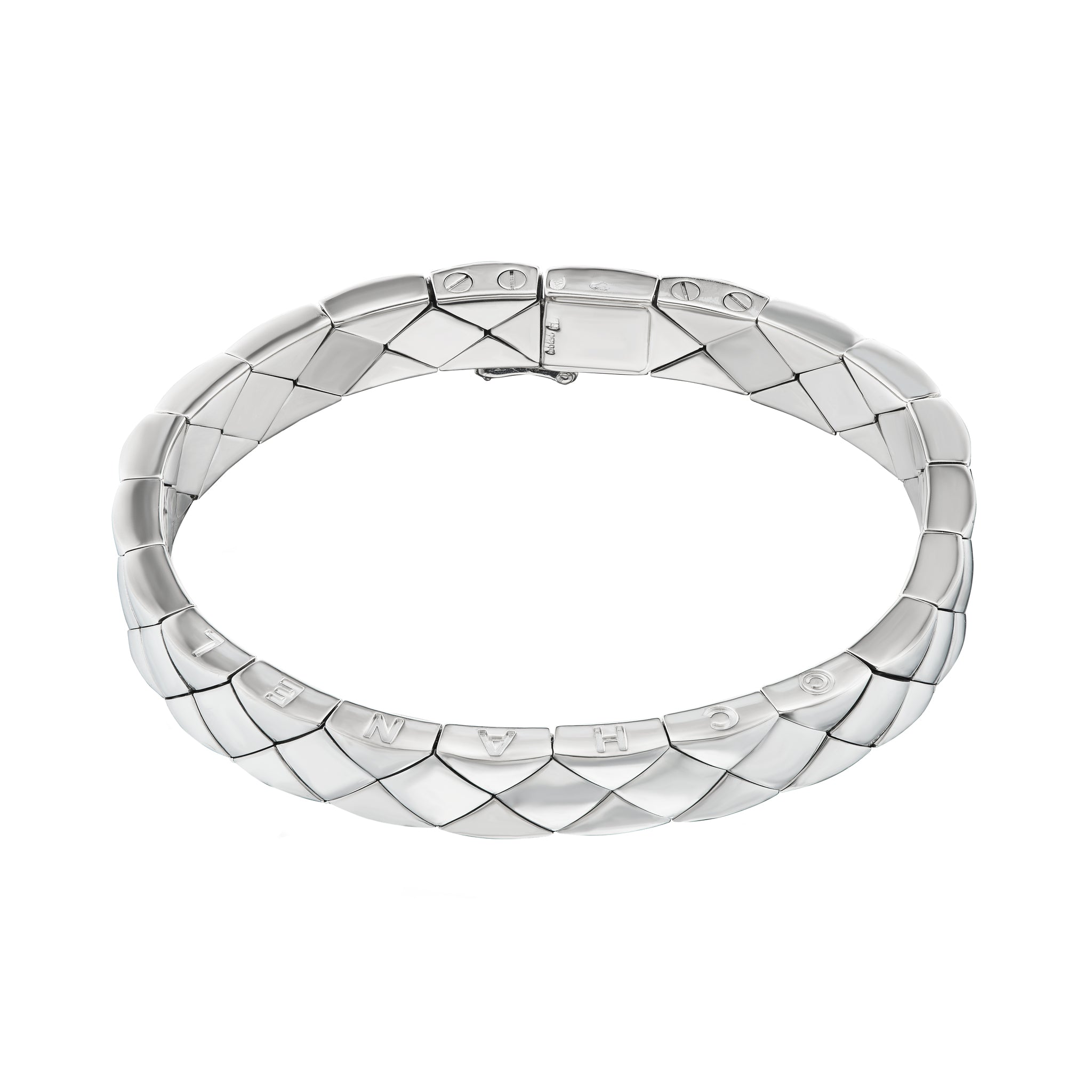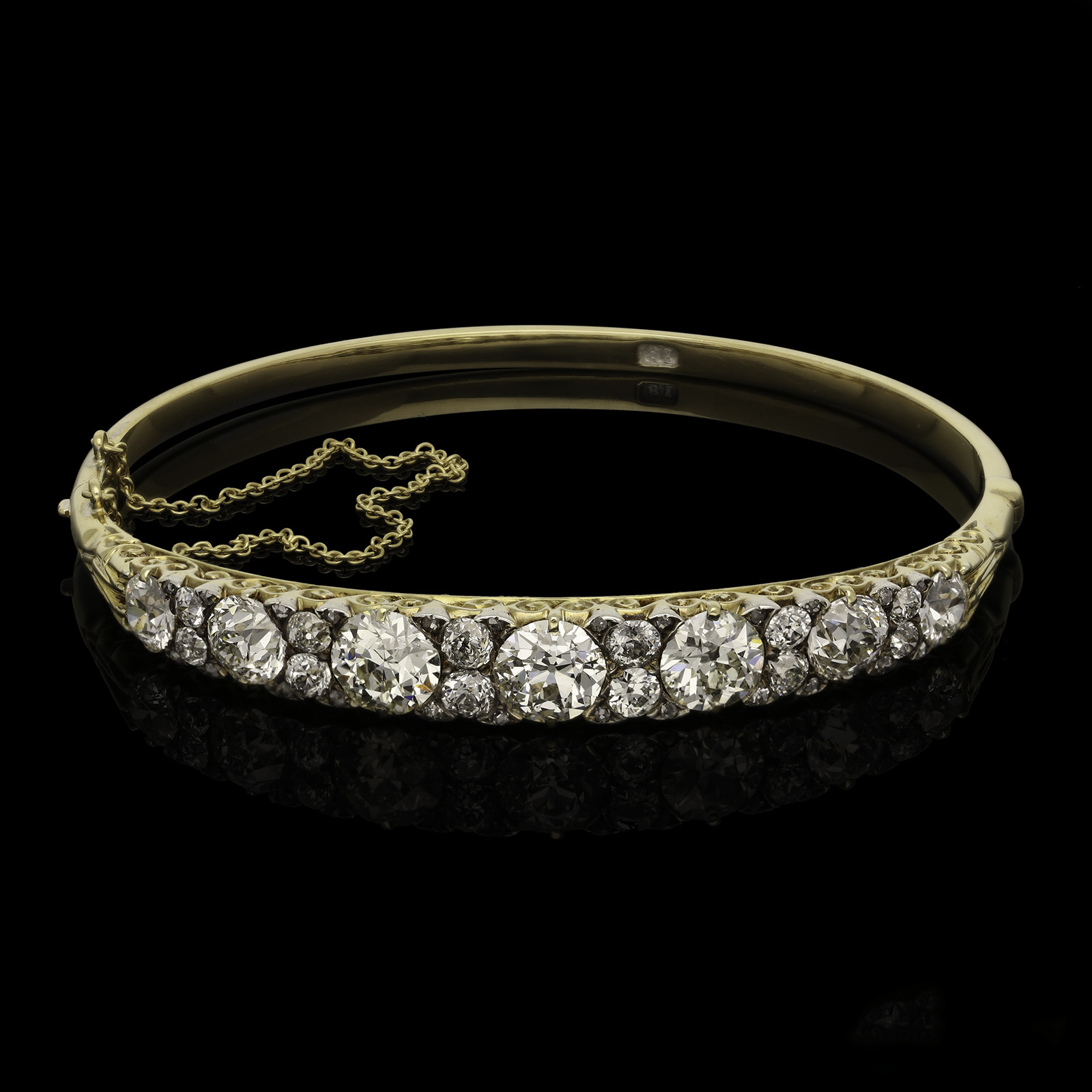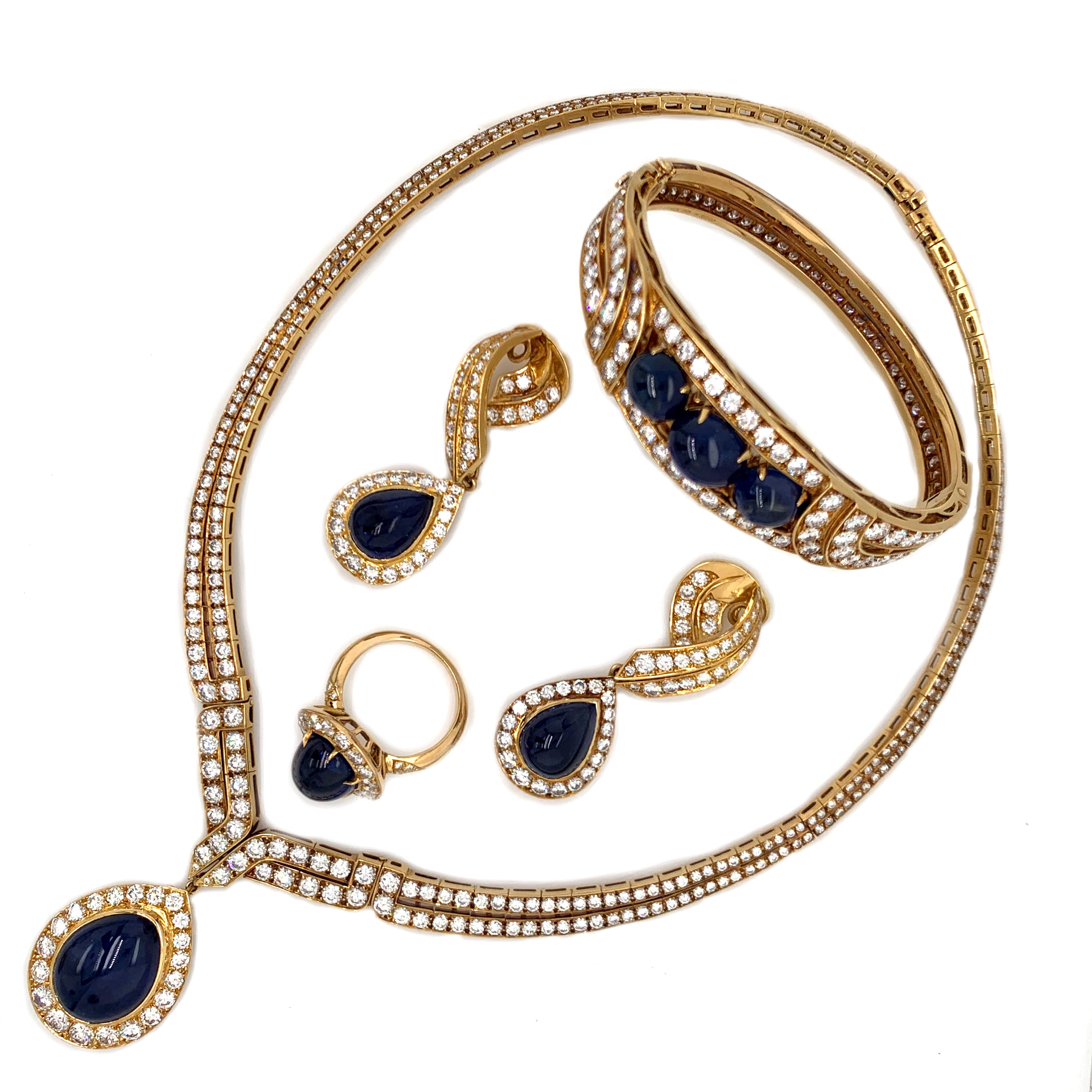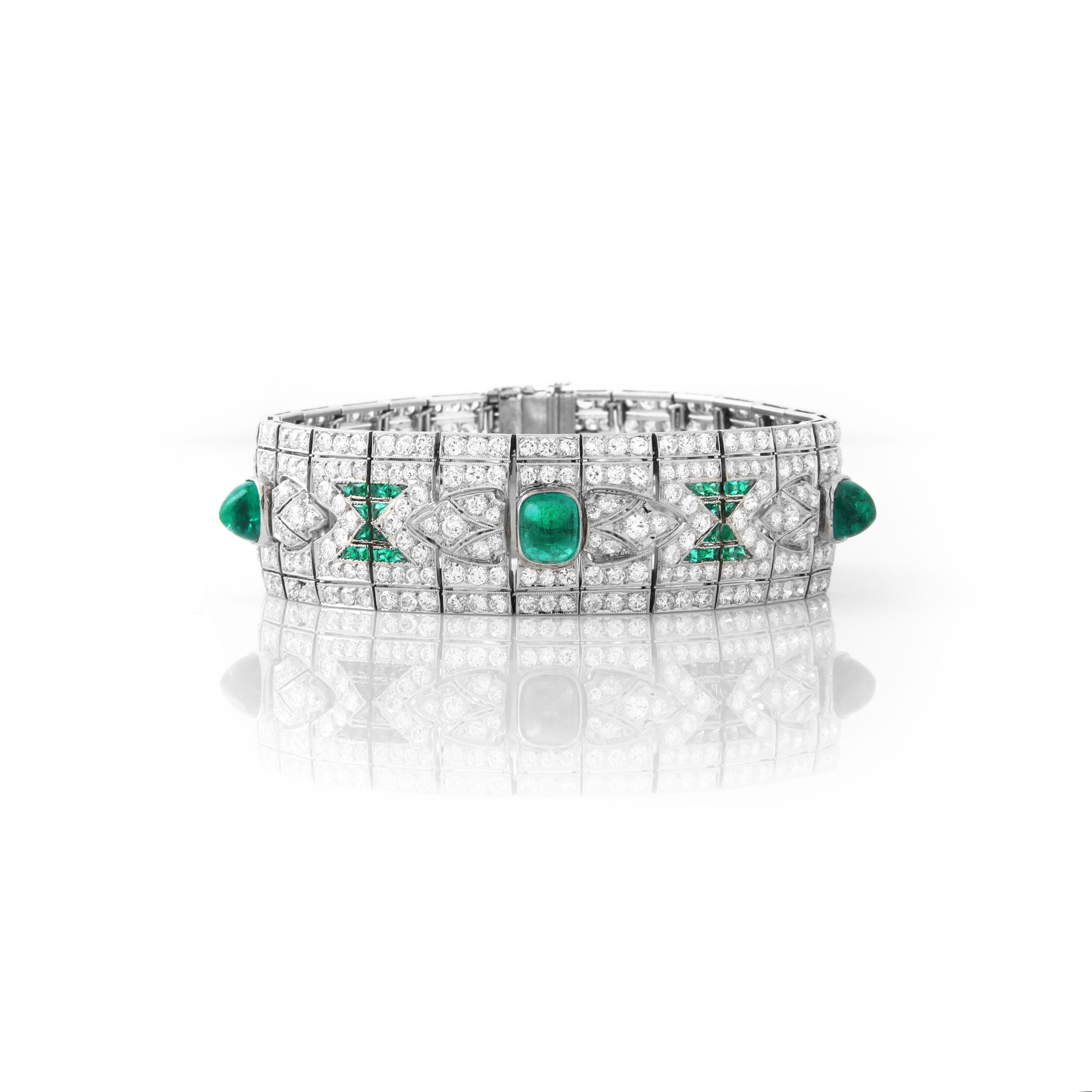JEWELRY DICTIONARY
Antique and vintage jewelry has a language all its own. The Jewelers Circle has put together a dictionary of some of the most common — and most unusual — terms to help you understand and appreciate these special jewels even more.
A
Acrostic jewelry, which was very popular during the Victorian era, is a romantic style that features several gemstones with the first letter of each gem used to spell out a term of endearment – generally dearest or regard. For example Diamond, Emerald, Amethyst, Ruby, Emerald, Sapphire and Topaz spells out “dearest”.
Photo: courtesy Anthea A G Antiques Ltd.
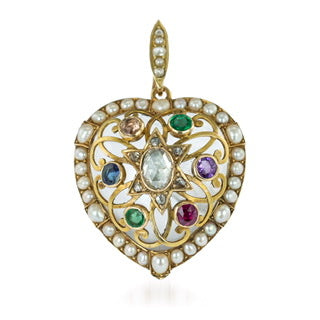
Adularescence is the glowing sheen of light that floats across a moonstone. A part of the feldspar family, moonstone is comprised of super thin layers of orthoclase and albite minerals, which alternate throughout the stone. When light hits the stone and falls between the layers, the light is scattered creating adularescence, the mystical color that floats across the stone like the full moon on a misty night. The highest quality moonstones have a blue sheen that flows across a colorless background, but that sheen may also be silver, white or rainbow. The optical effect of adularescence is what makes moonstone one of the phenomenal gemstones.
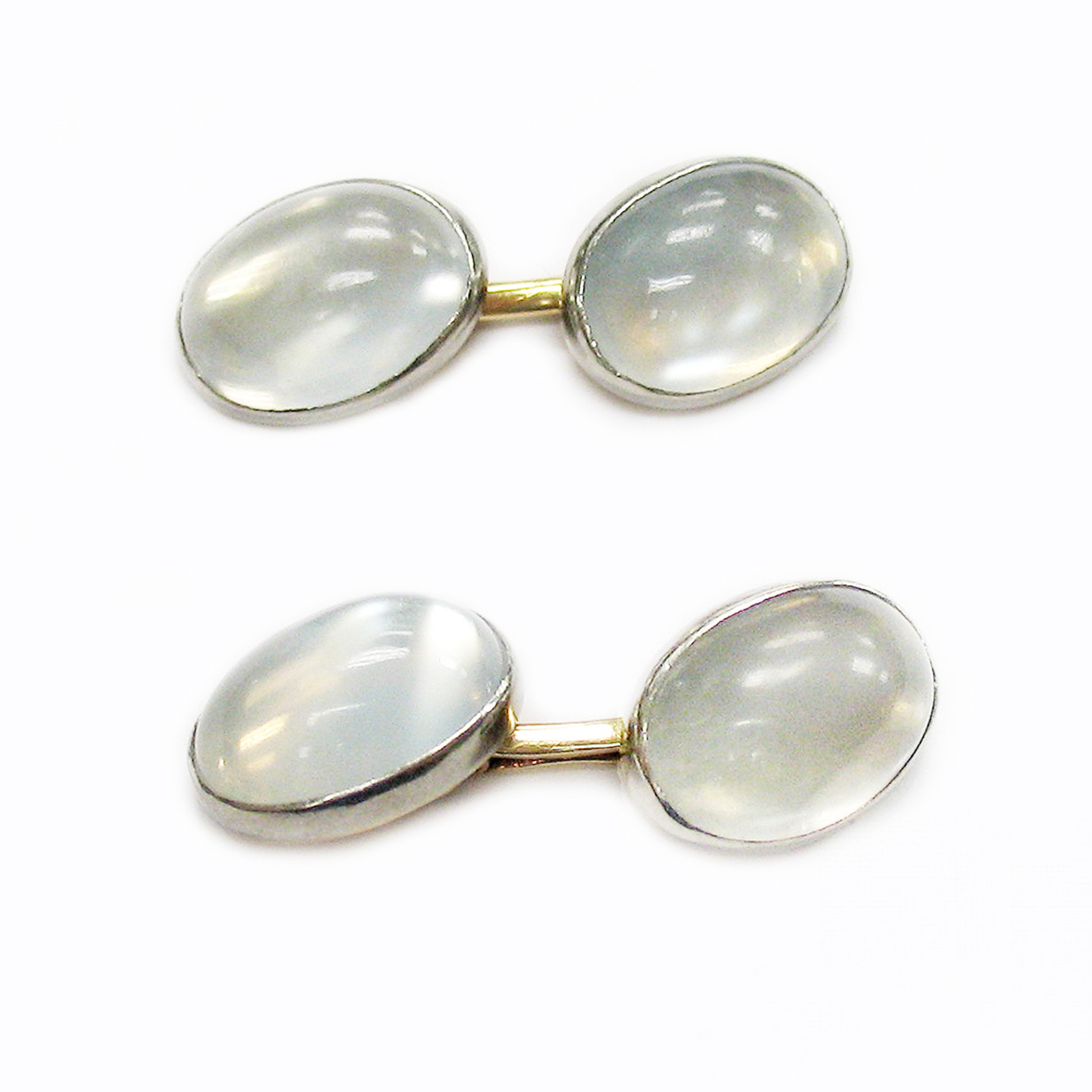
An aigrette is a hair ornament, often jeweled, that held a feather. Its name was derived from the French word for egret, a bird whose feathers were frequently used in these ornaments. Aigrettes were often made with a feather motif and could be worn with no feather. So many egret and other types of water bird feathers were used in the millinery trade in the late 1800s that it led to the formation of the Audobon Society in 1896 by Harriet Hemenway and Minna B. Hall. The two held tea parties for the Boston social set to convince fashionable women to stop wearing bird feathers in hats and jeweled hair ornaments.

Art Deco, which encompasses all the decorative arts including jewelry, was from 1920 to 1939. It began to manifest a couple of years before World War I and took off when the war ended, building and evolving until World War II came along. The era is also known as the “style between the wars”. Art Deco was fully launched in 1925 at the Paris “Exposition Internationale des Arts Decoratifs et Industrials Modernes” where this new look was on full display. During those years jewelry styles evolved, 1920s Art Deco pieces were flat, linear, symmetrical, geometric, white on white, black and white along with bold color and long necklaces these motifs were all the height of fashion. In the 1930s Art Deco had bigger, wider bracelets; convertible jewelry and rounded scrolling forms. Bib and collar necklaces became more prominent. Brooches and dress clips were very important in this era.
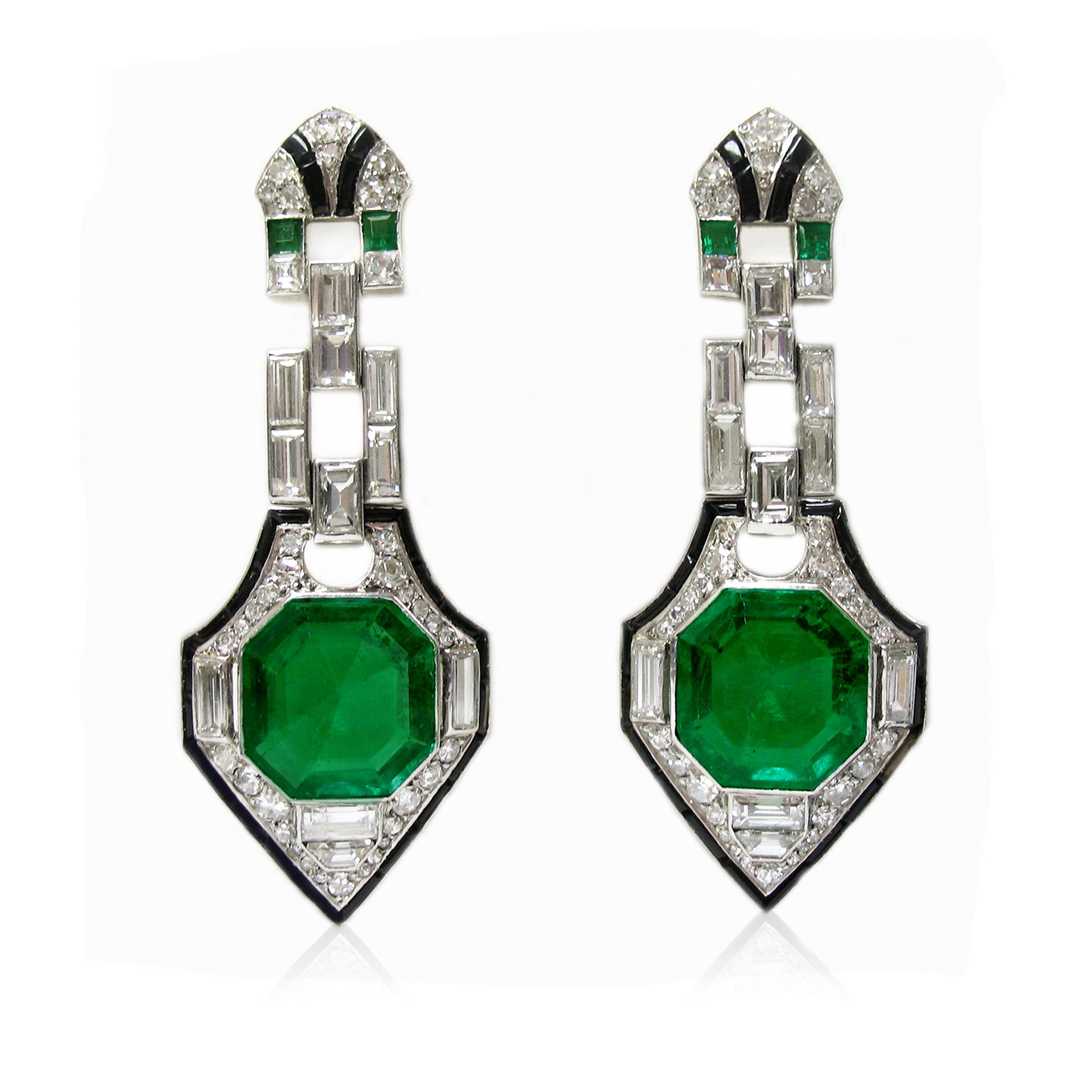
Alexandrite is a rare and valuable gemstone that changes color in different lighting. It’s a form of the mineral chrysoberyl. It appears green in daylight and red in incandescent (candle or lamp) light. The gem was originally discovered in the Ural Mountains of Russia in 1830 and was named after Czar Alexander II. Those deposits ran out and Alexandrite from the original find is usually found in antique or vintage jewelry. This June birthstone is currently mined in Brazil, East Africa and Sri Lanka. The color change properties of alexandrite make it one of the phenomenal gemstones which exhibit special optical effects.
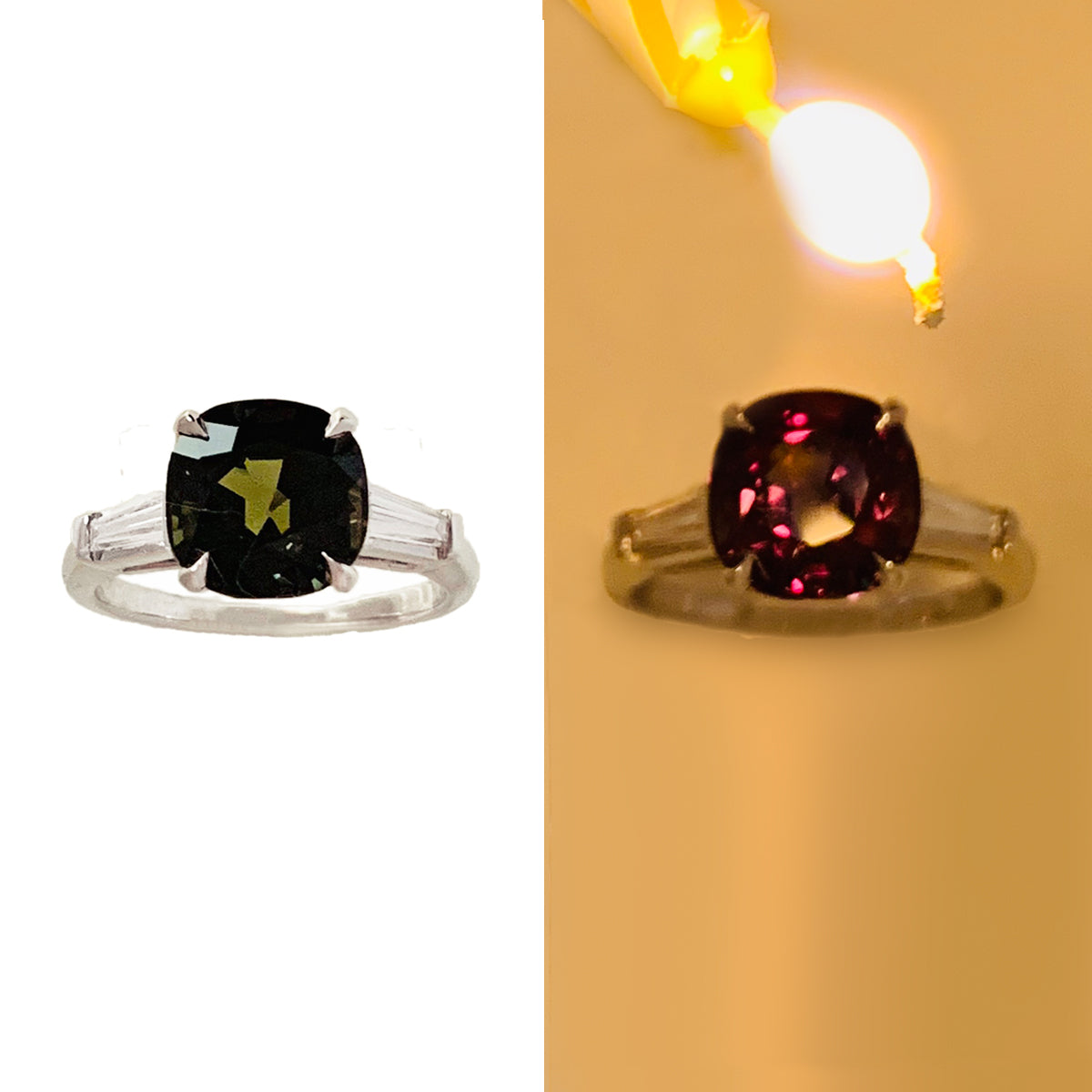
To be considered antique, an object or piece of jewelry, that represents a previous era or time period, needs to be 100 years or older from the date on which it is purchased. Whatever the specific date is when a piece is purchased, it must be at least 100 years old on that date to be considered antique.

The Art Nouveau jewelry movement began in France and Belgium during the late 1800’s around 1895, although some historians put that date a bit earlier at 1890. The movement ended with the start of World War I in 1914, or even slightly earlier according to some historians. While the movement was decidedly French, it did have a following in Avant Garde circles elsewhere in Europe and America. Two leading designers in this movement were Louis Comfort Tiffany and René Lalique. The style was characterized by large scale, enamel and colored gemstone pieces depicting naturalistic scenes and/or fanciful women, insects and stylized flowers.
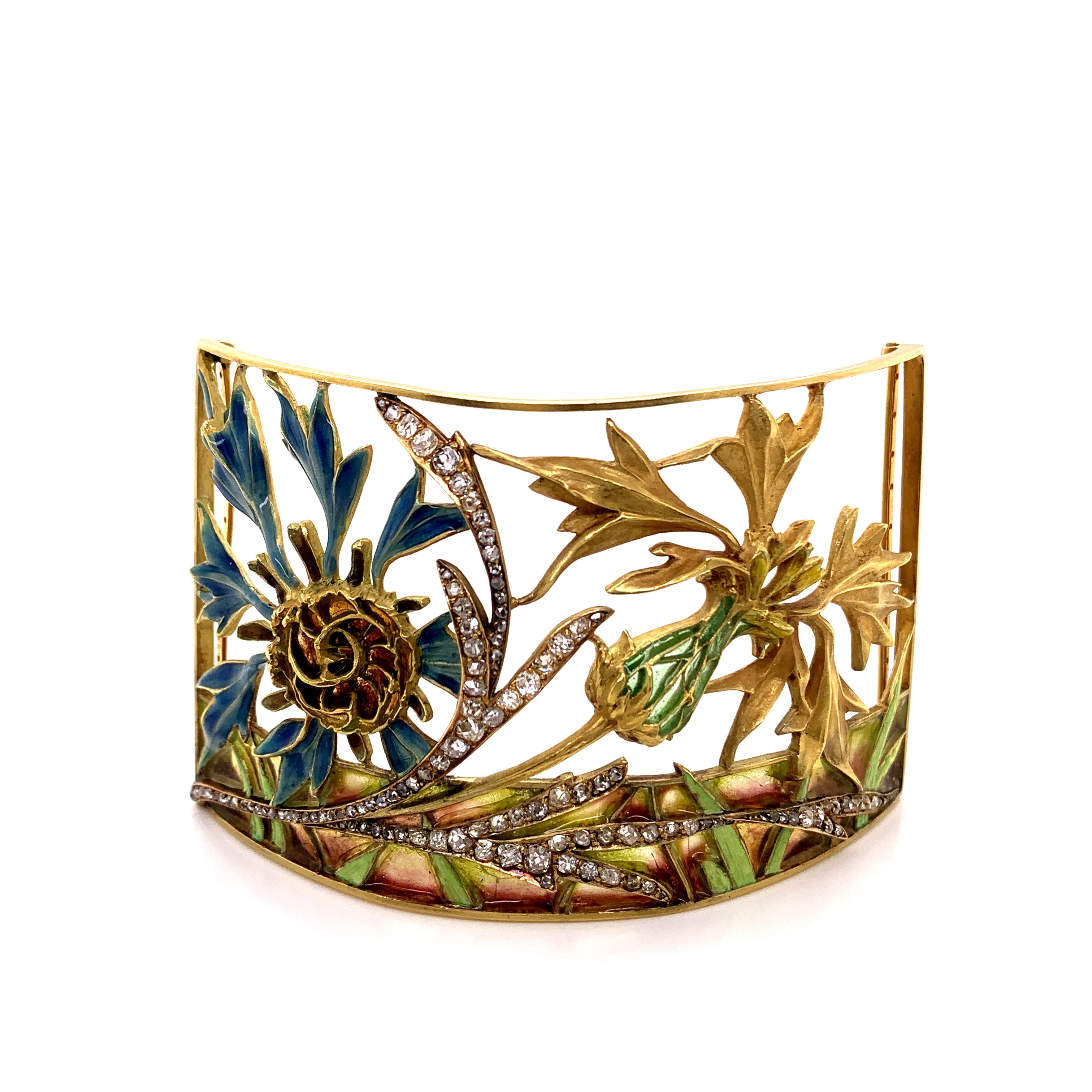
The Asscher is a square shaped step cut, distinguished by 58 facets, with a high, two-step crown and a deep pavilion. When you look straight down into an Asscher cut diamond from the top, you will see an “X” that is formed by equidistant converging facets, earning the cut the nickname “hall of mirrors” for the amazing light reflection in the stone. The Asscher cut was very popular in Art Deco jewelry because its straight lines and angular form complemented the jewelry designs of that era. It was originally designed by the Asscher Diamond Company in 1902, which at the time was one of the world’s leading diamond firms. The company gained fame when its artisans cut the Cullinan and Excelsior diamonds, two of the largest gems ever discovered.
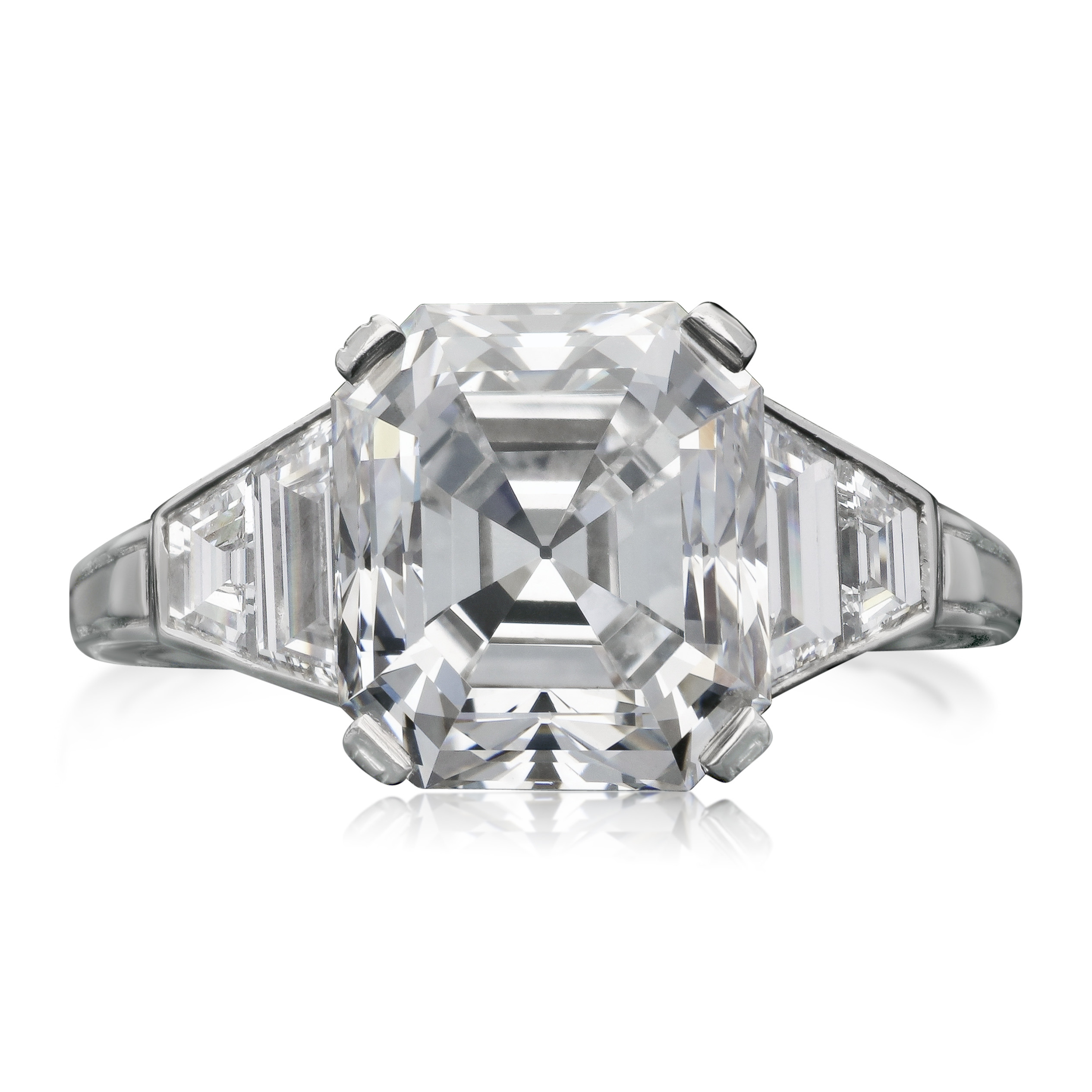
Asterism is an optical effect in a stone that causes a star to appear. The stone must be a cabochon cut for the star to be visible. The star is created when very fine but dense inclusions in parallel form reflect light inside the stone. Stones that display asterism are known as phenomenal gemstones. Asterism may be found in sapphires and rubies that present this optical effect, these gems are known as star sapphire and star ruby.
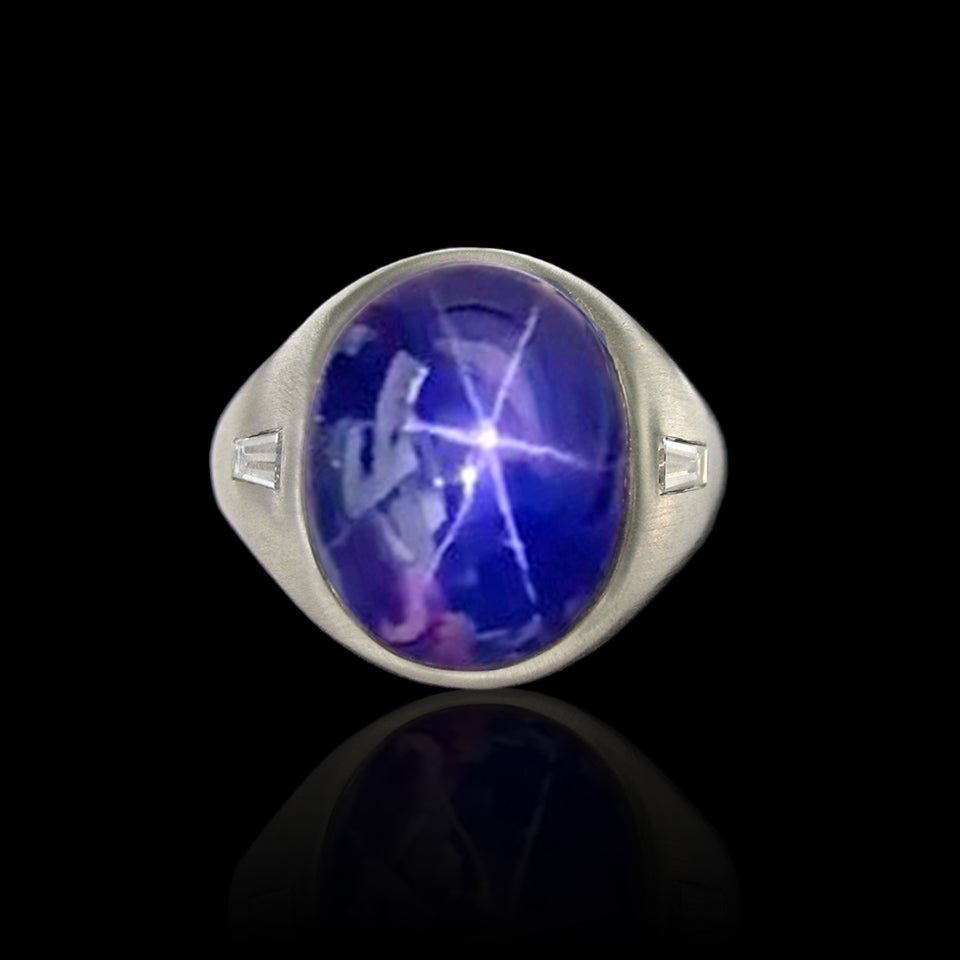
Au Jour is a French word that literally means “open to the day”. An Au Jour Setting, is an open work back created by cutting the metal where the stones will be placed. These openings allow light to come through the gem giving it a brighter, livelier, and more sparkly appearance. Au jour settings started to be used around 1800, or so, prior to that most jewelry was in closed back settings.
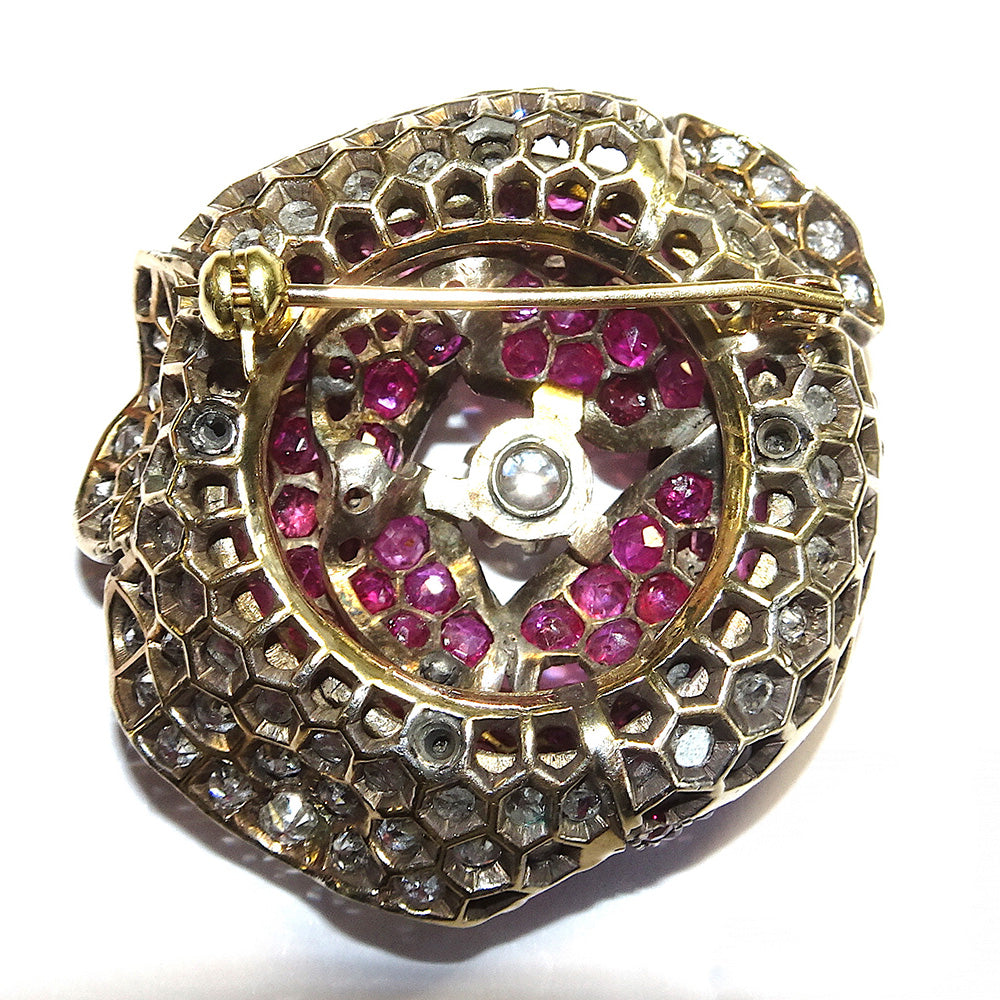
B
First introduced in the 1920s, baguette diamonds, with their long, lean, linear shape, were the perfect complement to the flat geometric designs of the era. Baguette diamonds are rectangular step cuts with only 14 facets. Because of their shape, baguettes were named after the classic French bread. Baguettes faded in popularity after the Art Deco era and then had a resurgence in popularity during the 1950s. While baguettes were generally used as side stones, they were also used as the primary shape in some designs for a sleek icy look. Today, baguettes are used in myriad ways from side stones to the main stone.
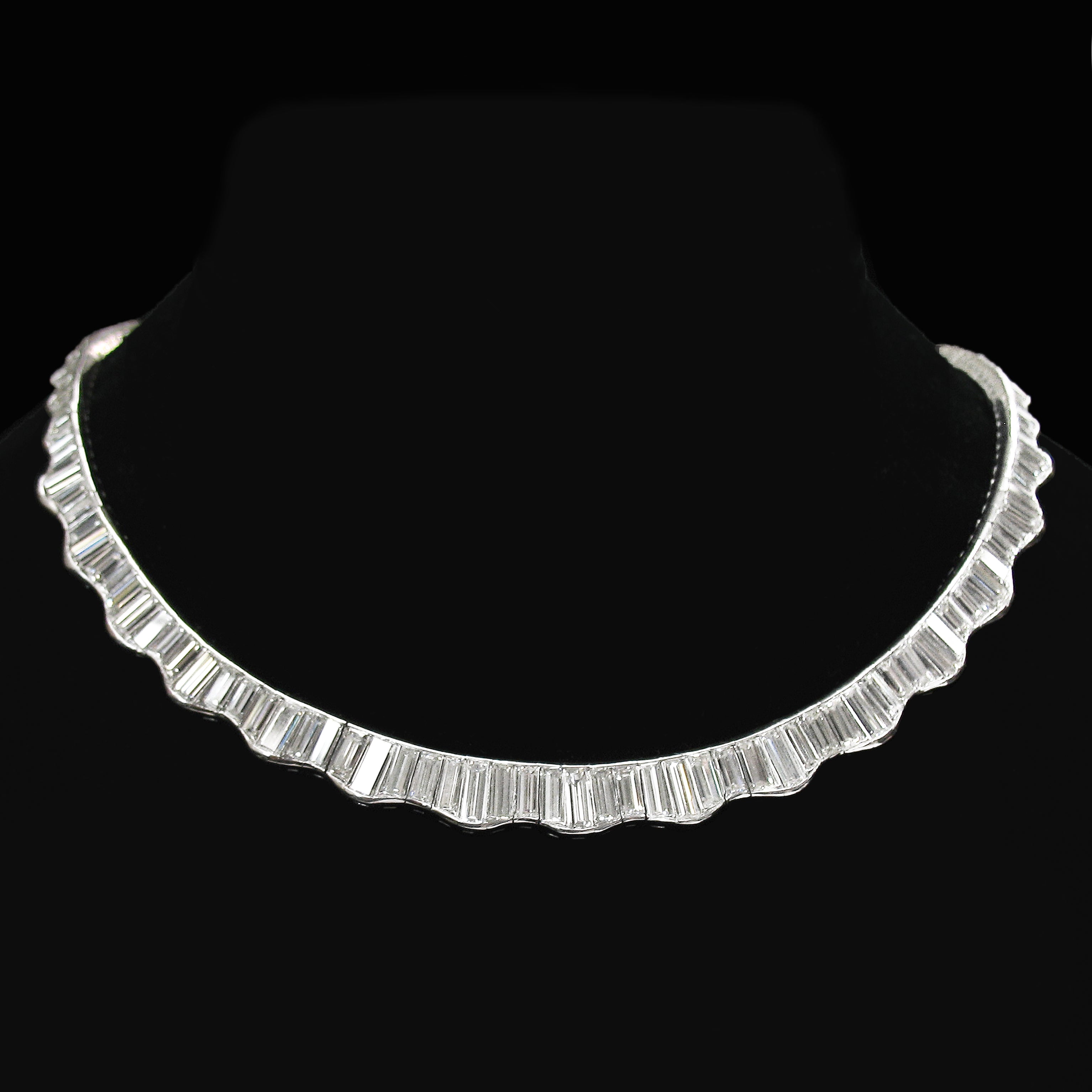
A Ballerina ring is characterized by a center stone surrounded by tapered baguettes that seem to float like a ballerina’s tutu. This design became popular in the 1950s and remains a favorite style today.
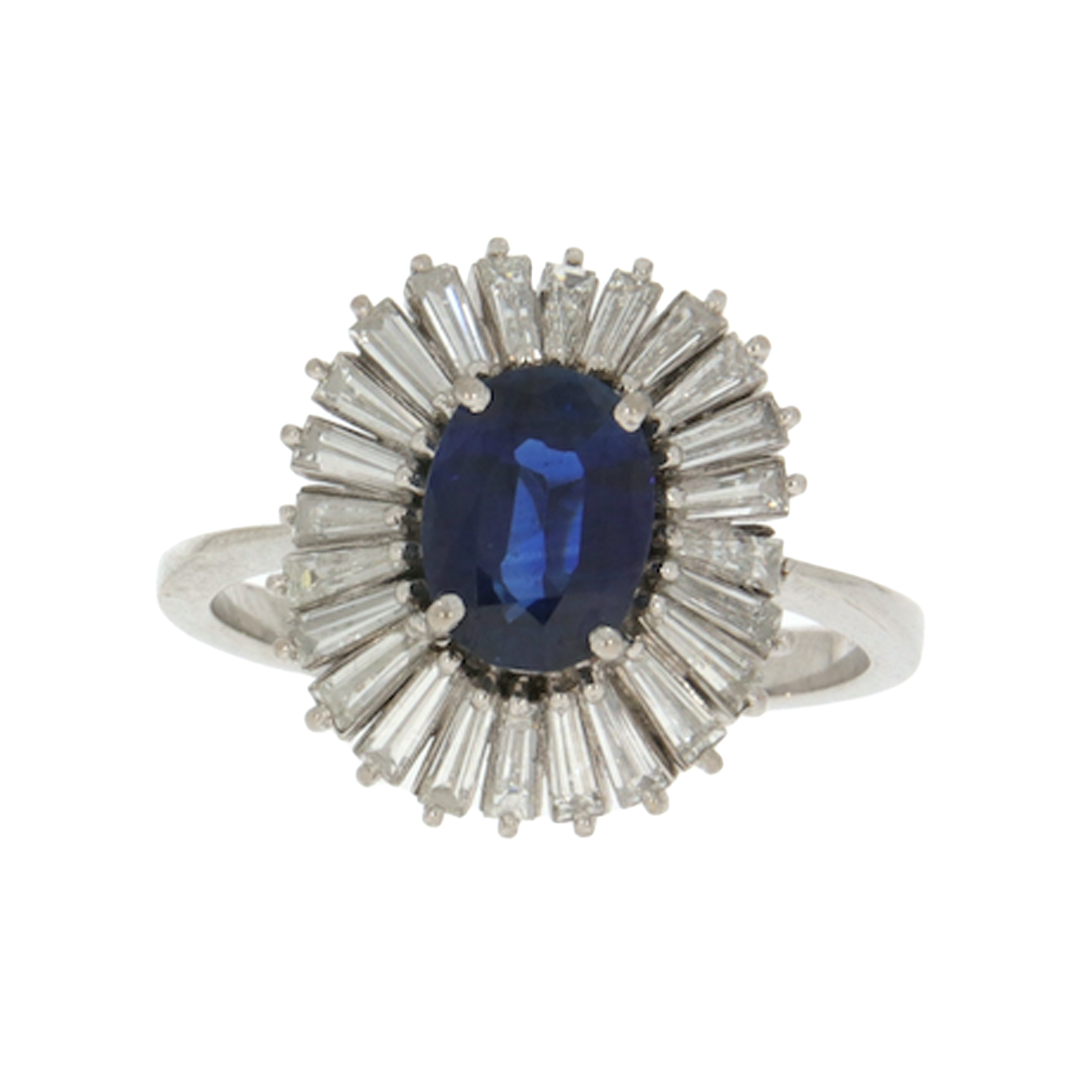
A bandeau is a decorative headband that is worn low on the forehead and encircles the head. They are often worn as a type of tiara. The bandeau got its start in the Greco/Roman cultures when people often adorned their heads with wreaths made of precious metals and gems. The jeweled bandeau was popular in the very late 1800s and early 1900s — the late Victorian years and the Edwardian and Art Deco eras.
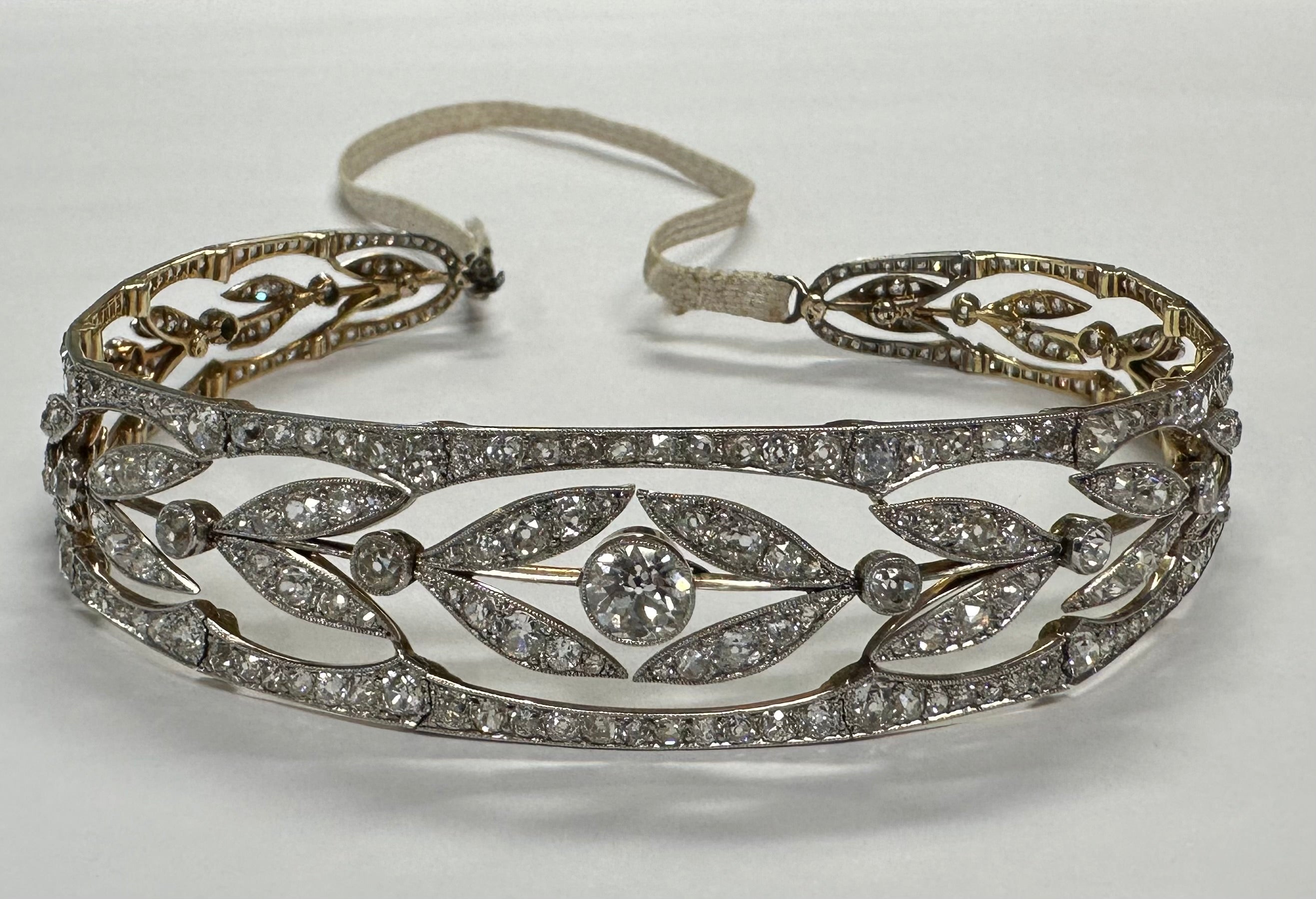
A bangle is worn around the wrist and is a circular, hard bracelet that is not flexible. Sometimes it is hinged to make it easier to put on and take off.
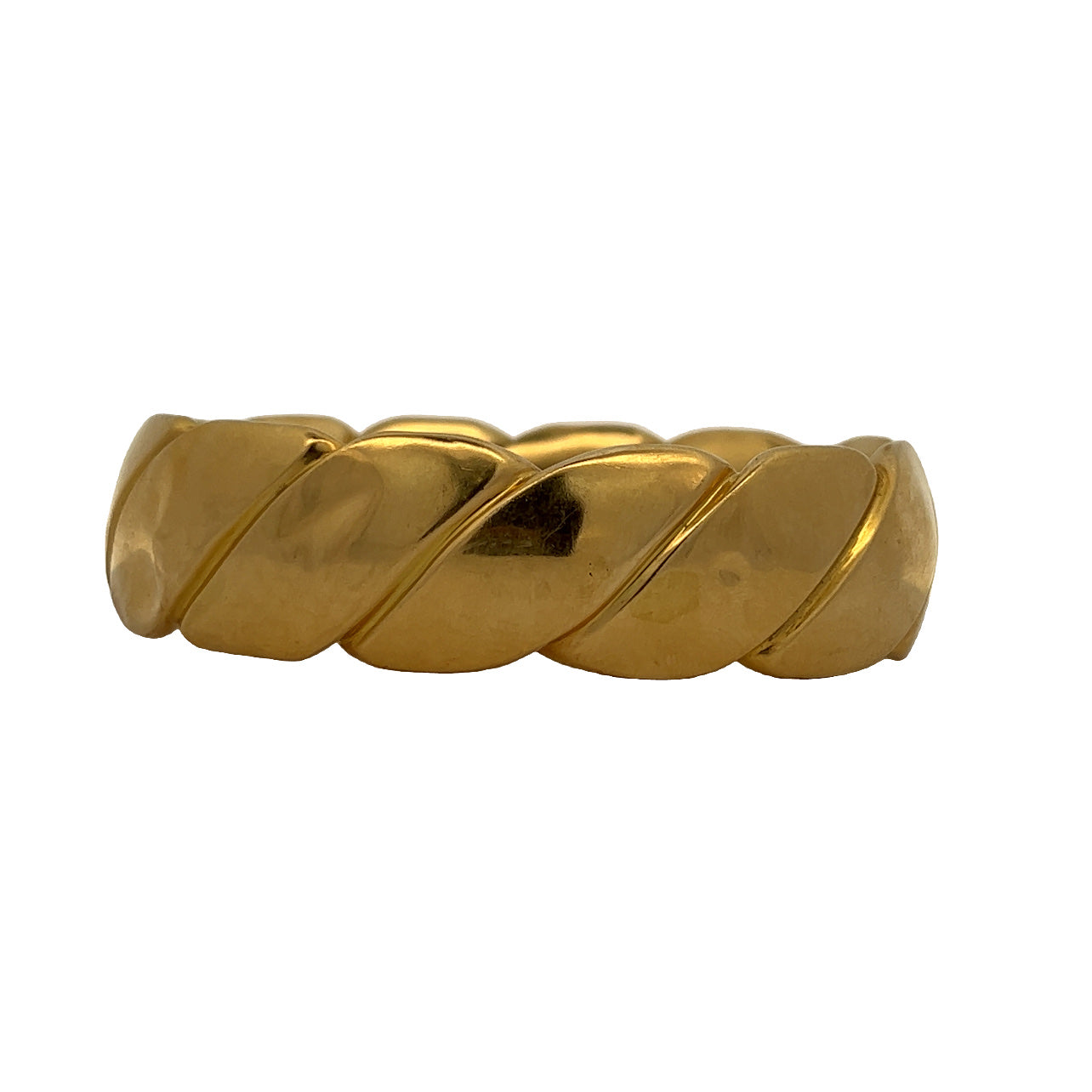
A long horizontal brooch, it may be made of all metal with gemstone accents, or it is sometimes designed as a row of colored gemstones or diamonds, or sometimes with a pattern in the center of the bar.

French for “beautiful era”, references the period in France after the Franco-Prussian war ended in 1871, some historians place the starting year as 1889 and others suggest the start date as 1901, when the reign of Queen Victoria ended and King Edward VII took the throne. The Belle Epoque came to an end in 1914 with the start of World War I. Jewelry of that time was characteristic of both the late Victorian era and the Edwardian years.
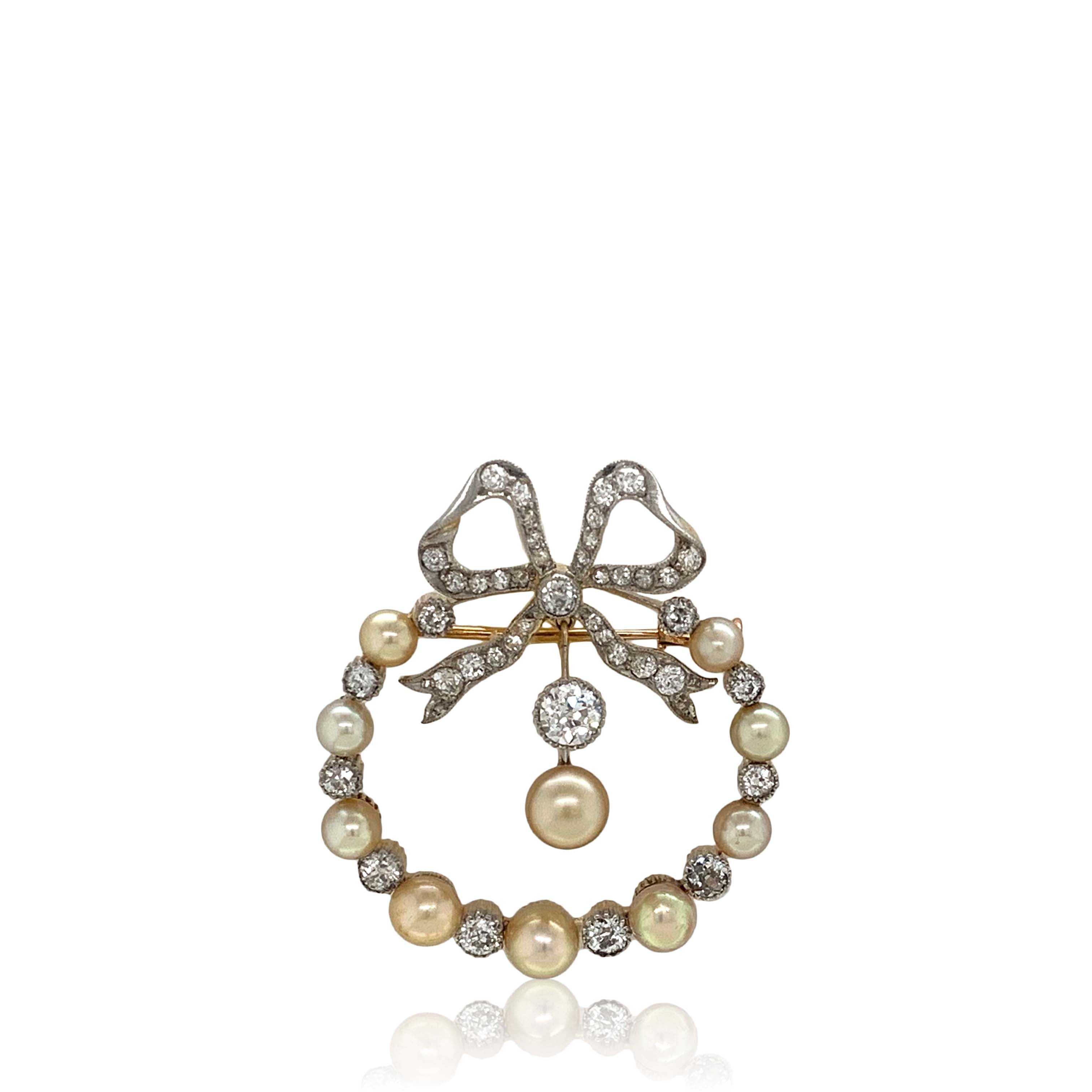
Berlin Iron, (Fer de Berlin) is one of the more collectible items of Georgian jewelry. It is also known as Fer de Berlin, which translates to Berlin Iron. In 1804 Napoleon I was ravaging Europe with war and countries needed money to stave off his attacks. Wealthy Germans gave their jewelry to the government to raise money in the fight against Napoleon. In exchange they were given Fer de Berlin — iron jewelry that was sand cast and lacquered black.
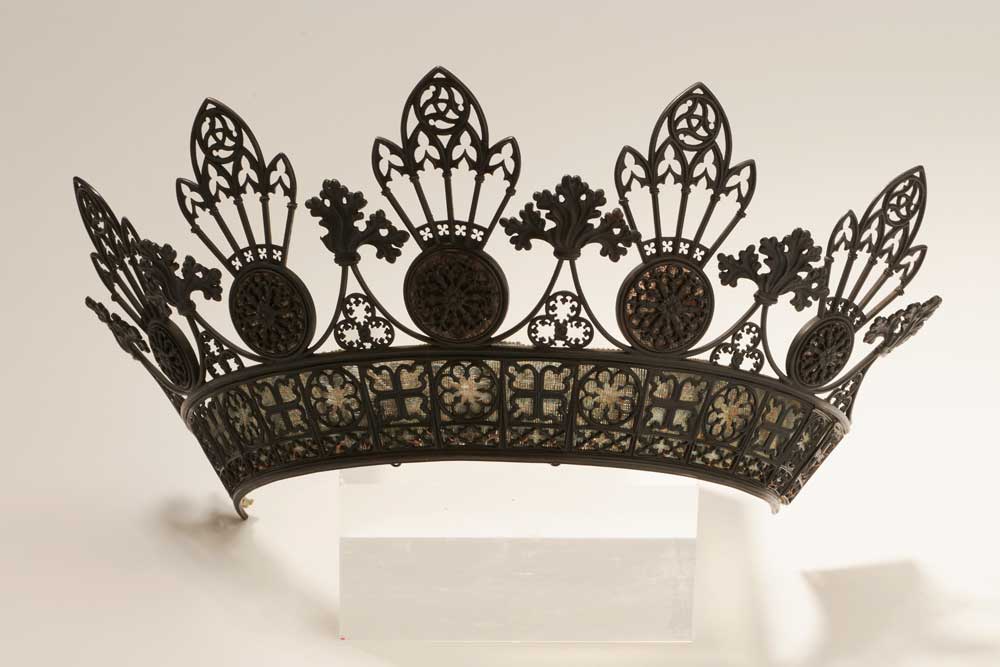
A bezel set is a type of setting that has a thin metal band that wraps around the girdle of a gemstone or diamond to hold it in place. Once the stone is placed in the setting the metal is then pressed down on the top edges of the stone to hold it securely.

A bib necklace is made up of multiple strands of fringe, jewels, pearls or other embellishments that fall below the collarbone and cover part of the chest. It may be circular or triangular in shape. There are many variations on this style of necklace, but it tends to be large in scale.
Photo: courtesy JS Fearnley

A bombé ring features a rounded top dome shape with plump rounded sides. This style is sometimes set with a center stone on the top and pavé around the rest of the ring, or it can be all pavéd, or it may be precious metal with gemstone accents. Bombé comes from the French word meaning bomb, because the style is rounded like a bomb.
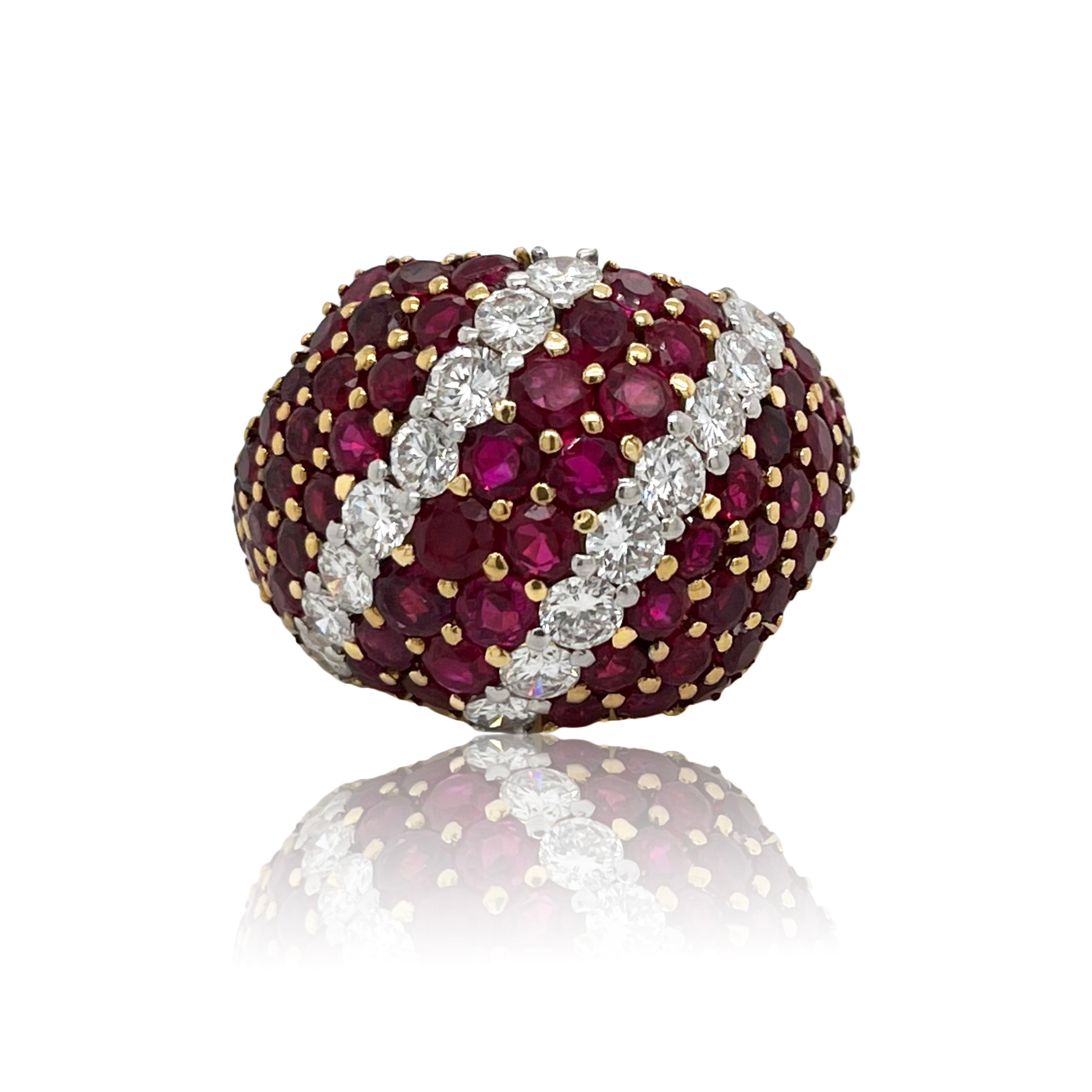
A boule ring has a domed top, generally set with pavé gemstones, or a central gem at the top. Boule comes from the French word that means ball.
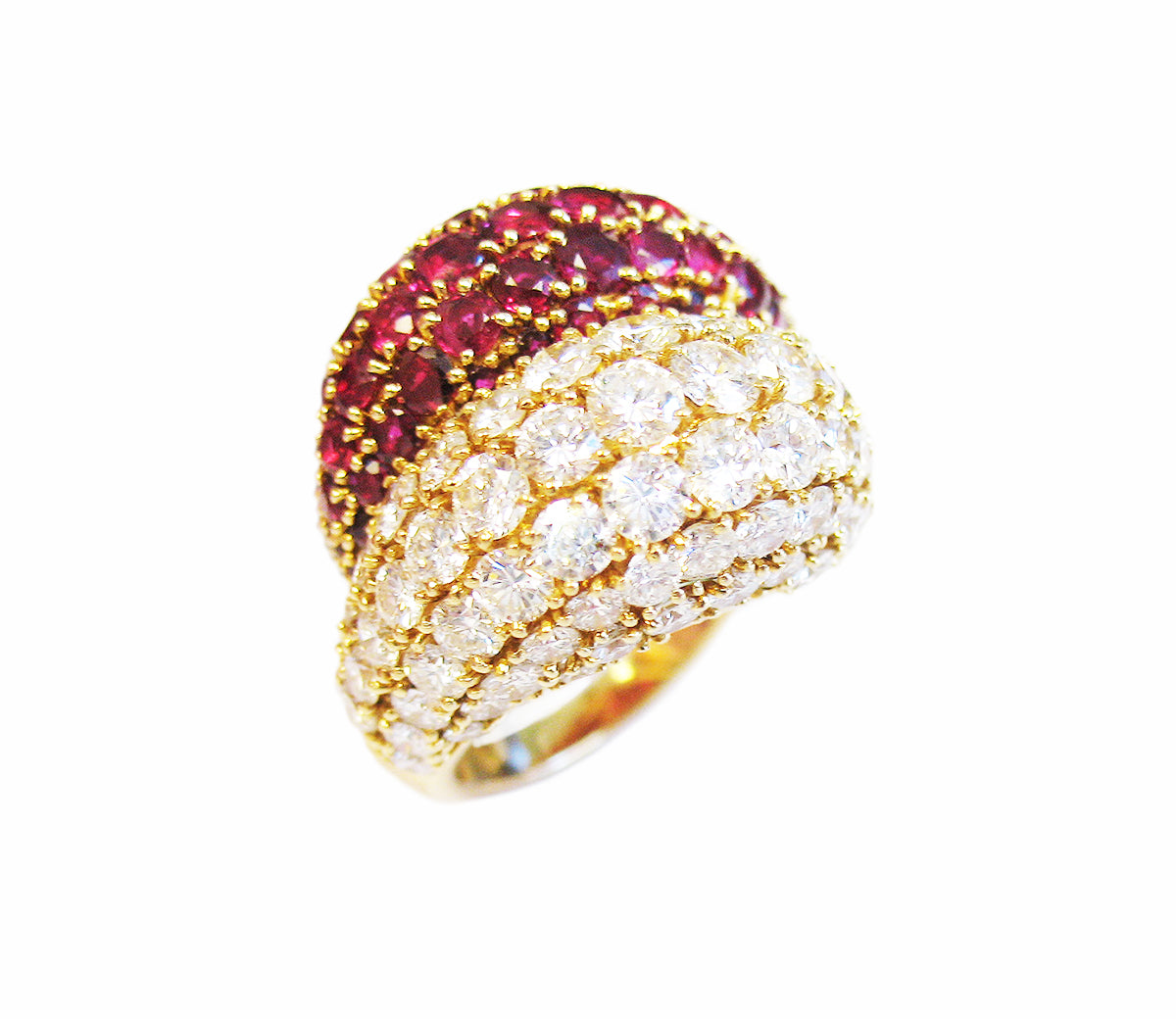
A soft, flexible chain ornament that wraps around the wrist. It generally has a clasp to make it easy to put on and take off.
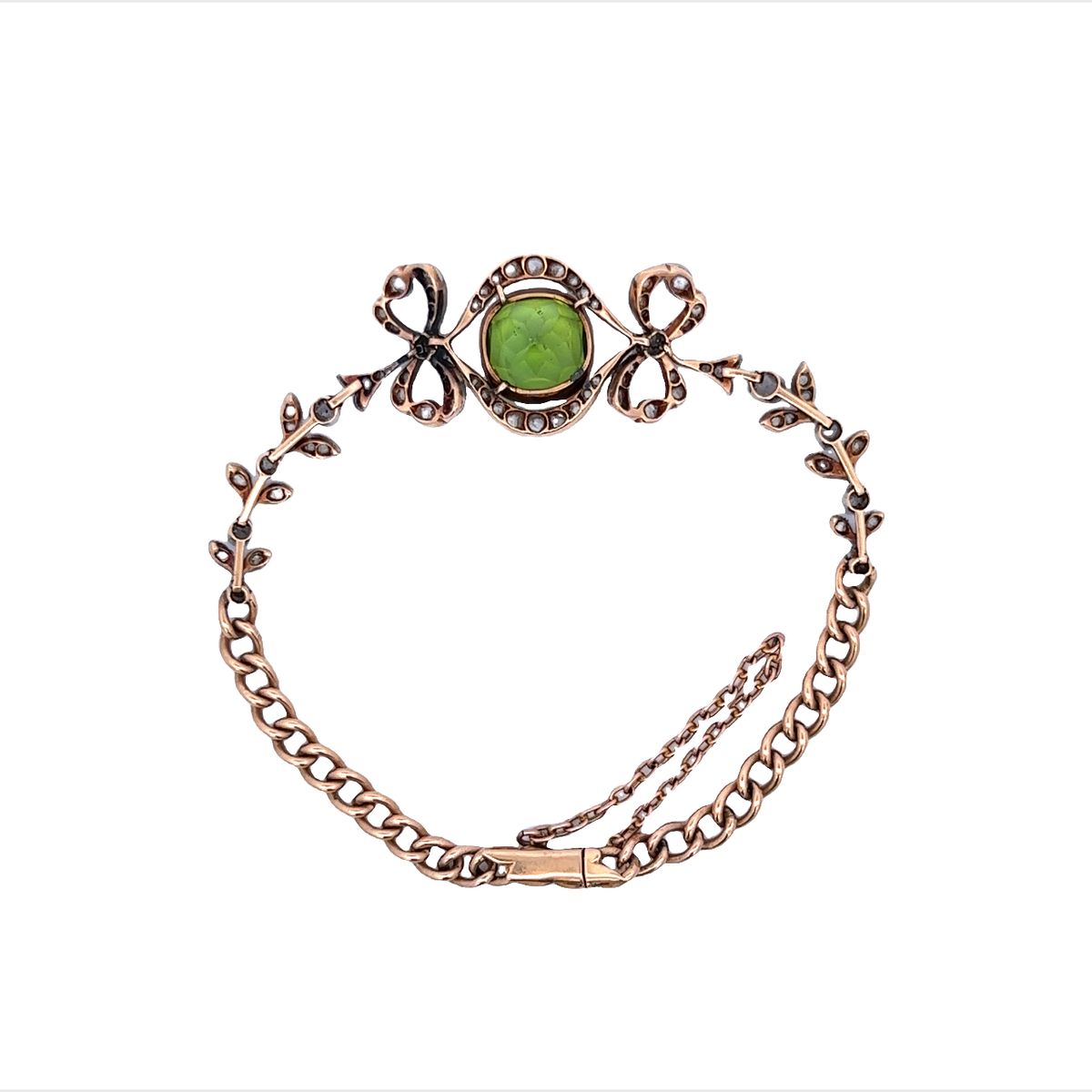
A brilliant cut is a diamond with a standard 58 facets that are placed on the stone to optimize light return creating the most sparkle and fire in the stone.

The buckle motif was used for rings, bracelets and occasionally brooches, or earrings. But rings were by far the most important form for buckle jewelry. In the Victorian era, the buckle represented the binding of two people together in love or friendship. Buckle rings were exchanged between siblings and best friends as a show of allegiance. For romantic love, the rings could have various meanings: A promise ring, an engagement ring, or wedding ring. Between couples who were getting engaged, buckles represented fidelity, constancy and the eternal love connection that they made. The Victorians also believed that wearing a buckle ring strengthened the bond between the one giving the ring and the one receiving the ring.
Photo courtesy Macklowe Gallery
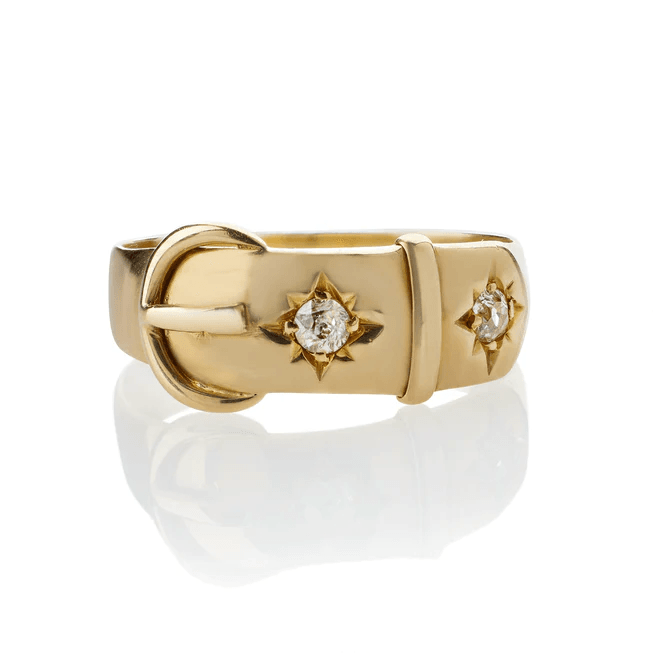
Button earrings, sometimes called disc earrings, are round flat discs, often in gold, or gold with a pearl or gemstone center. The metal was often textured in some way to add visual interest. This style was very popular in the 1980s. The large scale of the earrings balanced the big hair and big shoulders of that decade’s apparel.
Photo courtesy Fortrove.
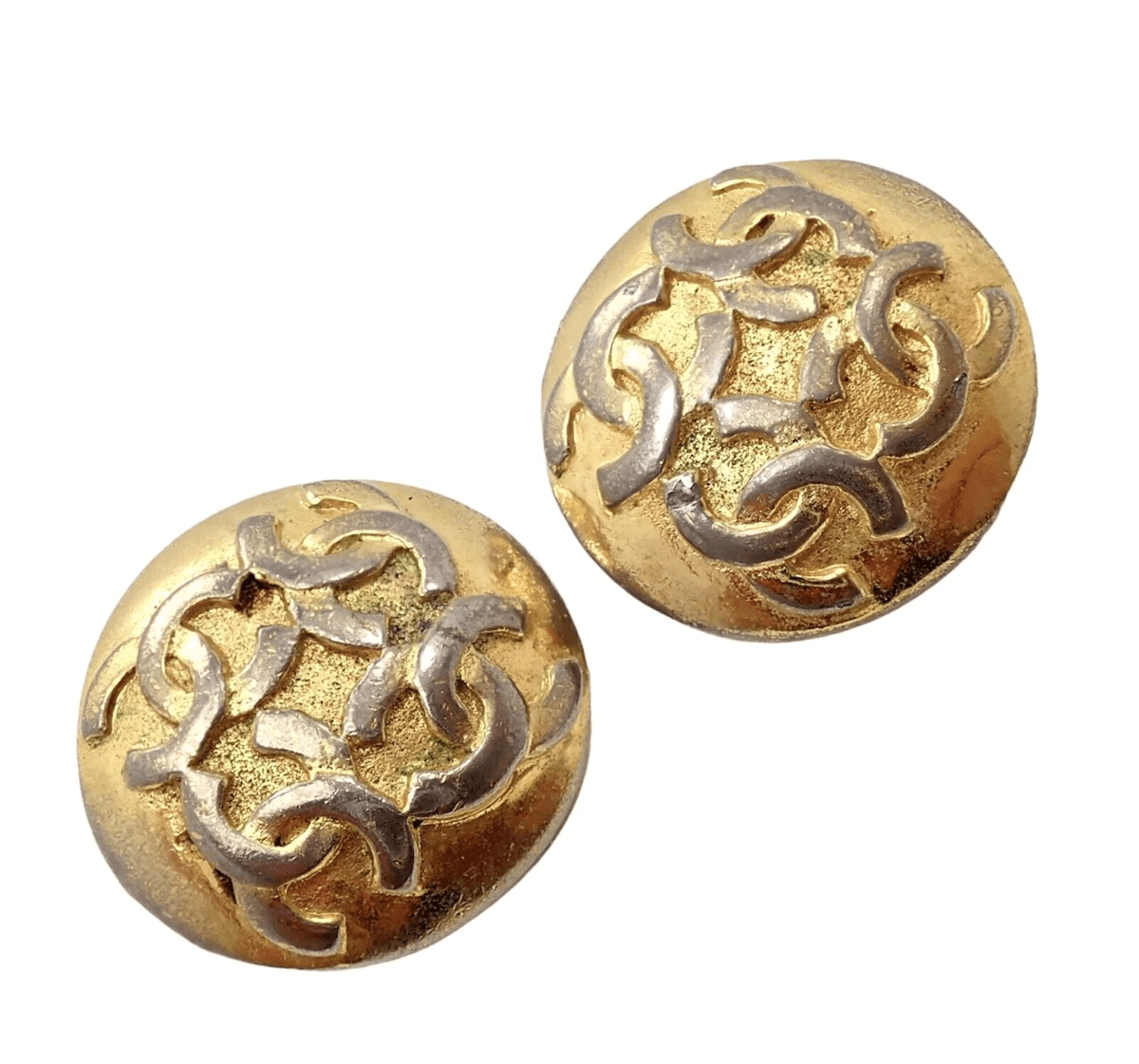
C
A cabochon is a gemstone that is domed and polished with a flat bottom. It has no facets so the surface is smooth. Cabochon’s, called cabs for short, are often, but not always, made from gems that are opaque. Some gemstones, which have special optical effects are cut into cabochons to bring out the effect, such as adularescence in moonstones, the star in a star sapphire, or the play of color in an opal.
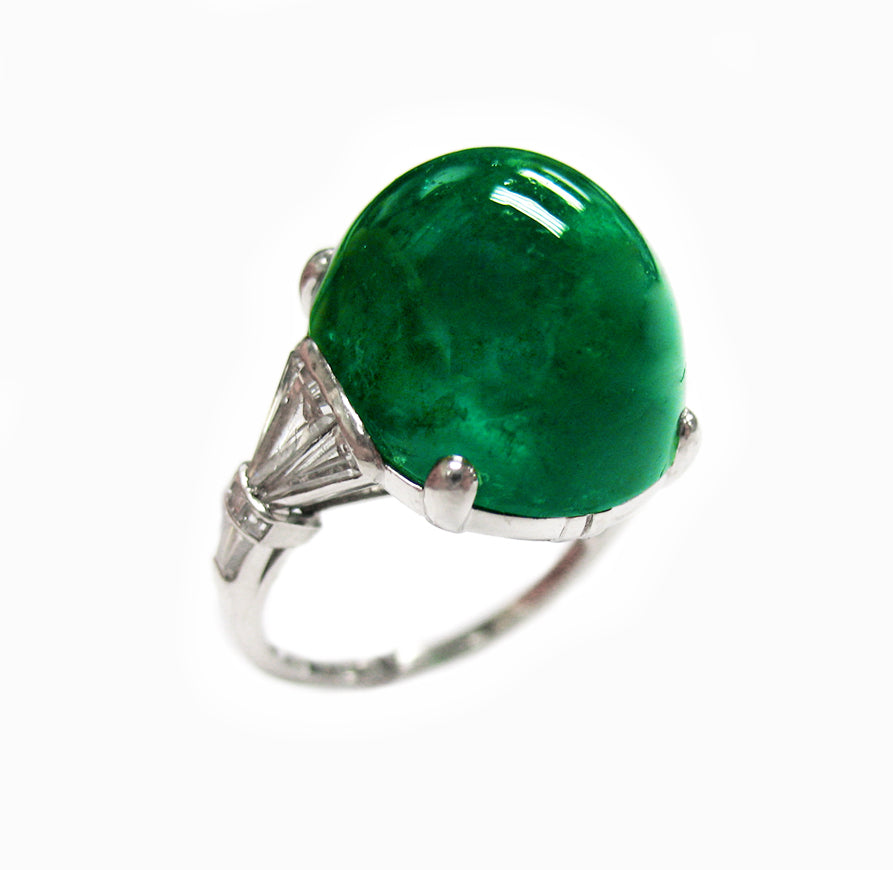
A cameo is a shell, agate or hardstone that is carved with a raised image generally depicting Roman Gods and Goddesses or portraits of women. The carving is created in such a way that the carving is one color while the background is another color all coming from the same stone, or shell. Cameos were very popular during the 1800s when tourists visiting Italy bought them as souvenirs.
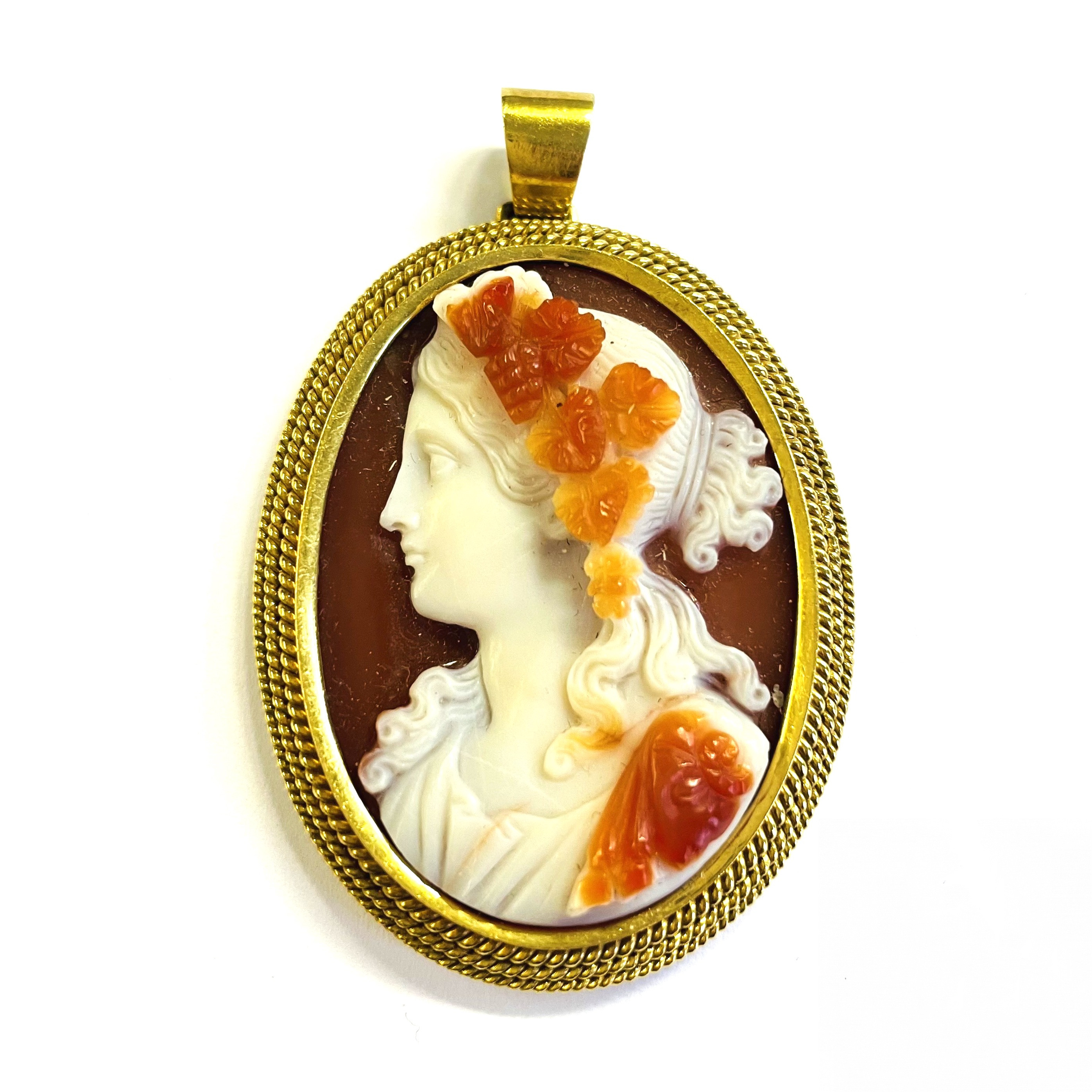
Cannetille is very fine gold wire work that was used to form lightweight jewelry. It is three-dimensional and was inspired by embroidery. Cannetille was a popular style in the early 1800s.
Photo: Courtesy, Kentshire Galleries.
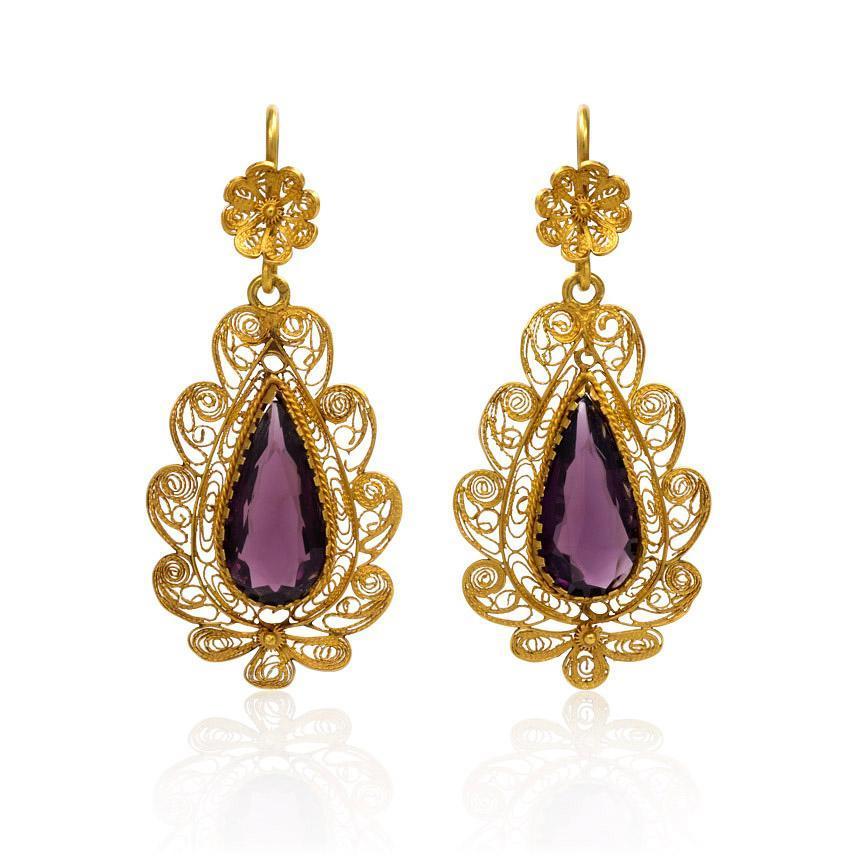
Carat is a unit of weight for diamonds and colored gemstones. The word is derived from carob. In ancient times before scales were invented, gem dealers compared the weight of a stone to carob seeds because they tend to be uniform in size. One carob seed was equal to one carat. Outside of the United States, carat rather than karat is sometimes also used to indicate gold purity.
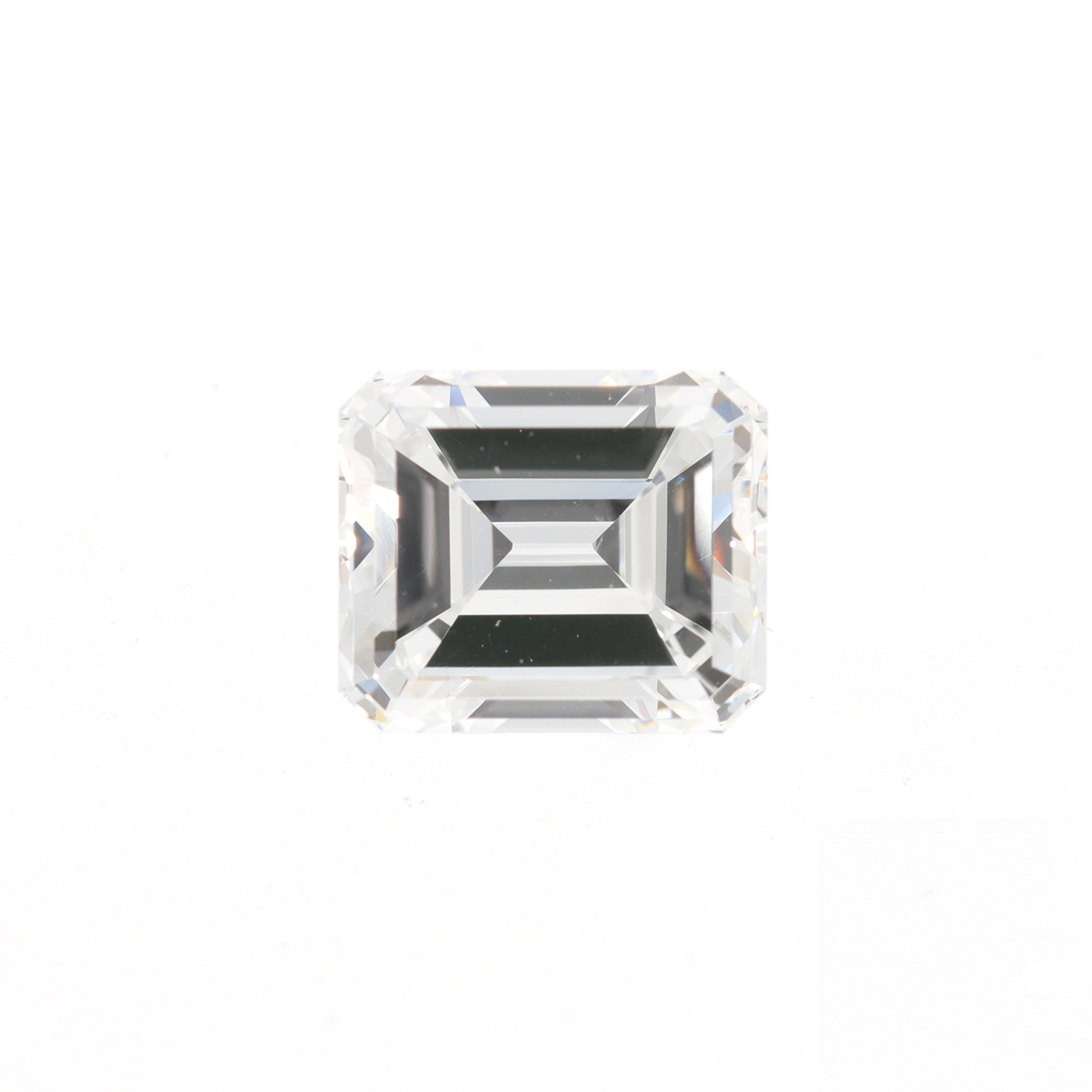
Champlevé enamel is created by hollowing out a design in metal by carving, etching, or casting. The hollowed out spaces are then filled with powdered enamel until they are flush with the raised metal. Next the piece is baked and then polished. The metal stands out as a part of the design adding a textural element against the smoothness of the enamel.
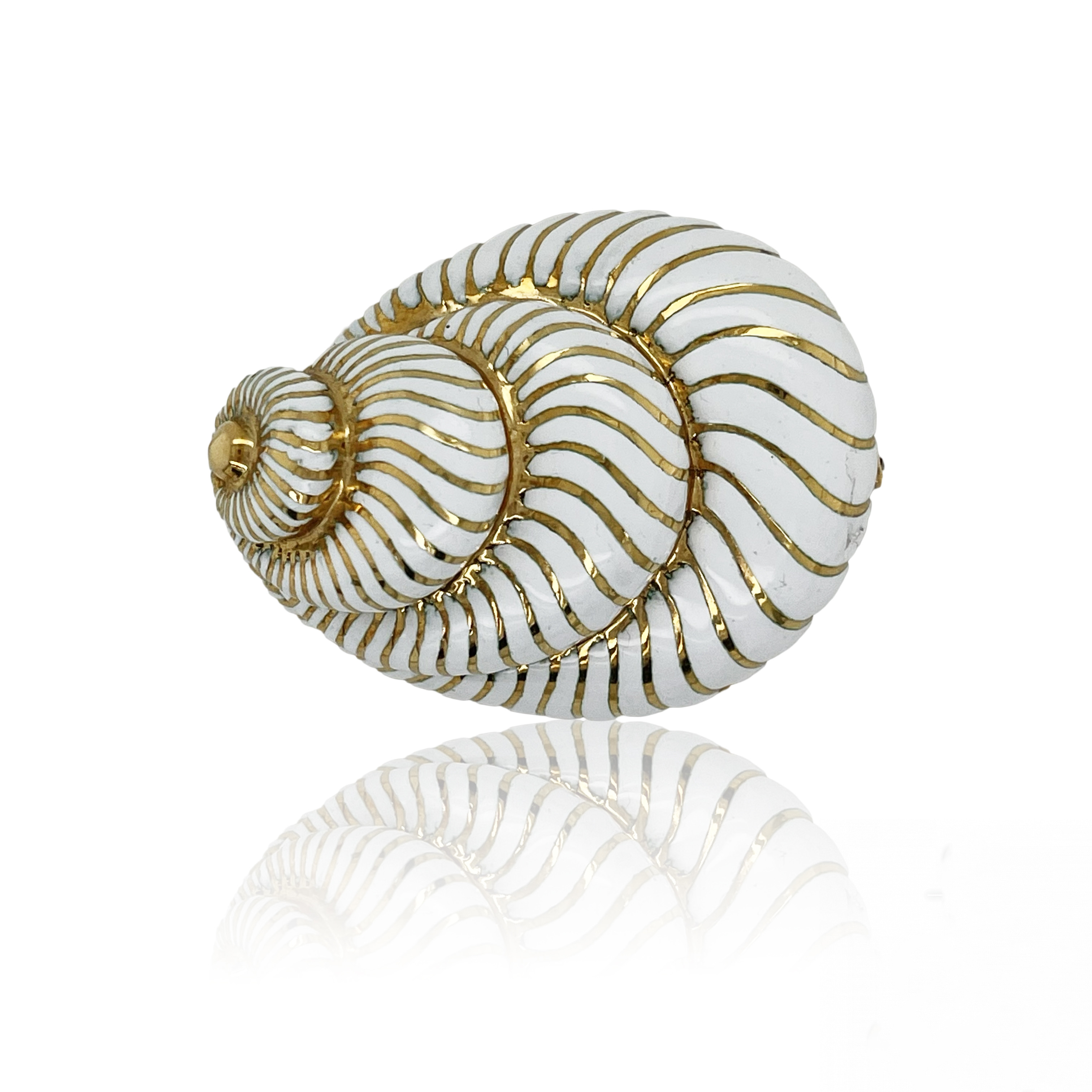
Large earrings shaped like a chandelier that have elaborate designs and are generally comprised of many gemstones.
Photo: Courtesy, Jewelry World.
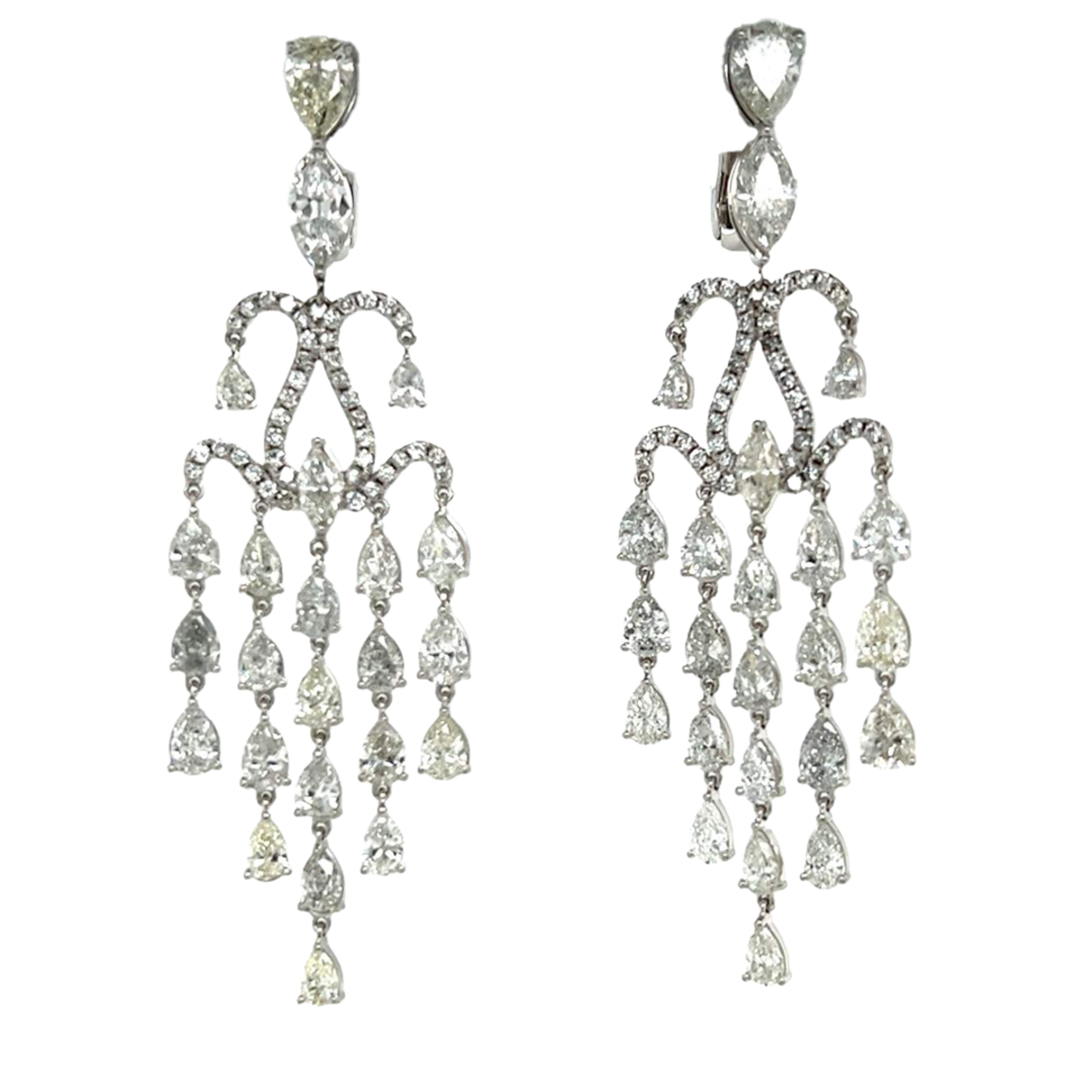
A channel setting is a type of setting where the gems are placed tightly together in a groove so that they are all touching. There are no prongs or other types of metal between the stones. The metal edges on the channel setting are folded over to hold the stones in place.
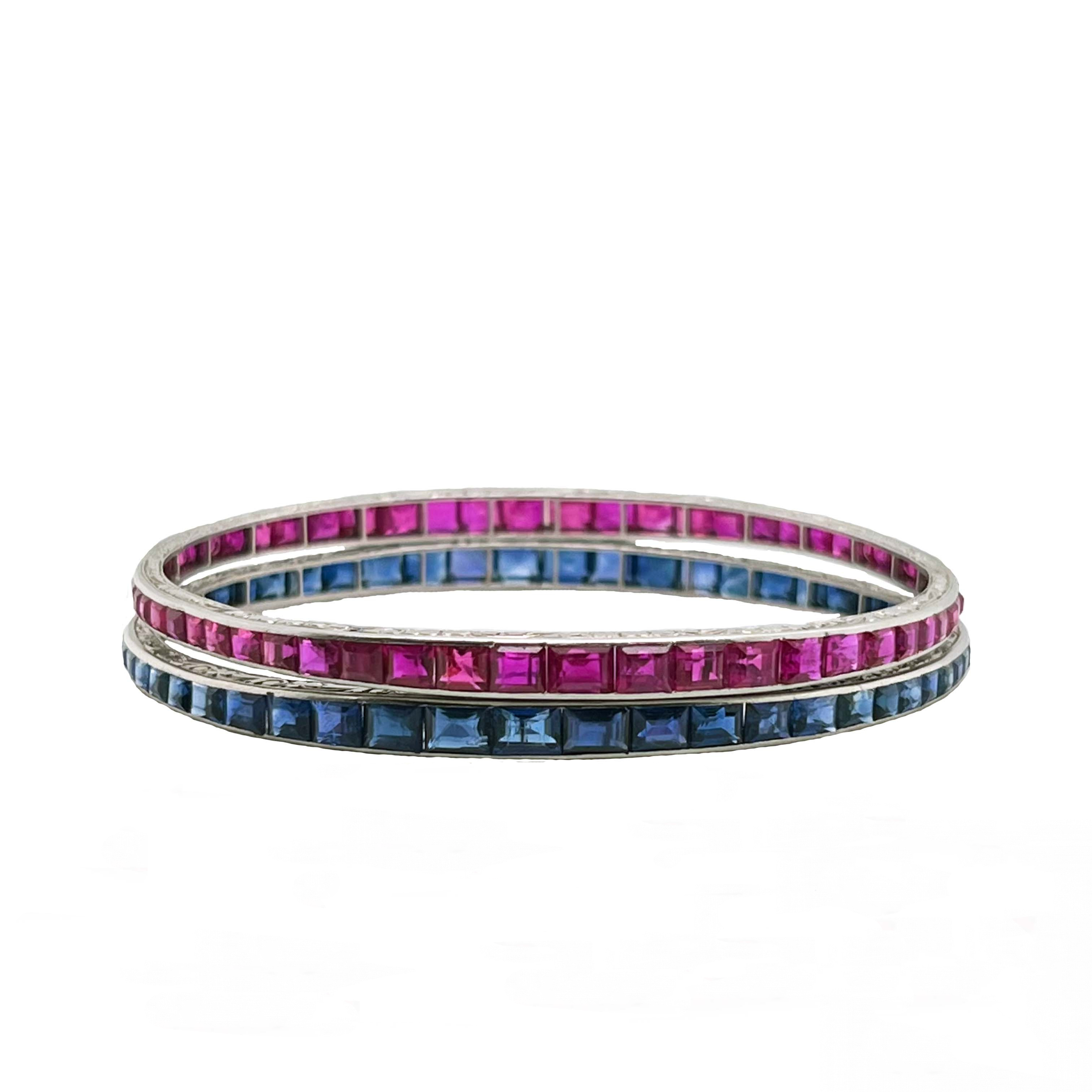
A charm bracelet holds one or more small ornaments (charms) that have personal meaning to the one wearing the bracelet. The bracelet is generally links with charms attached to the link. Sometimes a charm bracelet is a bangle with one charm attached. Charm bracelets were a favorite of Queen Victoria who was known to gift them to other royals and nobles. The charms she gifted were personalized to the interests of the recipient and it wasn’t long before all the aristocracy in Europe was wearing jingling charm bracelets.
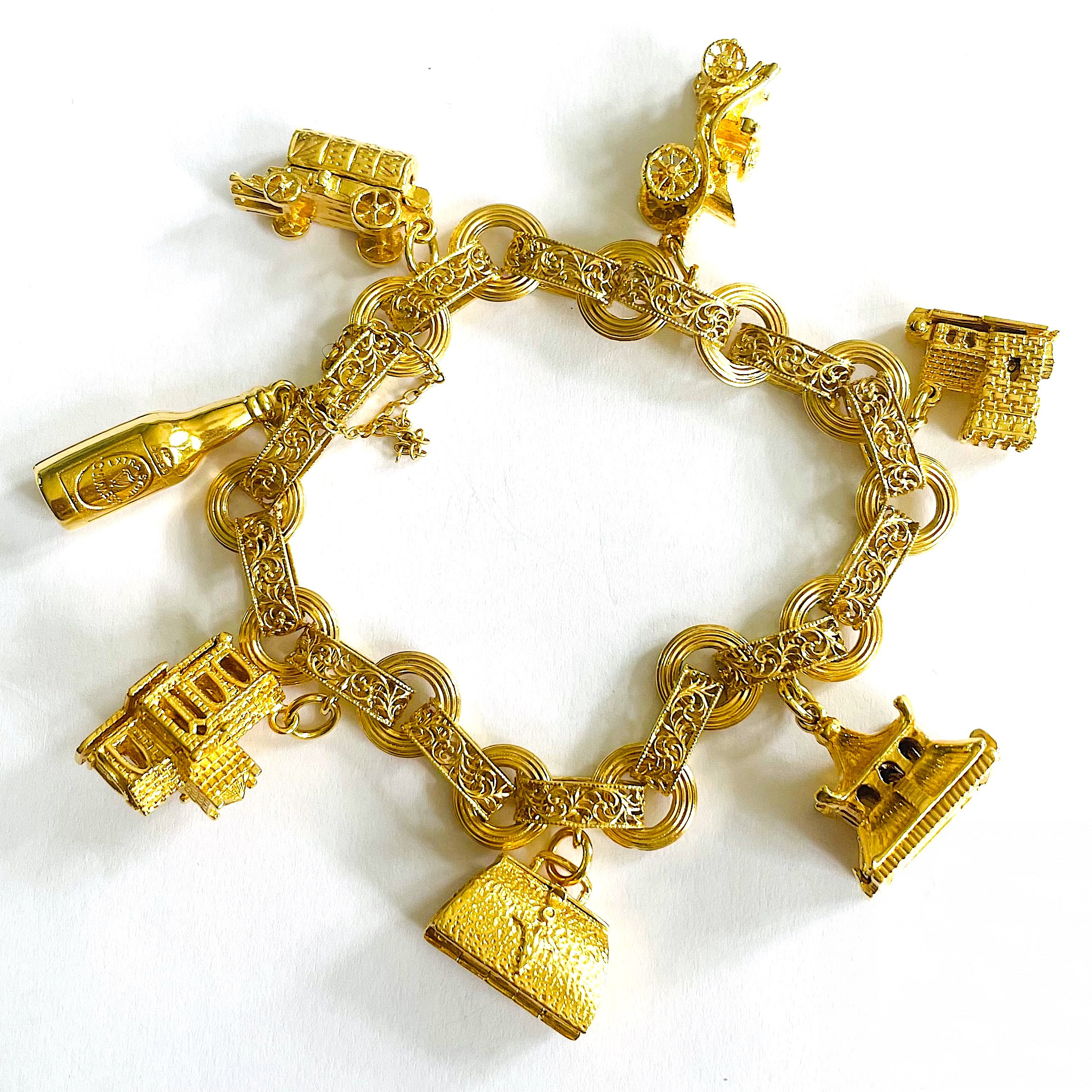
Chatoyancy, also called chatoyance, is bands of light that are created by light reflection from tiny needle-like inclusions in the stone, it is also called cat’s eye. The word comes from the French phrase “ceil de chat”, which translates to cat’s eye. Gems that have chatoyancy are considered phenomenal gemstones because of their unique optical effects.
Photo, courtesy, JS Fearnley.
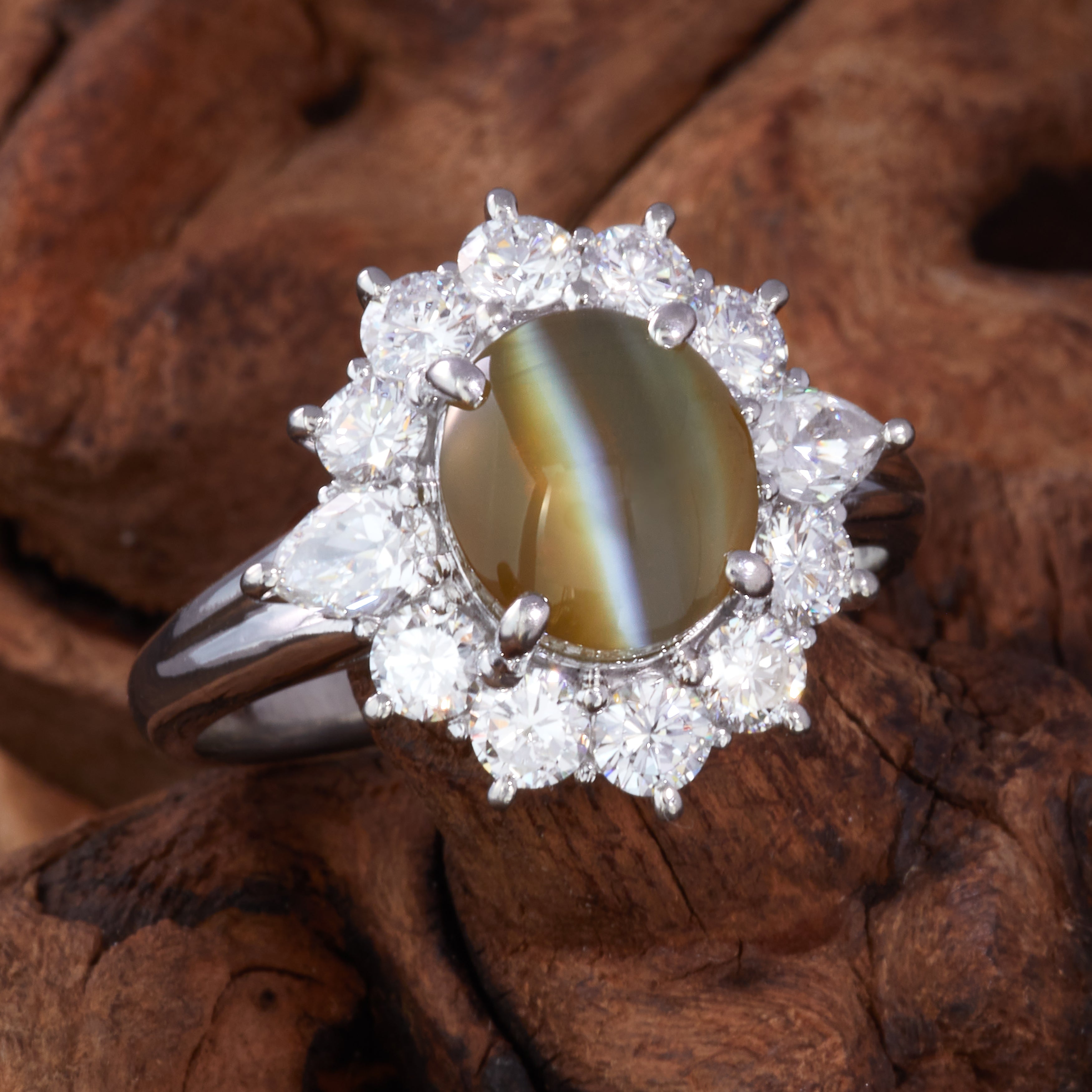
A choker necklace is worn low on the throat and sits on the collarbone. It is a popular length for a pearl strand.
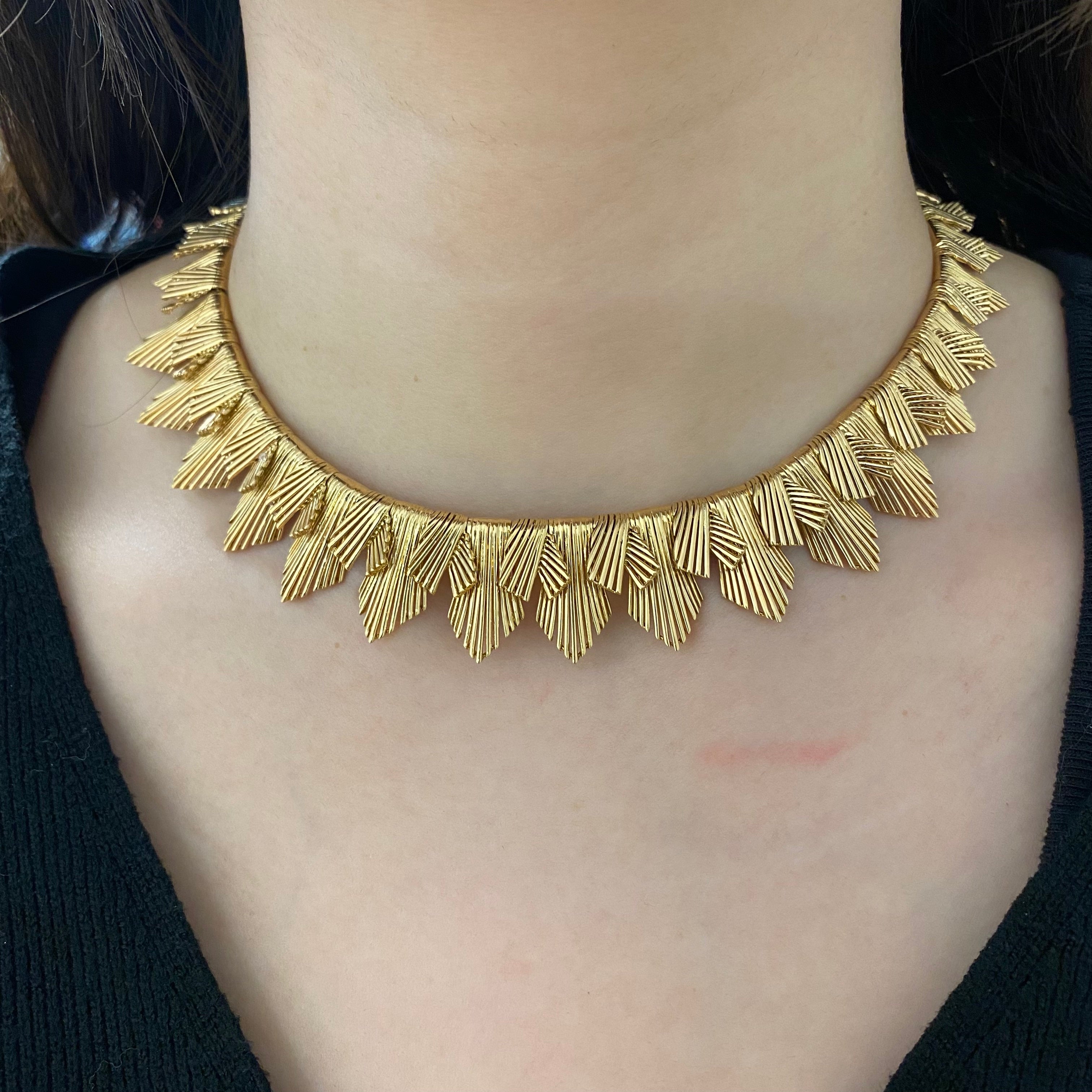
Circa is a term that is used when the fabrication date of a piece is approximate. Often with older pieces the exact date of manufacture cannot be determined because sales receipts and other paperwork that originally accompanied the jewel may no longer exist. In that case, a knowledgeable dealer will assign the piece a circa date based on its design and the way it was made. The circa date means that the jewel was produced within five years, either earlier or later, from the date cited.
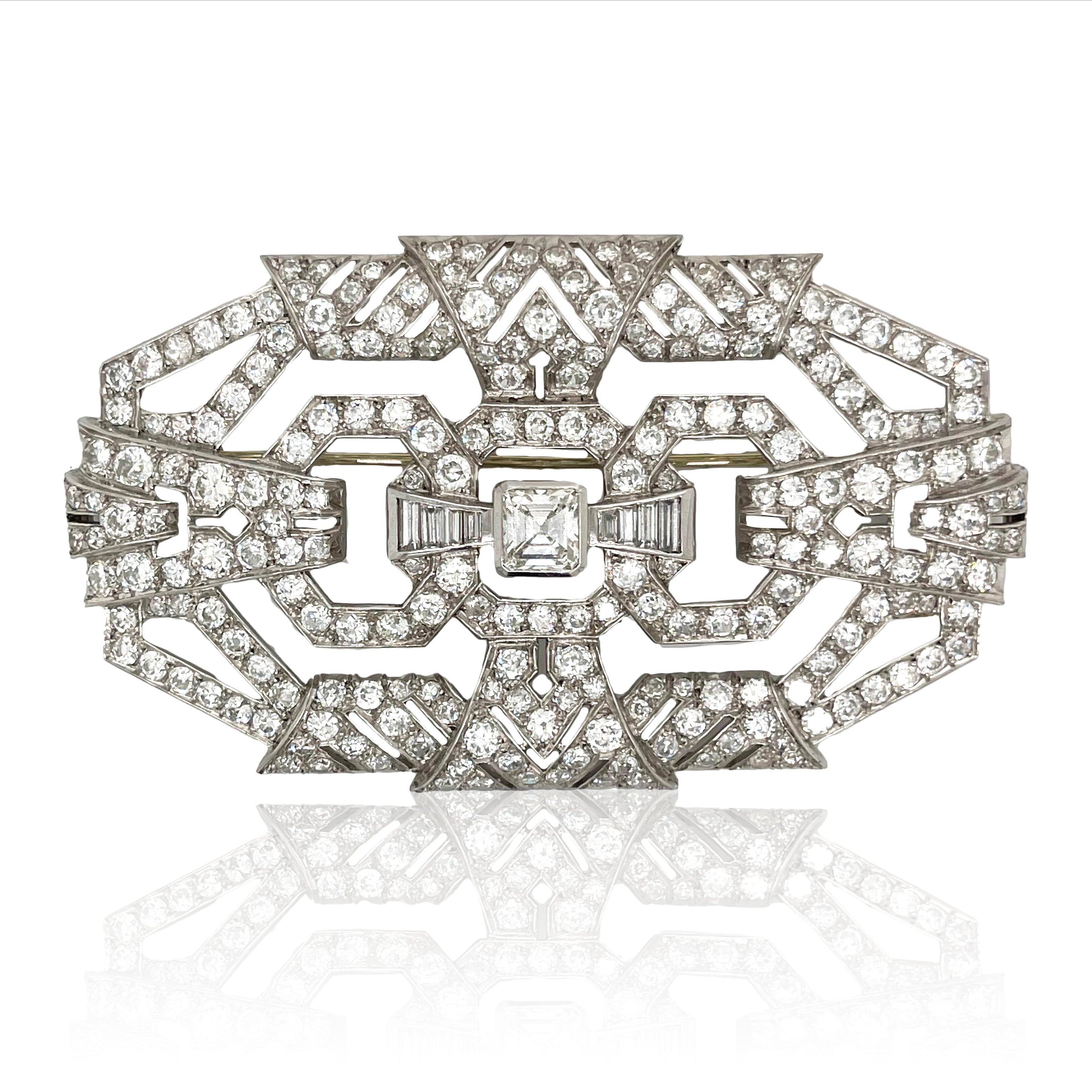
The circle brooch is a brooch in the shape of a circle, with an open interior.
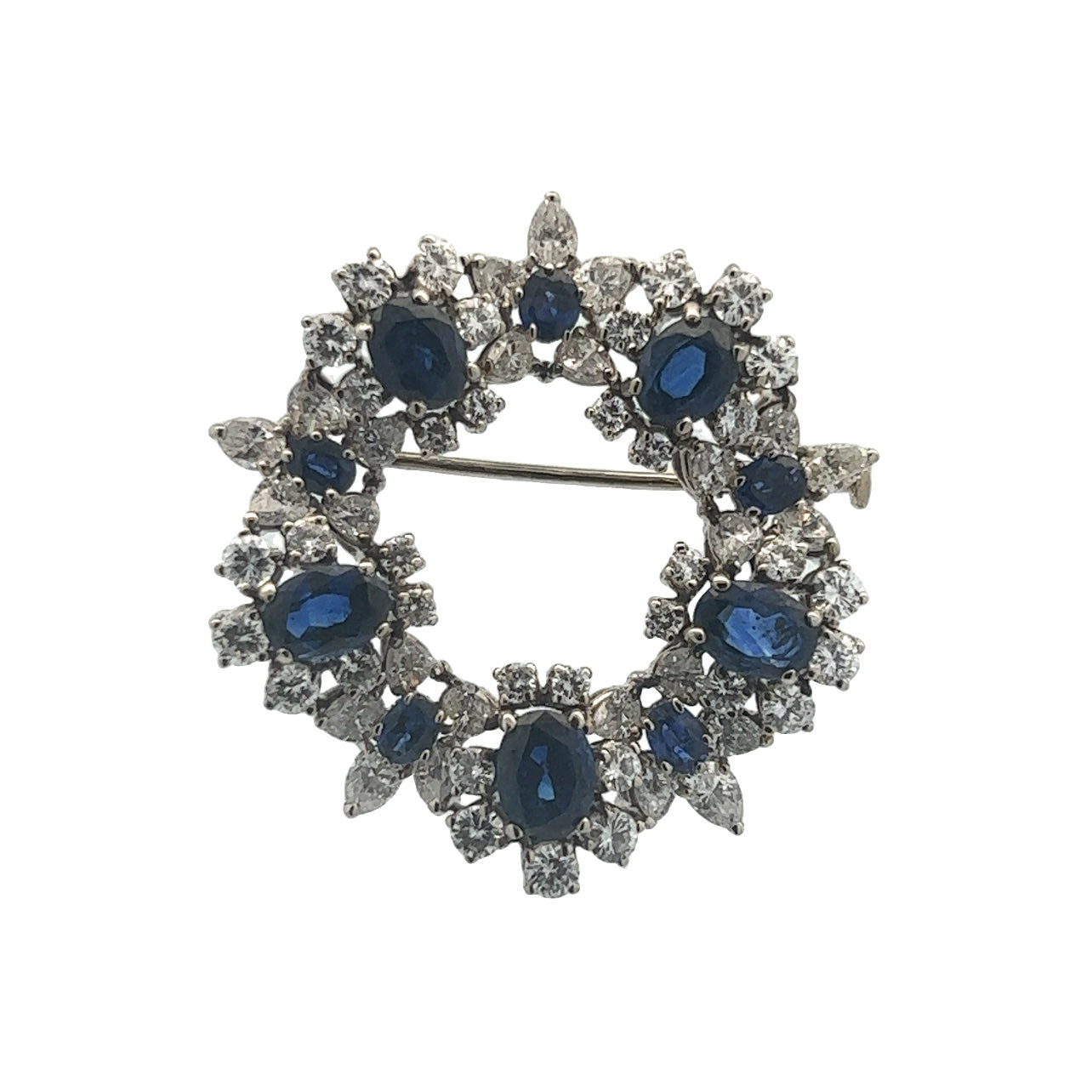
In Cloissoné enameling, thin metal strips or wires of gold, silver, brass or copper are twisted and bent into a pattern that is soldered to a metal surface. The partitions are then filled with enamel. Next the item is fired, then ground smooth and polished. The thin metal wires that are seen in the finished piece create the final pattern.
Photo: Courtesy, Macklowe Gallery.
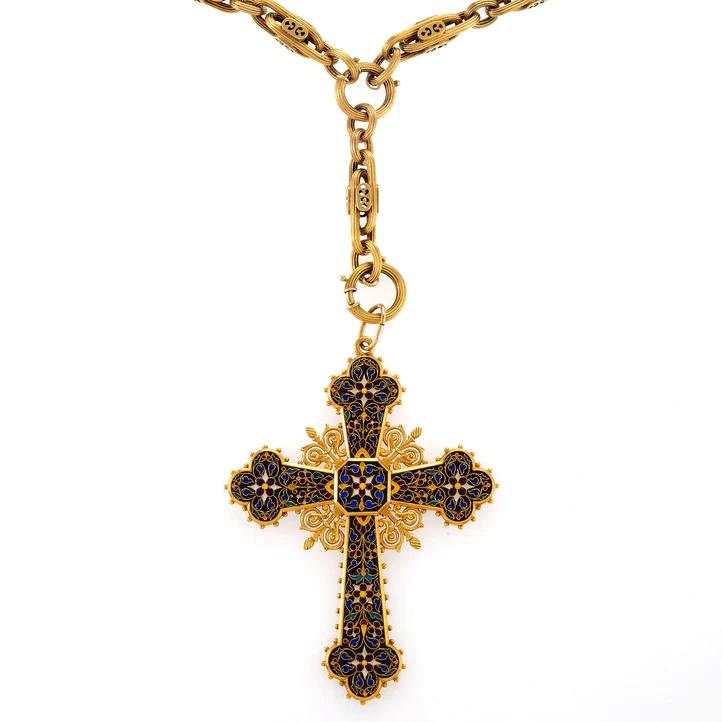
A closed back setting is when there is metal behind the stone on a piece of jewelry so that only the top of the stone is visible. Often used with foil backed gemstones to protect the foiling, or to make the color appear better.
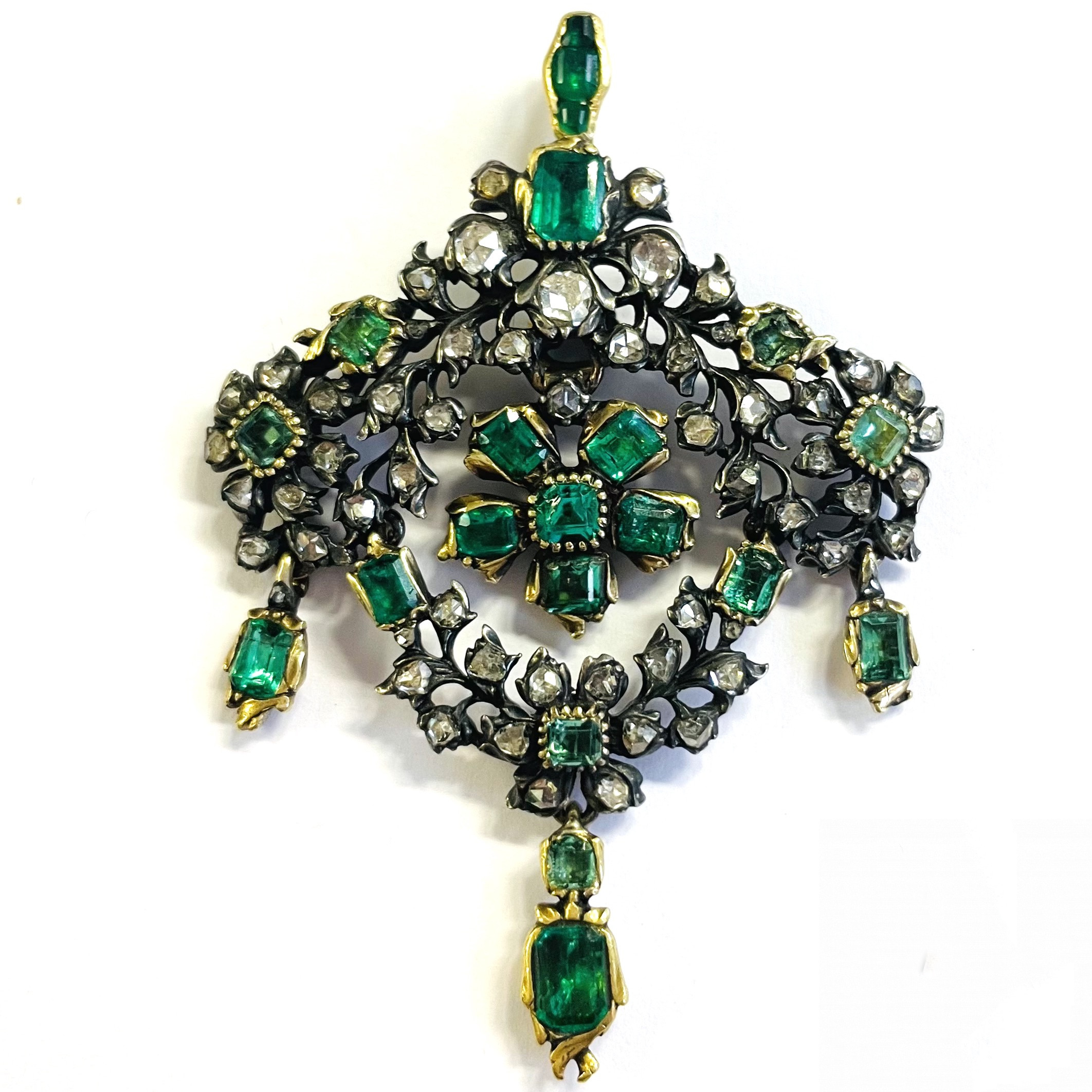
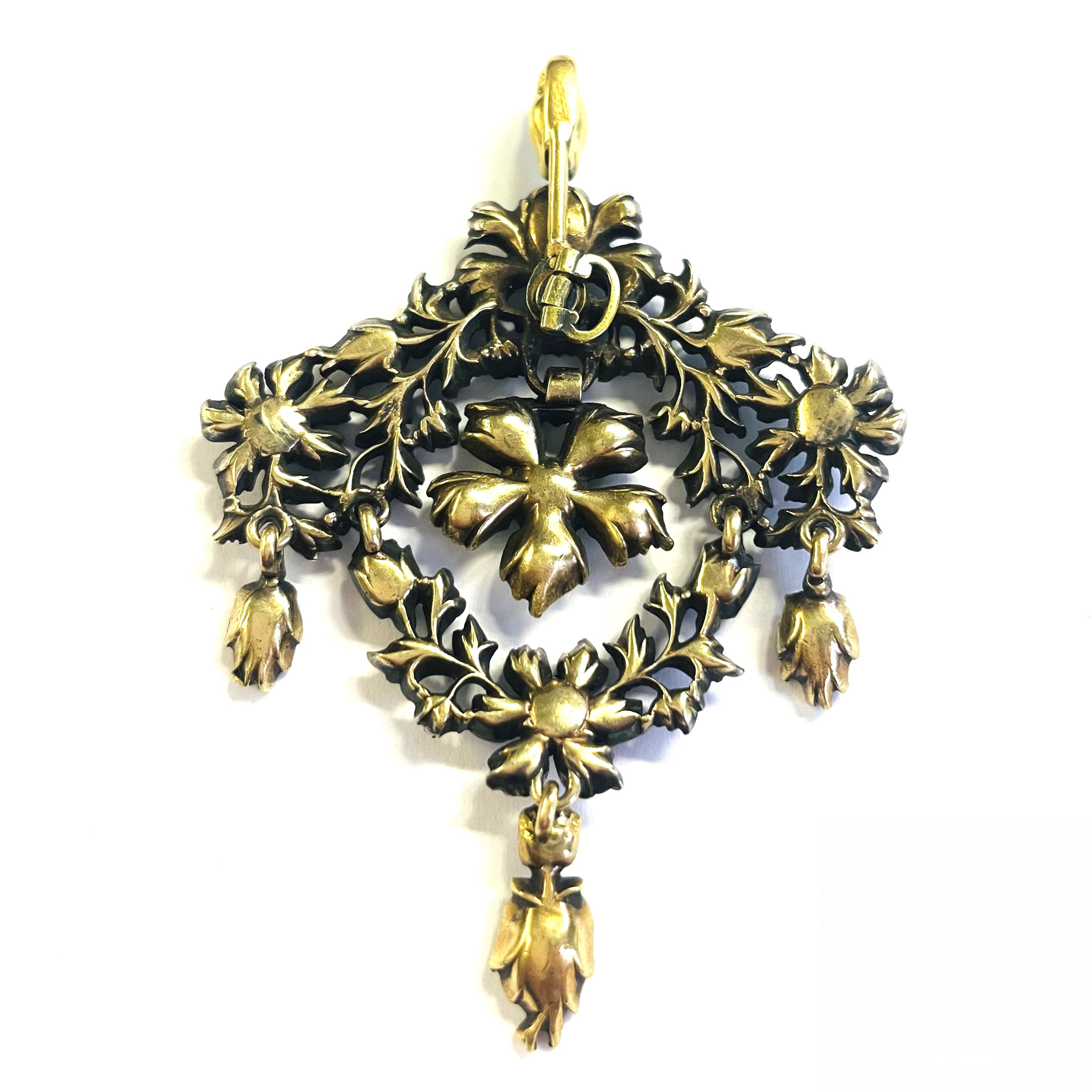
Cluster earrings sit on the earlobe and are made up of a group of gemstones “clustered” together, frequently round, pear and marquise shapes are mixed in a cluster earring.
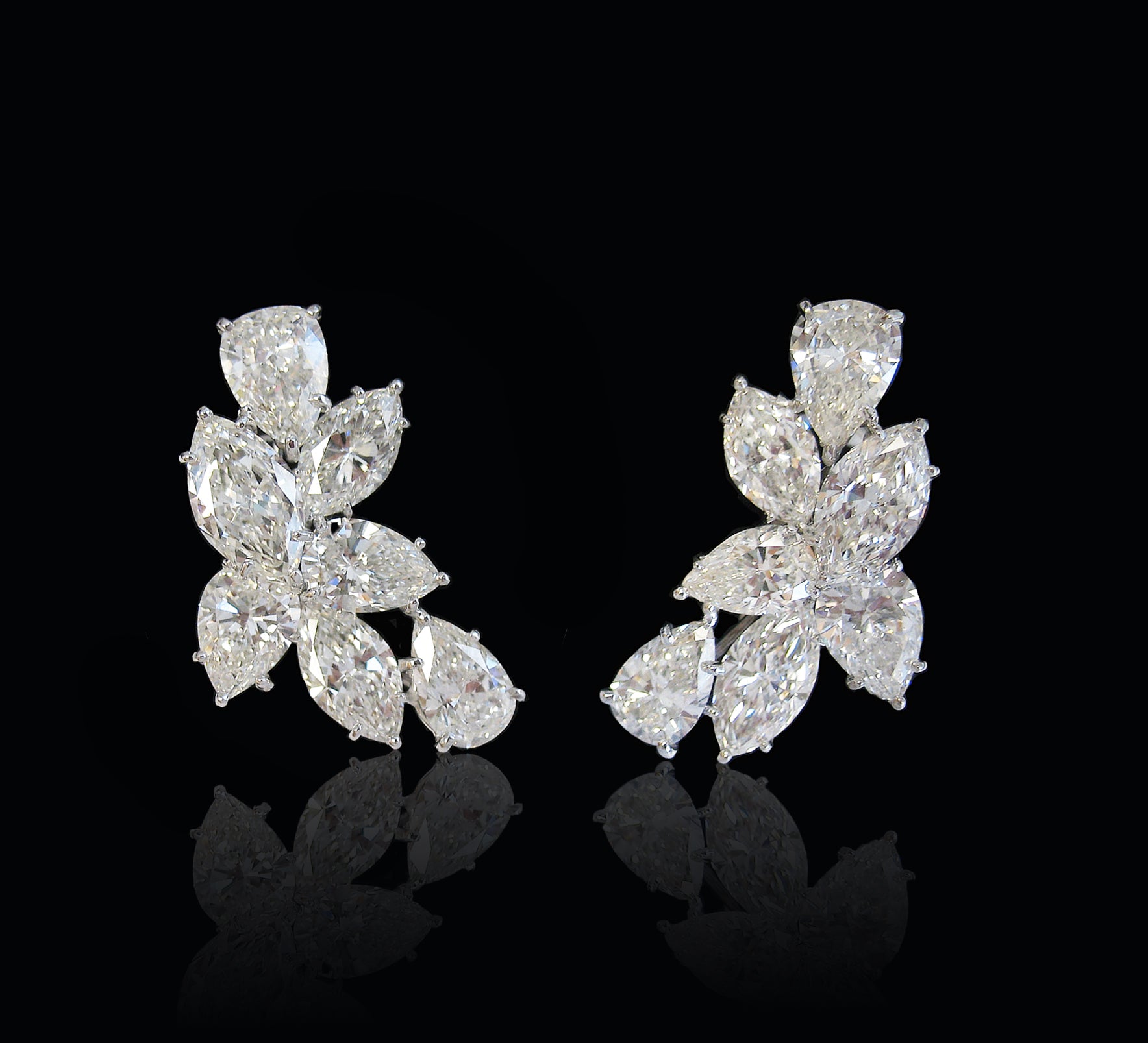
A cluster ring is created from a grouping of stones that are clustered together. It can be a mix of gemstones, such as diamonds mixed with ruby, sapphire or emerald, or all one gemstone. Cluster rings are often created with round, pear and marquise shaped stones, together in one piece.
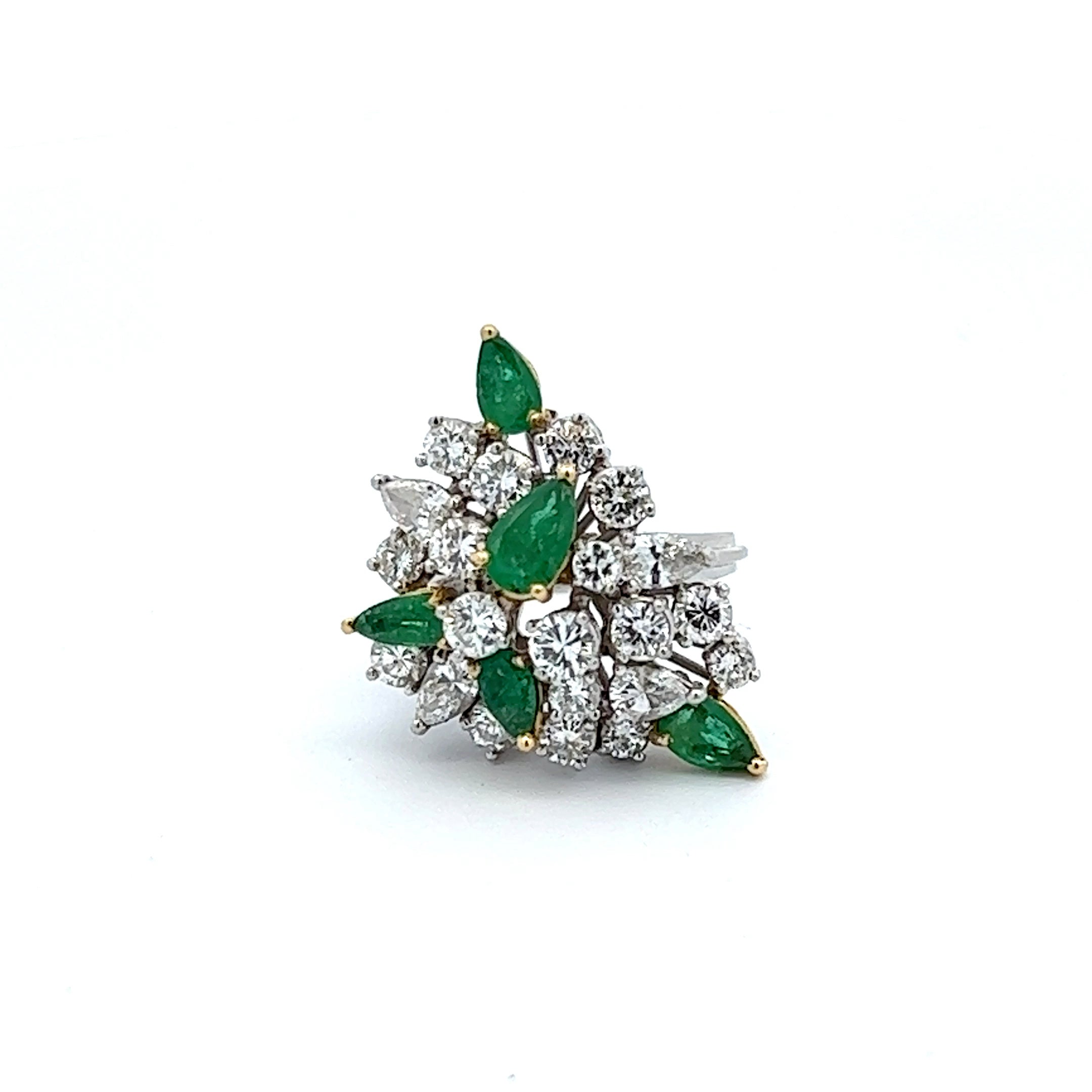
A cocktail ring is defined as a ring with a very large center stone, often adorned with diamonds. It can also be a large ring comprised of many small stones. It is generally worn on the right hand or on an index finger. Cocktail rings came roaring to the forefront of style in the 1920s when women purchased these rings for themselves and wore them on their right hand to show their independence.
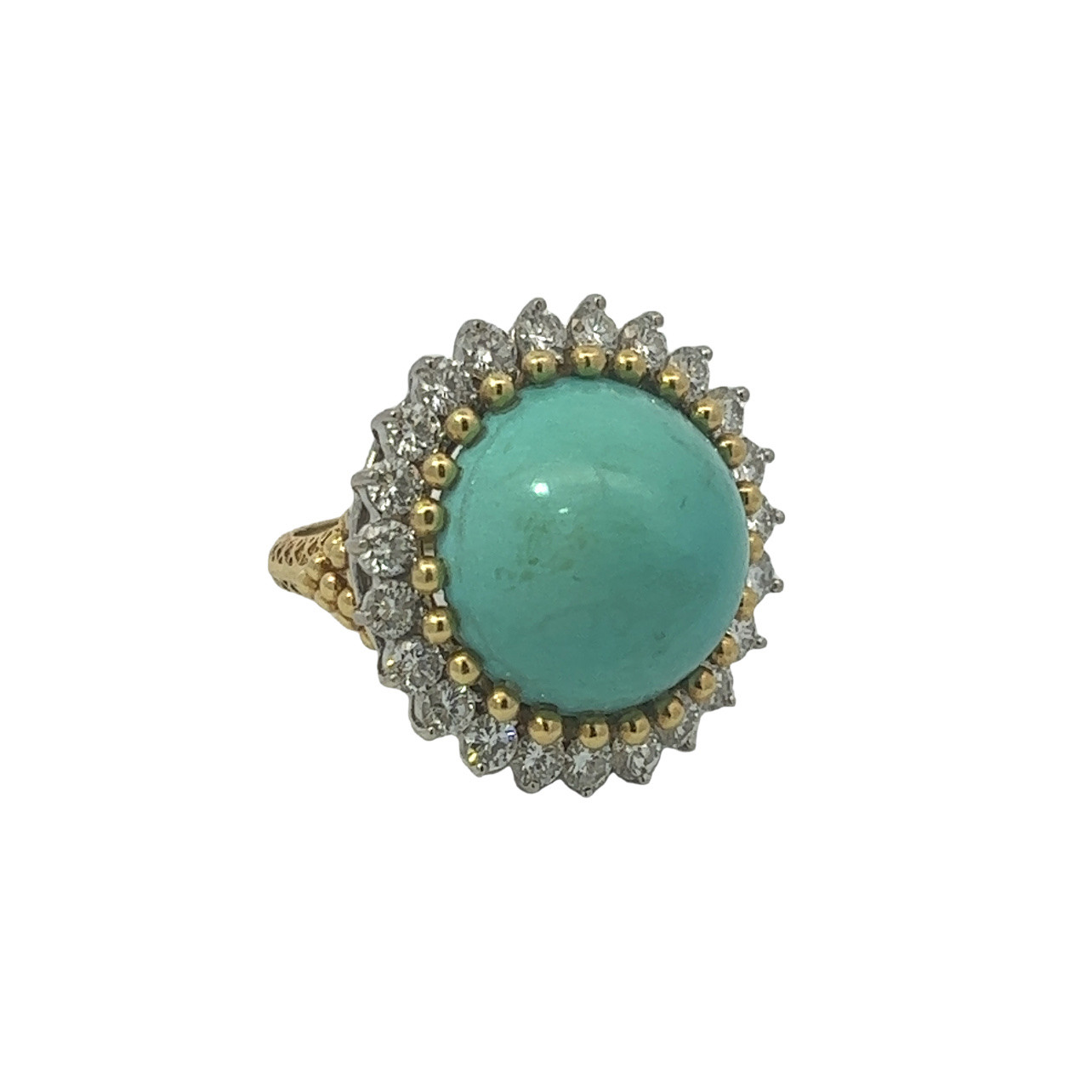
A necklace worn high and tight on the throat, also called a dog collar. This was a popular style in the Edwardian era. King Edward VII’s wife, Alexandra, wore dog collars frequently, allegedly to hide a scar on her neck. As Queen she was a trendsetter and the style caught on during that time.
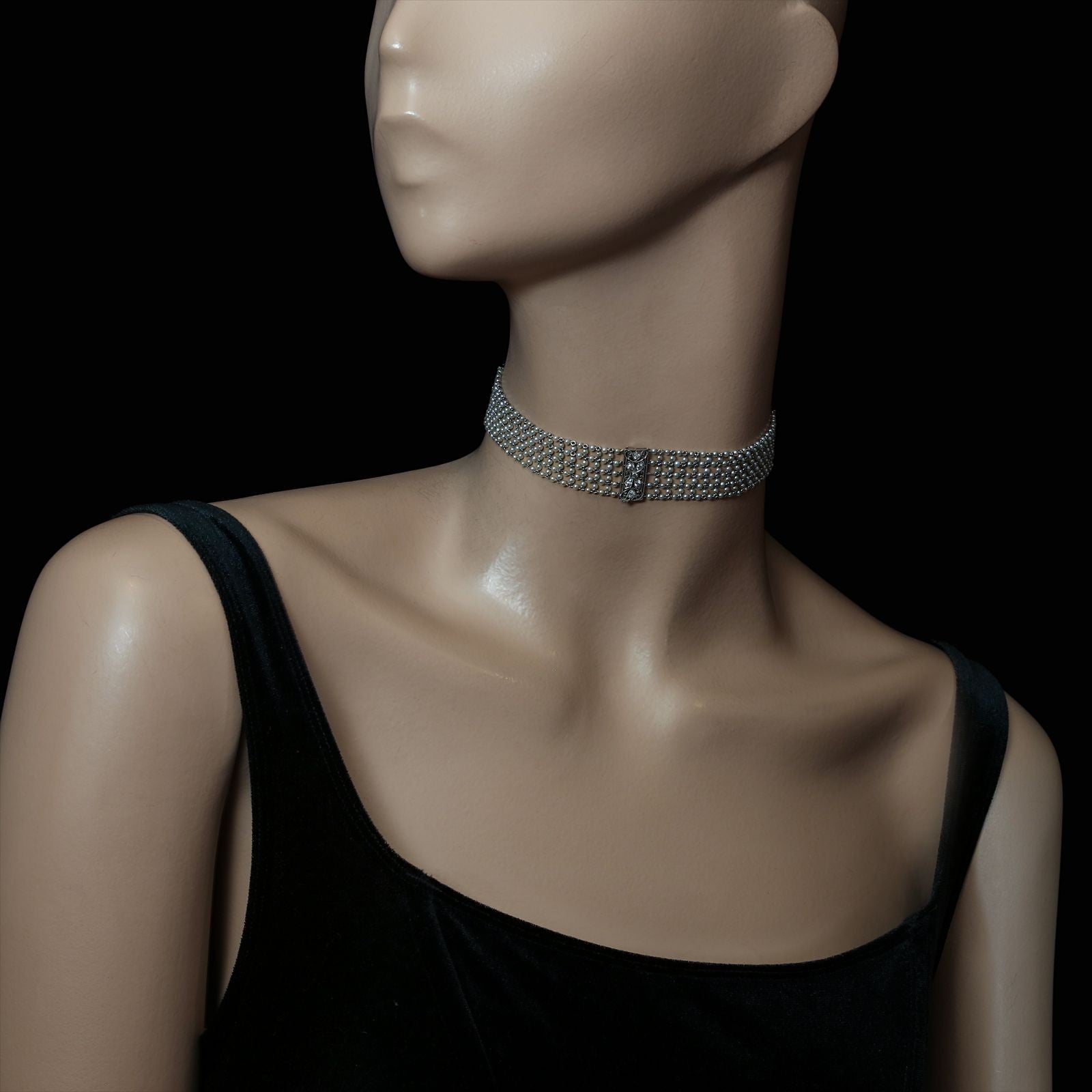
A type of setting with a thin metal band that wraps around the girdle of a gemstone or diamond to hold it in place. Once the stone is placed in the setting the metal is then pressed down on the edges of the stone to hold it securely. This setting leaves the front and back of the gem exposed.

A color change gemstone is when a stone noticeably changes color when seen under different light, such as daylight or incandescent light. Alexandrite is an example of a color change stone. Color change is a special optical effect and is considered a characteristic of a phenomenal gemstone.
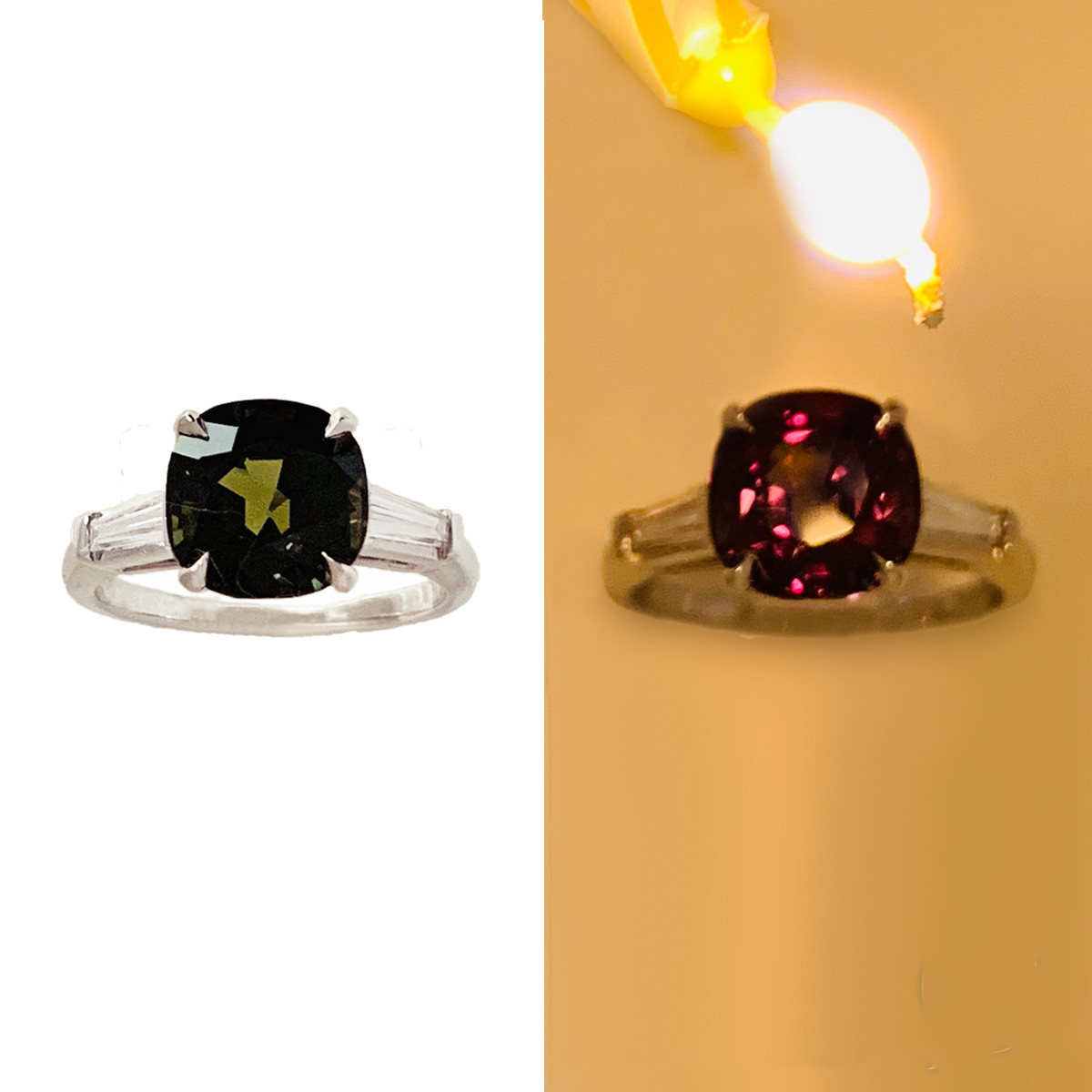
Diamonds come in every color of the rainbow with yellow and brown being more common and blue, green, orange, pink and red being the rarest colors. These diamonds get their color from various trace minerals or an anomaly within the structure of the stone. Colored diamonds are also referred to as “Fancy Color Diamonds”.
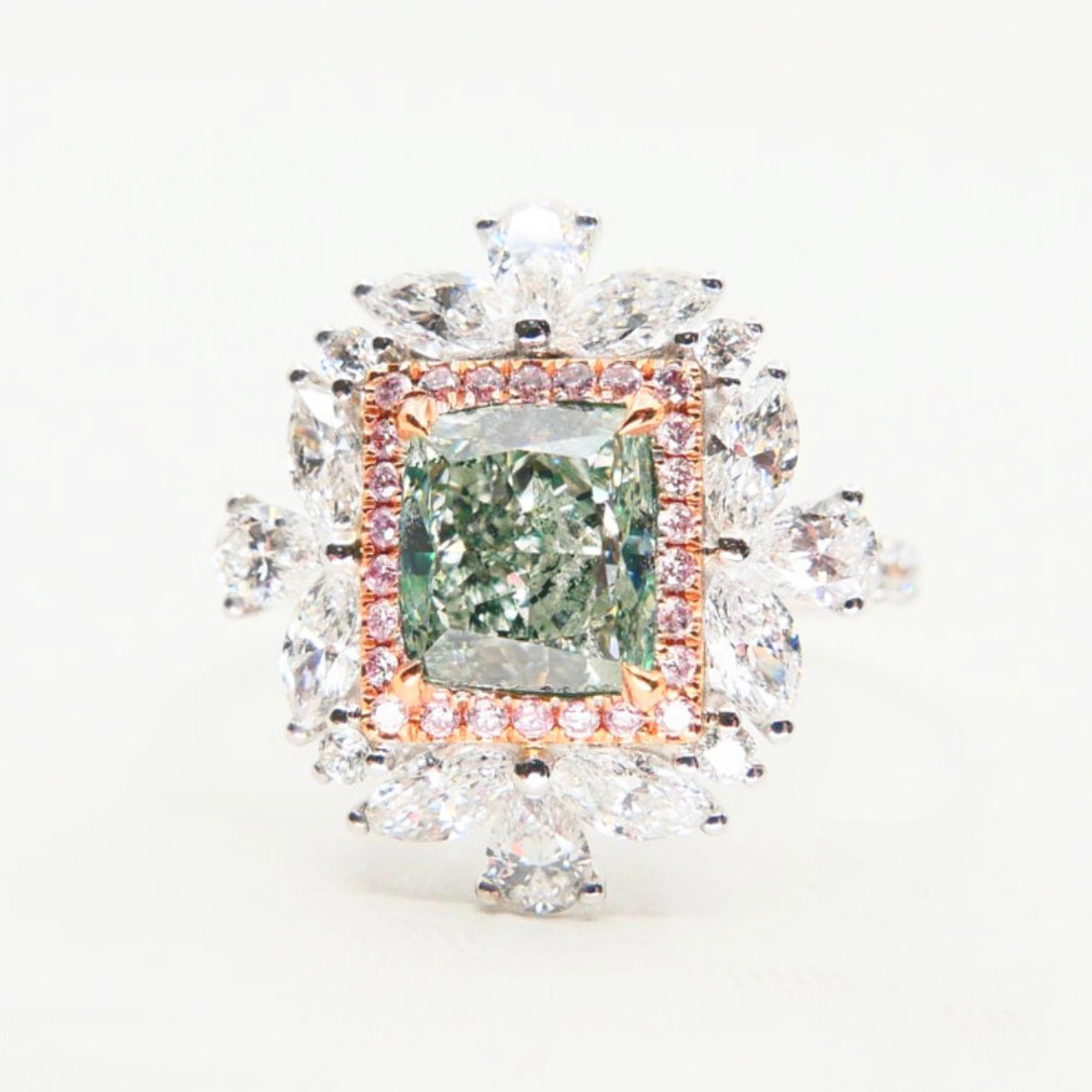
The conch (pronounced konk) pearl is one of the rarest and most beautiful pearls. Produced by the Queen Conch Snail, these pearls are always natural and have a porcelain-like surface with a shimmering flame that comes from the layers of fibrous calcium that create the pearl. They are generally pink and come in various shapes.
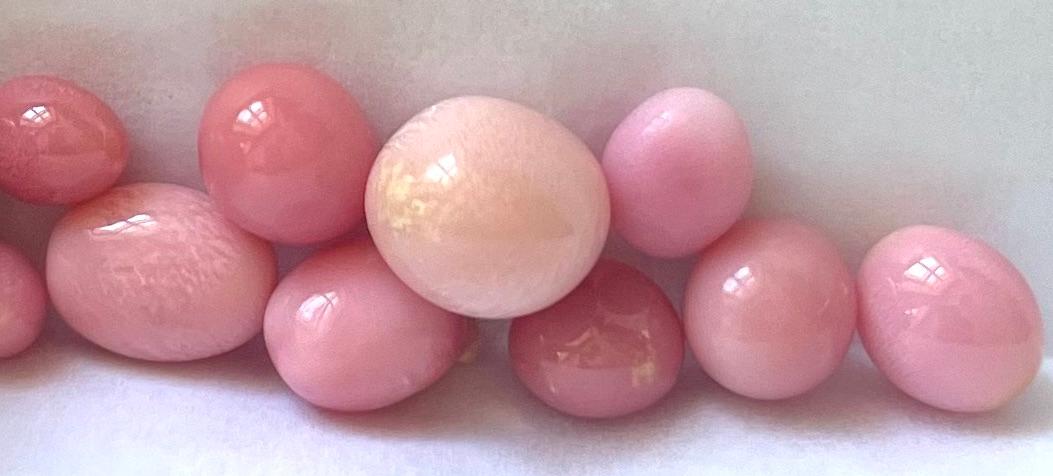
A crown is a head ornament worn by royalty – king or queen — generally on state or ceremonial occasions. They have a base that encircles the entire head and are often adorned with jewels and may have a hat as part of its design. They tend to be heavy due to the weight of the precious metal and gems. Crowns are meant to denote authority and a connection to a higher power.
Photo: St. Edward’s Crown, Sir Robert Viner, 1st Baronet, Public domain, via Wikimedia Commons.

A cuff bracelet goes three-quarters of the way around the wrist and then has an opening. The cuff is put on and removed by sliding the wrist through the opening, which is part of the design.
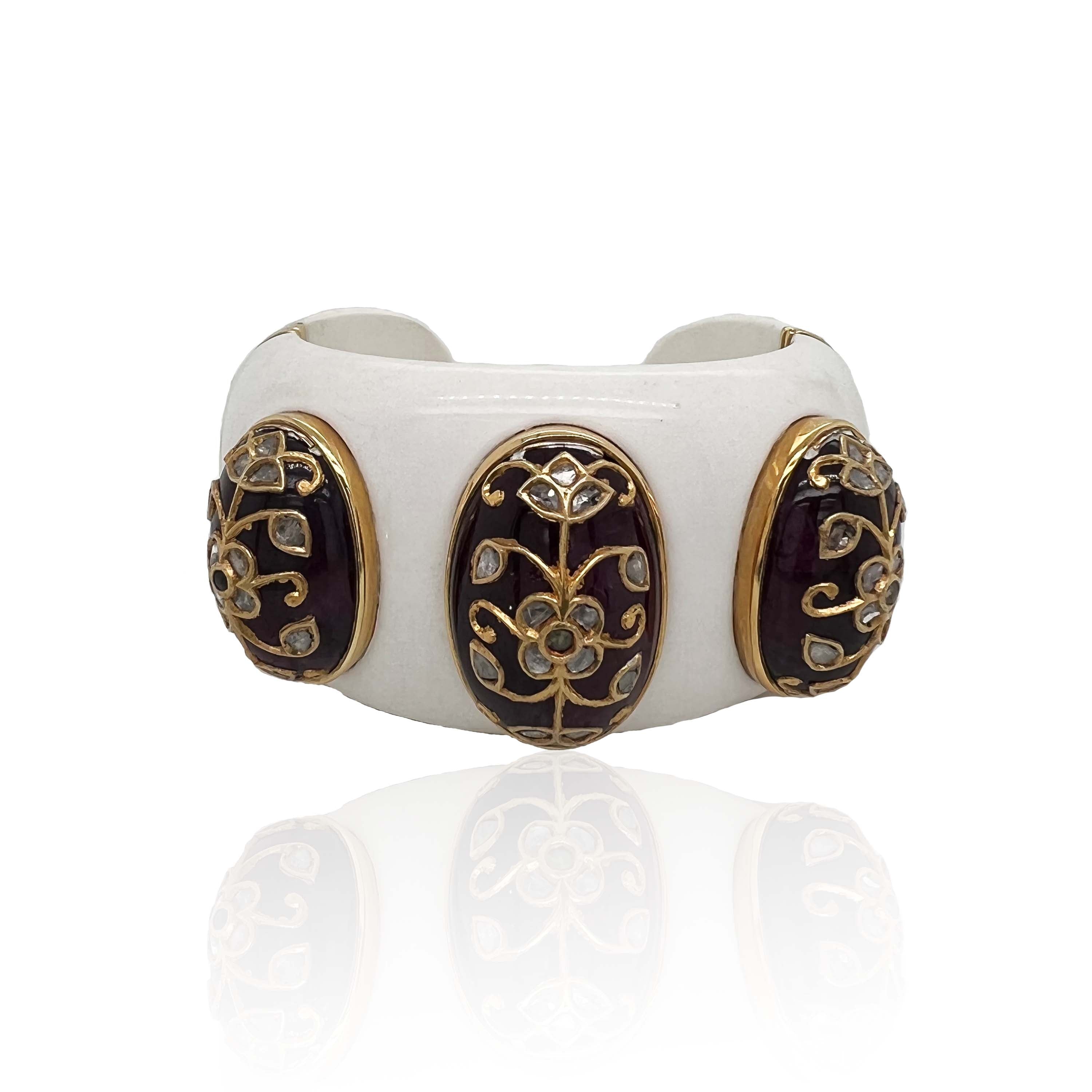
A cultured pearl is formed when a human places an irritant in a mollusk prompting it to create nacre to soothe the irritation. The layers of nacre form a pearl. Cultured pearls grow on pearl farms — in oceans, rivers and lakes. Baby mollusks are nurtured in large nets until they are mature enough to be nucleated, which takes about two years. Skilled technicians then gently and carefully implant a nuclei into the mollusk. From there the mollusk is placed back in the water for six months to two years. The longer the mollusk stays in the water the larger the pearl.

A cushion cut is a square shaped diamond or gemstone with rounded corners, which gives it a plump, puffy pillow-like look. The shape originated in the 1800s and became popular because it sparkled especially well in candlelight, which was the main light source at the time. Because they were cut by hand, these diamonds are never exactly alike.
Photo: Courtesy, John T. Haynes.
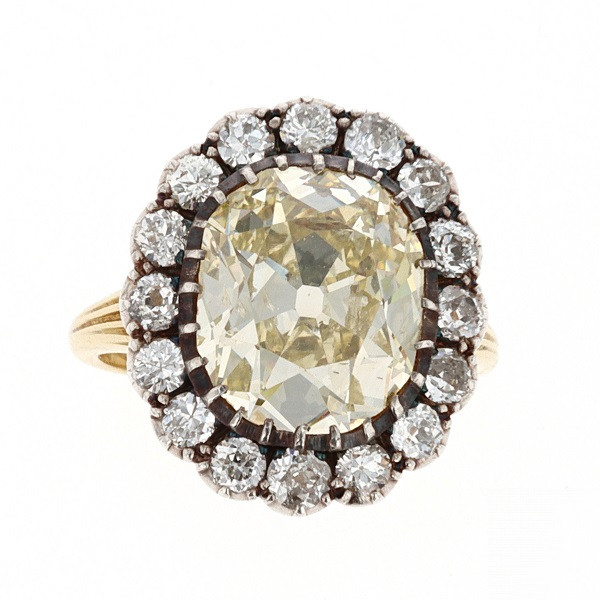
D
A dance card was used by women to keep track of who they were dancing with at a formal ball. It is thought that dance cards originated in the 1700s, however they became popular during the 1800s. There were a number of types of dance cards, some made from paper, the cards listed the order of the dances and had a space to fill in a partner’s name for each dance. They were generally given to women when they arrived at the ball and were keepsakes after the event. But for those who were wealthy, a dance card could be made of gold and embellished with jewels. The inside of these cards featured pages made of bone that could be erased and reused at the next ball. Dance cards sometimes came with a small stylus for writing in the names of dance partners. This charming accessory was often worn on the wrist or attached to a ballgown.
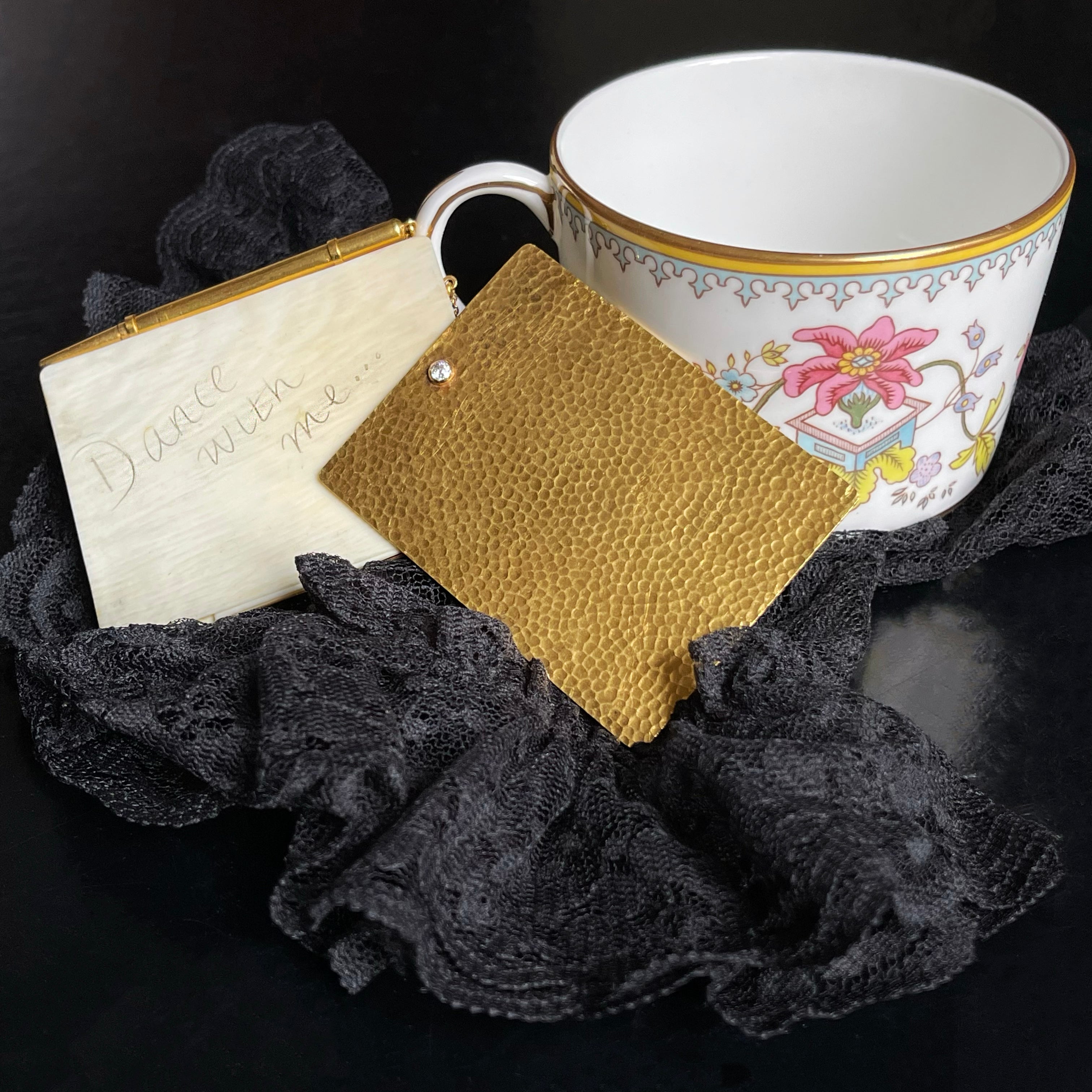
Dangle earrings hang below the earlobe and are long enough to swing freely as you move. They tend to be large and hang part way down the length of the neck.
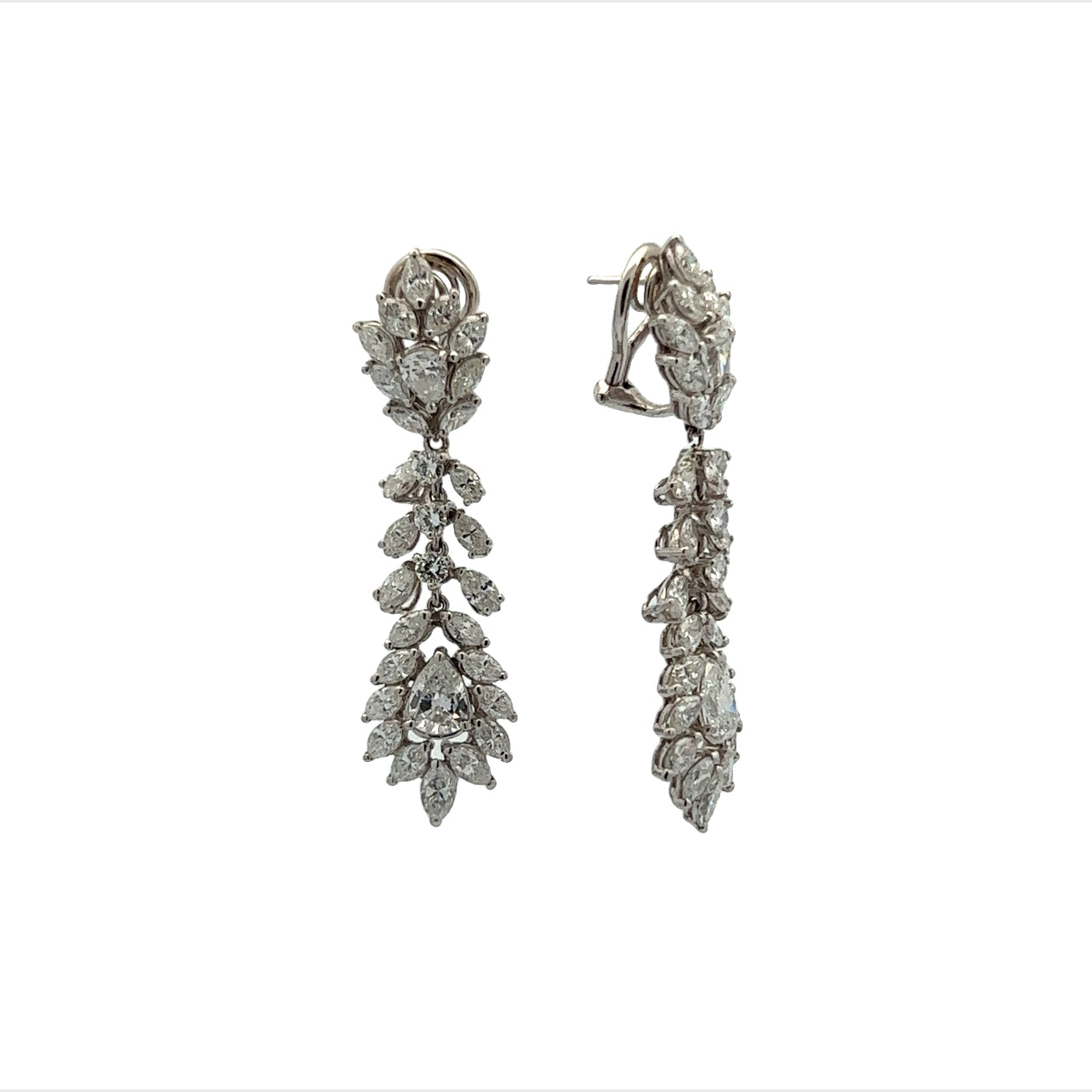
With a green color evocative of emerald and the fire of a diamond, demantoid garnets are a very rare gemstone that is sometimes found in antique and vintage jewelry made during the Belle Epoque, (late 1800’s and early 1900s, approximately 1890 -1910). Demantoid garnets were first found in Russia in the Ural Mountains in the mid-1800s, sources vary as to the exact timing, but seem to agree that the discovery was sometime between 1852 and 1854. These stones are the green variety of the mineral species andradite, that is part of the garnet family. They get their color from the presence of chromium, which can range from a lighter yellowish green to a deep, rich green; the stones with more yellow will have traces of iron. Garnet is the birthstone for January.
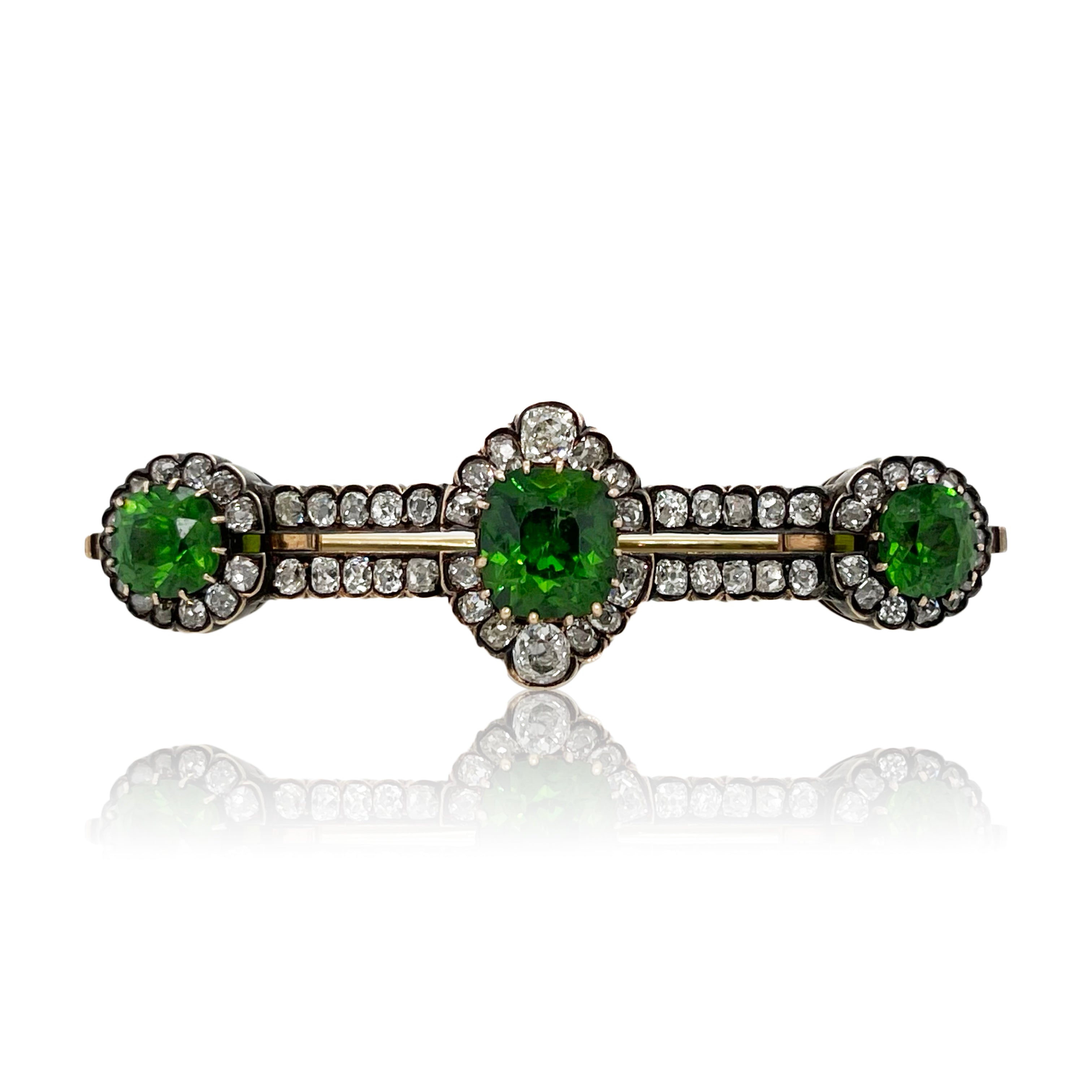
A diadem is a head ornament with a band style that is worn on the forehead and is a symbol of sovereignty. Diadems became popular in the 1800s as a symbol of wealth for the industrialists and others with new money in that era.
Photo: King George IV State Diadem, Wiki Commons, Public Domain
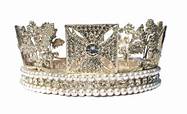
Door knocker earrings are large, bold earrings that look like a door knocker. They have a loop at the top that holds a disc or circle “knocker” dropping down. The knocker can be any shape. This style was especially popular in the late 1970s and through the 1980s when the bold look of this style balanced the bright colors, big shoulder pads and big hair that were so stylish in those years.
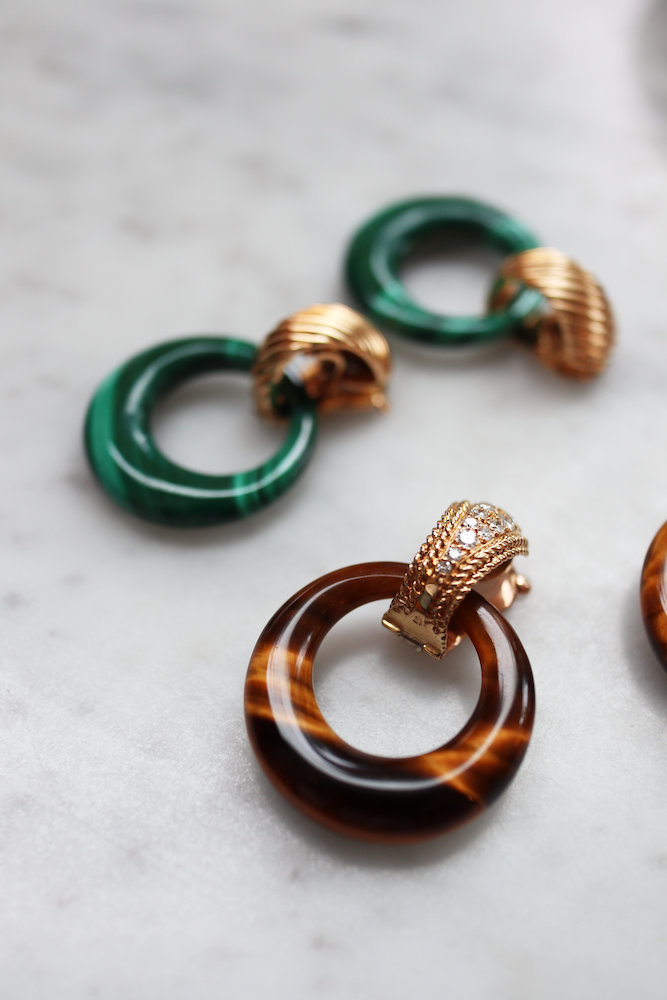
Dress clips are a brooch that splits into two clips. The clips are worn on each strap of a gown or on each side of the neckline. When the clips are put together they became a statement making brooch worn as one piece. Dress clips were popular in the Art Deco era, especially in the 1930s and into the 1940s.
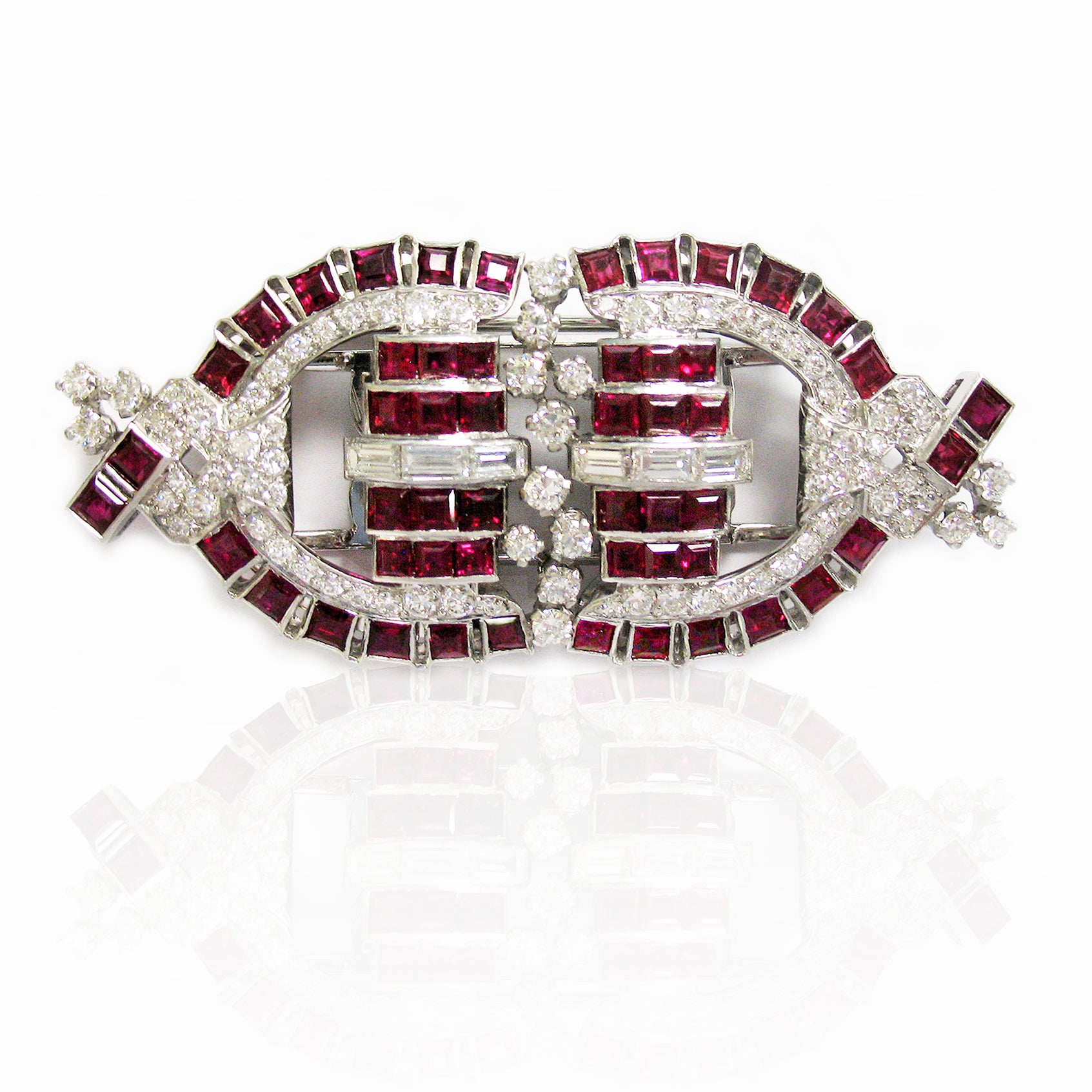
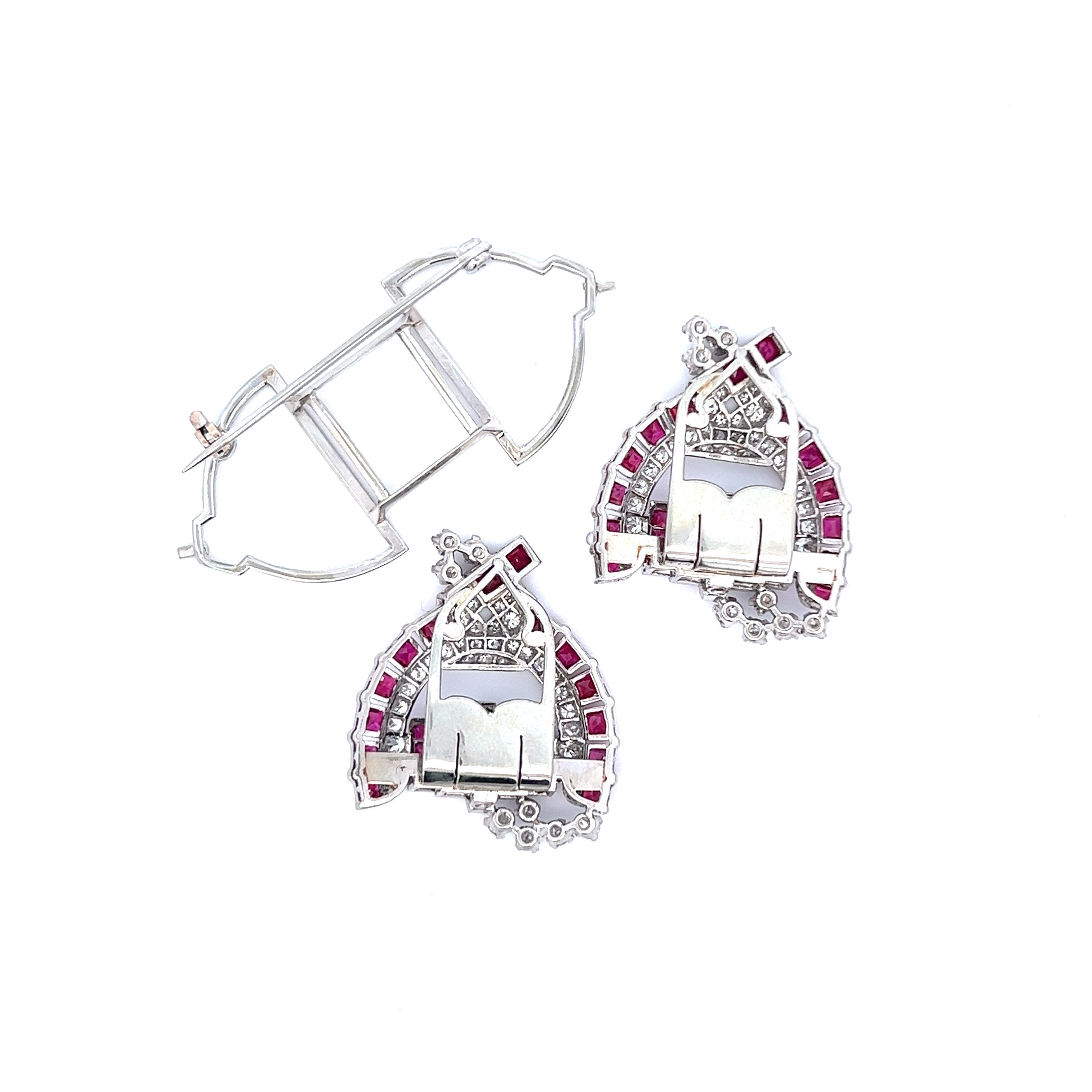

A dress set is a matching set of cufflinks and shirt studs that will sometimes include shirt buttons. Dress sets came about in the 1800s when men needed shirt closures. Strict dress codes of the Victorian era meant that men wore shirts with a highly starched collar and cuffs. That made the rest of the shirt look rumpled so the shirt front, also highly starched, was used to create a crisp look overall. It was impossible to button the shirt front or sleeves because of the starch. Instead shirt studs were made to fasten the shirt fronts and cufflinks fastened the sleeves. Matching sets, known as dress sets, were made for a cohesive look. Dress sets became especially popular during the Art Deco years when people dressed up in elegant clothes for a glamorous evening at a nightclub.

Drop earrings hang (drop) just below the earlobe. They are generally small and don’t move, or move very little.

E
The Edwardian era officially began during the reign of King Edward VII in 1901 (although he was coronated in 1902) and ended with the start of World War I in 1914. Edward, the son of Queen Victoria, began to take on many official duties after Prince Albert, the Queen’s husband and Edward’s father, died in 1861. The Edwardian style began to develop in the late 1800s and blossomed during his reign. Even though this same time period was known as the Belle Epoque in other parts of Europe and as the Gilded Age in the United States, the jewelry had the same design aesthetic. During the Edwardian era, white-on-white, platinum with pearls and/or diamonds and garland motifs were the most important styles, as well as jewels that were light and lacy, intricate, formal and regal.
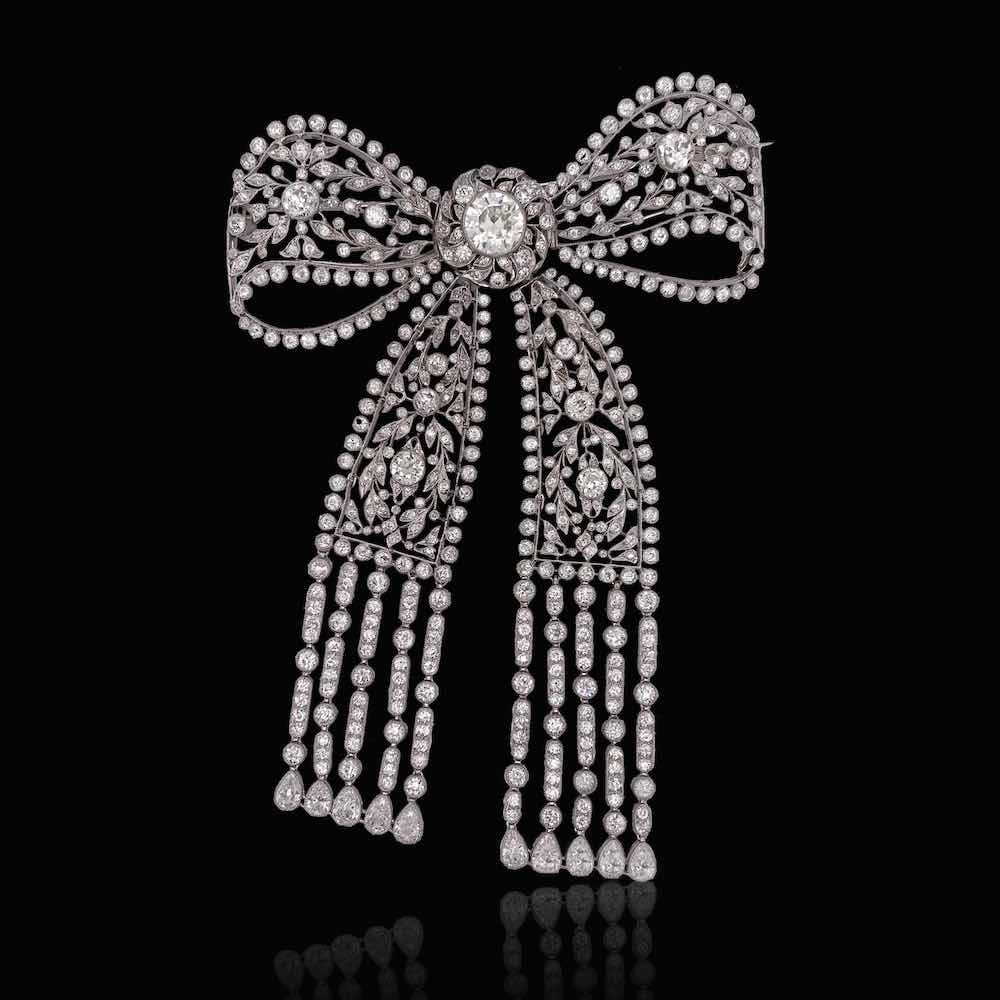
Enamel is made when powdered glass is fused onto a metal background by applying extremely high heat that melts the powder. The heat can be applied with a hand held torch, or by putting the piece in a furnace and “firing” it. There are several styles of enameling, each bringing its own characteristics to a piece of jewelry including plique à jour, champlevé, cloissoné, guilloché and paillonné.
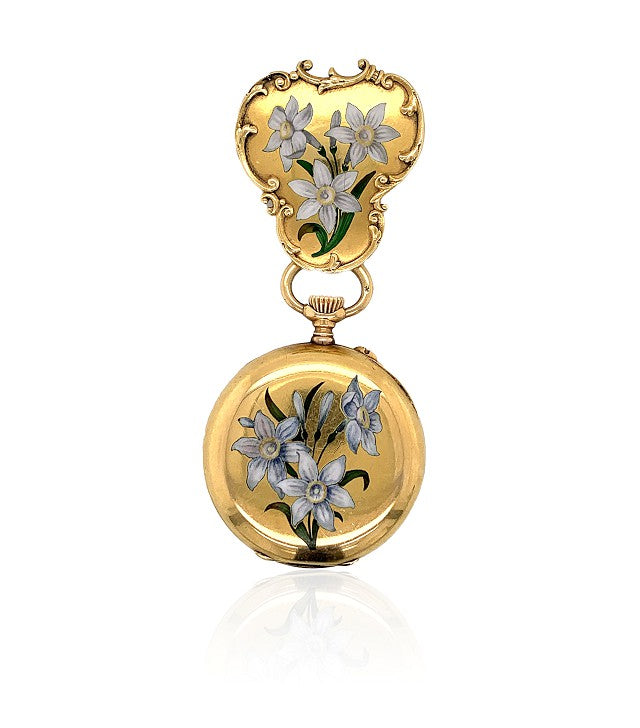
En tremblant, which means to tremble in French, is a term that describes jewelry that was created to “tremble”. During the 1700s and 1800s jewelry was made en tremblant by attaching the jewelry component that was meant to tremble to a small coiled spring, known as a trembler, which caused it to sway as the person wearing the jewel moved. This technique was used primarily on brooches especially those with a floral motif, butterfly or dragonfly wings.
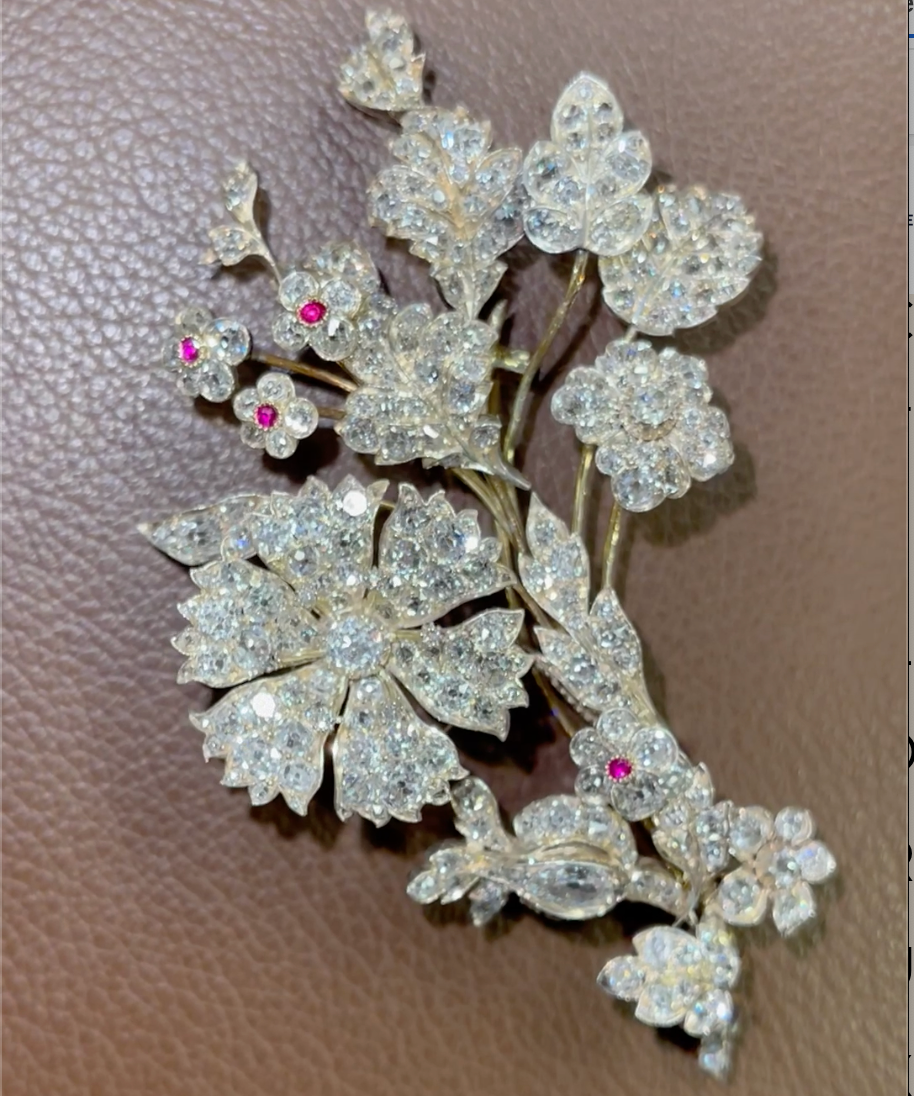
An era is a long and specific time period. In jewelry history it is often defined by ruling British monarchs, such as Georgian, Victorian or Edwardian, decade, or a design movement, such as Art Nouveau or Art Deco.
Photo: Queen Victoria, Winterhalter, 1859 courtesy, Wiki Commons, Public Domain.
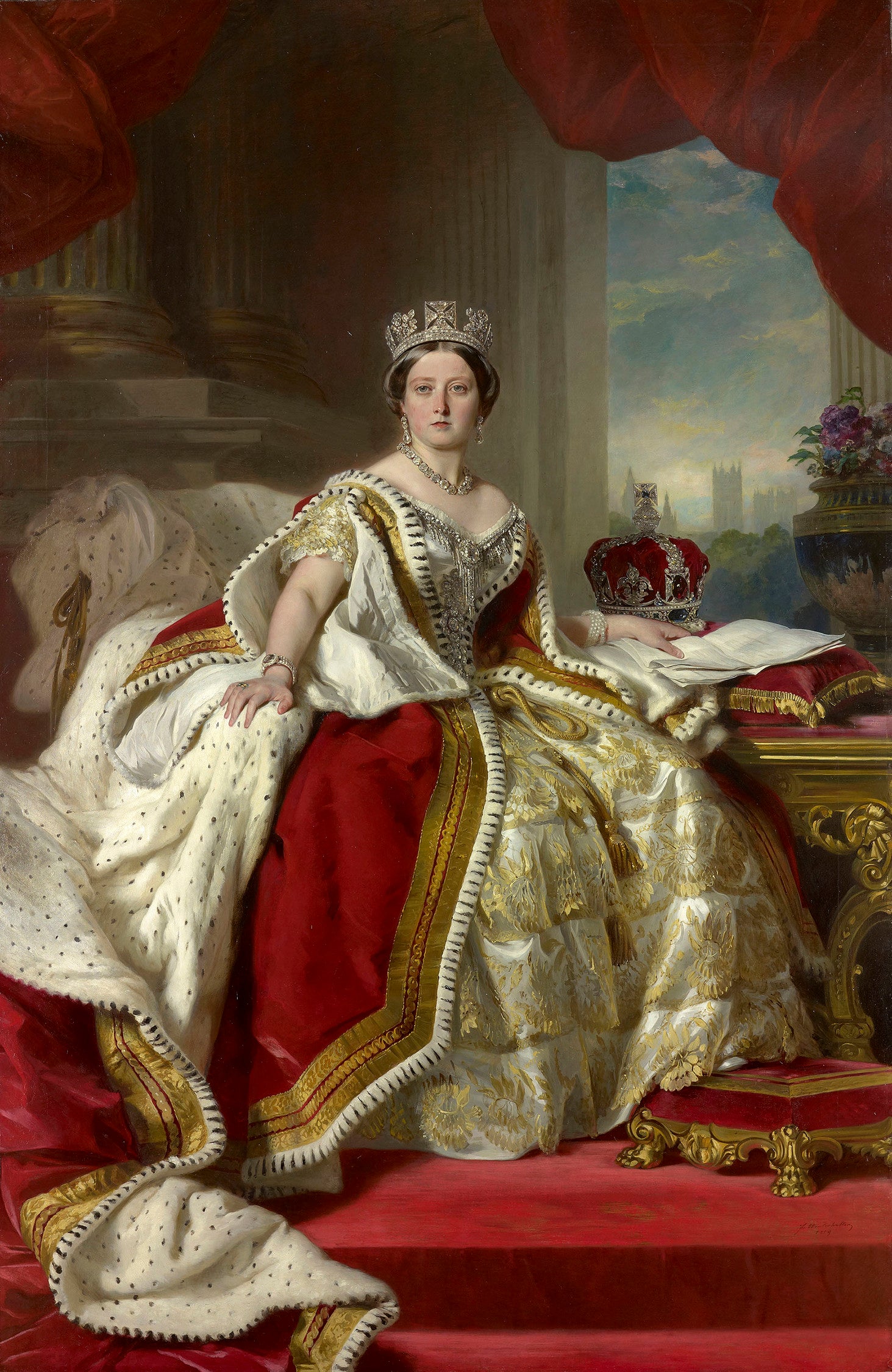
Any piece of jewelry that has been previously owned, regardless of when it was made, or how long it was owned, is considered estate jewelry. If you buy a piece this week and sell it next week, it’s still estate jewelry because it has already had one owner.
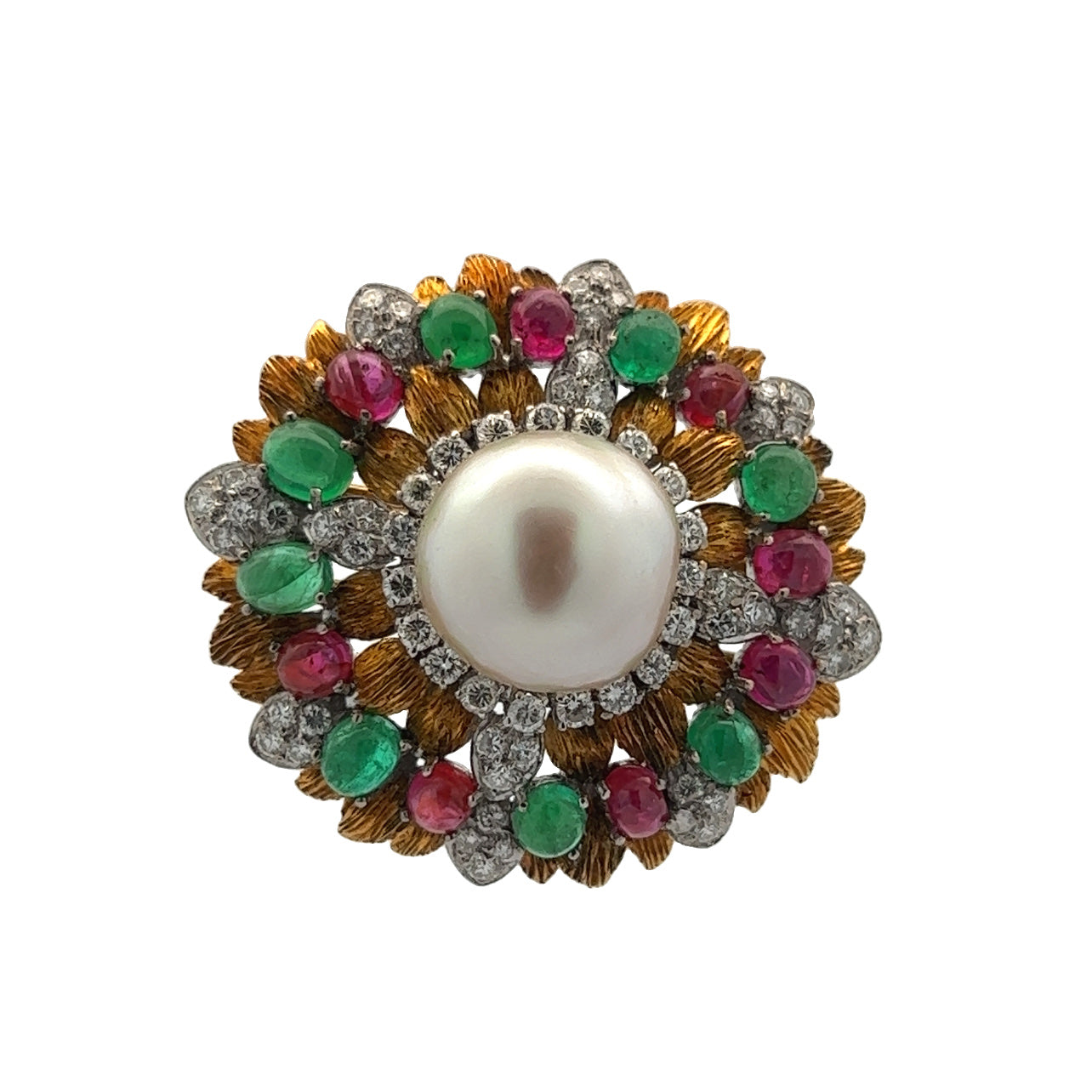
An eternity band has gemstones going all around the ring, sometimes the gems will go half-way around a band so that gems are showing on the top only. Sometimes called an anniversary band, or anniversary ring.
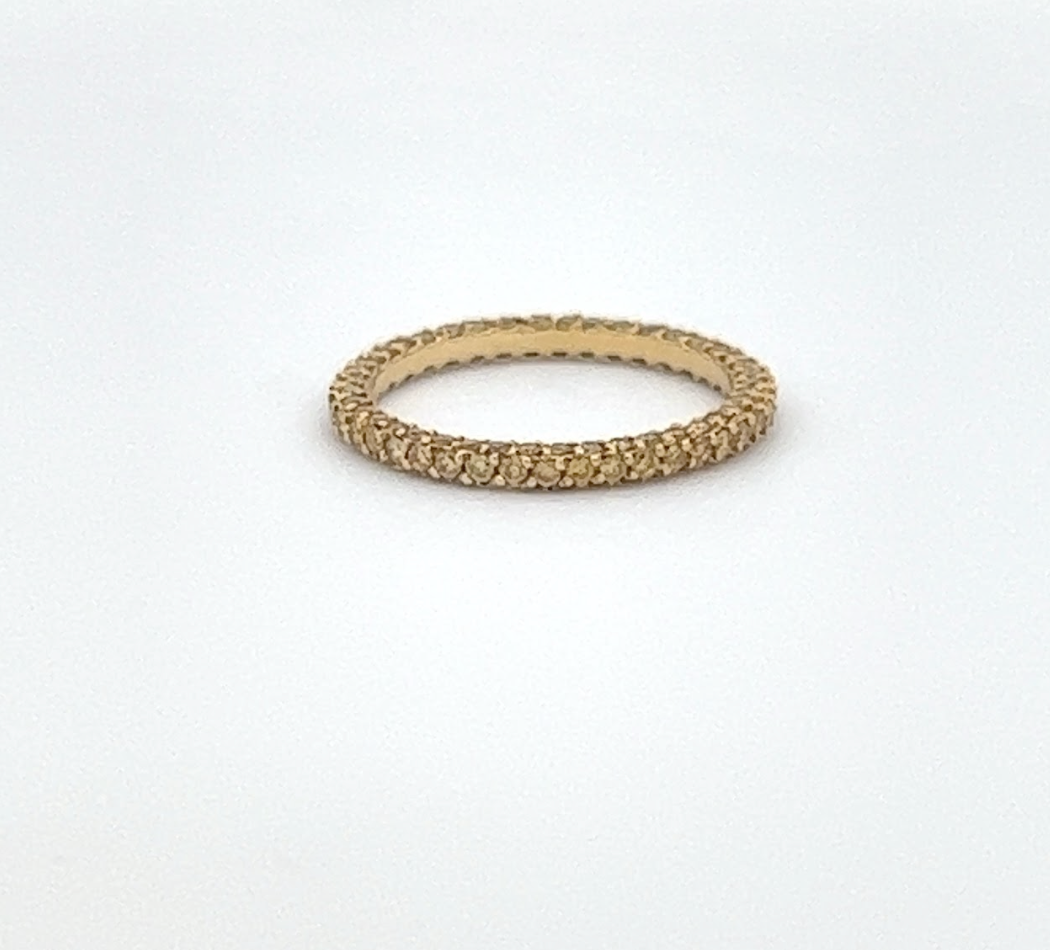
F
The earliest brooches, were called “fibula” and were generally made of thorns, sticks or flint. Their origins can be traced back to the Bronze Age (approximately 3300 BCE to 1200 BCE). The first fibula’s were straight and were stuck through fabric, but later fibula were similar in form to a modern safety pin. As the years passed iron became more readily available ushering in the Iron Age (approximately 1200 BCE to 1000 BCE). During the Iron Age fibula morphed from being strictly functional to having some sort of design and decoration. By the Middle Ages, fibula were replaced by the advent of other types of closures for garments.
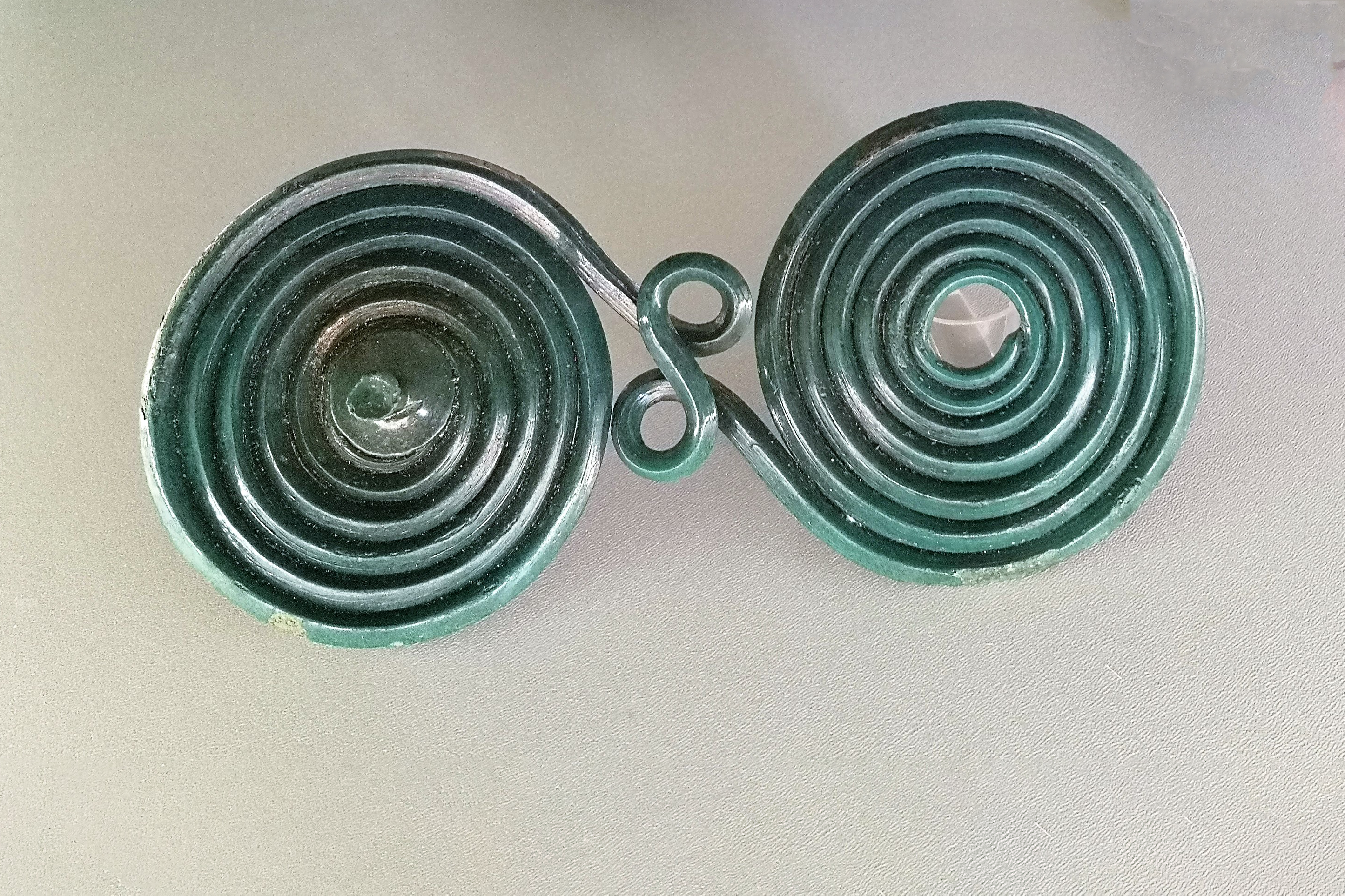
Filigree is a type of metalwork that is used in jewelry. It is created by shaping very thin, delicate gold, platinum or silver wires into a design. To complete the piece, the wire is soldered together, or to the surface of another object. It is a labor intensive process that requires a great deal of skill to create. It is often found in Georgian, Victorian, Edwardian and Art Deco jewelry. It is an art form that goes back 5,000 years to the ancient cultures of Greece, Rome and Mesopotamia.
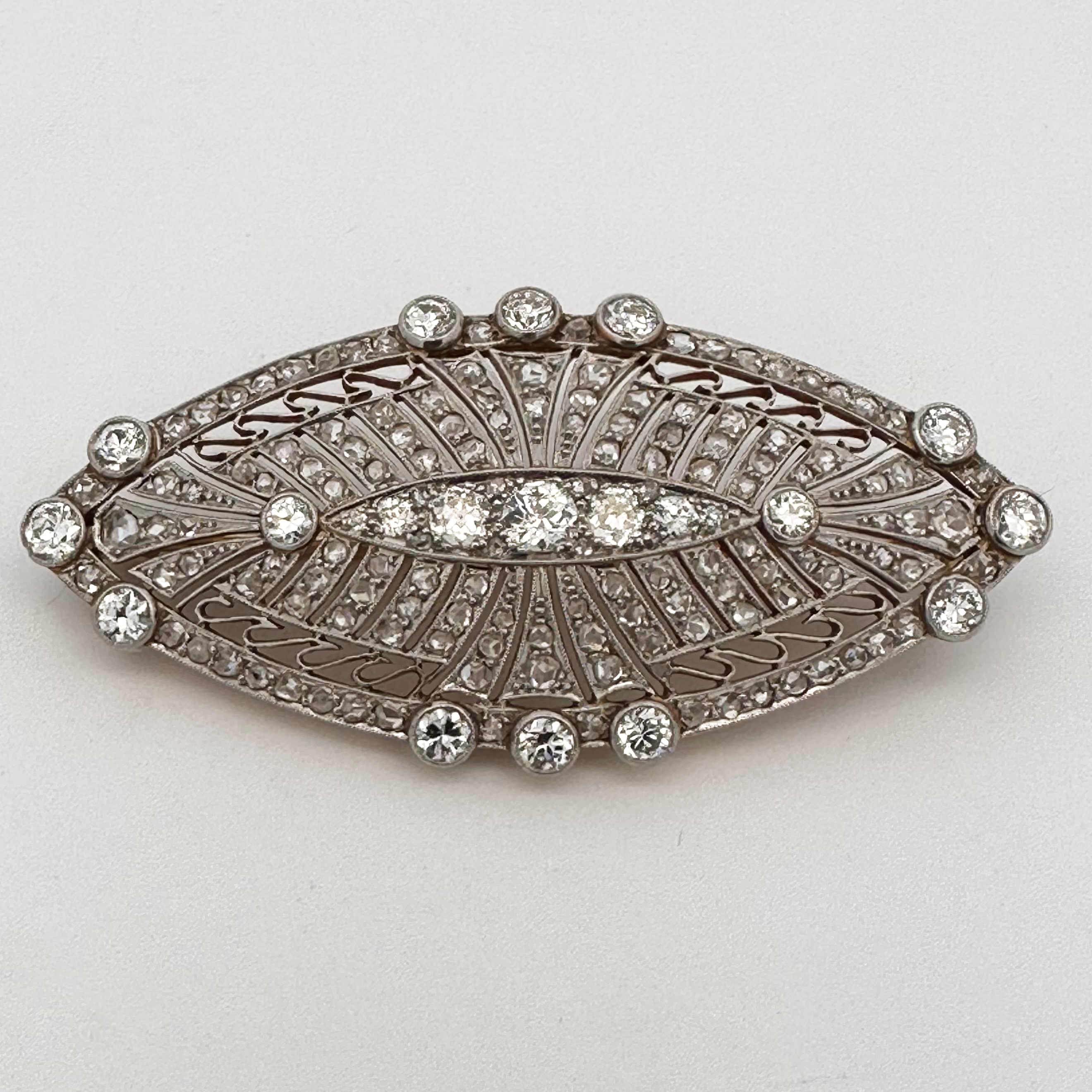
In a flush setting the gemstones are recessed directly in the metal so they are flush with the surface, which is why this type of setting is called a “Flush Setting”. The metal is then moved around the stone to hold it in place. A flush setting is also known as a Gypsy Setting.
Photo: Courtesy, Spectra.
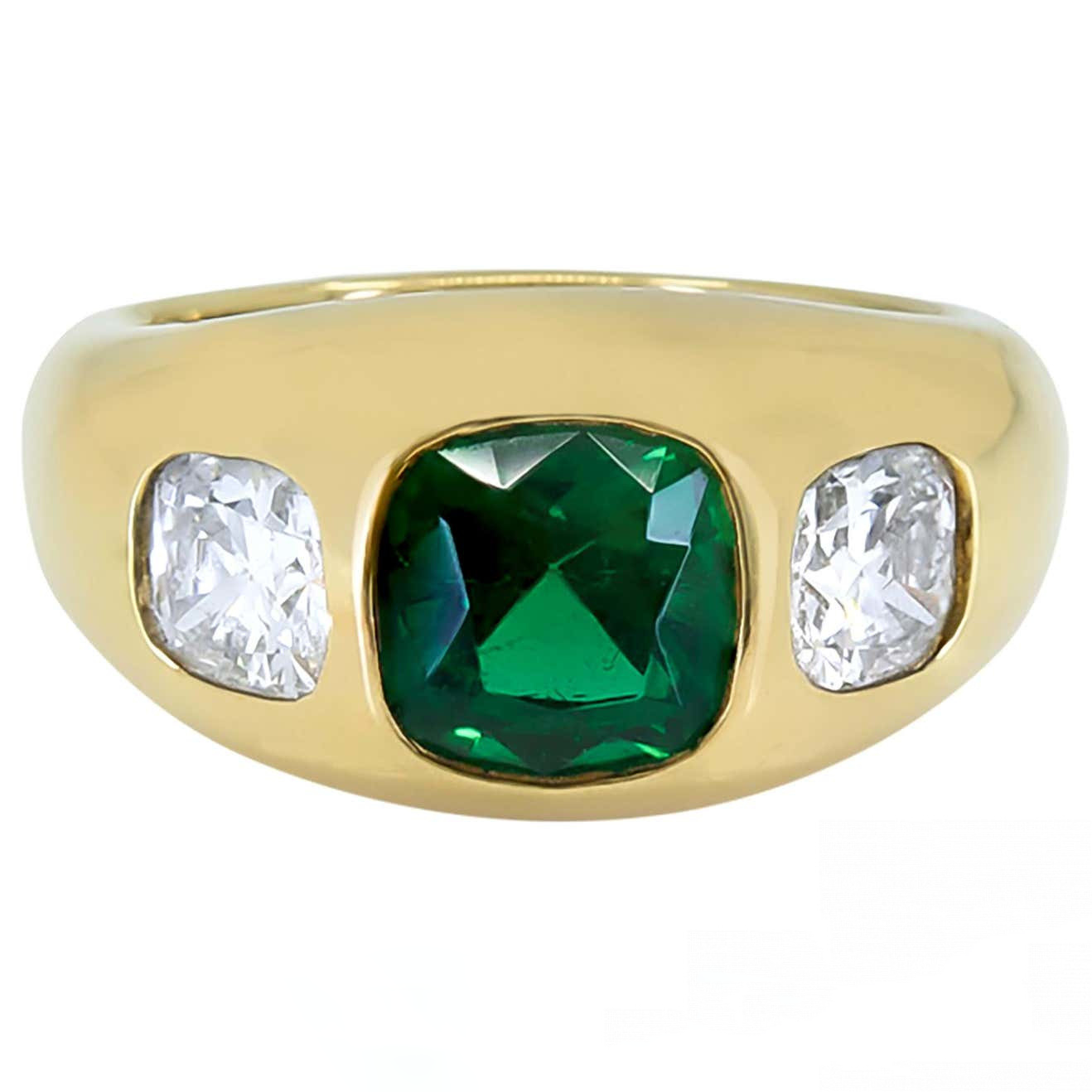
Diamonds and sometimes colored gemstones were “foil-backed” or “foiled” in the Georgian and Victorian eras to make the diamonds brighter or to enhance the hue of colored gemstones. The process involves backing the stone with a very thin metallic, or non-metallic, sheet. Sometimes the foil was colored to amp-up the color of the gems. Foil-backed gemstones are almost always in closed back settings to protect the foil from being damaged. A rather fragile process, foil-backing can be easily damaged by exposure to water.
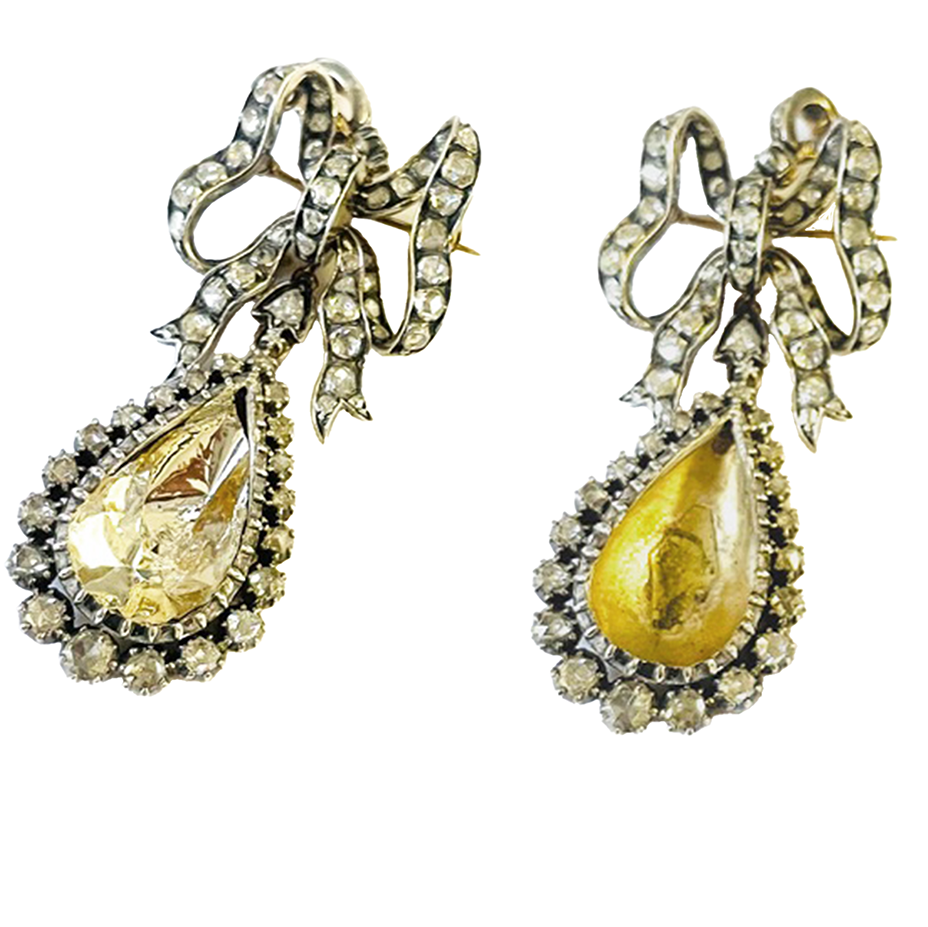
French cut stones may be square or rectangular in shape. Developed in the 1400s, they are identified by a cross seen in the crown facets. The cut was very popular in the 1600s because of its sparkle and then again in the Art Deco era when the simple geometry of the cut was complementary to the sleek, linear designs of that era.
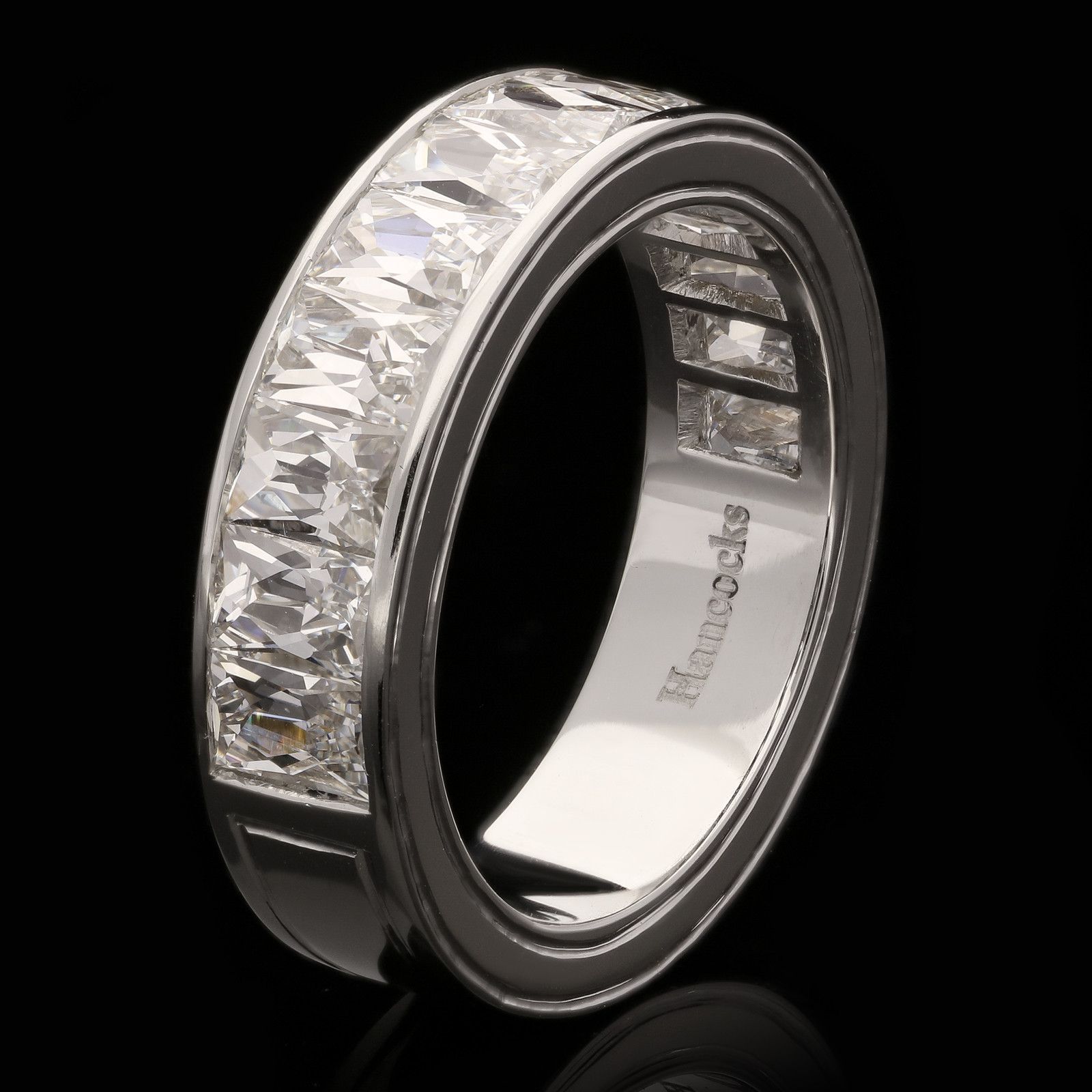
The 1950s (1950-1959) was an era of unprecedented prosperity in the United States. The war was over, people had come home from overseas and life was much more joyous and lighthearted. The 1950s were boom years, a housing boom and a baby boom were well underway. Both of which gave rise to suburban housing developments that were part of the “American Dream”. Jewelry styles were formal for night, with matching sets, big, colorful pieces, textured gold, diamonds and platinum. For daytime the look was more subdued with a simple pearl strand and pearl earrings as the standard.
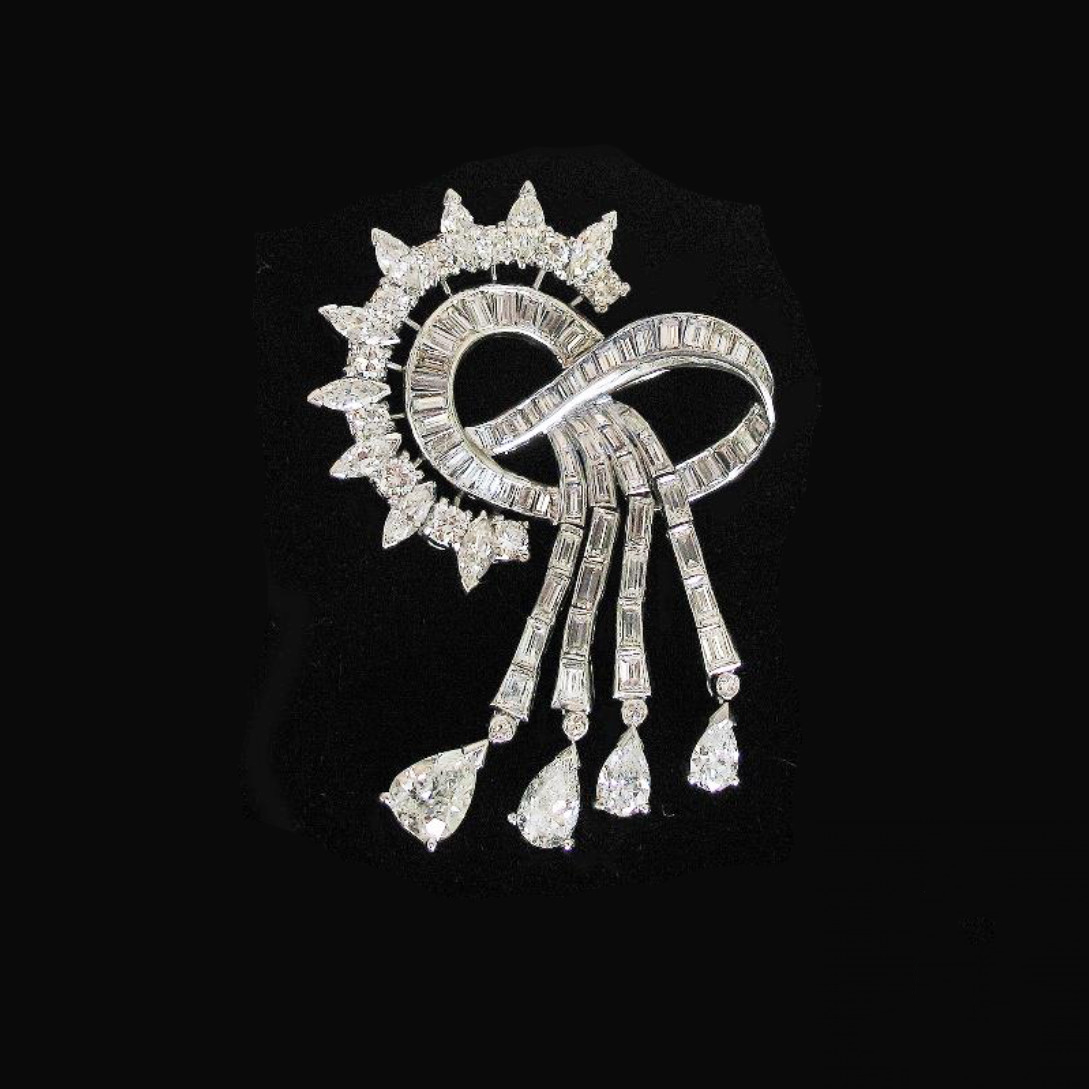
G
The Georgian era (1714-1837) covered most of the 1700s and the early years of the 1800s. The century is called the Georgian era because there were four King Georges (I-IV) during that time. King George IV died in 1830 and with no children as heirs to the title, his brother William IV ascended the throne. Most historians agree that the Georgian era ends when Queen Victoria took over the throne in 1837, however some historians select 1830 as the end of the Georgian era as George IV was the last George of that time period. While much of Georgian jewelry is informed by British art and culture, the aesthetic was global. Some popular jewelry items and looks for the Georgian era are parures, hair ornaments, girandole earrings, pendoloque earrings, closed back settings, enameling, subdued for daytime, diamonds for nighttime.

Girandole earrings have a large stud with a central motif that was often a bow with three pear-shaped gems dropping from the center and sides. This was a popular style in the Georgian era.
Photo: Courtesy, Kentshire Gallery.
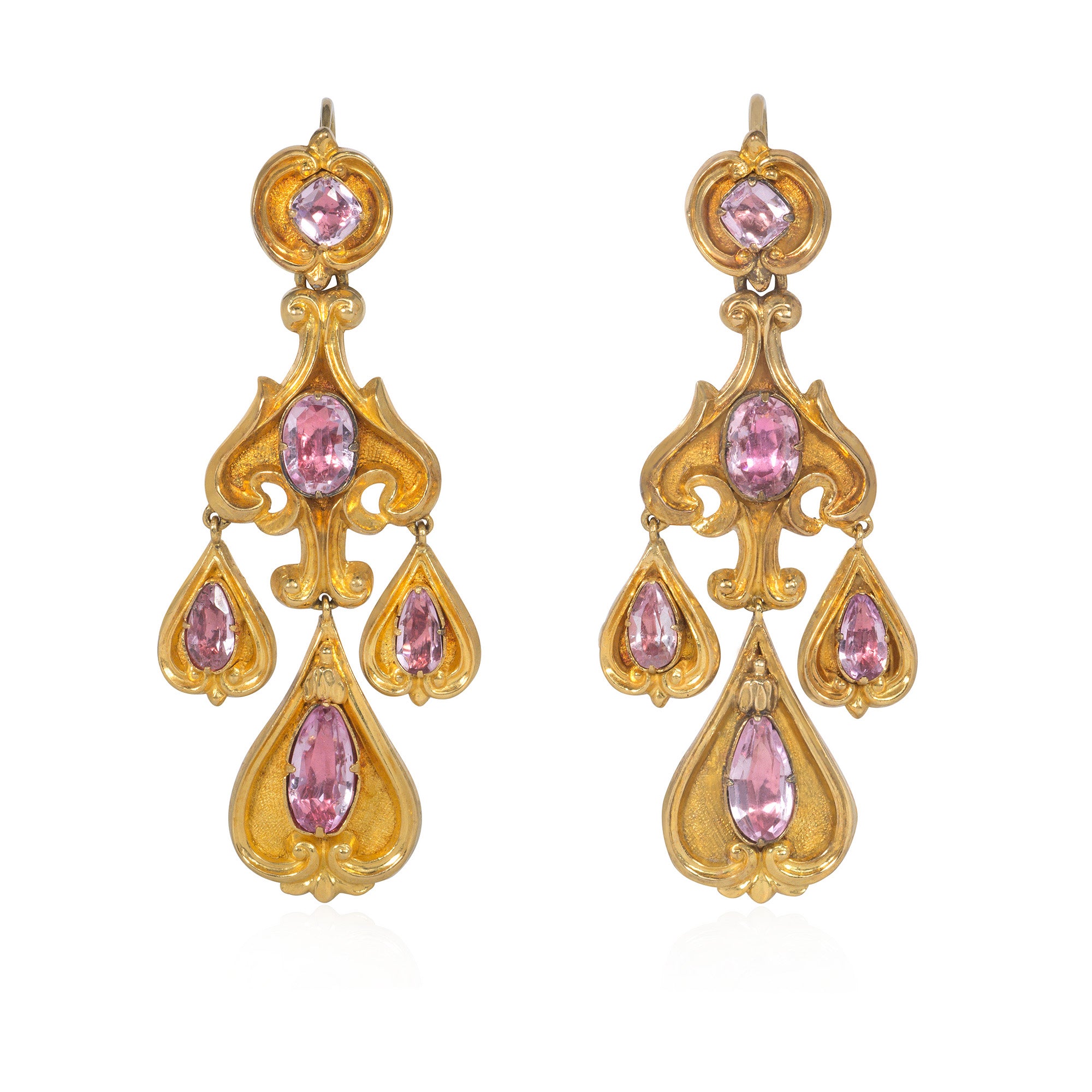
A Golconda diamond refers to a stone found in the Golconda mines in India, which was the primary source of the world’s diamonds until the 1700s. The mines are now depleted and closed. Today the Golconda region of India is known as Hyderabad. The diamonds that came out of the Golconda mines are especially transparent, pure and sparkling because they are mostly type IIa which means they have no traces of nitrogen, hydrogen or boron, making them particularly pure. Because these diamonds are so transparent, in a way that diamonds from other places are not, they have a certain whiteness to them and a soft, watery quality, which is due to the way light moves in the stone. The Hope Diamond and the Koh-I-Noor Diamond are examples of Golconda Diamonds.
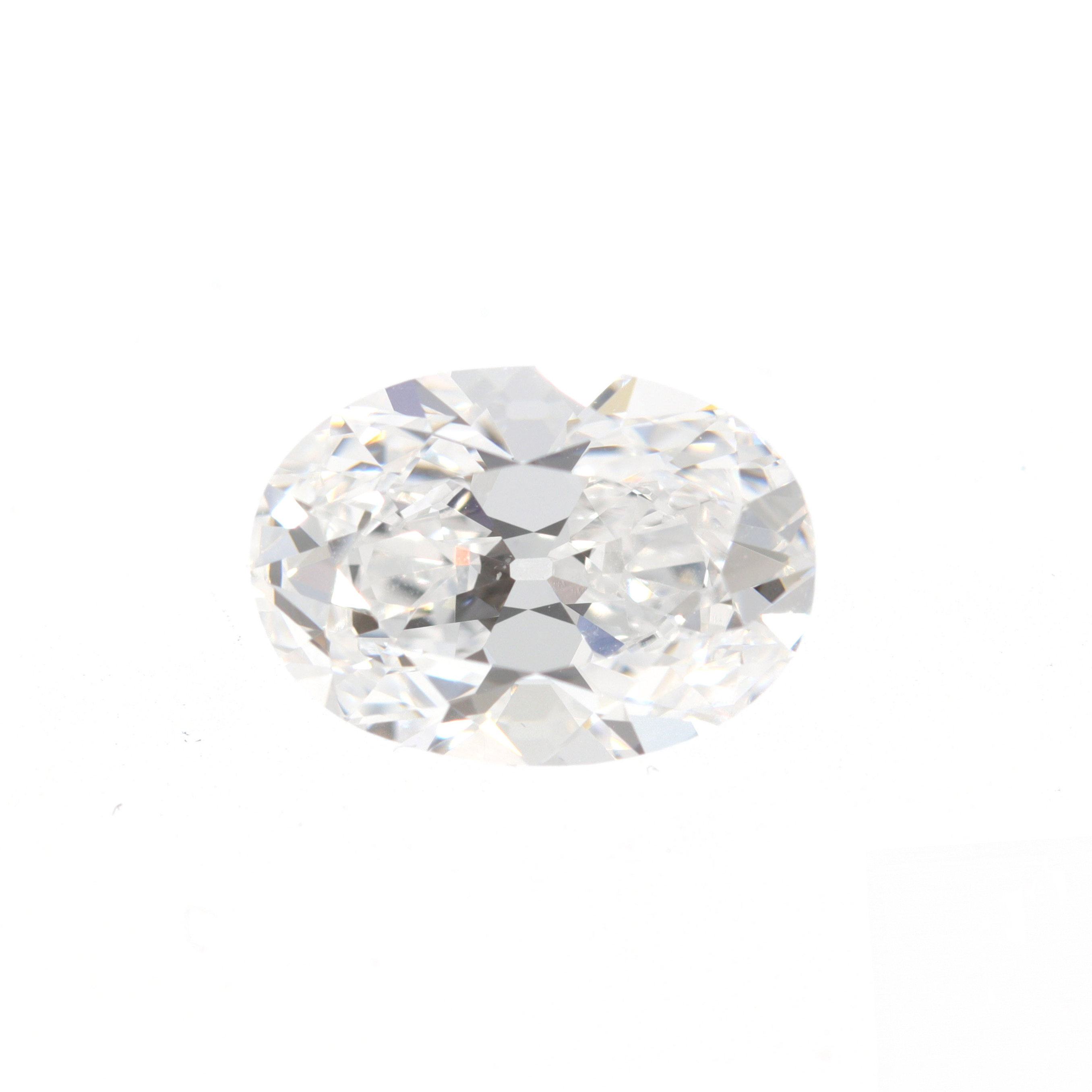
Gold is a precious yellow metal used in jewelry. It is measured in karats, a unit of measurement indicating the purity of gold in a piece. Pure gold, or 24-karat gold, is very soft and malleable and is not used in jewelry as it would not stand up to daily wear. Instead, gold is alloyed, which means it is mixed with other metals, to make it stronger.
The starting point for mixing alloys is 24-karats or pure gold, when another metal is added it changes the purity of the gold. So if a piece is stamped 18-karat gold, that means that it is 18 out of 24 parts gold and 6 parts alloy; 14-karat means 14 out of 24 parts are gold and 10 parts are alloy.
There is also 22-karat gold which is very high gold content and is usually favored in Asian countries. There is also 10-karat gold, but it is not used often. In vintage jewelry you will also find 15-karat gold, which was used between 1854 and 1931 in England and 9-karat gold which was also used in England during those years.
Different metals are used to make an alloy. Copper, silver, palladium, manganese and/or nickel. The amount of alloy used will affect the color of the gold. When you compare 18-karat yellow gold to 14-karat yellow gold, you will see a big difference in the color. The higher karat gold will have a richer, deeper yellow color, while the lesser karat gold will be lighter in color.
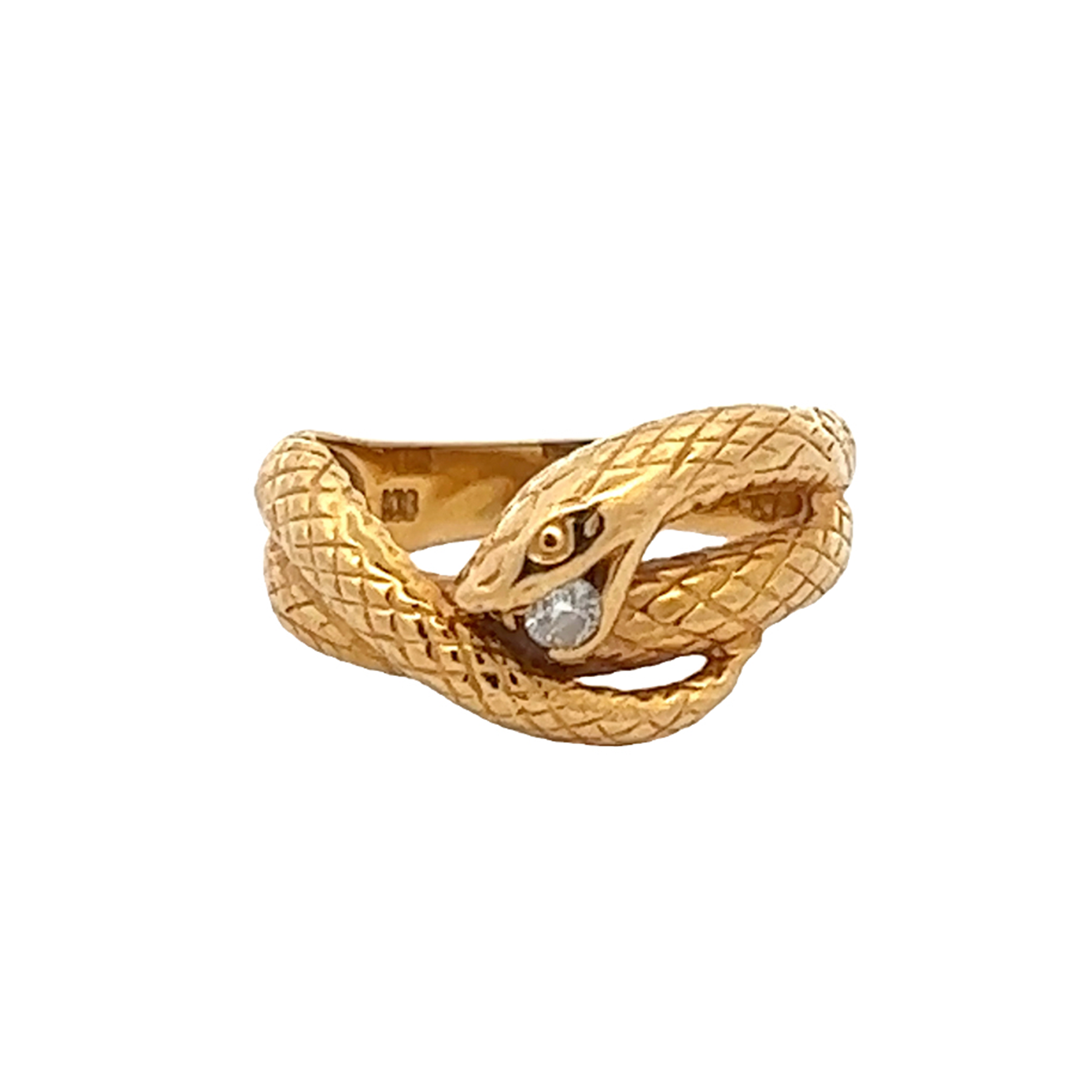
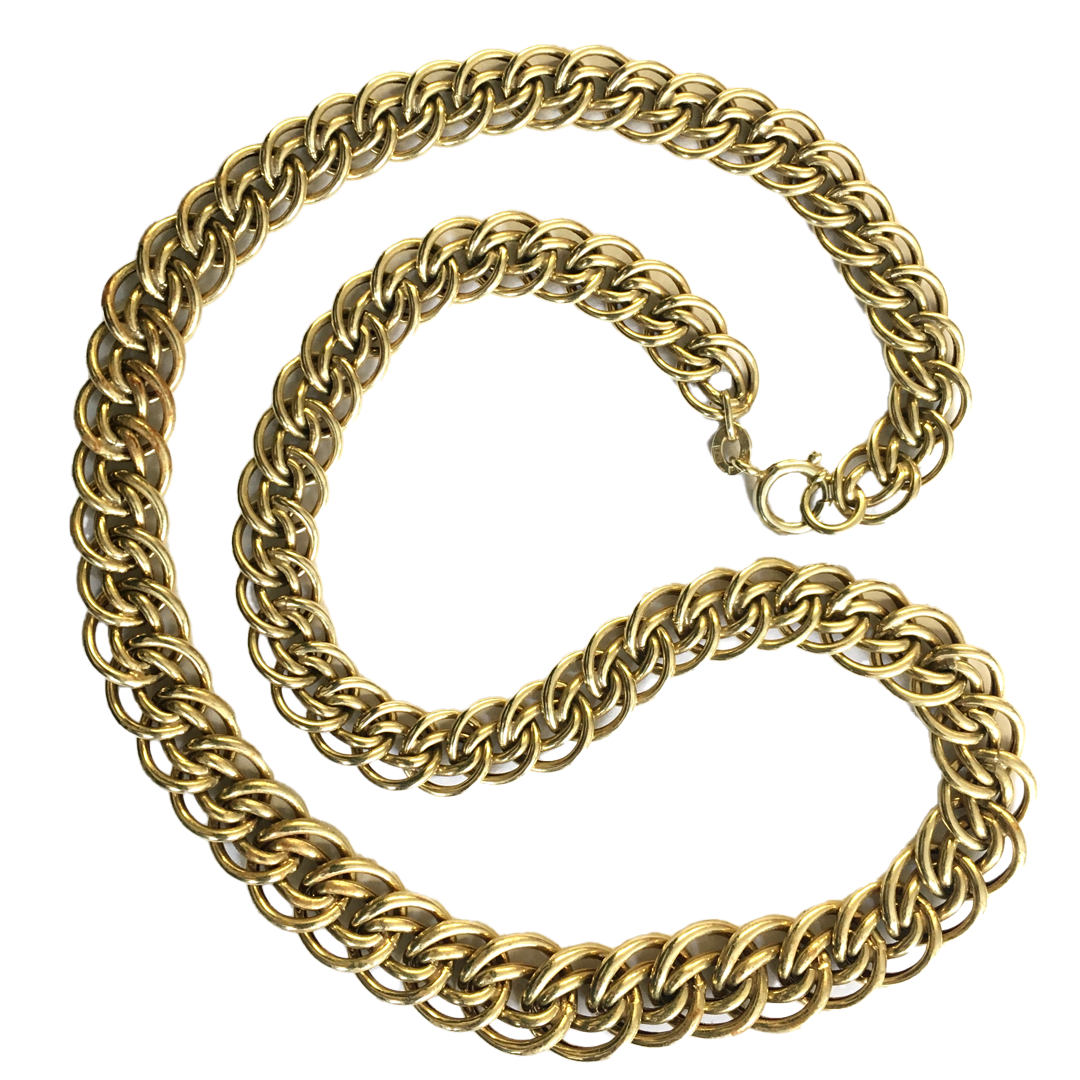
Granulation is a technique where tiny gold spheres are attached to a plain gold surface to create a pattern or frame on a piece of jewelry. The use of granulation began around 2500 B.C., but it was the Etruscans who really made the style famous with their intricate and detailed designs. The technique enjoyed a resurgence in popularity during the Victorian era, when Etruscan Revival jewelry was favored because of archeological digs that were going on in Italy at the time.
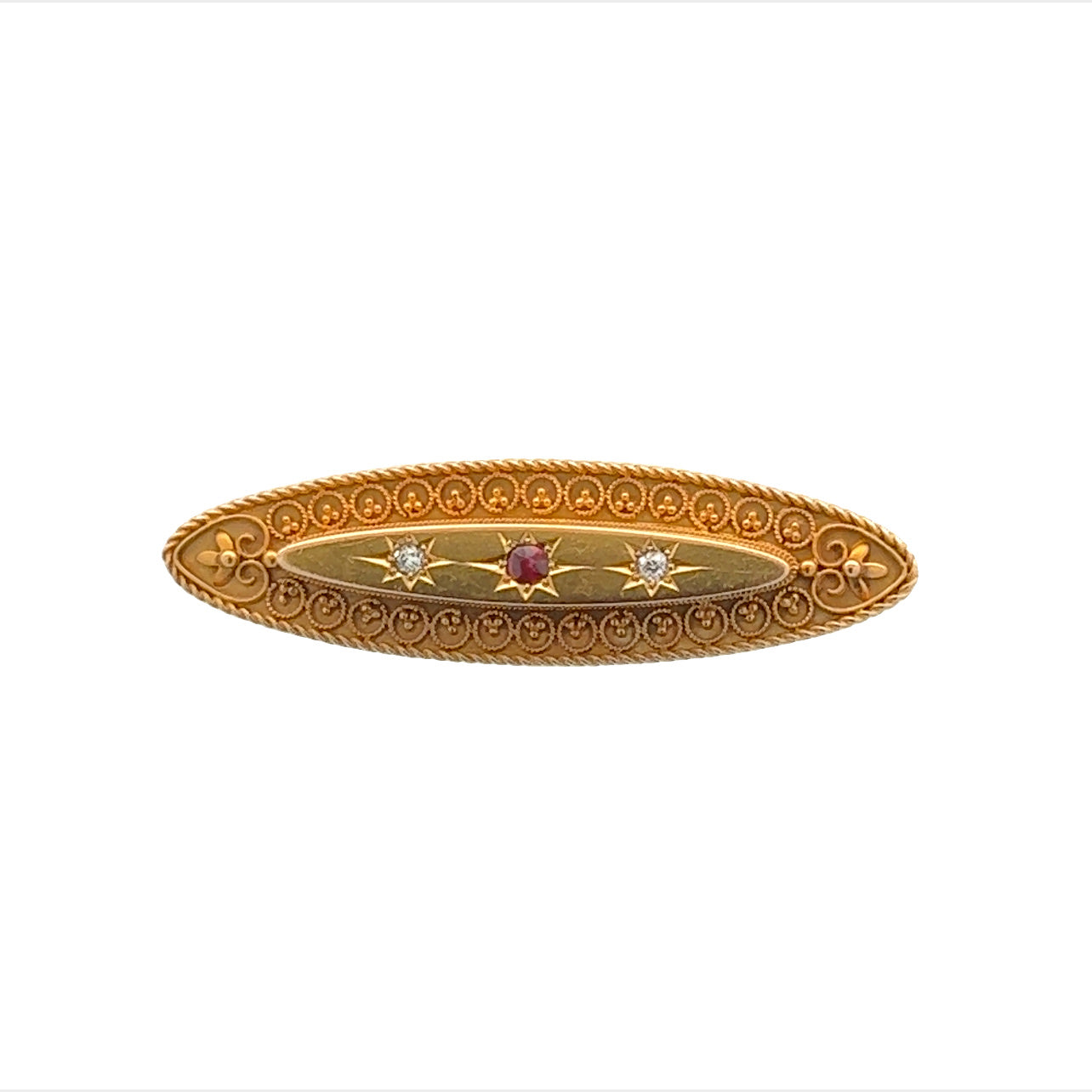
Guilloché is a term that is used when engraving and enameling are paired. It is a technique that started in the mid 1700s when silversmiths used ornamental lathes that were mechanized to create repetitive and intricate patterns in metal. Waves, ripples, sun rays and lines were popular motifs. The metal surface was covered with enamel and then heated and polished to a glass like shine allowing the engraved metal pattern to show through the enamel, creating guilloché.
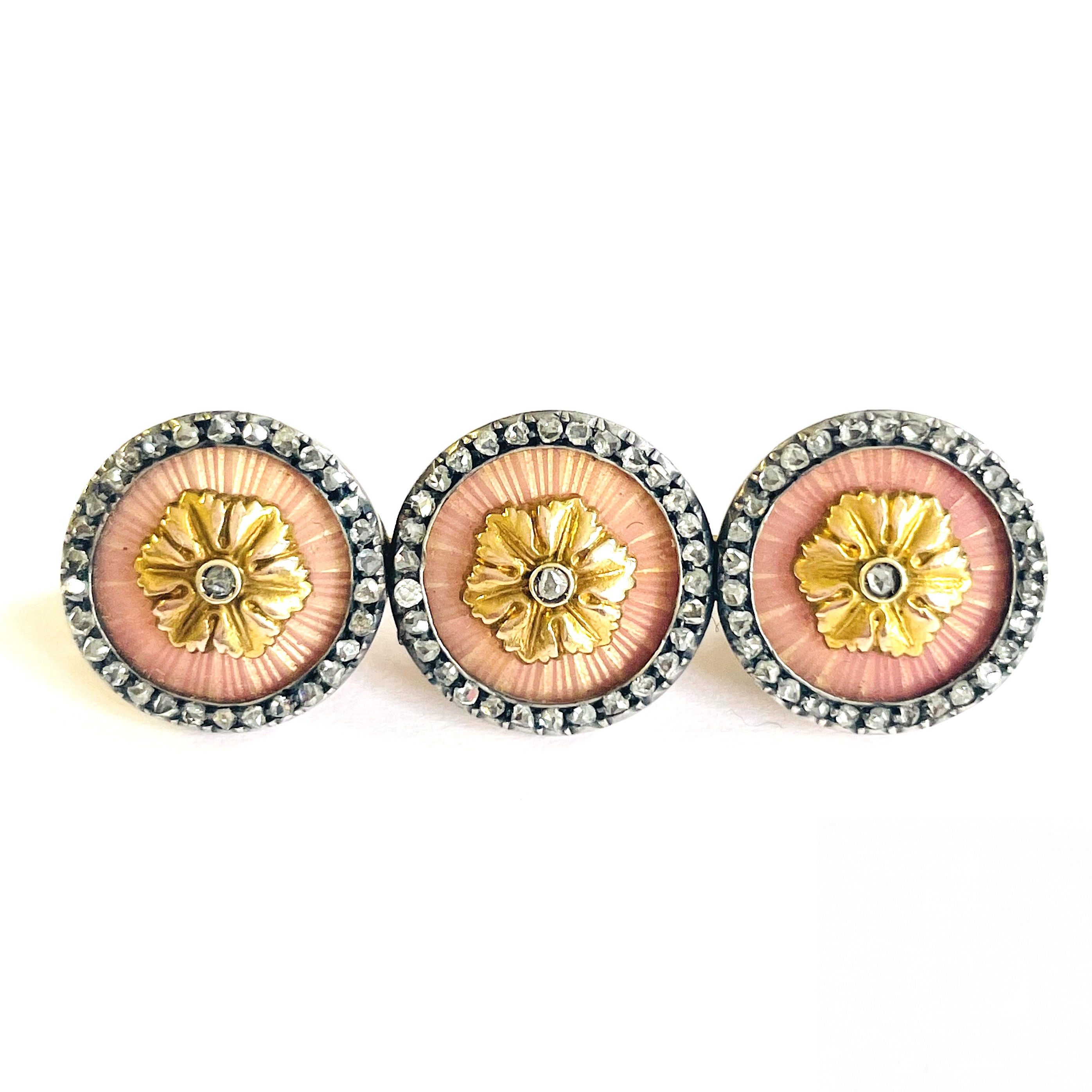
Gutta Percha is a dark brownish-black rubbery substance made from the resin of trees found in Malaysia and other parts of Southeast Asia. It is molded into various shapes and was popular in the late 1800’s when it was used to make mourning jewelry.
Photo: Courtesy, Shalom Bronstein.
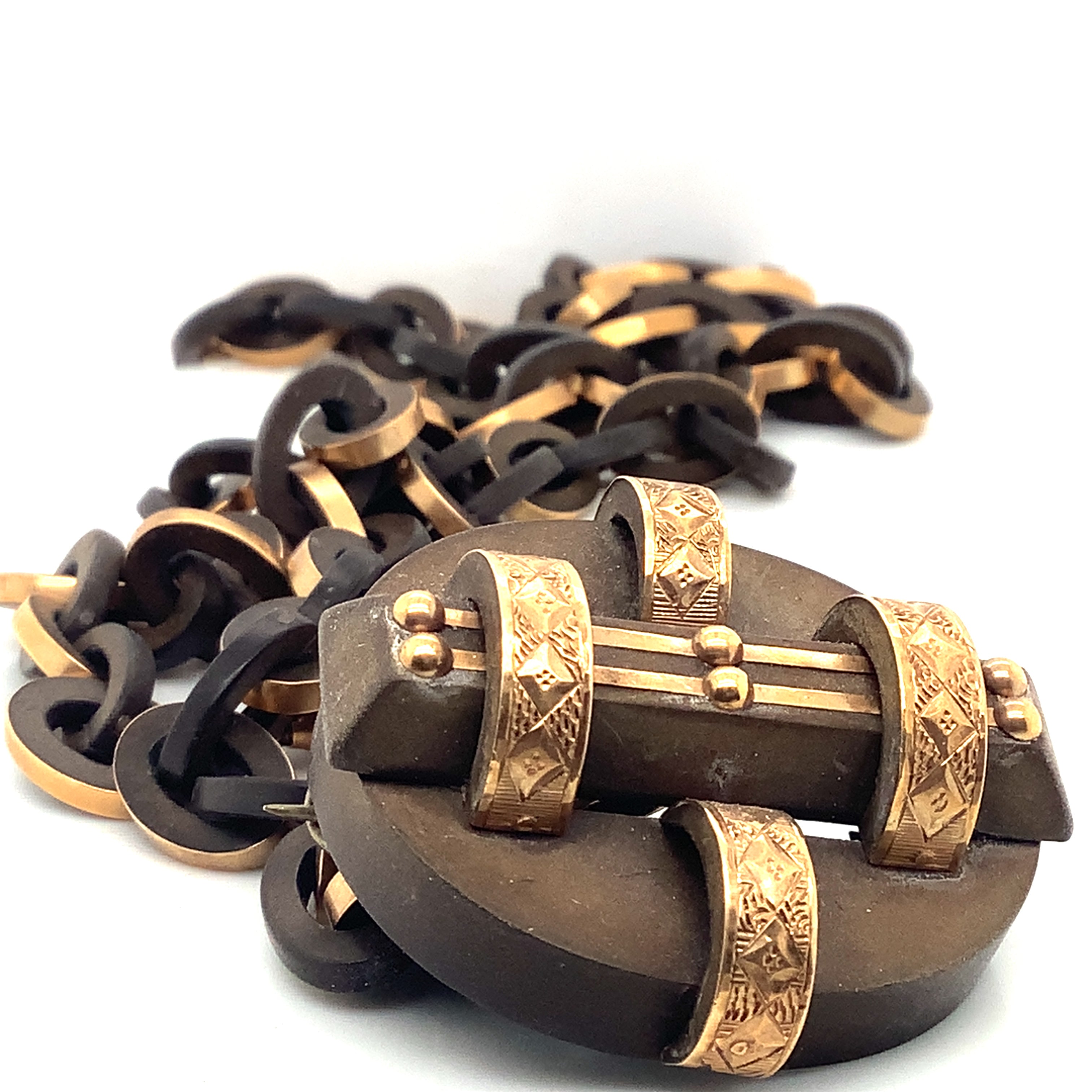
In a gypsy setting the gemstones are sunken directly in the metal so they are flush with the surface, which is why this type of setting is also called a “Flush Setting”. The metal is then moved around the stone to hold it in place.
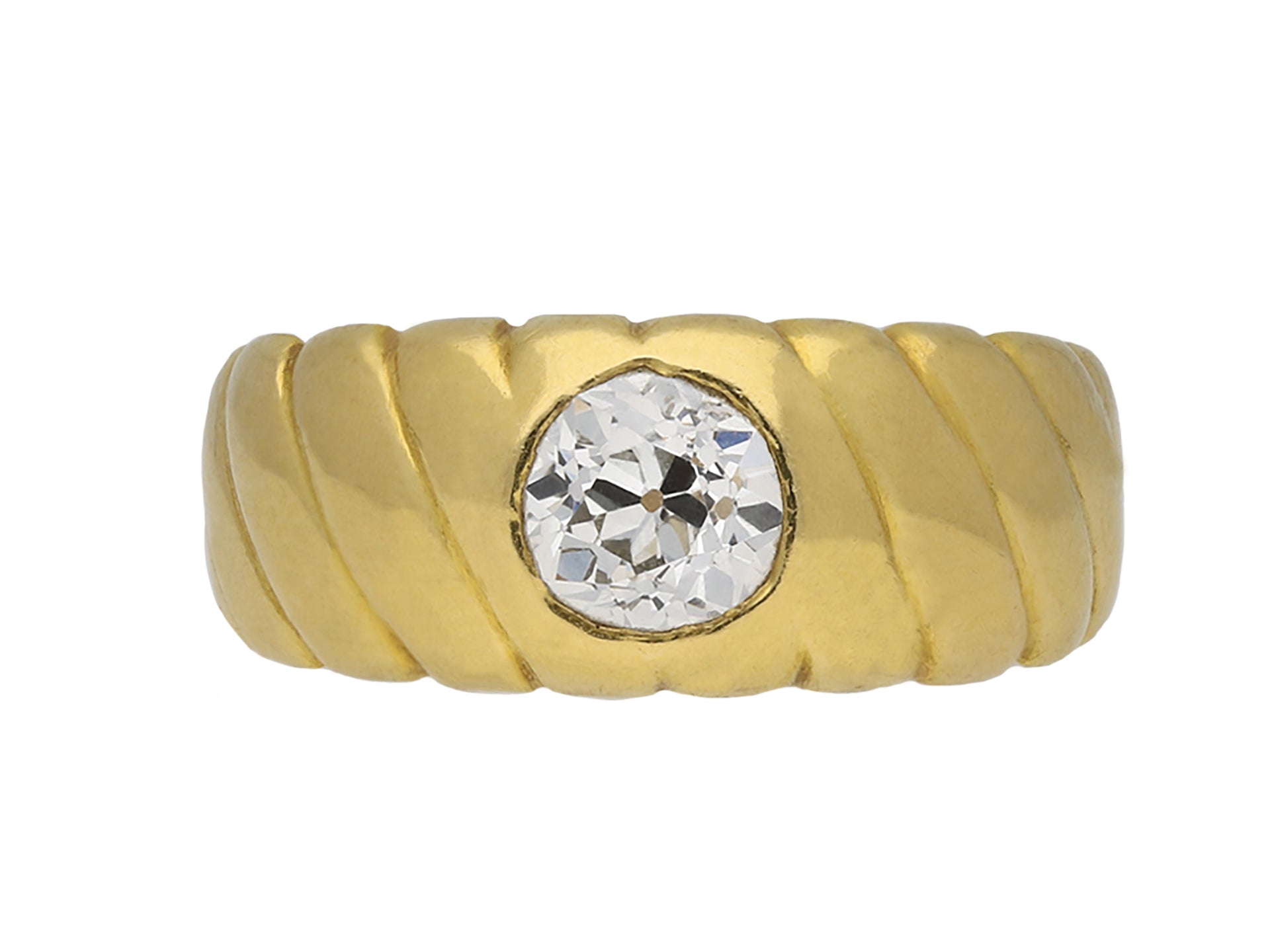
H
A halo ring is a center stone surrounded by a frame of diamonds or other gemstones. If there is a second frame of gems around the center stone, it is called a “double halo”. Halos have been a favorite style in many eras, but in the early aughts, designers began making engagement rings in this style and it became wildly popular.

Hoop earrings are a circular earring that is shaped like a hoop. Sometimes a hoop is shaped like an oval, triangle or square. They can be all metal or embellished with gems or charms.
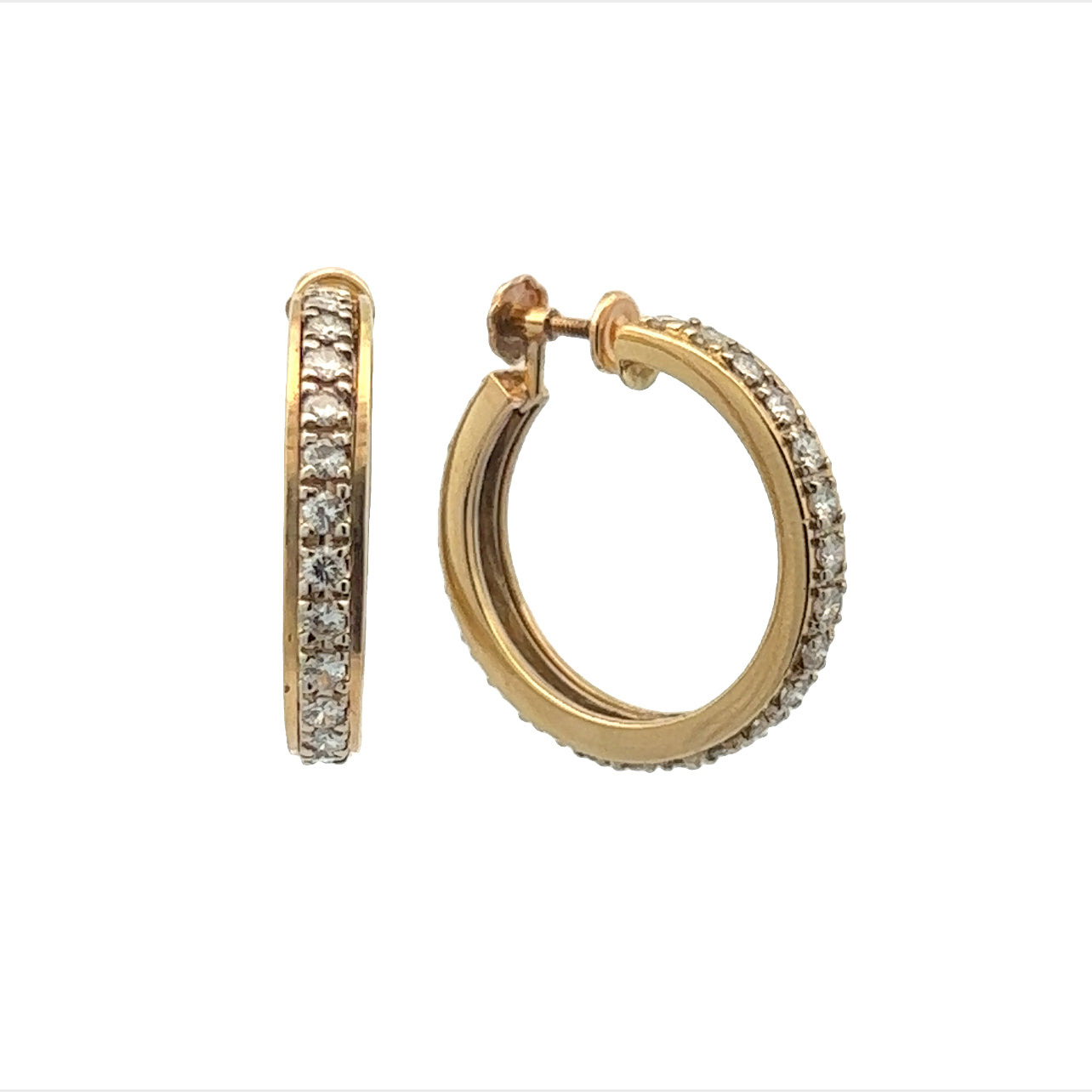
Huggie earrings, often referred to as huggies, are a small hoop style earring that “hugs” the ear lobe. Huggies can be all precious metal or embellished with gemstones. These earrings became very popular in the 1990s as an easy item to wear to work.
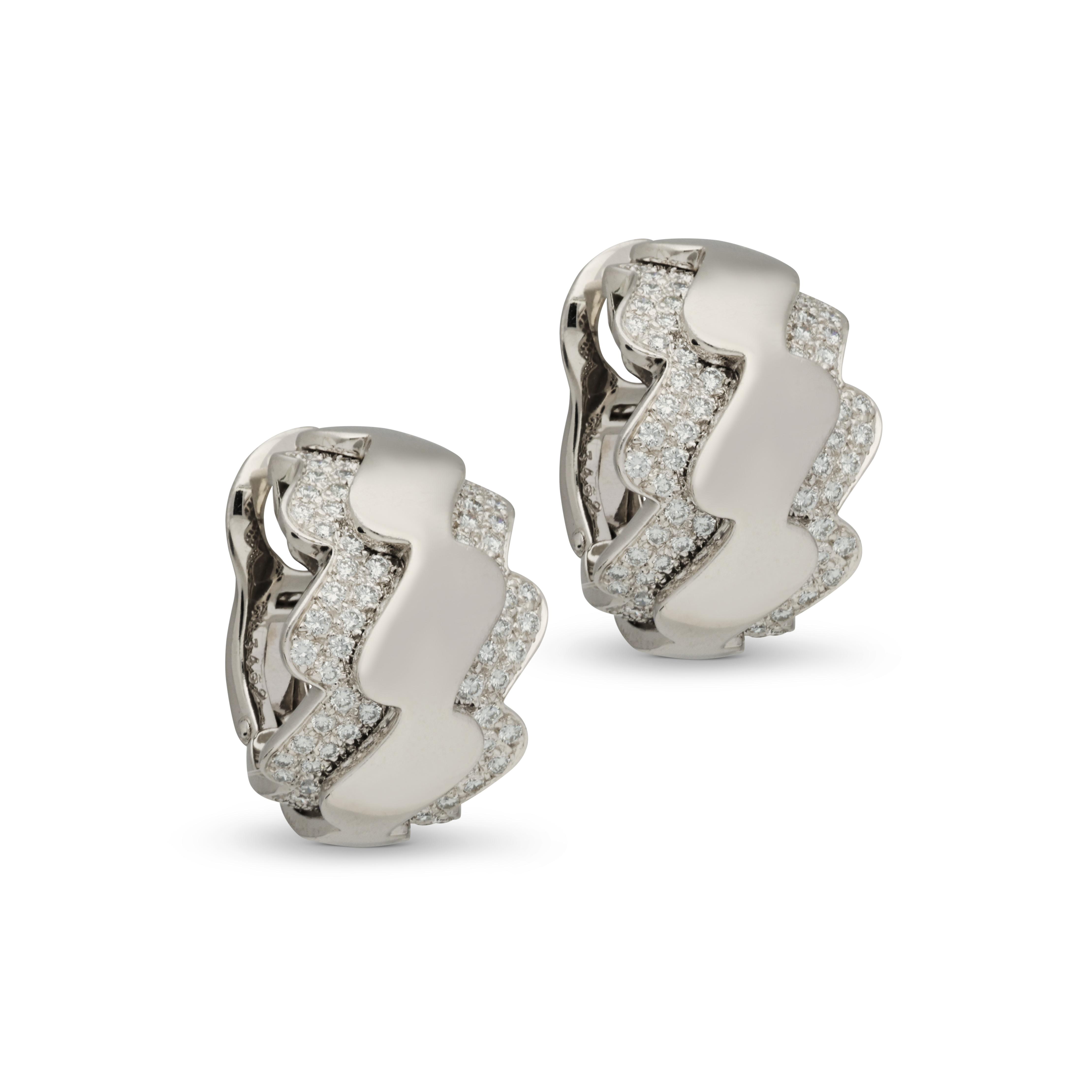
I
Imperial topaz, which ranges from pink to peach and orange to golden brown is sometimes found in antique or vintage jewelry and is quite rare. It got its name from a find made in the Ural Mountains of Russia during the 1800s. The czars owned the mines and so the stone became known as imperial topaz because the gems were reserved for use by the royal family exclusively. Topaz rates an 8 on the Mohs scale of gemstone hardness making it a stone that is durable enough for everyday wear.

An intaglio is an engraving in a hardstone that is below the surface of the stone. Intaglios were frequently worn as rings and used as seals.
Photo, courtesy Hartley Brown.
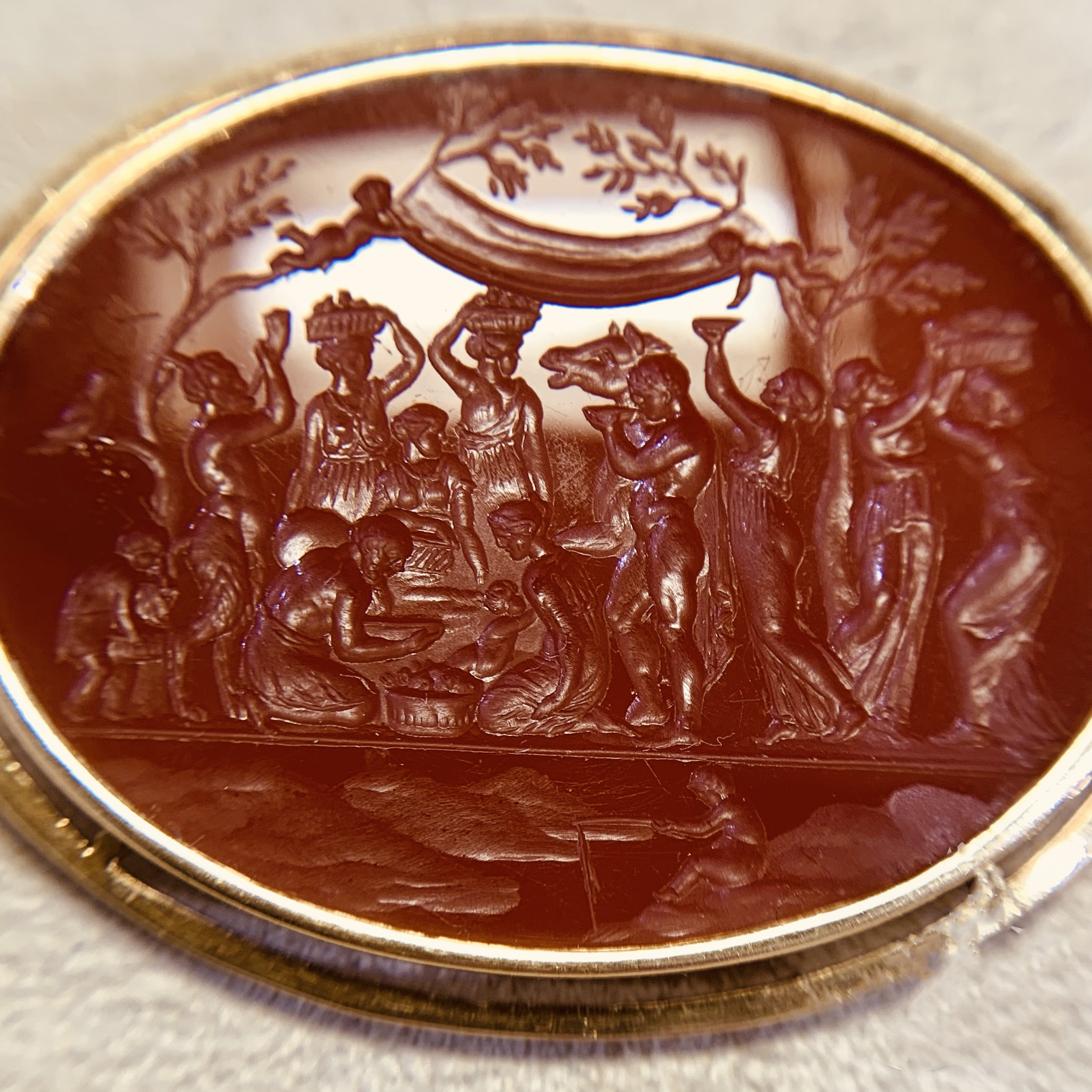
Invisible setting is a process in which gems with a groove on the girdle are inserted in a fine gold net-like frame that holds the stones in place so that no metal is showing and the stones appear to float. There are no prongs or visible metal in this setting. The invisible setting is a very labor intensive process that requires a skilled artisan. Invisible settings were masterminded by Van Cleef & Arpels and in 1933 the firm patented the process. The invisible setting process is used for the rubies in the earrings shown here.
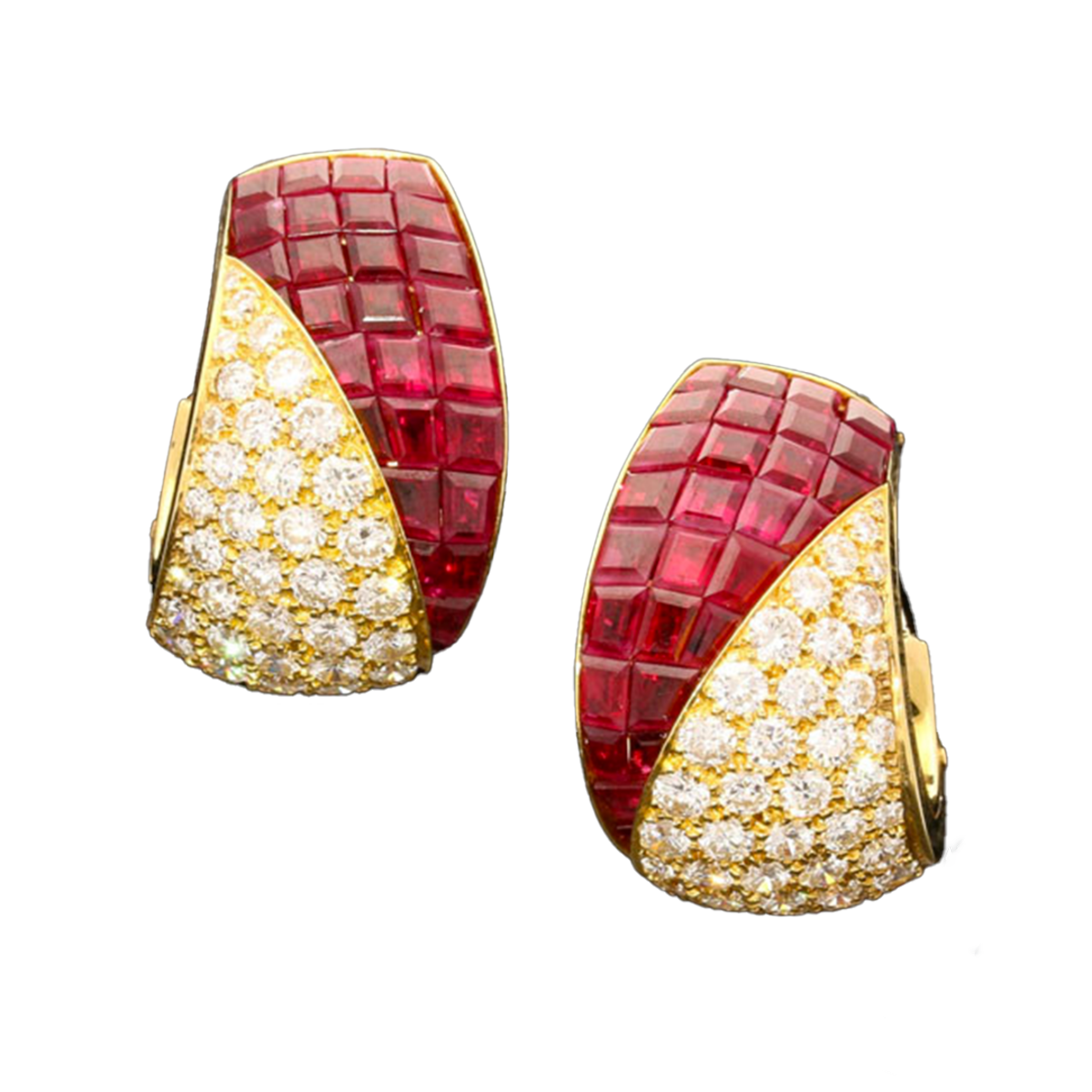
J
A jabot is a ruffle, or lacy piece of fabric, that decorated men’s shirtfronts in the mid 1700s. The jabot pin was used to hold the fabric in place. Jabot pins have a decorative motif on the top and bottom of a long pin. It is placed so that the decorative elements show and the pin itself is hidden by fabric, which separates the top and bottom of the jabot pin. The jabot pin dwindled in popularity as styles changed, but had a resurgence during the Art Deco era when they were again fabricated using designs that were typical of that time. However, the jabot pin was not used to hold a jabot in place it was instead worn on coats, lapels and other apparel.
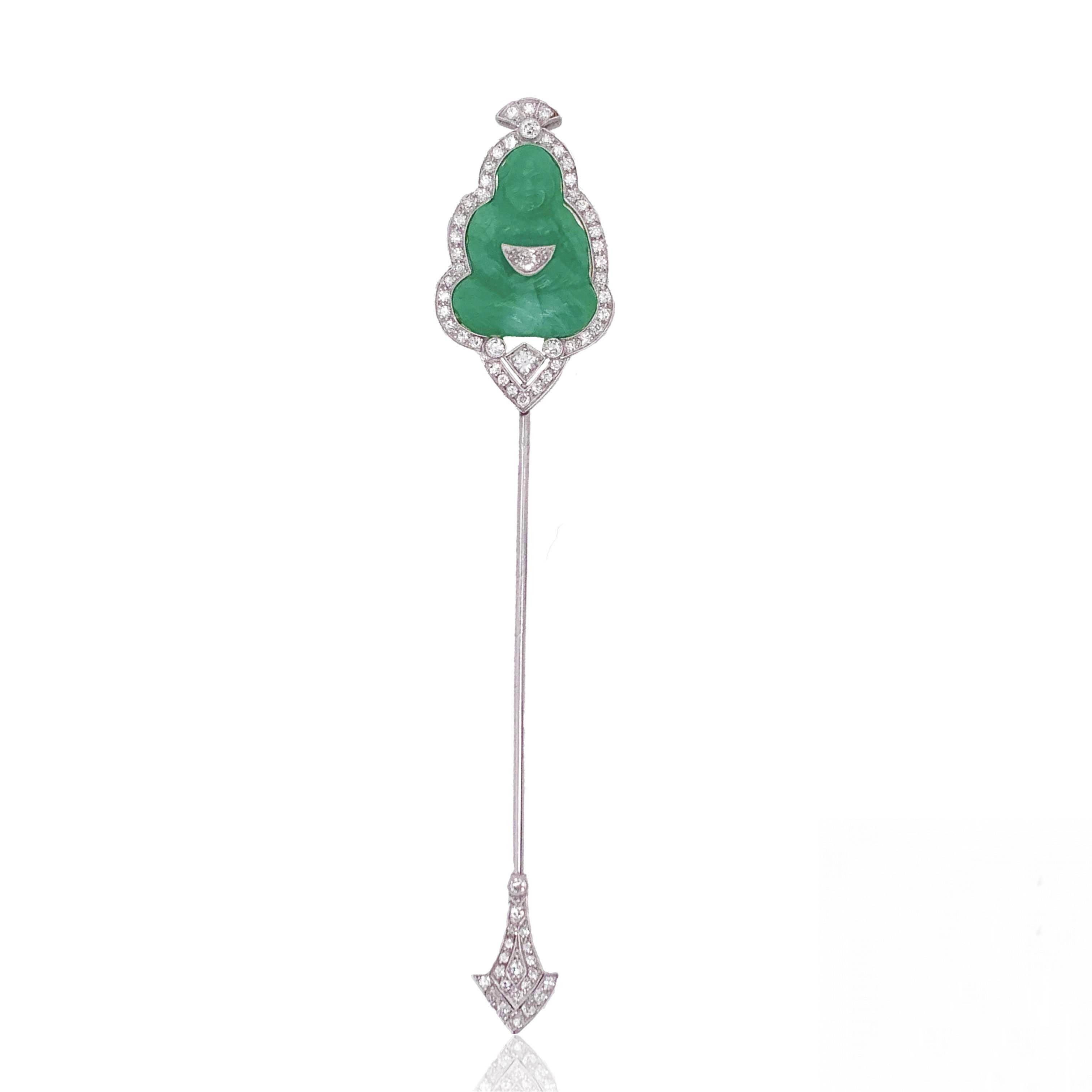
K
Karat is a unit of measurement indicating the purity of gold in a piece. Pure gold, or 24-karat gold, is very soft and malleable and is not used in jewelry as it would not stand up to daily wear. Instead, gold is alloyed, which means it is mixed with other metals, to make it stronger.
The starting point for mixing alloys is 24-karats or pure gold, when another metal is added it changes the purity of the gold. So if a piece is stamped 18-karat gold, that means that it is 18 out of 24 parts gold and 6 parts alloy, 14-karat means 14 out of 24 parts are gold and 10 parts are alloy.
There is also 22-karat gold which is very high gold content and is usually favored in Asian countries. On the other side, 10-karat gold can also be found, but not often. In vintage jewelry you will also find 15-karat gold, which was used between 1854 and 1931 in England and 9-karat gold which was also used in England.
Different metals are used to make an alloy. Copper, silver, palladium, manganese and/or nickel. The amount of alloy used will affect the color of the gold. When you compare 18-karat yellow gold to 14-karat yellow gold, you will see a big difference in the color. The higher karat gold will have a richer, deeper yellow color, while the lesser karat gold will be lighter in color.


Kashmir sapphires originate from the mines in Kashmir, where the first sapphire find was in 1881. The mines are long since depleted and Kashmir sapphire that you find today is mostly in antique jewelry, or have been recycled and reused in a contemporary setting, either way the material was mined some 100 years ago. A number of characteristics contribute to the legendary beauty of Kashmir sapphires. Sapphire is part of the corundum mineral family and is made up of aluminum and oxygen. The blue color comes from trace elements of iron and titanium. Iron will make the stone bluer. Kashmir sapphires tend to have a little more iron, which is what causes the pure blue color that makes the gems so desirable.
Generally, you don’t want inclusions in gemstones, but in the case of Kashmir sapphires inclusions actually improve the value of the stone. Kashmir sapphires have inclusions known as “silk”. The silk is made up of microscopic rutile threads, which reflect light and scatter it throughout the stone giving the gem a more vibrant color and a particular glow. Silk is what gives Kashmir sapphires their special velvety look. Inclusions are also important as they are indicators of origin. Kashmir sapphires have a specific type of inclusion, which looks like an elongated comma. The silk in Kashmir sapphires is also particularly fine and does not form in bands as happens in other gemstones.
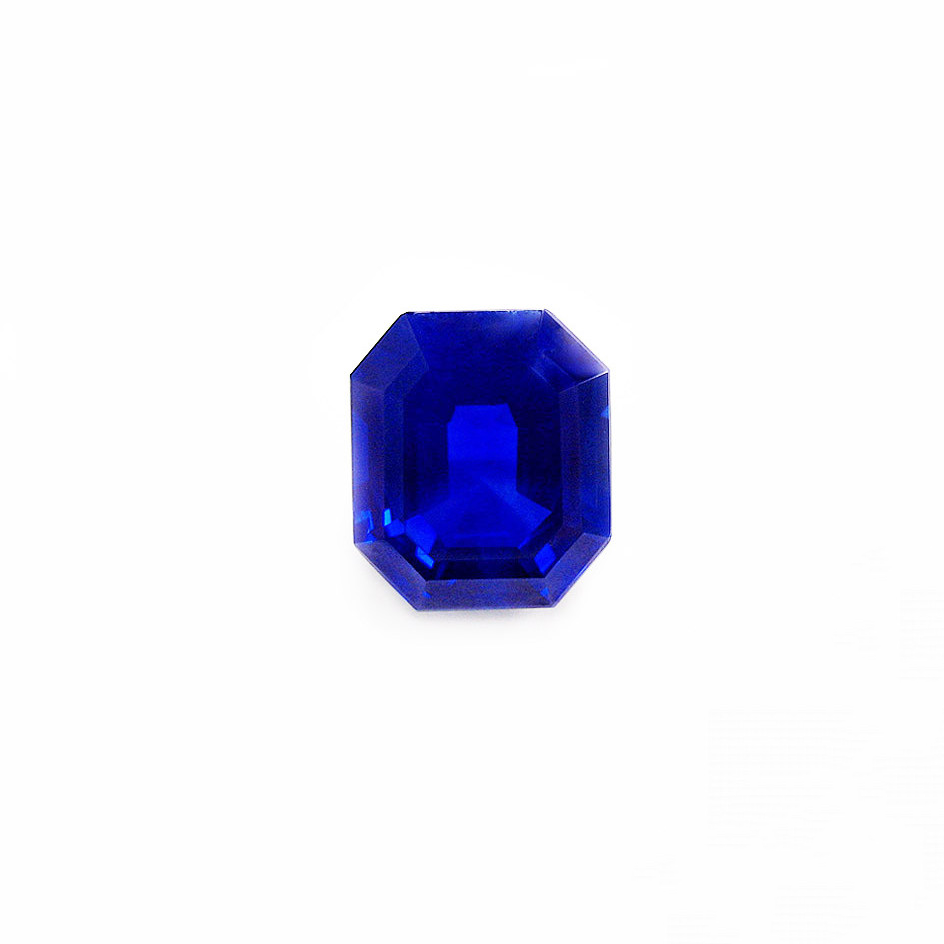
A knifes edge setting is a style of ring band that has a raised center that creates a sharp (knife), creased look that allows for more light reflection and shine on the metal. Knife edge bands tend to be slimmer and hold only one gemstone. While a knifes edge is usually used in rings, it is also sometimes used for a bangle.
Photo: Zircon ring with knifes edge setting, courtesy, Richard Buonomo.
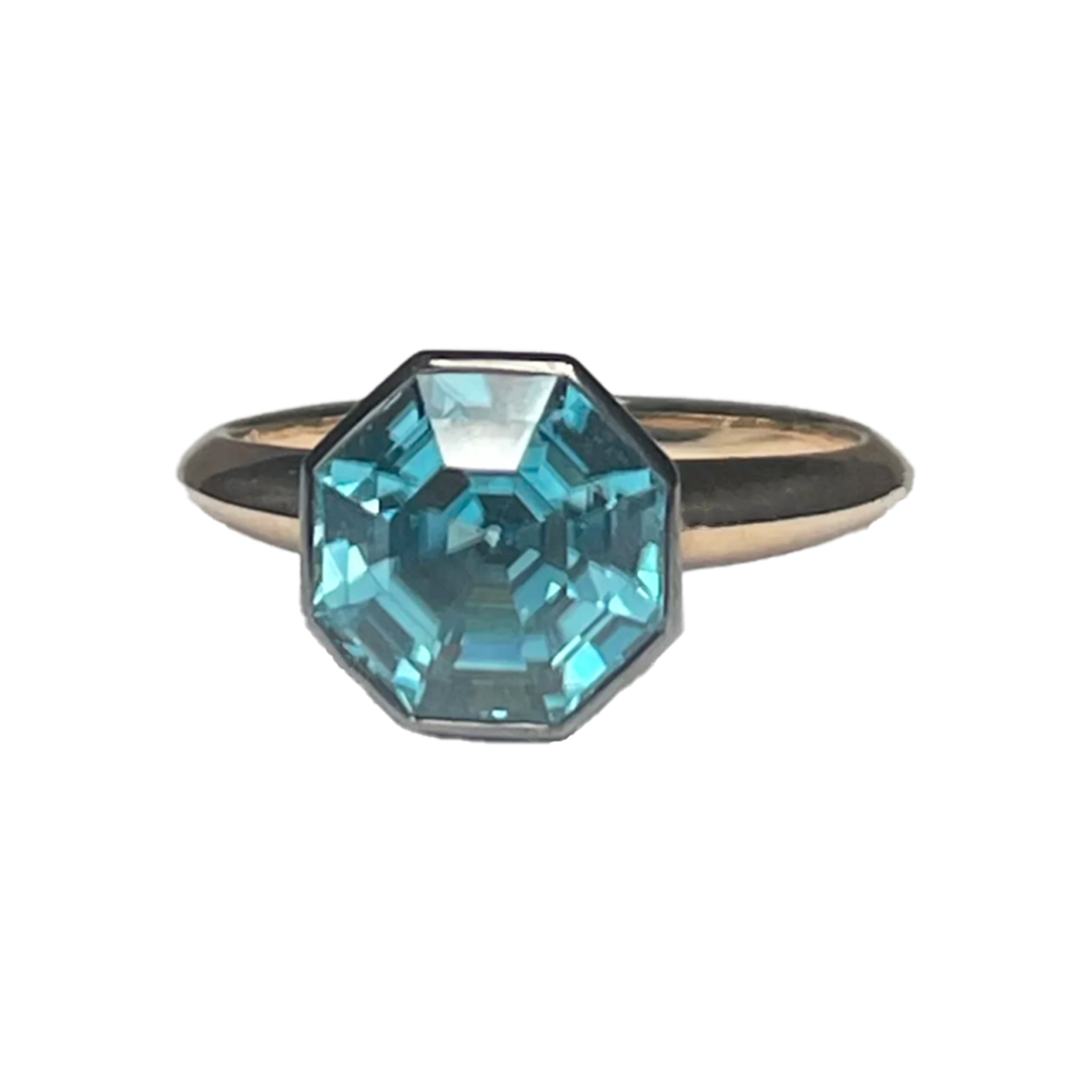
L
A lariat is a long single chain that does not clasp. It has decorative elements at each end of the chain. It is wrapped around the neck and then the two pieces cross over and are tied, or looped to create a necklace.
Photo courtesy Kentshire Gallery.
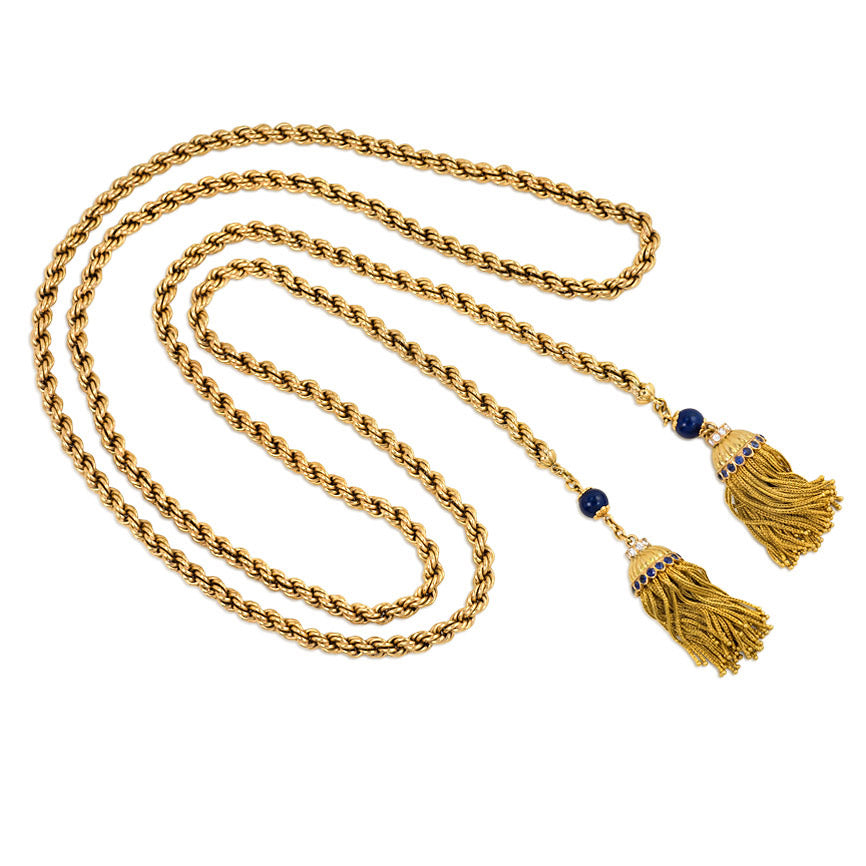
Untreated emeralds often have a rich inner life with many inclusions that look like a garden of vines known as “le jardin”, the French word for garden. The inside markings of emeralds are formed as the stone is growing in the earth and are a normal characteristic of the gem. These birthmarks are part of the natural makeup of the emerald and add to its beauty and the uniqueness of each stone.
Photo courtesy Oltuski Brothers
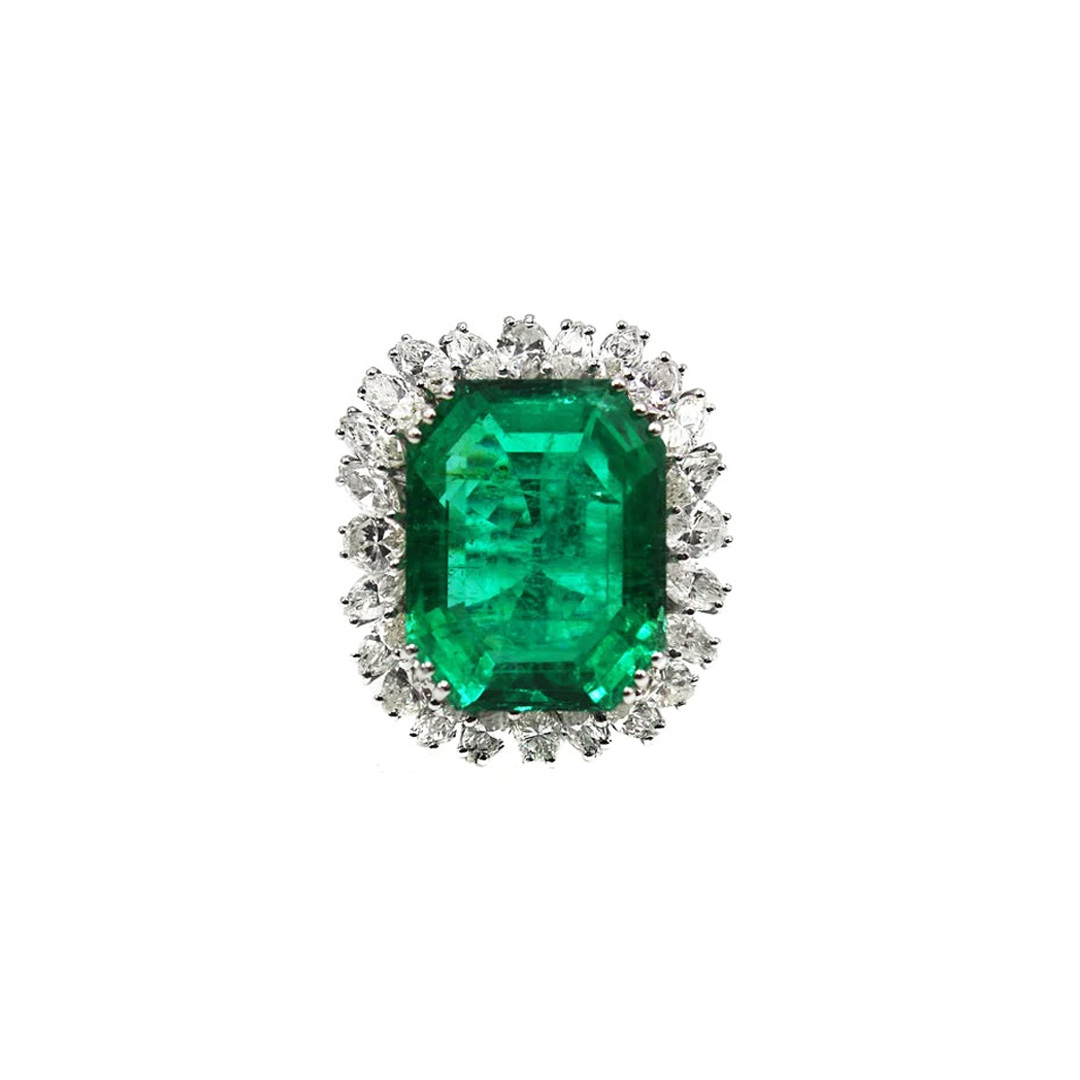
A line bracelet is a simple “line” of gemstones. Often made with diamonds, a line bracelet may be any gemstone or mix of colored gems and diamonds. Today, it is often referred to as a “tennis bracelet”. Tennis great Chris Everet always wore a diamond line bracelet when she was playing. One day her diamond bracelet fell off during a match at the U.S. Open in 1978. The game stopped until Everet found her bracelet. After that incident, line bracelets became commonly known as tennis bracelets.
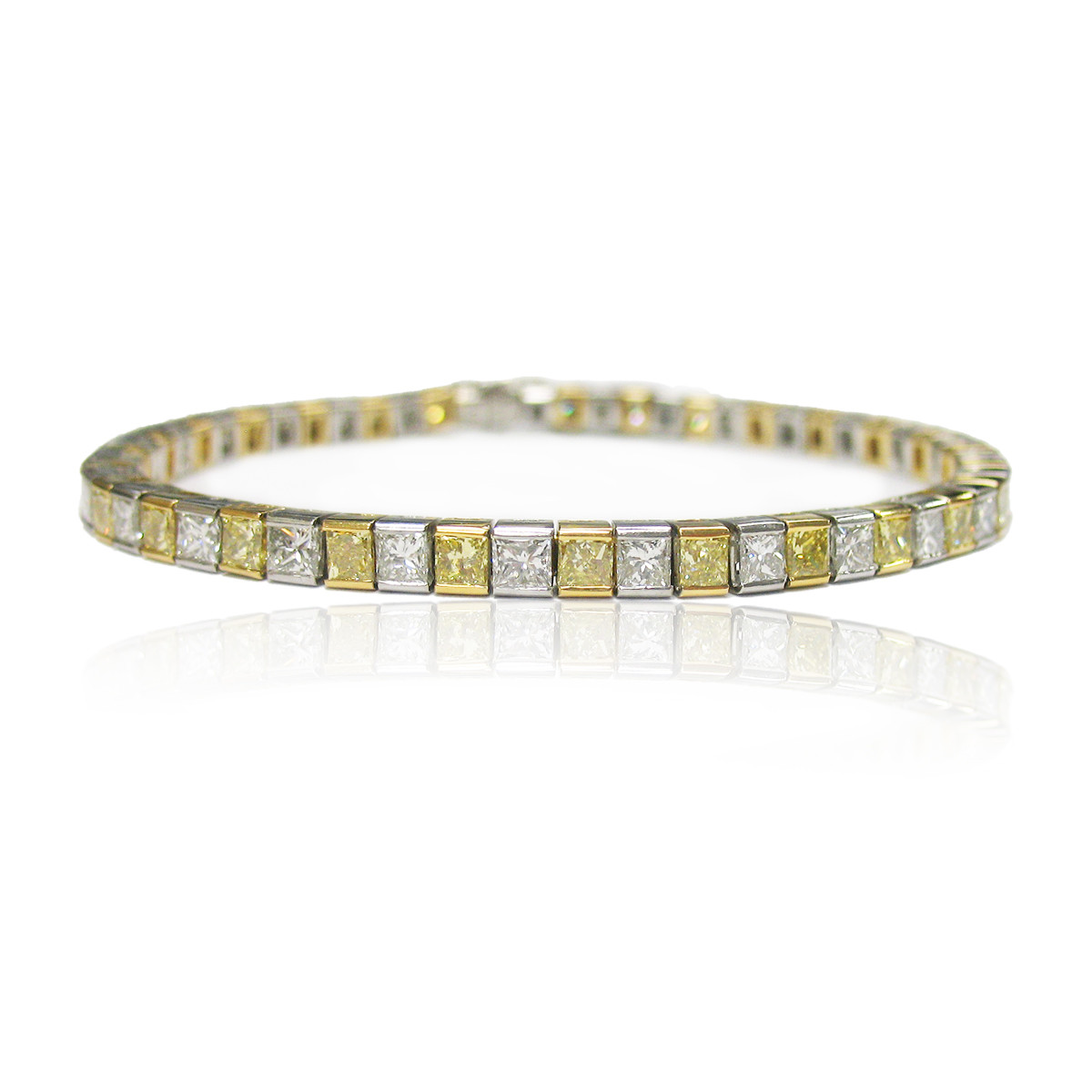
A link bracelet is comprised of chain links. The term applies to various types of links, whether curb, mariner or another link. The links can be all metal or the links may be embellished with gemstones.
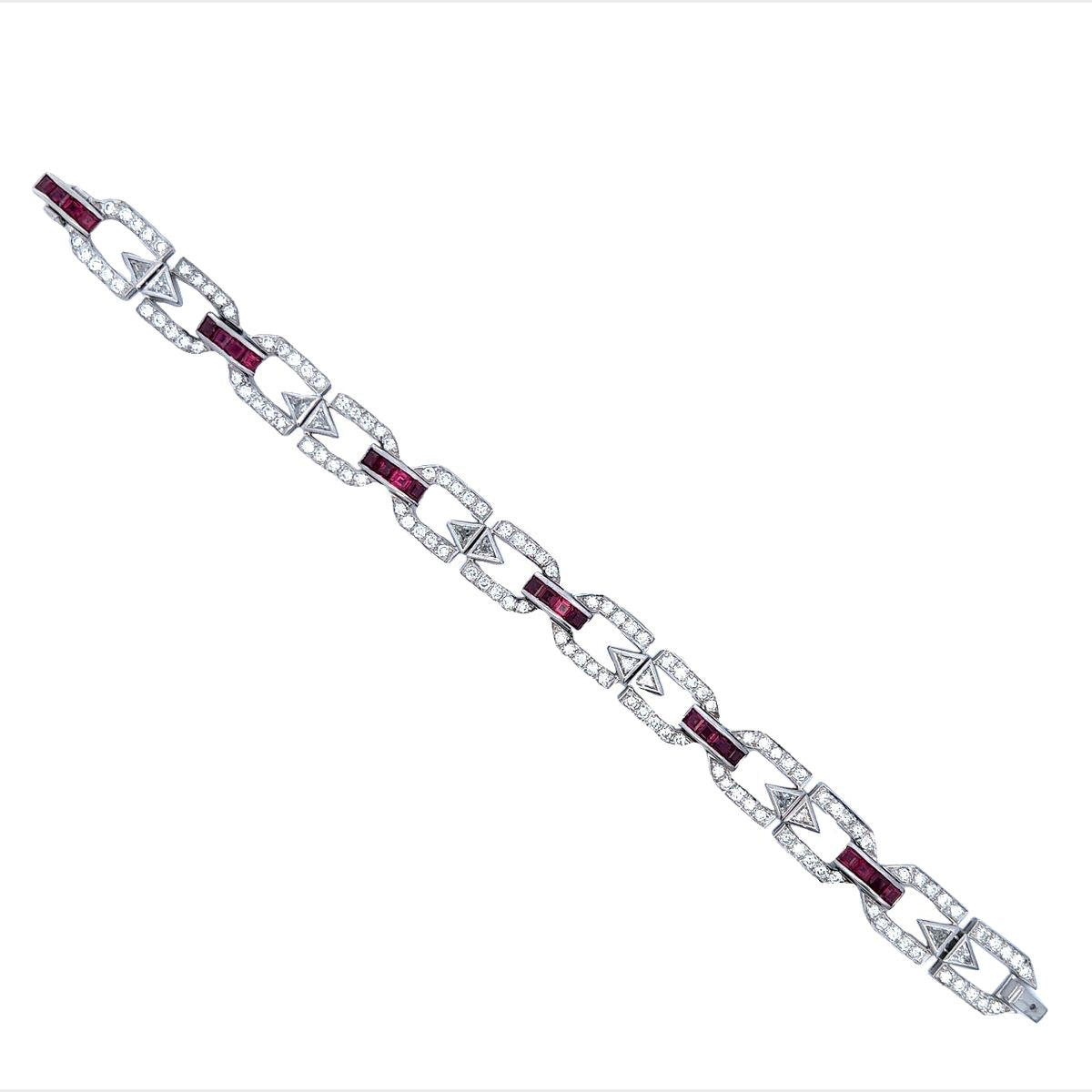
A locket is a small hinged case that opens to reveal an empty space to place very small objects, usually a photograph. Frequently worn as necklaces, lockets can also be found on bracelets and rings. Lockets are thought to have evolved from ancient amulets that held good luck charms. The evolution of lockets continued over the years and by the middle ages and renaissance lockets were very popular and were worn to ward off evil spirits. Lockets were also used to carry medicinal herbs — or poison. Lockets had a resurgence in popularity during the Victorian era when they sometimes held a lock of hair from a loved one who was deceased. Today lockets continue to be favored as a way to keep loved ones close.
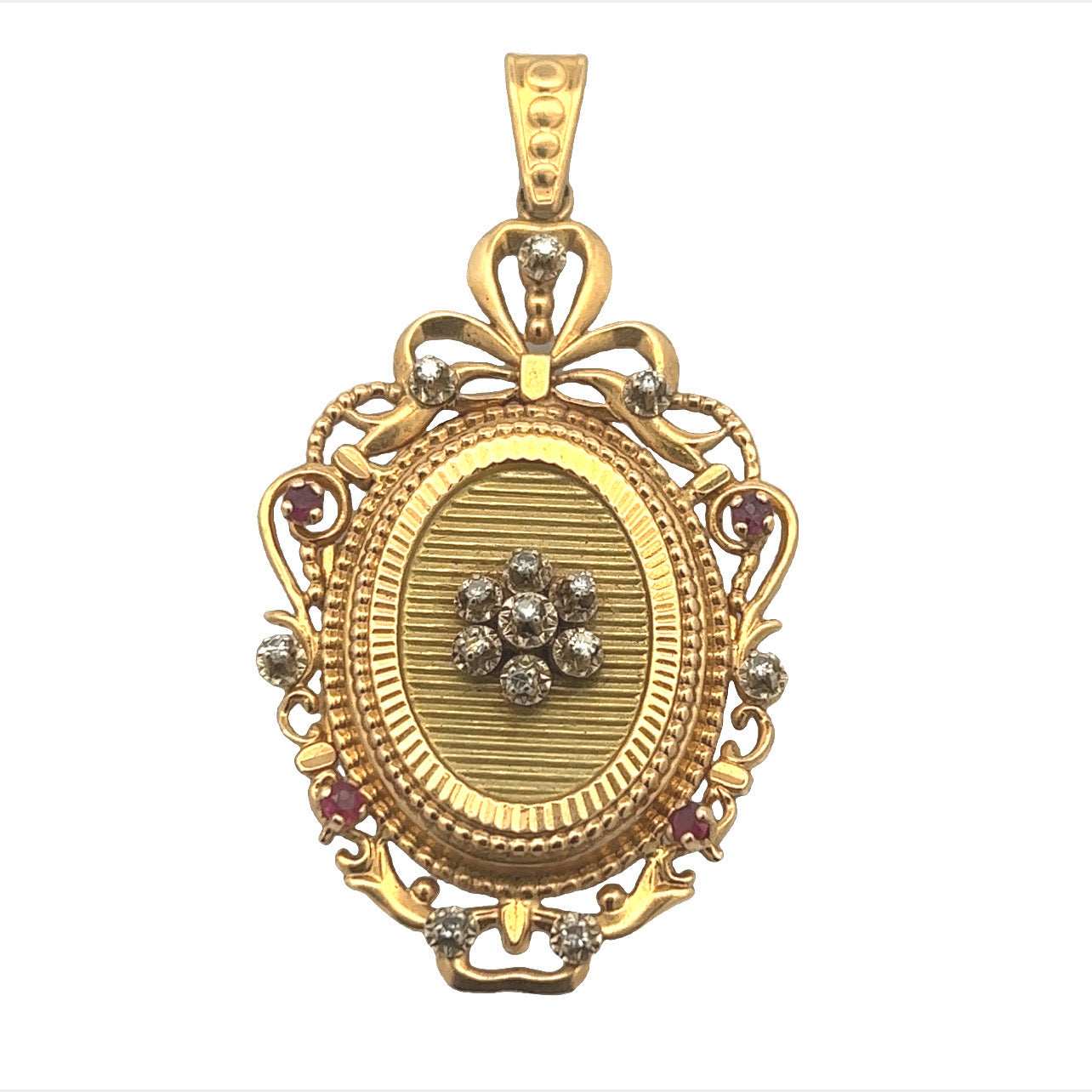
A very long link chain often over 40 inches long (one meter). It can be any type of links and may be embellished with enamel or gemstones.
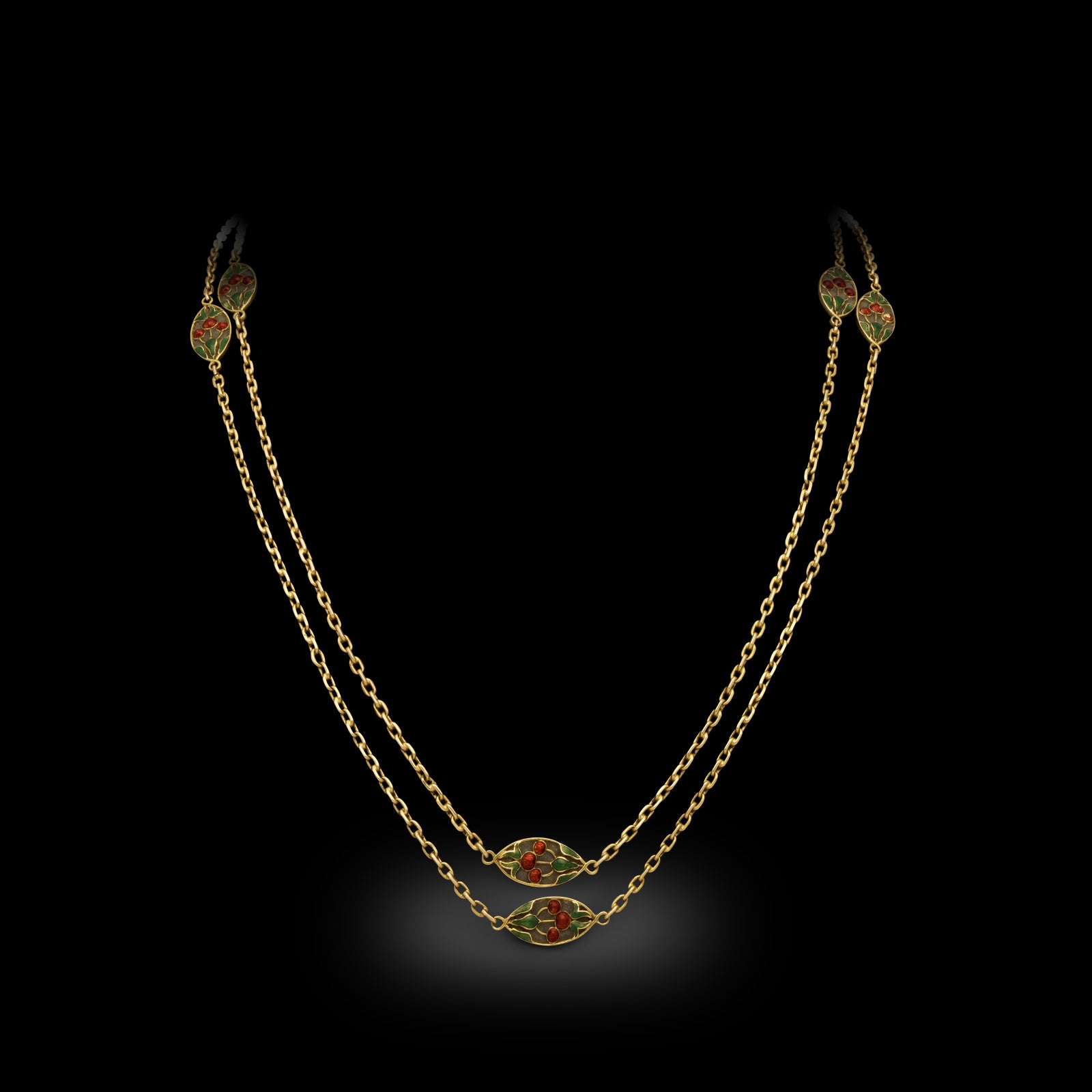
M
The Marquise is a diamond or gemstone shape that is rounded in the center with points on each end. The cut was created in the 1700s when King Louis XV allegedly asked his jeweler to create a diamond for his chief mistress Madame Pompadour, she was a marquise so the shape was named after her noble rank.
Photo: courtesy, Bernard Nacht.
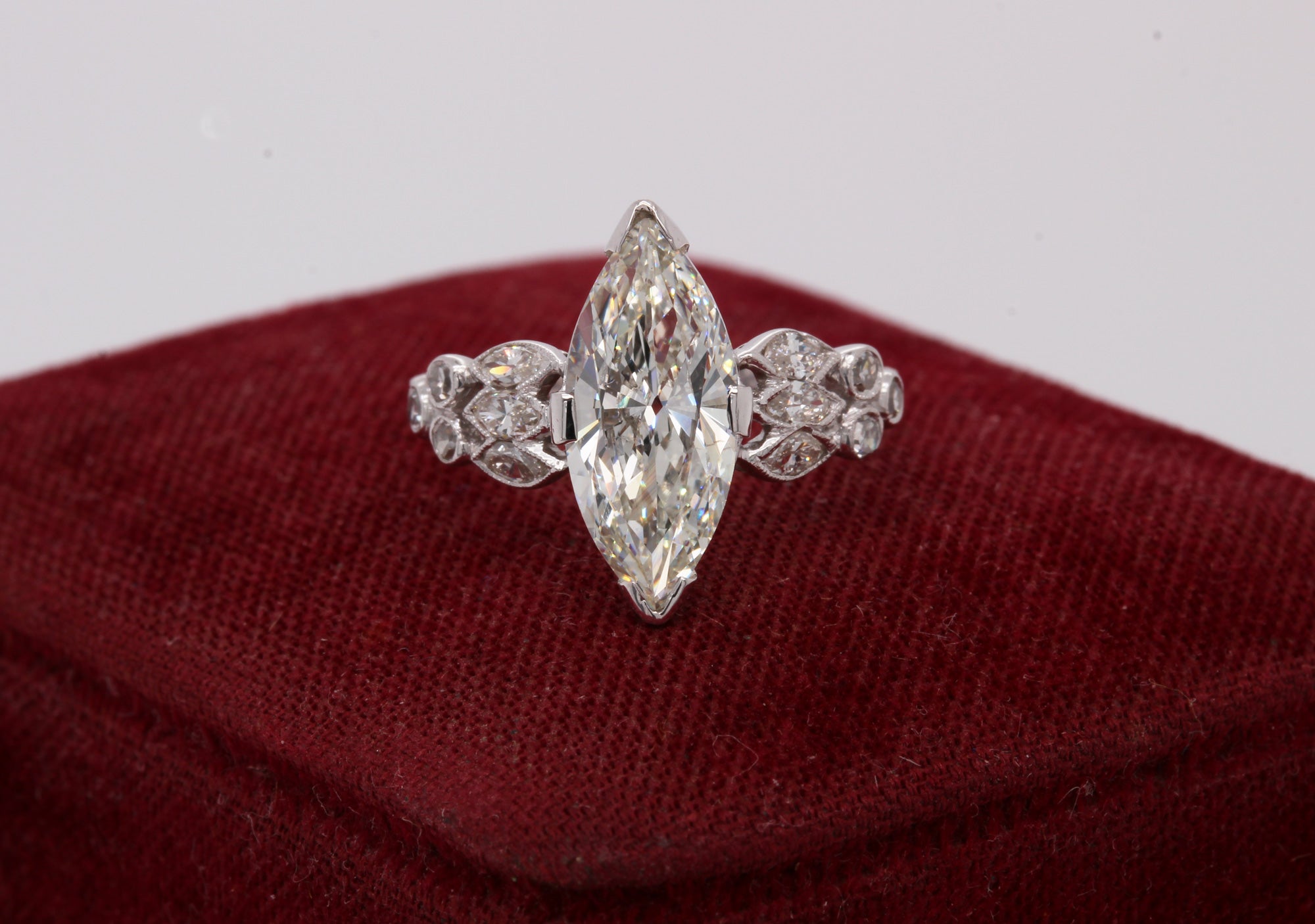
One of the rarest of all pearls is the melo, sometimes called melo melo. These pearls are not farmed or cultivated like most pearls that we see today instead they are natural pearls that form unexpectedly. The melo pearl develops naturally in a giant sized sea snail – the melo melo, which is how the pearl got its name. They are generally round and come in orange, tan or brown colors with a glazed porcelain-like luster. The surface of the pearl will often have an intriguing “flame” pattern. These pearls are found in the waters of Southeast Asia.
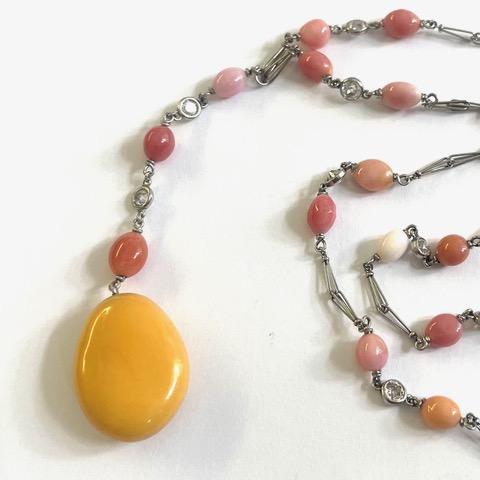
Microsmosaic jewelry was very popular in the 1700s and 1800s. Made mostly in Italy, it was a favored souvenir of travelers to the country. Micromosaic is a very labor-intensive process, created using teeny bits of glass, or enamel, known as tesserae, which come in many colors. For jewelry use, a precious metal backing is filled with a cement-like glue, then an artisan using tweezers, places the individual tesserae into a pattern until an image is formed. Once the glue has dried, wax is used to fill the spaces between the tesserae and then the entire image is polished to a smooth surface. The micromosaics were often adorned with elaborate settings that were further embellished with enamel, cannetille or other decorative work.
Gold and micromosaic brooch by Castellani, public domain,
courtesy Metropolitan Museum of Art, New York City.
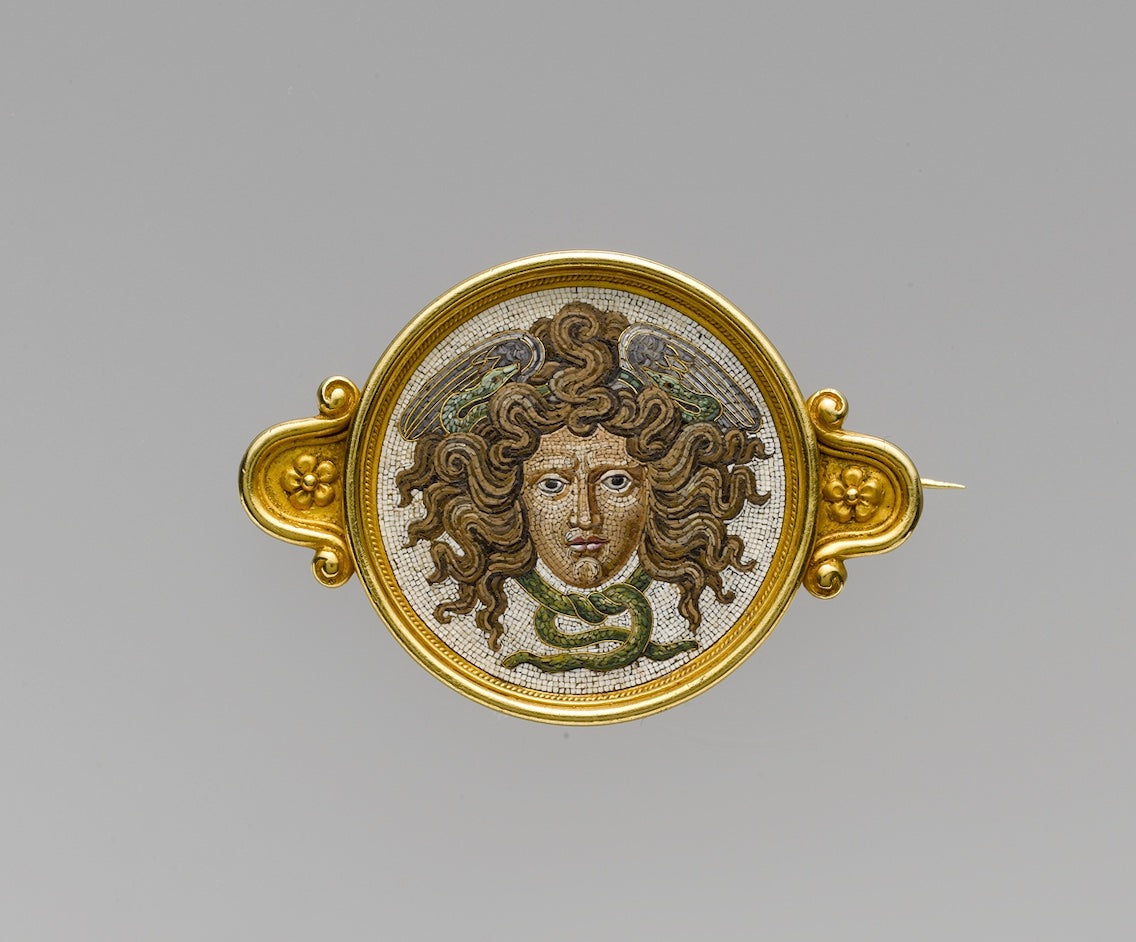
Millegrain, sometimes spelled milgrain, is often found in fine antique, Edwardian or Art Deco jewelry. It is a technique that is used to finish the edges on a piece of jewelry. Millegrain looks like teeny little beads and it keeps the metal from being too shiny so that the set gems can sparkle and shine. Millegrain is created using a knurling tool. The tool rolls along the metal edges of a piece leaving behind the small dots, or sometimes squares, that make up the millegrain.
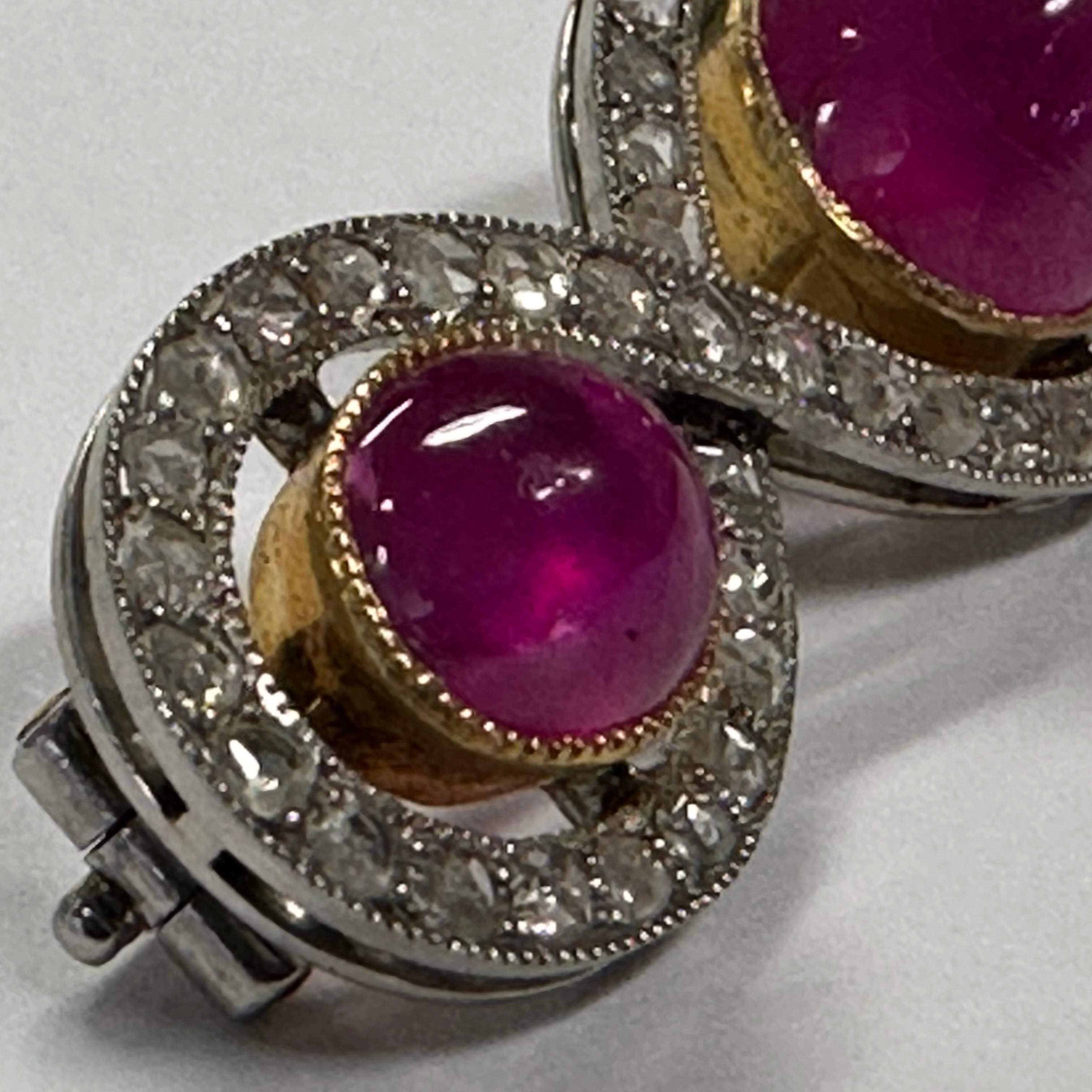
The word minaudière is French meaning a small handbag with no straps or handles. When it first came out in the 1930s, it was designed as a vanity case that had compartments for lipstick, powder, cigarettes, lighter and money. Used as a substitute for an evening bag, they were sometimes carried in a velvet or satin pouch with a cord. A minaudière is considered more of a jewelry item than a handbag. While a number of jewelers made minaudières, its origins are attributed to Charles Arpels of Van Cleef & Arpels. The idea to create the cases came about when Florence Gould, wife of railroad tycoon Jay Gould was running late for an appointment with Charles Arpels and tossed all of her essentials into a small metal box and ran out the door. When Charles Arpels saw what she had done, it sparked the idea to create a much more glamorous way to tote those necessities around and the minaudière was launched into the world.
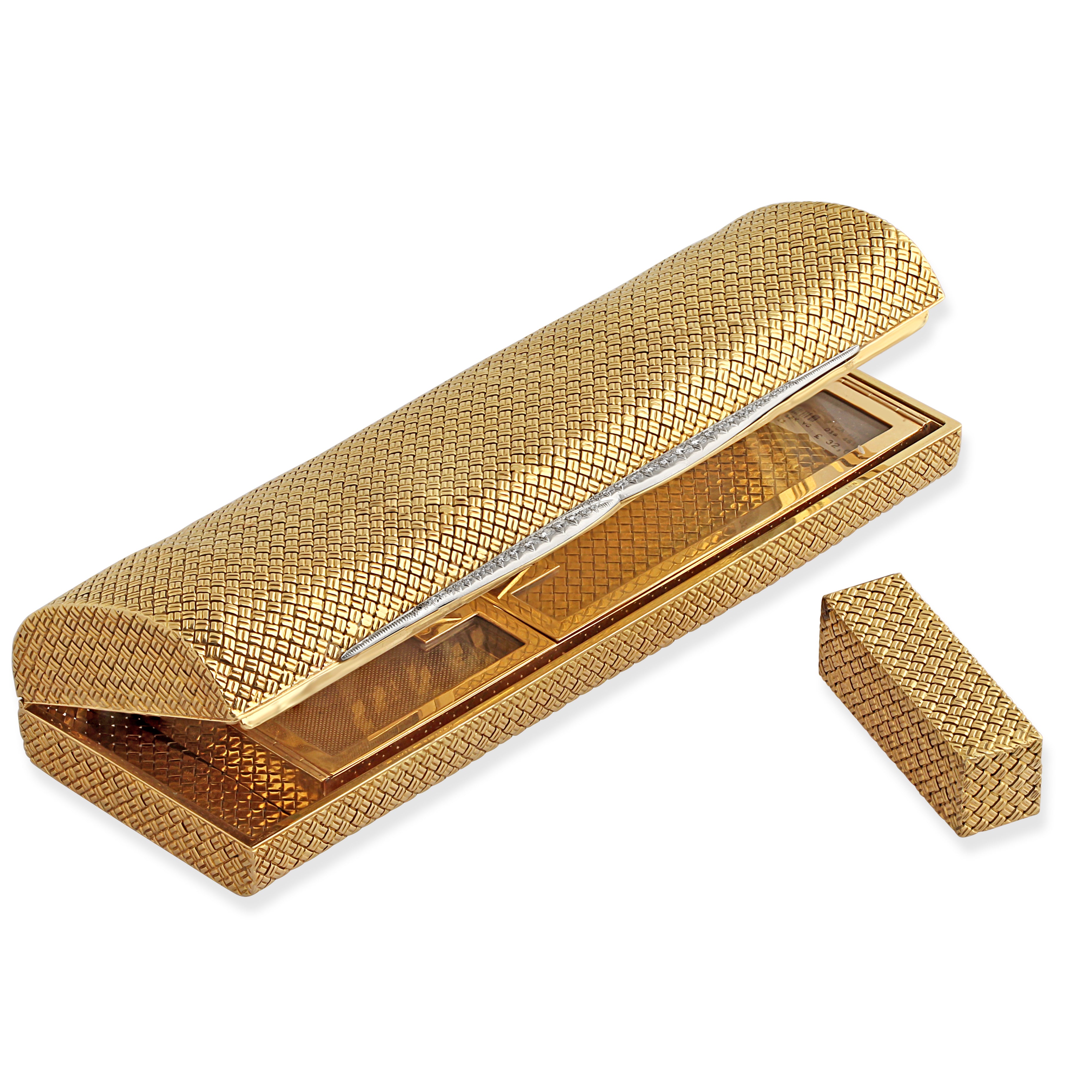
The Mohs scale of mineral hardness compares the hardness of gemstones and minerals. The scale is 1 through 10, with ten being the hardest and one the softest. The hardness is determined by the ability of one stone to scratch another stone. Diamond is the hardest mineral and talc is the softest mineral on the Mohs Scale. It is named after German mineralogist Friedrich Mohs, who developed the system in the early 1800s.
Photo: Friedrich Mohs.

From the 1600s through the 1800s, there were very stringent dress codes for those who were grieving and “mourning jewelry” was created for use during that time. It became especially popular in the mid-1800s as Queen Victoria mourned the death of her husband Prince Albert, who died in 1861, for the remainder of her life (1901). Mourning Jewelry was black and used a variety of materials including gutta percha, jet, French jet, onyx, enamel, hair and bog oak.
Photo, courtesy Berganza.
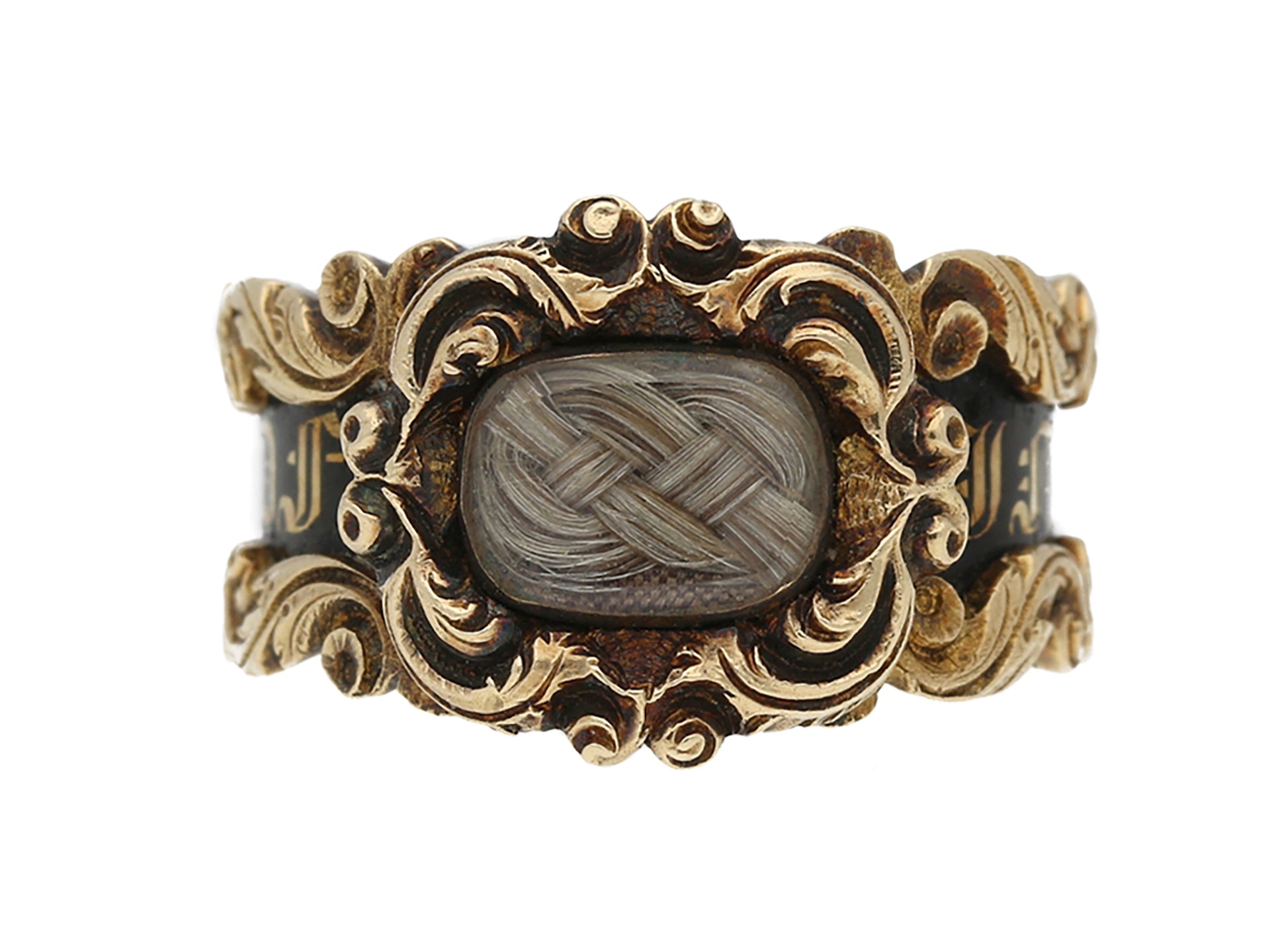
N
Nacre is a combination of the mineral argonite, which is calcium carbonate, and conchiolion, a protein secreted by mollusks. When some sort of organic matter finds its way into a mollusk, it is an irritant and the mollusk produces nacre to cover the offending material. As layers of nacre collect, a pearl is formed. If the organic matter enters the mollusk with no human intervention, a natural pearl forms. When a human places the organic matter into the mollusk, the pearl that forms from this process is called a cultured pearl.
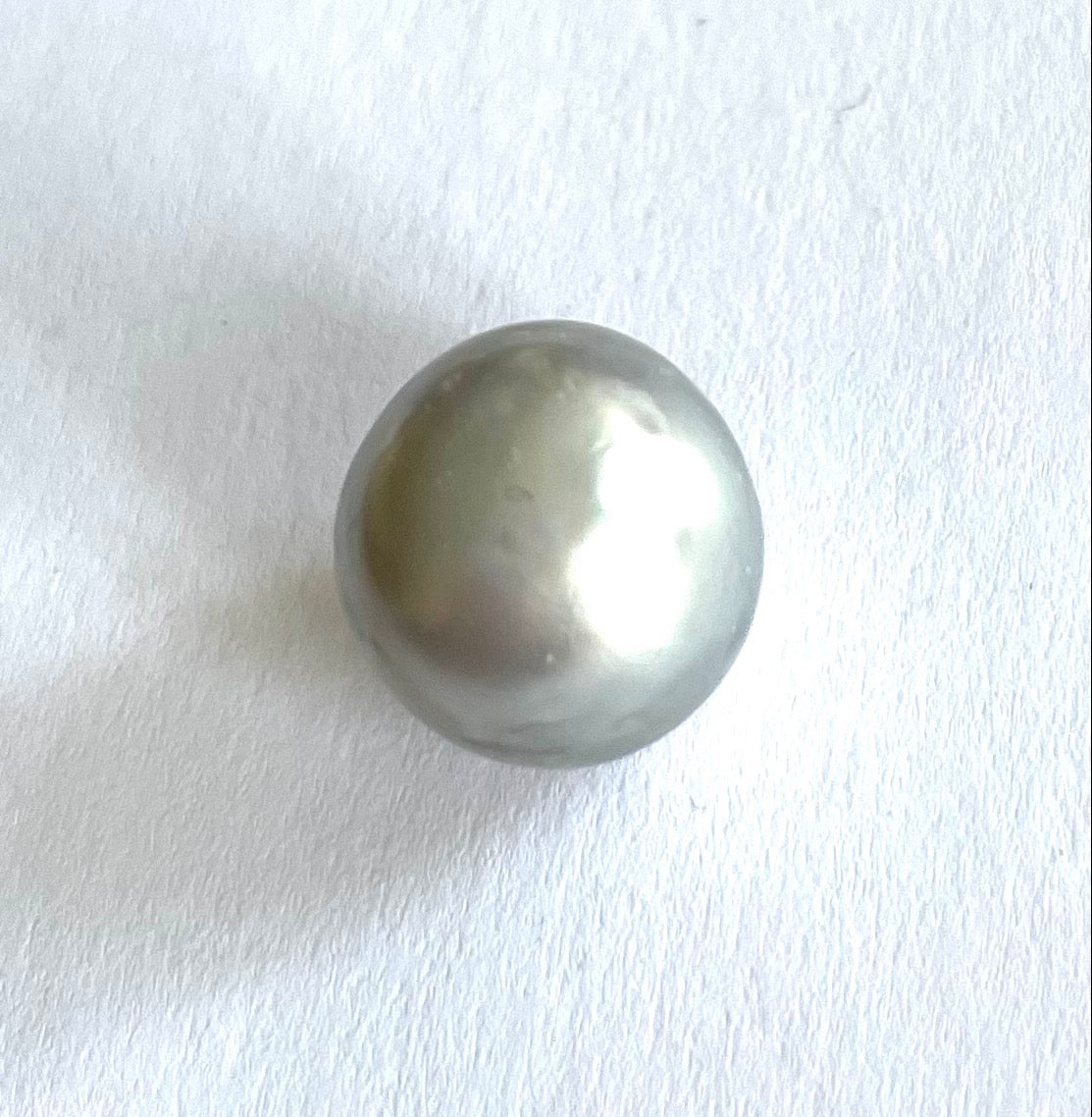
Natural pearls form when some sort of organic material finds its way into a mollusk. The intruding matter irritates the mollusk and in order to soothe the irritation, the mollusk produces nacre to cover the offending material. As layers of nacre collect, a pearl forms.
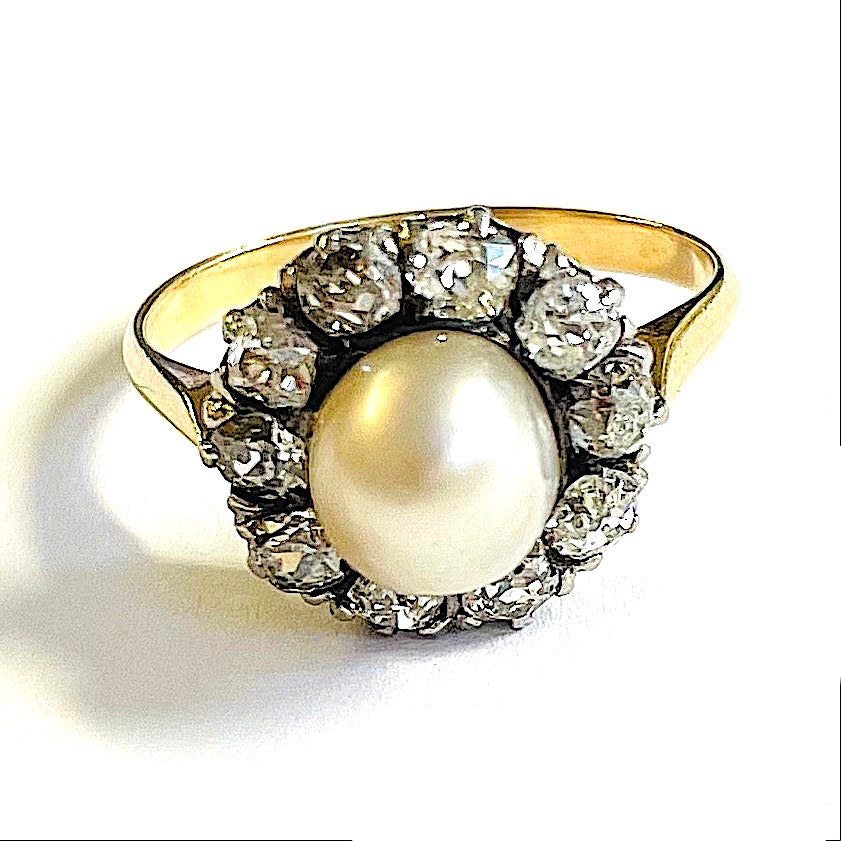
A necklace is a piece of jewelry worn around the neck. It can be gold, platinum or silver and it may or may not have gemstones.
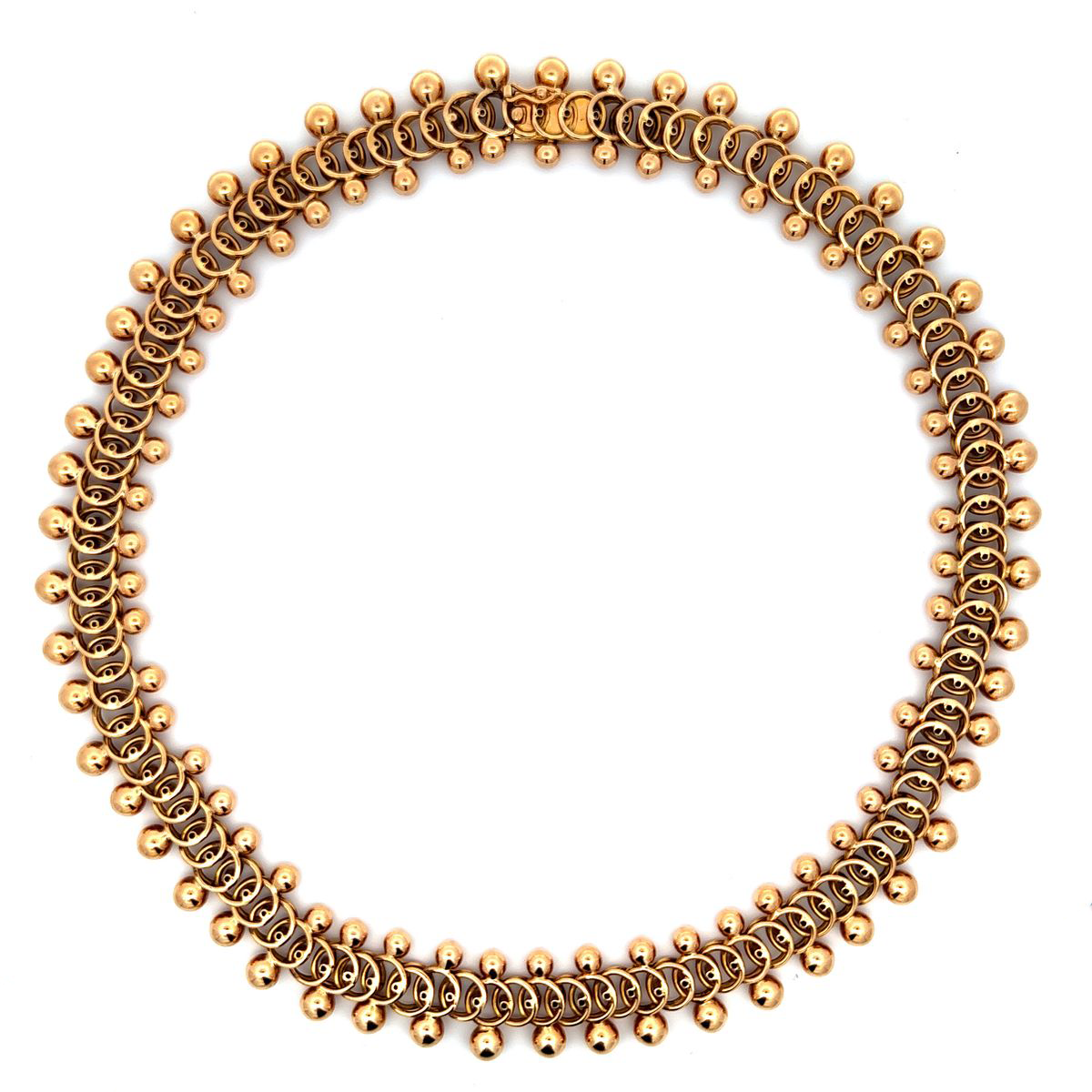
A negligee necklace is usually medium length, it has two chains dropping from a decorative element. The chains are different lengths and often have a gemstone on each of the ends. The gems or other decorative elements may be the same size. It was a particularly popular style in the Edwardian era.
Photo: Courtesy, Morelle Davidson.
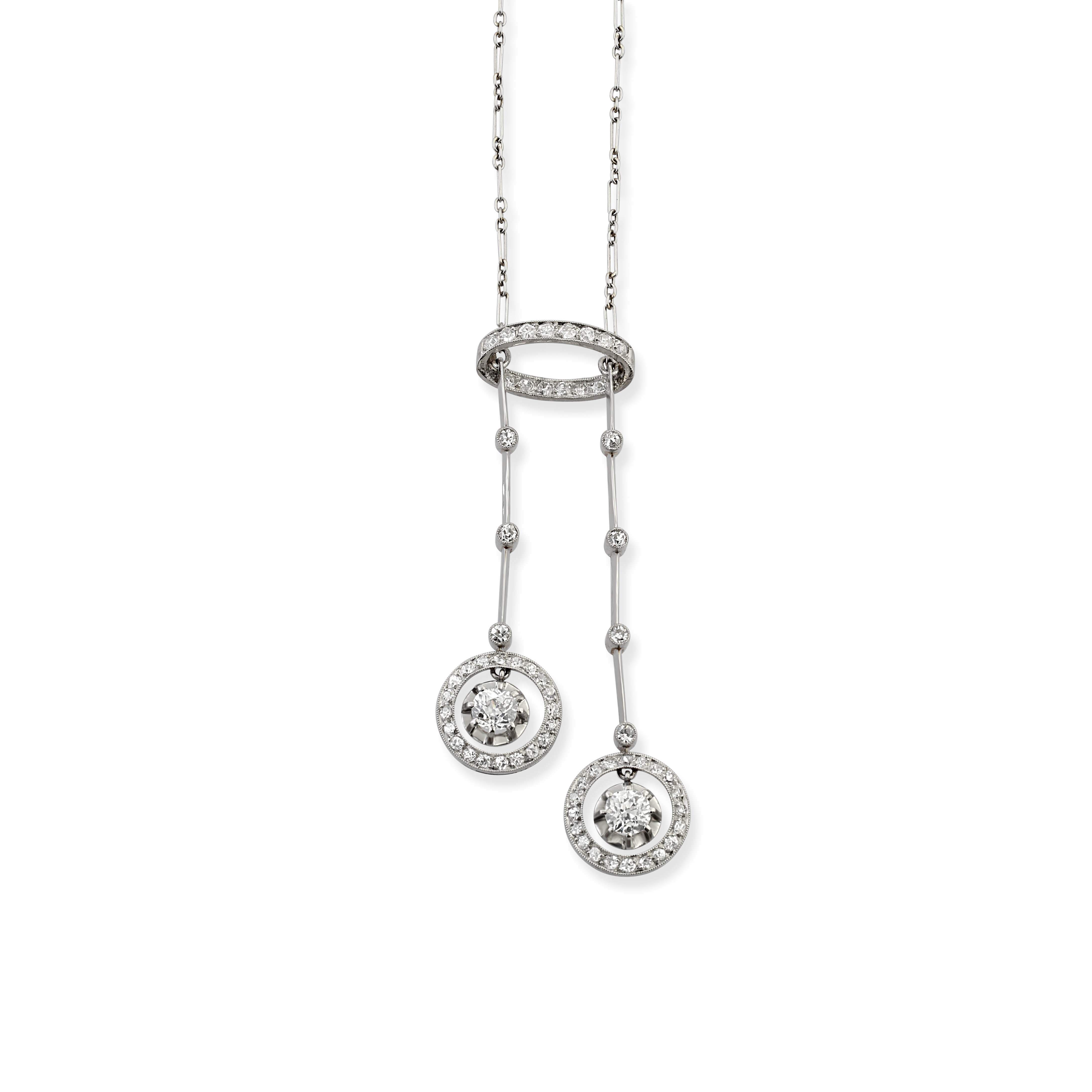
O
Widely considered to be the precursor to the modern-day brilliant cut, the old European cut was popular in the first half of the 1900s. The old European cut was much rounder in shape than its predecessor the old mine cut. It also has a much smaller, but still open, culet (the point at the bottom of the diamond). Despite the name Old European, the cut was actually created in the United States by business partners Henry Morse and Charles Field who established the first diamond cutting factory in the country in Boston. The name came about because most of the diamond cutters came from Europe, the old country, so the stones became known as Old Europeans.
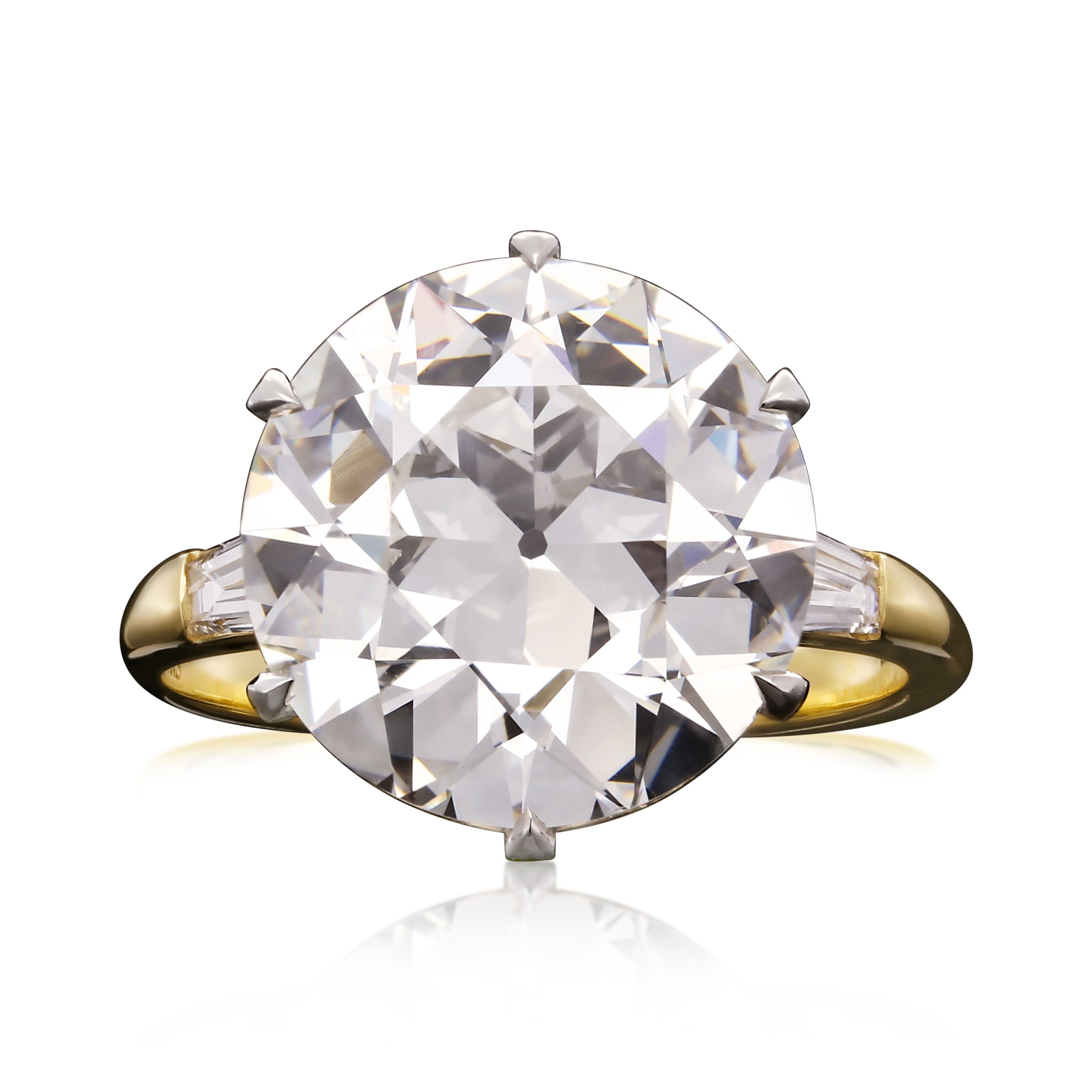
The old mine cut, first came on the scene in the 1700s. These diamond cuts follow the octahedral shape of the rough stone. Because each rough diamond is slightly different in form, old mine cut diamonds can be found in round, cushion or rectangular shapes. They have 58 facets and are distinguished by a high crown – the top half of the diamond — and a small table, which is the large facet on top of the diamond and an open culet, which is the point at the bottom of the stone.
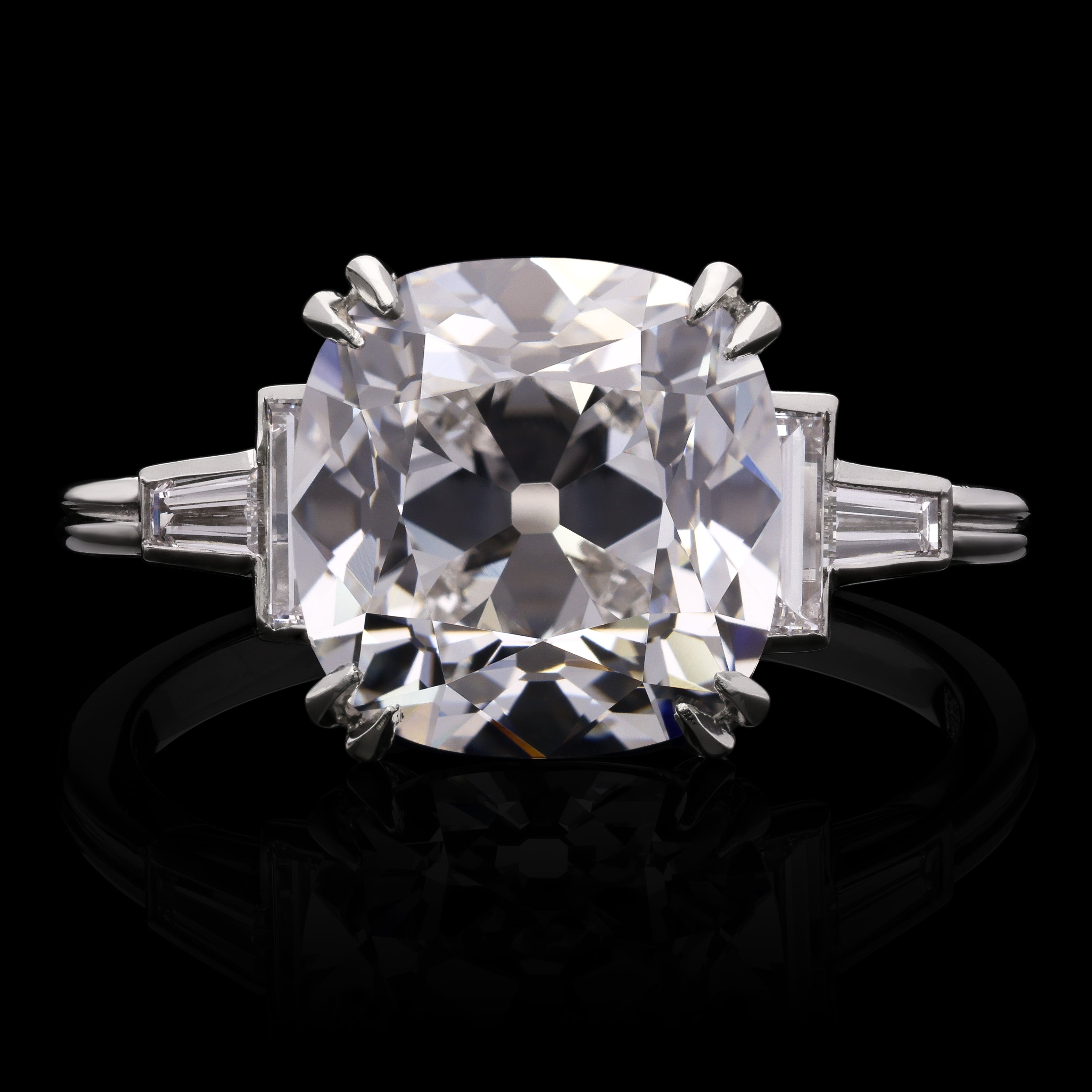
Opal is easily recognizable due to its “play-of-color” a display of various color flashes in one gemstone. Opal is made of silica formed in tiny spheres and has a grid-like structure that allows light to flow between the spheres creating play-of-color. There are two categories of opal: Precious and common. Only precious shows play-of-color. White opal and black opal both exhibit play-of-color, one against a white or gray background, the other against a black background. Opal, which is October’s birthstone, is found in Australia and Ethiopia. The ancient Romans believed that opal was the most valuable gemstone because it flashes the colors of all other gems. Due to its play-of-color optical effects, opal is one of the phenomenal gemstones.
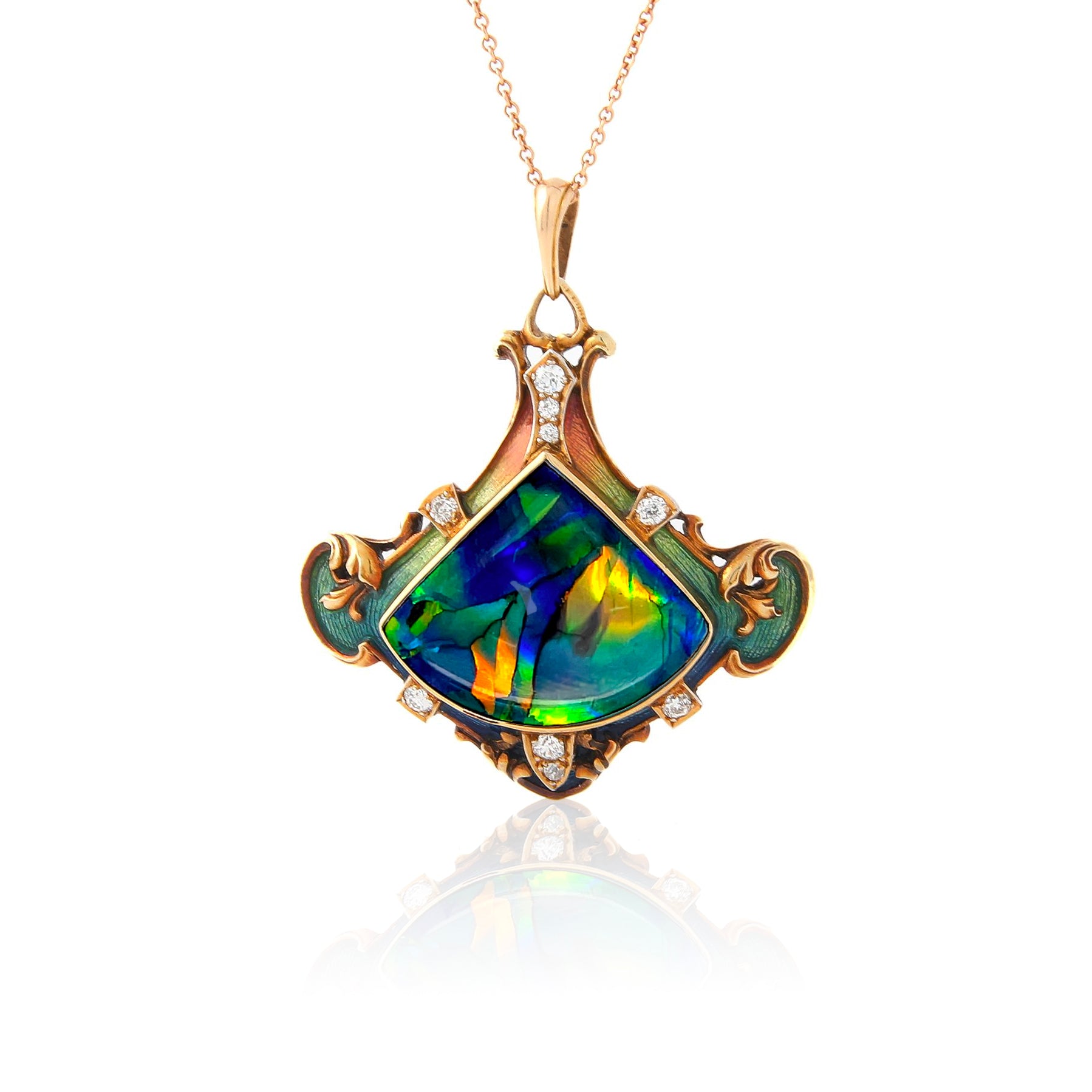
P
Paillonné is a special enameling technique that was popular in the 1800s. It involves repeatedly applying layers of translucent colored enamel over very thin sheets of gold or silver resulting in particularly vivid colors and a lustrous finish. Jean Schlumberger, one of Tiffany & Co.’s most renowned designers, revived this technique for the Croisillon bracelets that he designed for the firm.
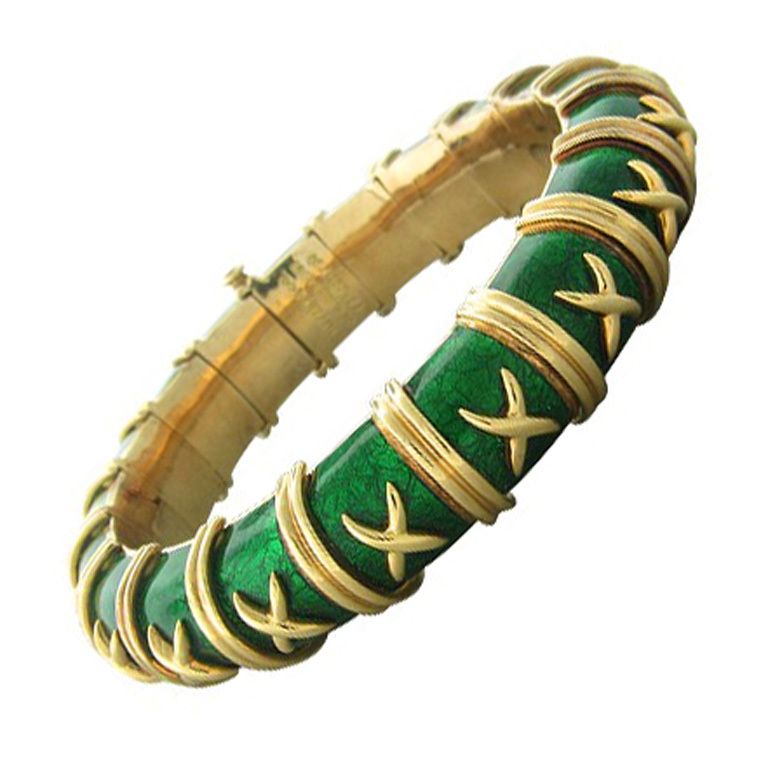
Pavé is a type of setting where many tiny diamonds or gemstones are set so closely together that no metal shows and the surface looks as if it is paved in gemstones. The word pavé means “to pave” in French.
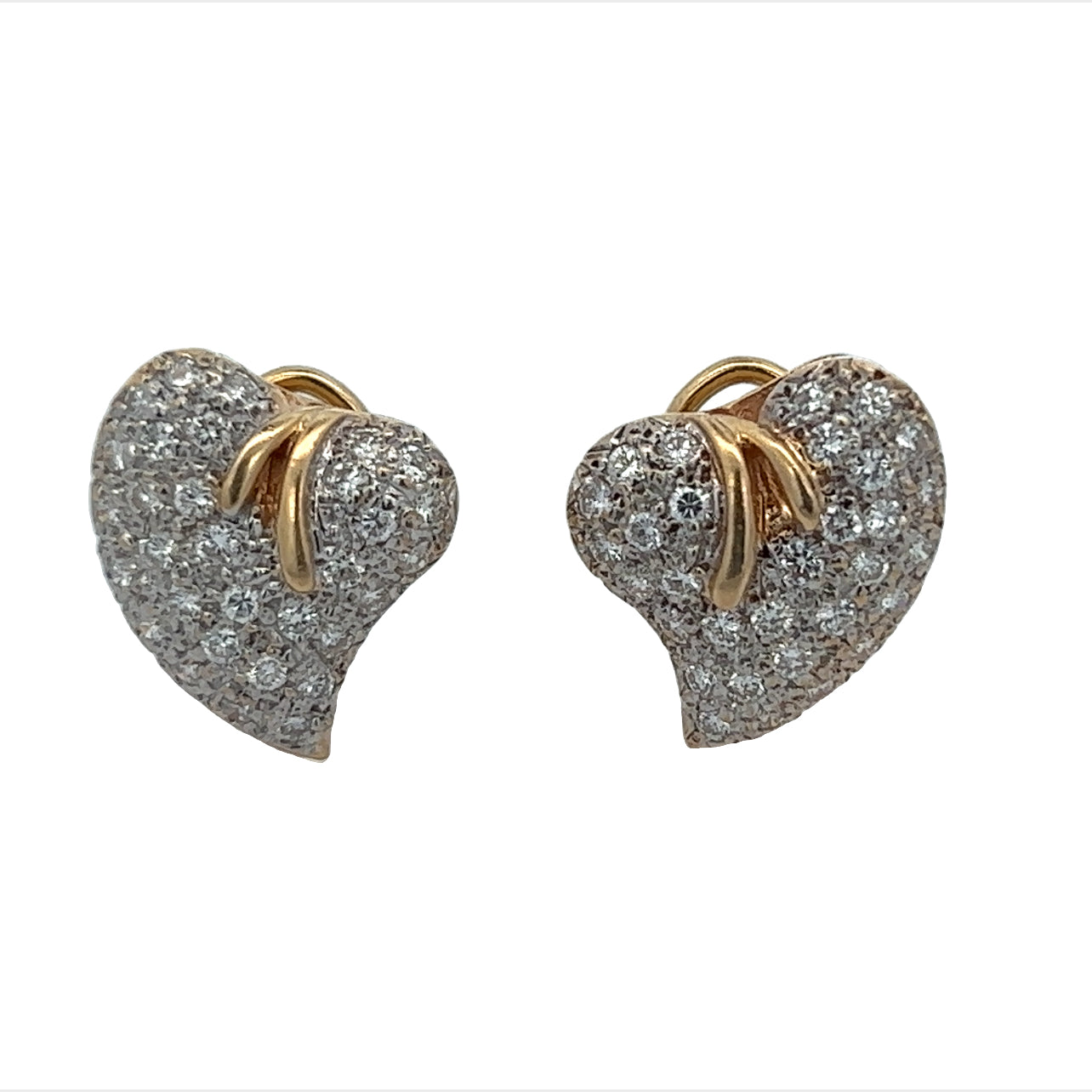
A pear shape is a diamond or gemstone that is rounded on the bottom and pointed on the top. This shape is sometimes called a teardrop. Worn as a ring, this shape will make your fingers look longer and slimmer. It can be worn anyway that you prefer, but when set as a ring, a pear shape is generally worn with the tip pointing to the fingernail and when set as a necklace or earrings the pointed top is generally positioned up to point to your face.

A pendant is a decorative jewel on a chain that is worn around the neck. Generally, the pendant can be removed from the chain and may be worn on a ribbon, leather or silk cord.
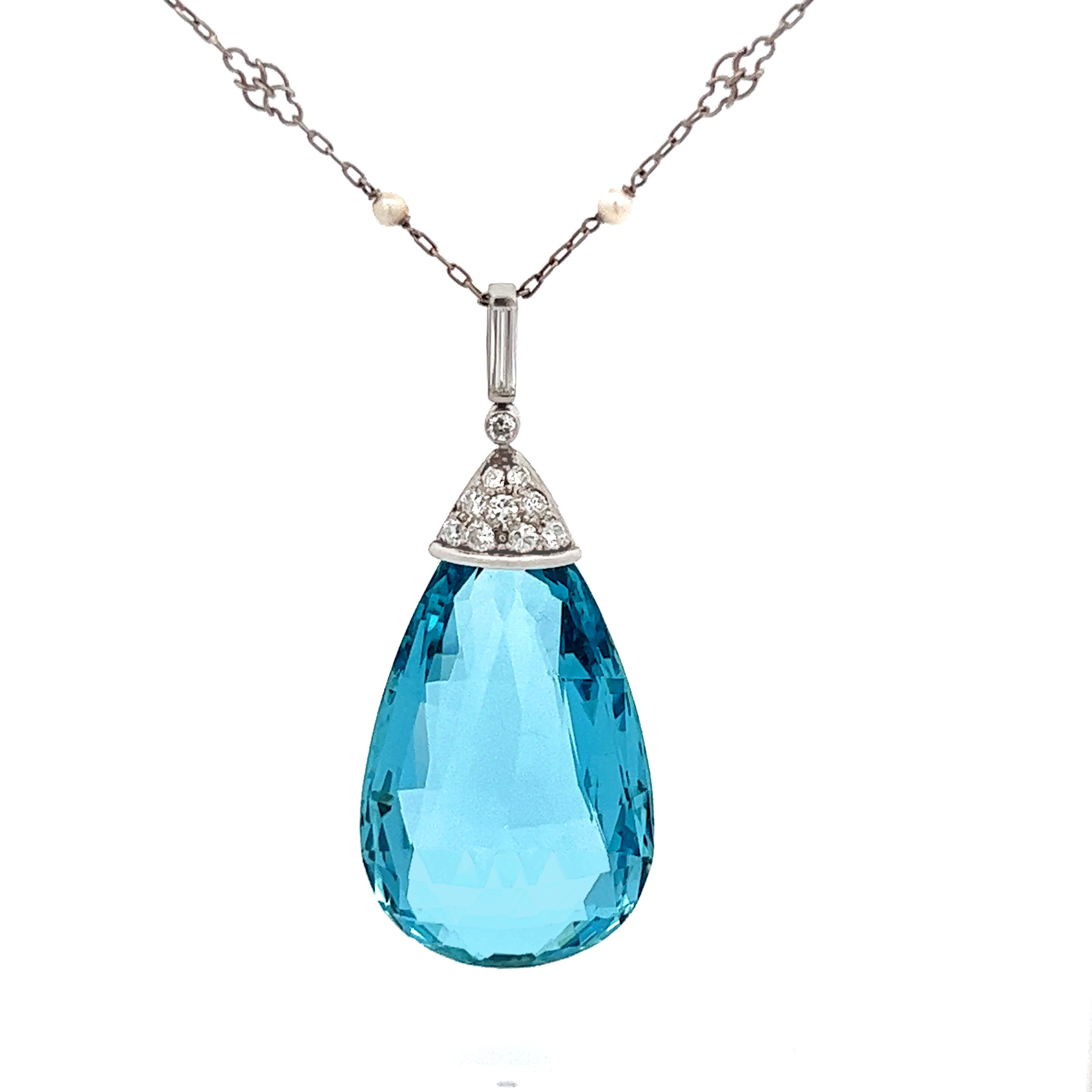
A popular earring style in the Georgian era, pendoloque earrings have a round or marquis-shaped stone at the top, a bow motif dropped from the top stone and the other gems drop down from there. These earrings often have a pear-shaped frame.
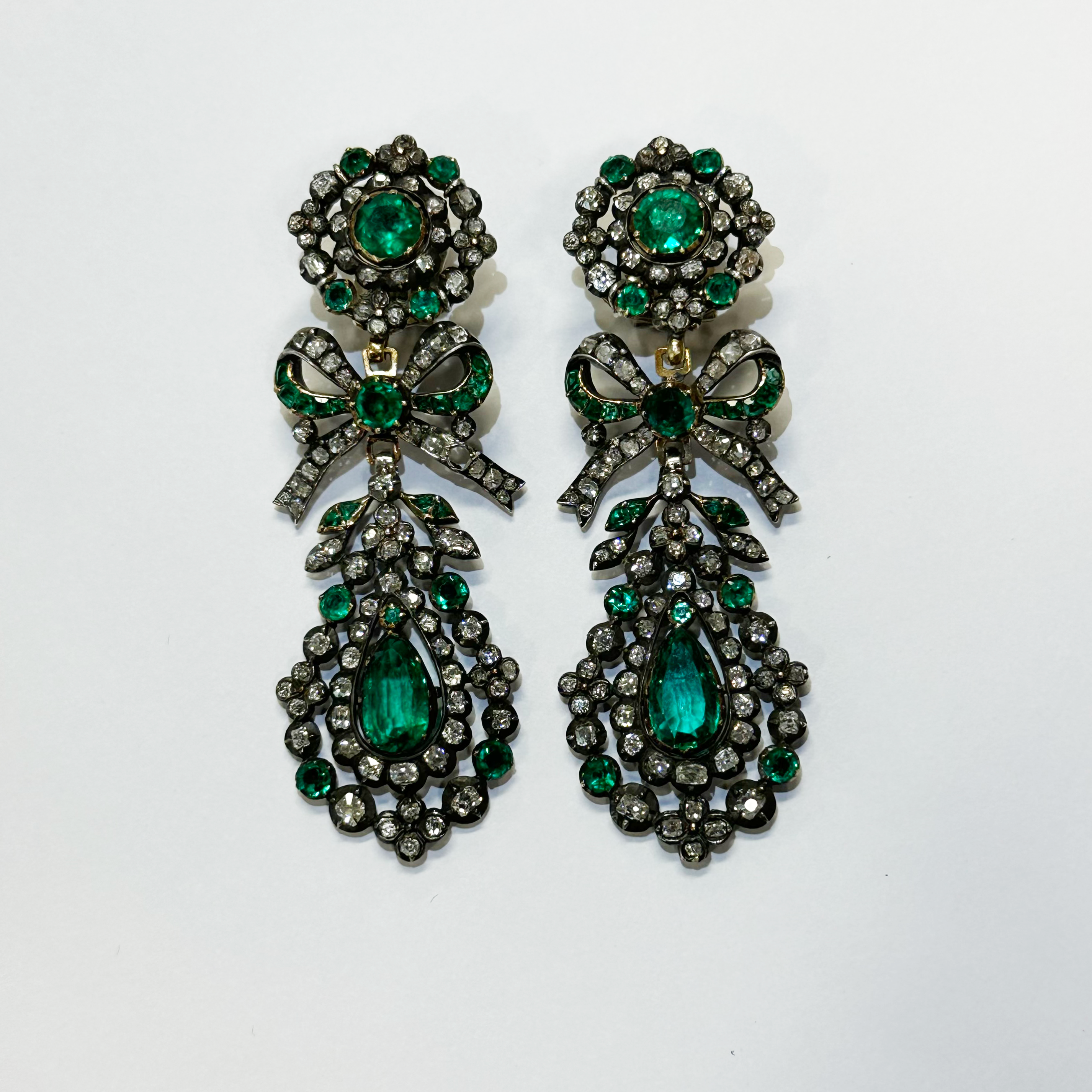
Peridot is often found in Victorian, Edwardian and Art Nouveau jewelry as well as other design movements of that time. Unlike most other gemstones, it is found deep in the earth’s mantle and comes to the surface via volcanic explosions. It is found in some forms of molten rock, including basalt as well as in lava flows in Hawaii, China and Vietnam. There are also finds in Myannmar, Pakistan and Finland. One of the largest finds is on the San Carlos Indian Reservation in Arizona. Very rarely, peridot is found in meteorites that hit the earth. This is such a rare phenomenon that the peridot found in jewelry is not from this source. Peridot, is a part of the olivine mineral family. It has trace elements of magnesium and iron. It is the iron that gives this August birthstone its color, which can range from a vibrant limey green with yellow undertones to a more subdued olive green with brownish undertones. The most desirable shade of peridot is that which is a pure green with no undertones.
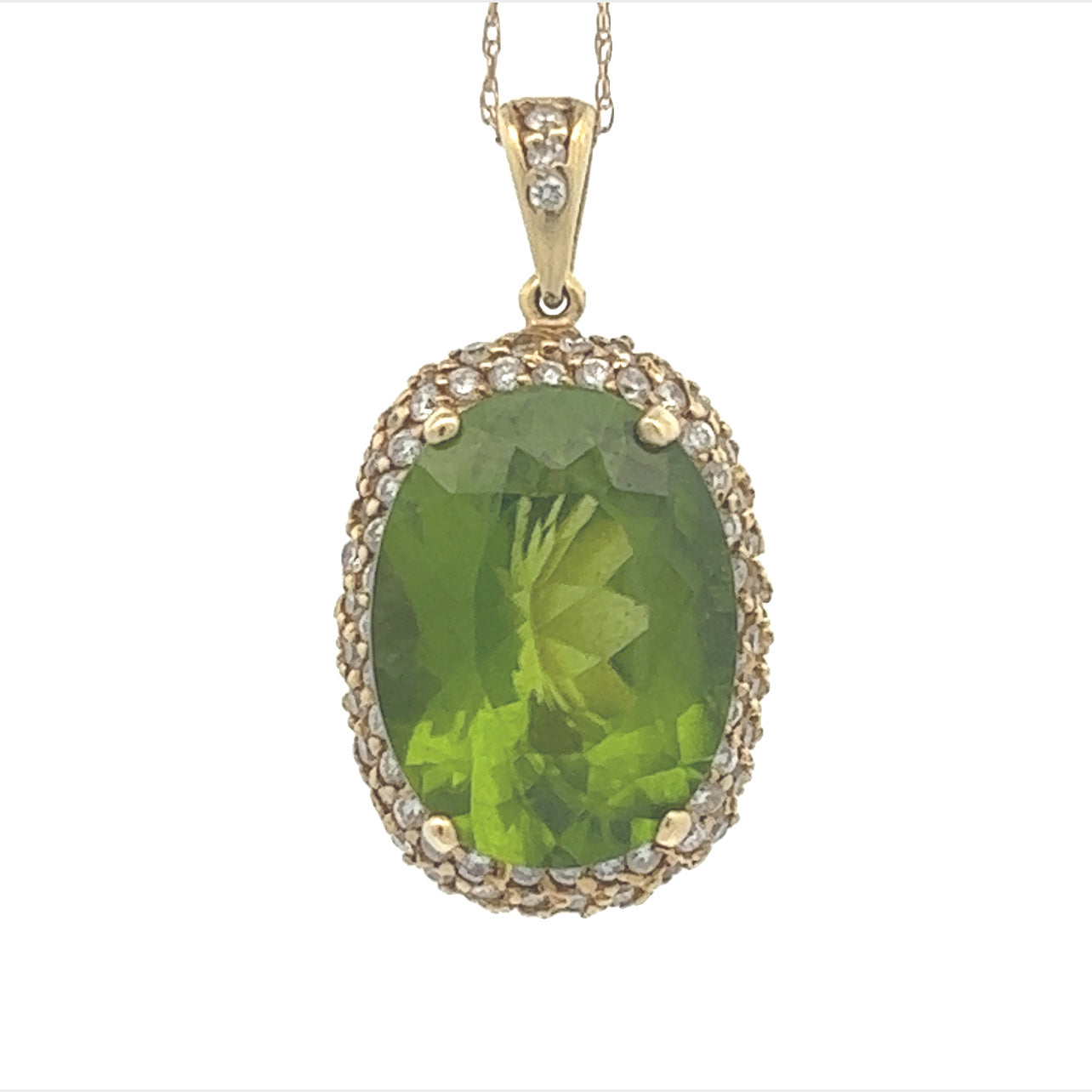
Phenomenal gemstones are gems that exhibit special optical effects including adularescence, asterism, color change, play-of-color and chatoyancy.
Adularescence is the glowing sheen of light that floats across a moonstone. A part of the feldspar family, moonstone is comprised of super thin layers of orthoclase and albite minerals, which alternate throughout the stone. When light hits the stone and falls between the layers, the light is scattered creating adularescence, the mystical color that floats across the stone like the full moon on a misty night. The highest quality moonstones have a blue sheen that flows across a colorless background, but that sheen may also be silver, white or rainbow. The optical effect of adularescence is what makes moonstone one of the phenomenal gemstones.
Asterism is an optical effect in a stone that causes a star to appear. The stone must be cabochon cut for a star to be visible. The star is created when very fine but dense inclusions in parallel form reflect light inside the stone. Stones that display asterism are known as phenomenal gemstones. Asterism may be found in sapphires and rubies that present this optical effect, these gems are known as star sapphire and star ruby.
Chatoyancy, also called chatoyance, is bands of light that are created by light reflection from tiny needle-like inclusions in the stone, it is also called cat’s eye. The word comes from the French phrase “ceil de chat”, which translates to cat’s eye. Gems that have chatoyancy are considered phenomenal gemstones.
A color change gemstone is when a stone noticeably changes color when seen under different light, such as daylight or incandescent light. Alexandrite is an example of a color change stone. Color change is a special optical effect and is considered a characteristic of a phenomenal gemstone.
Play-of-color is the flashes of color that are seen in an opal when the stone moves. Opal is made of silica formed in tiny spheres and has a grid-like structure that allows light to flow between the spheres creating play-of-color, which is what makes opal a part of the phenomenal gemstone family.

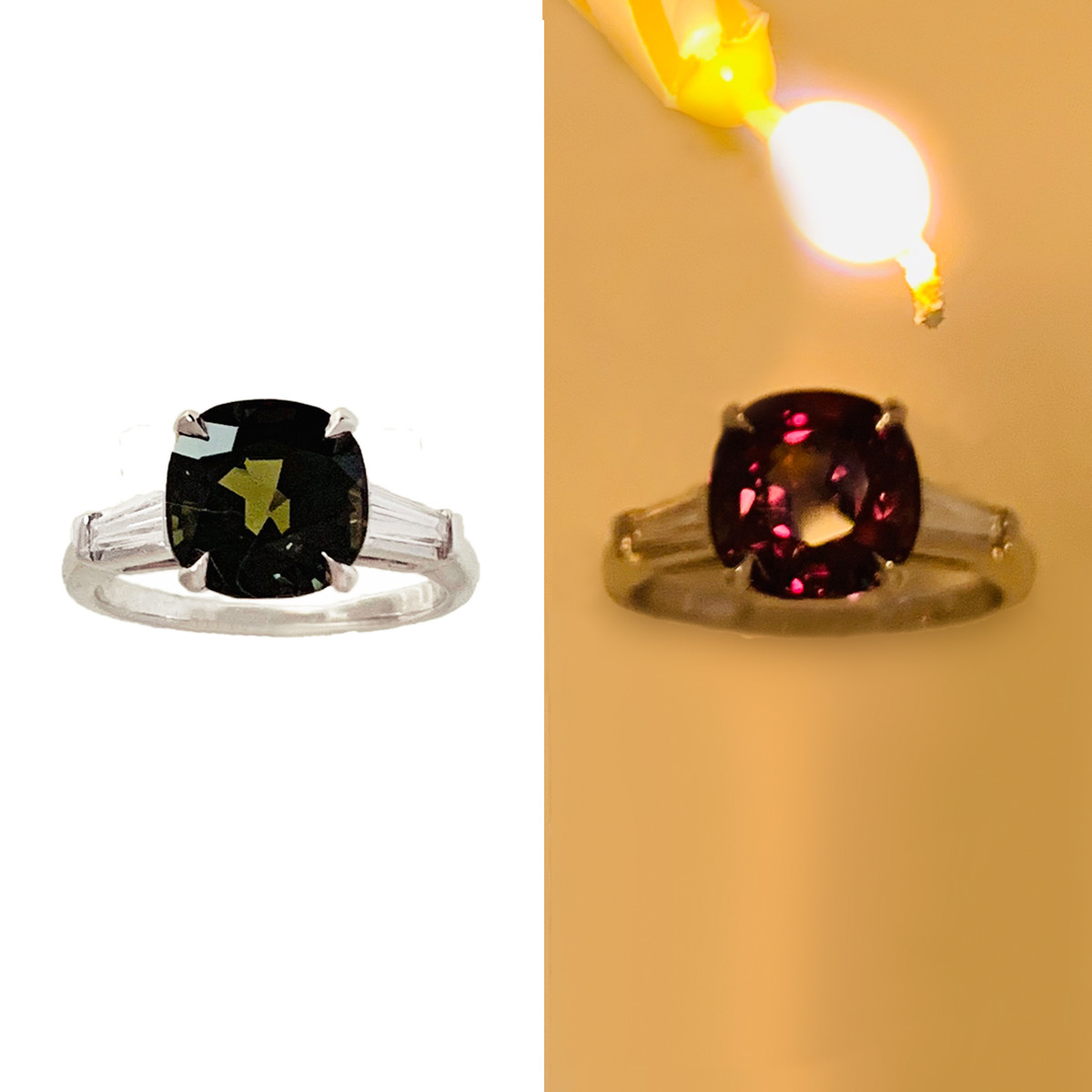
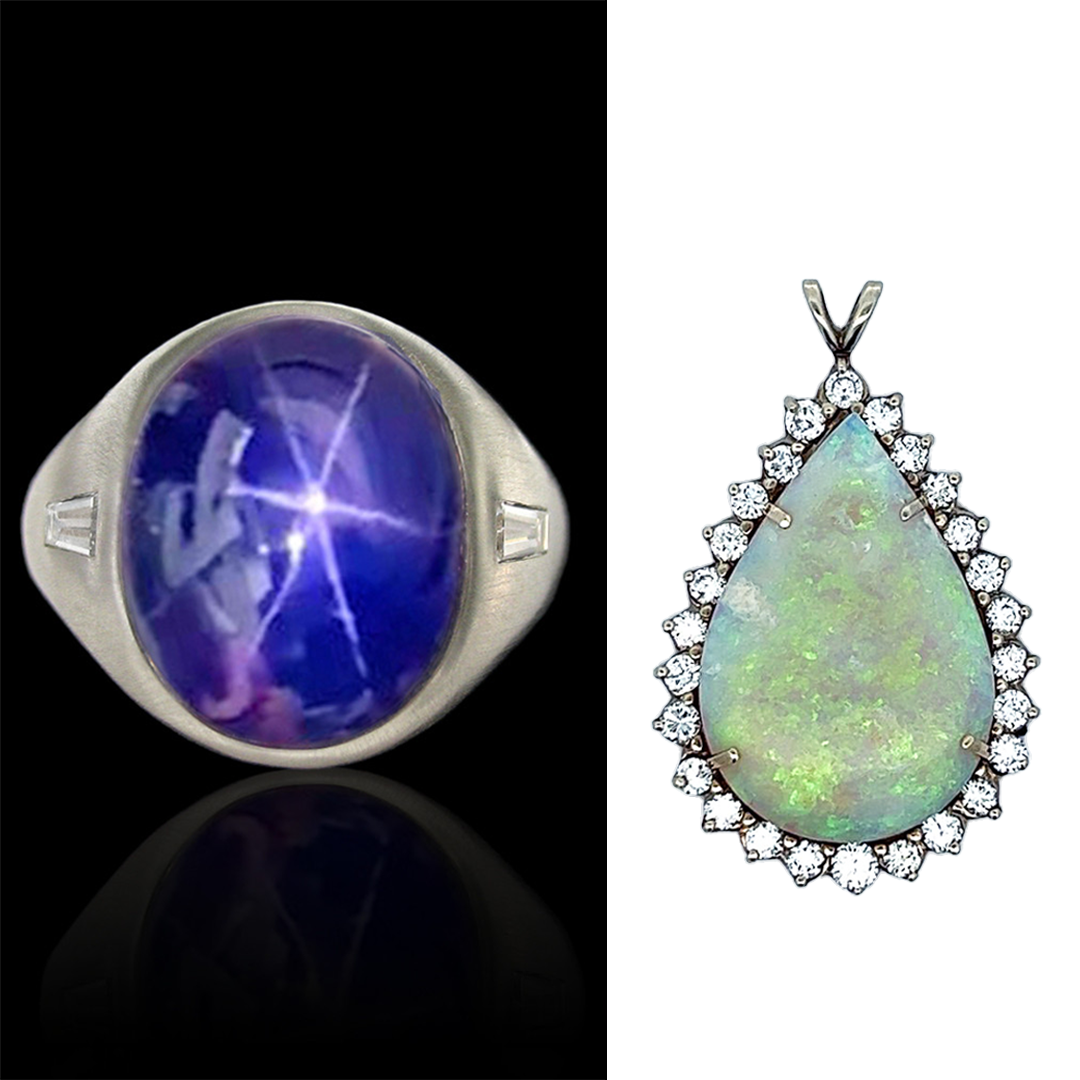
Pinchbeck is a form of brass that is a combination of copper and zinc mixed together to look like gold. It was popular in the Georgian and early Victorian eras as an inexpensive “gold” metal that allowed more people to have jewelry. It was invented by Christopher Pinchbeck, a clock and watchmaker, in the early 1700s and fell out of fashion when the electro-gilding process was invented in 1840 and the use of 9-karat gold was legalized in England in 1854.
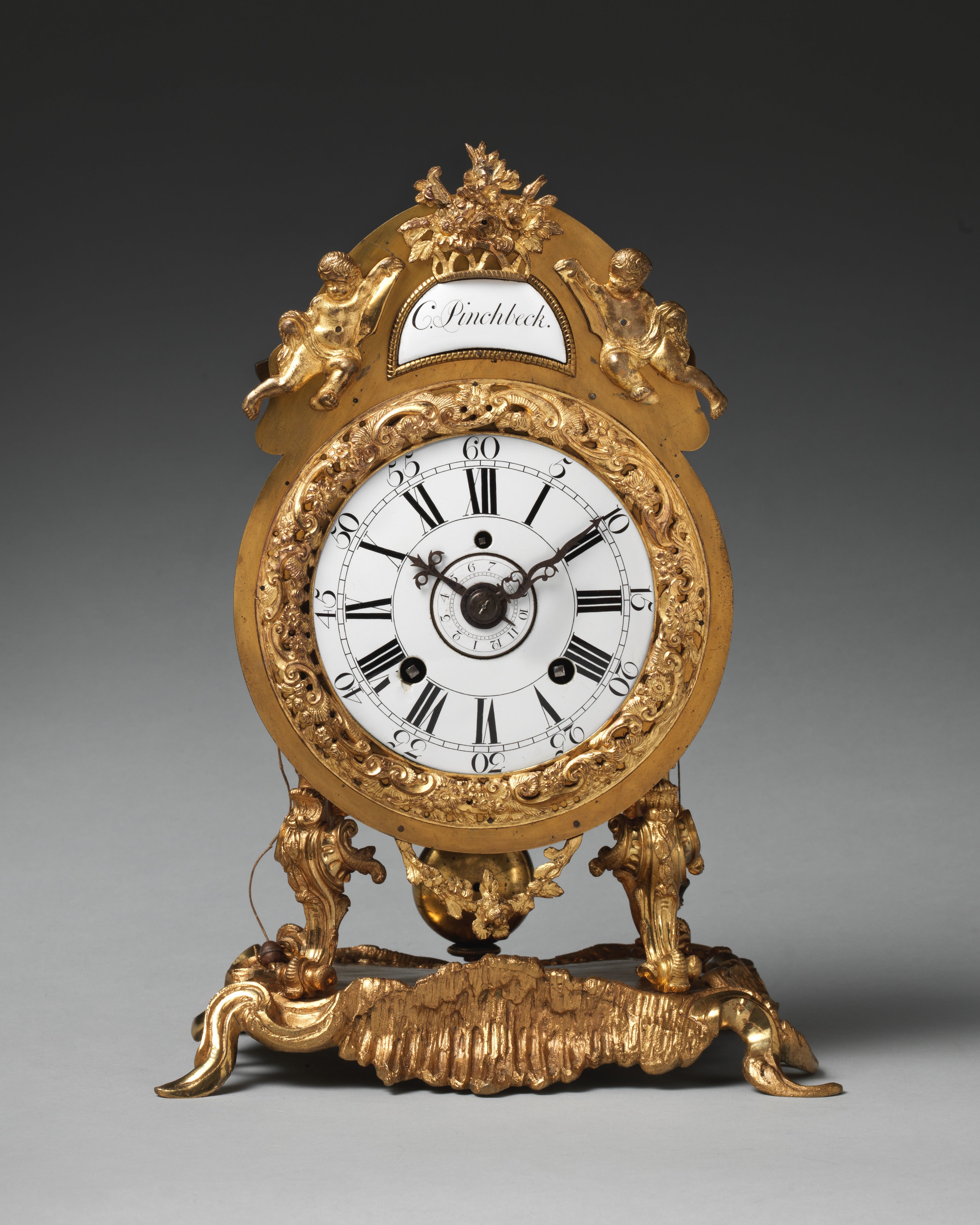
A very popular colored gemstone in the Georgian, Victorian and Edwardian eras, pink topaz gets its color from the presence of the element chromium. Natural color pink topaz are very rare and can be quite pale, so jewelry makers often used red foil backings to amp up the color of the stones. Another reason pink topaz was popular in the 1700s, 1800s and early 1900s was because they looked particularly beautiful in candlelight, which was the main source of light at that time. Topaz tend to be clear with few to no eye visible inclusions so between the clarity of the gem and the way it refracts light the stone looks really good in low light situations.
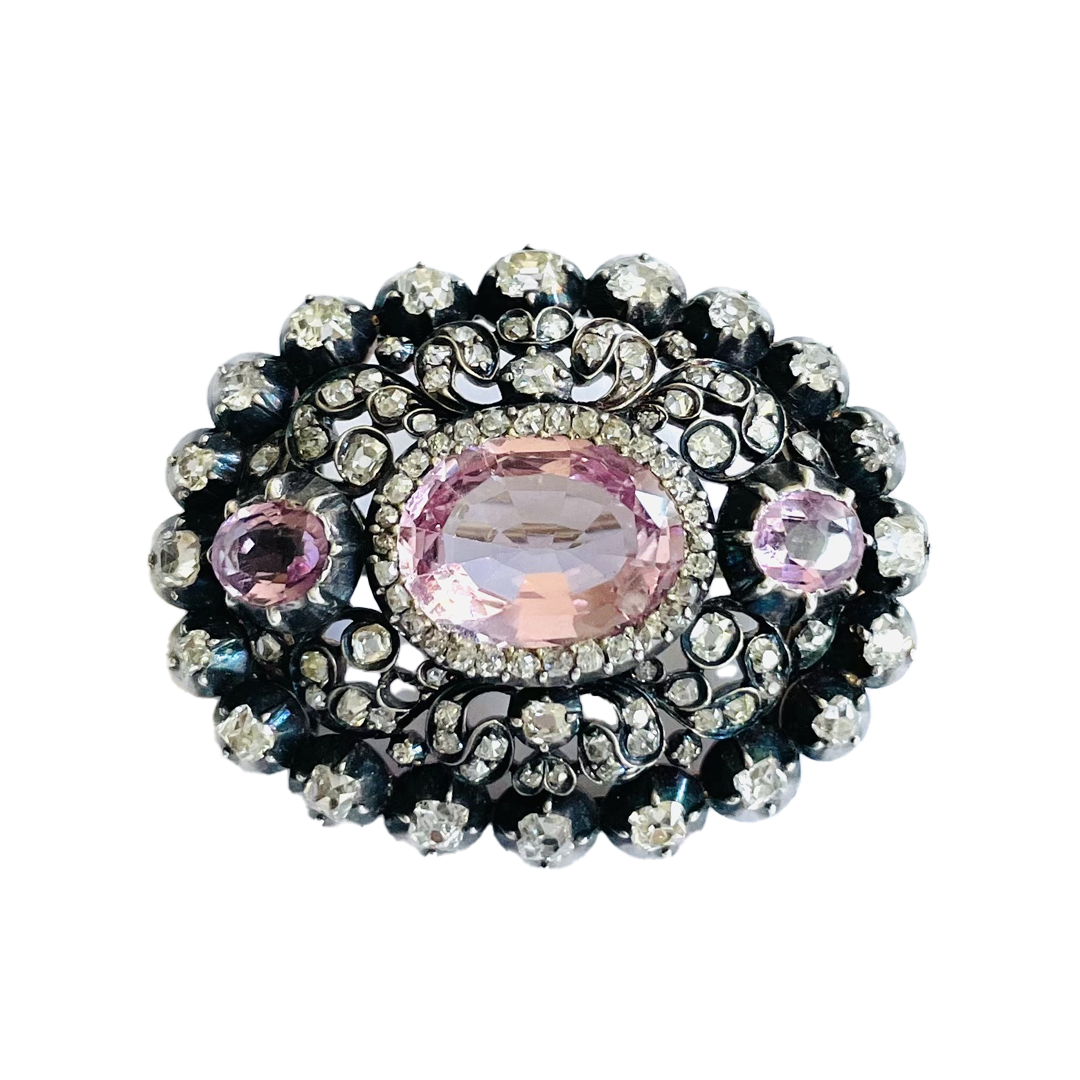
Platinum is an extremely dense, naturally white metal that is, tarnish resistant, hypoallergenic and durable. There are six metals in the platinum family – Iridium, osmium, palladium, platinum, rhodium and ruthenium. Platinum, iridium and rhodium are used in jewelry.
The first platinum discoveries were found 3,000 years ago in ancient Egypt. Platinum didn’t really get much play until the 1500’s when the Spanish conquistadors landed in South America searching for gold. Instead they found platinum, but they thought it was silver and tossed it aside. Platinum has an extremely high melting point, which made it challenging to craft into jewelry. High heat blow torches became available in the early 20th century and that gave jewelers the ability to create lacy, lightweight intricate jewelry from this most precious metal. Its use in jewelry came to a halt when it was declared a strategic metal and reserved for military use during World War II. Platinum had a resurgence of popularity in the 1950s when formal jewelry was the style. It fell out of favor during the next three decades and then in the 1990s platinum made a comeback, mainly in bridal, and continues to be on trend today, especially in high jewelry.
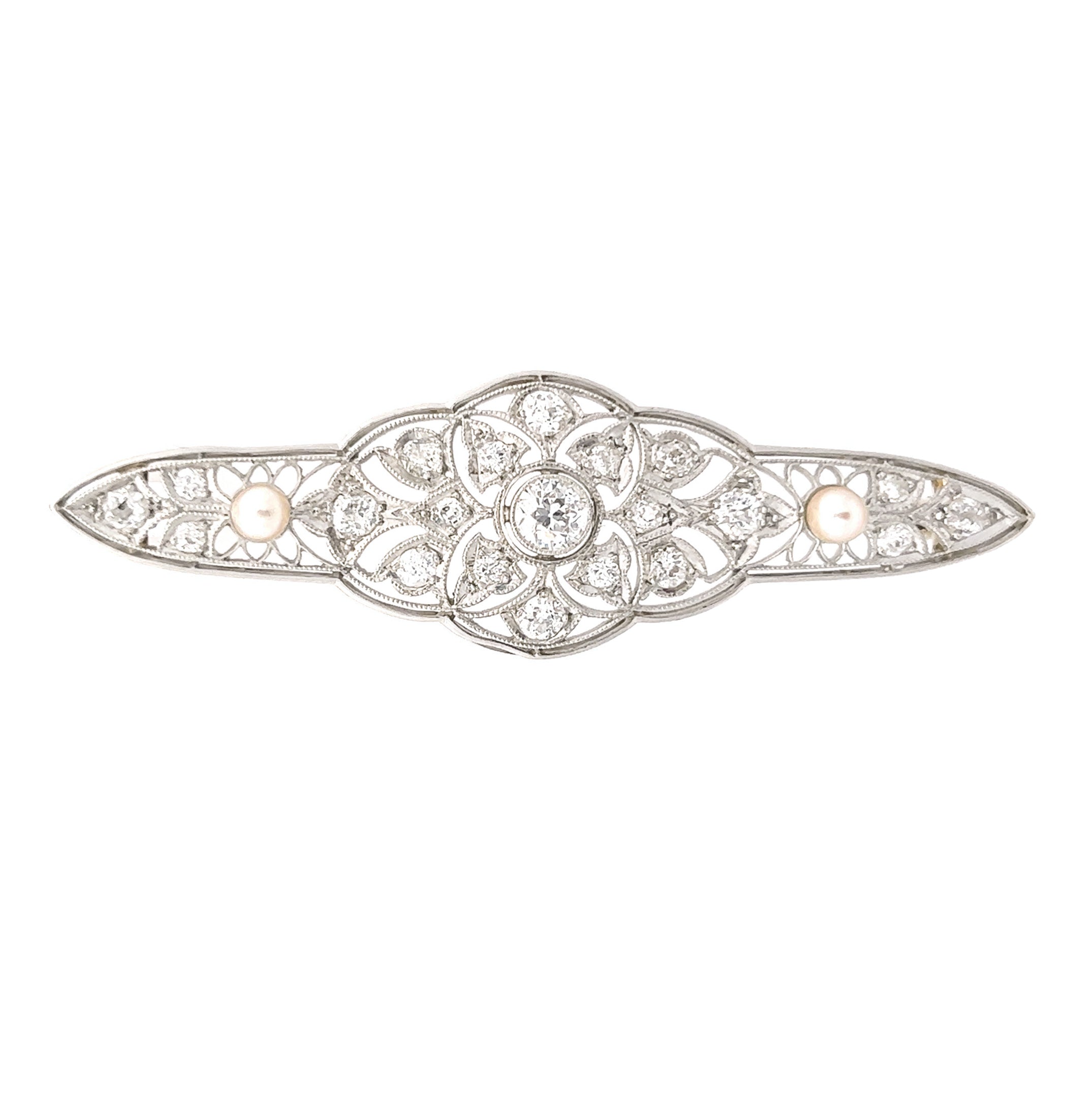
In platinum topped gold, platinum was set over gold. This technique was used in the late 1800s and early 1900s when the technology to work with platinum was invented.
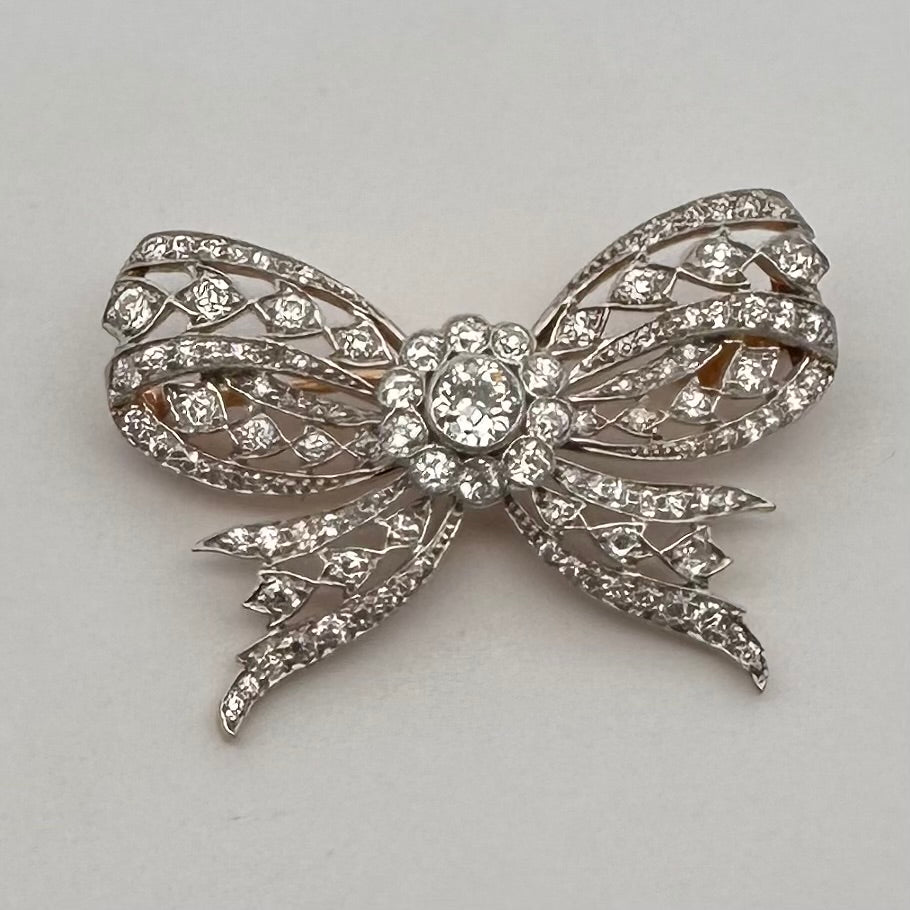
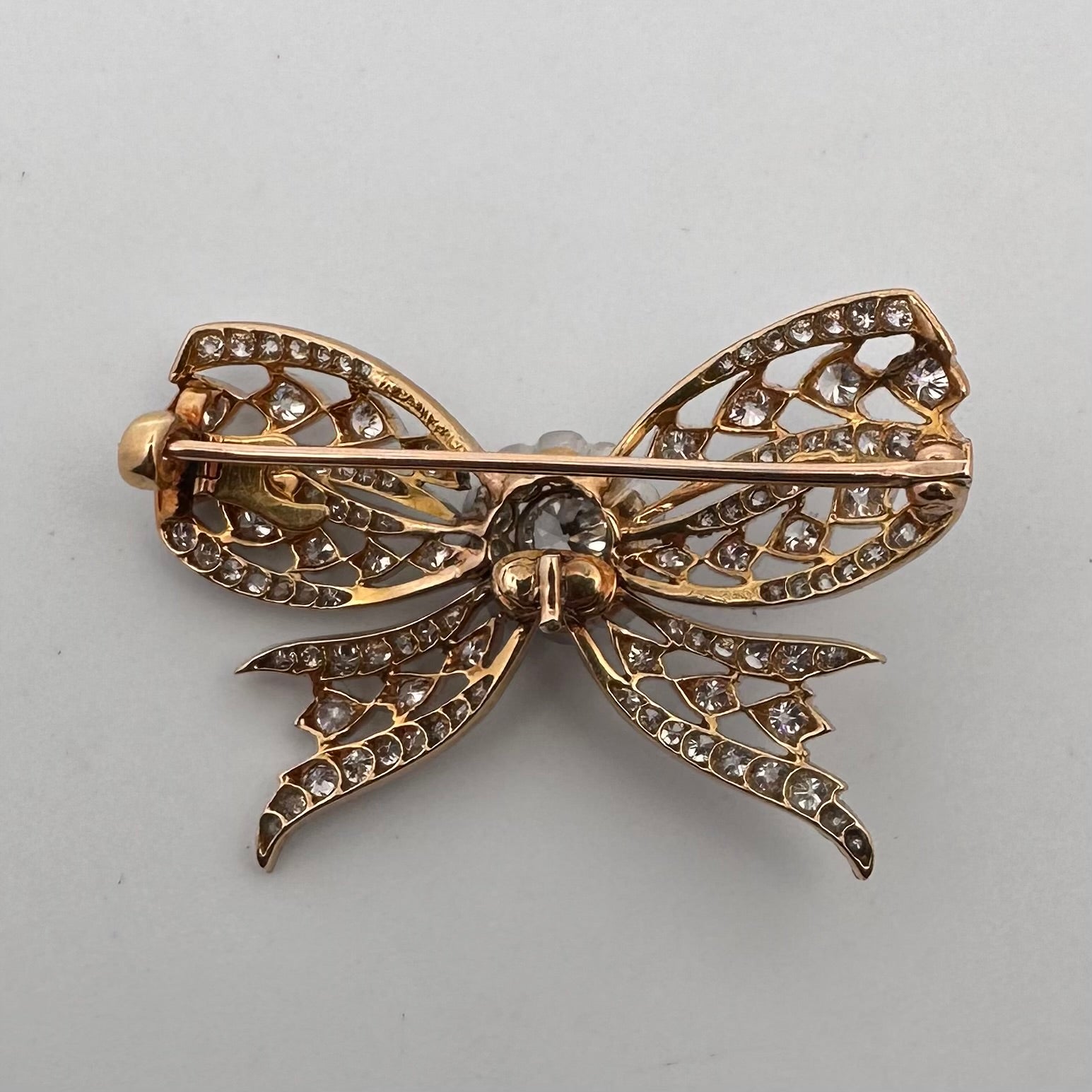
Play-of-color is the flashes of color that are seen in an opal when the stone moves. Opal is made of silica formed in tiny spheres and has a grid-like structure that allows light to flow between the spheres creating play-of-color. Due to its play-of-color, opal is one of the phenomenal gemstones.

Plique à Jour is a type of enamel work that was used extensively in Art Nouveau jewelry. It creates an effect similar to a stained glass window. The spaces for the enamel are created using a foil metal backing that will be removed when the enameling is finished. The backing may be peeled away or sometimes an acid is used to remove it. Plique-à-jour is more fragile than most other enamels because it has no backing and it has a delicateness to it that other enamels do not have.
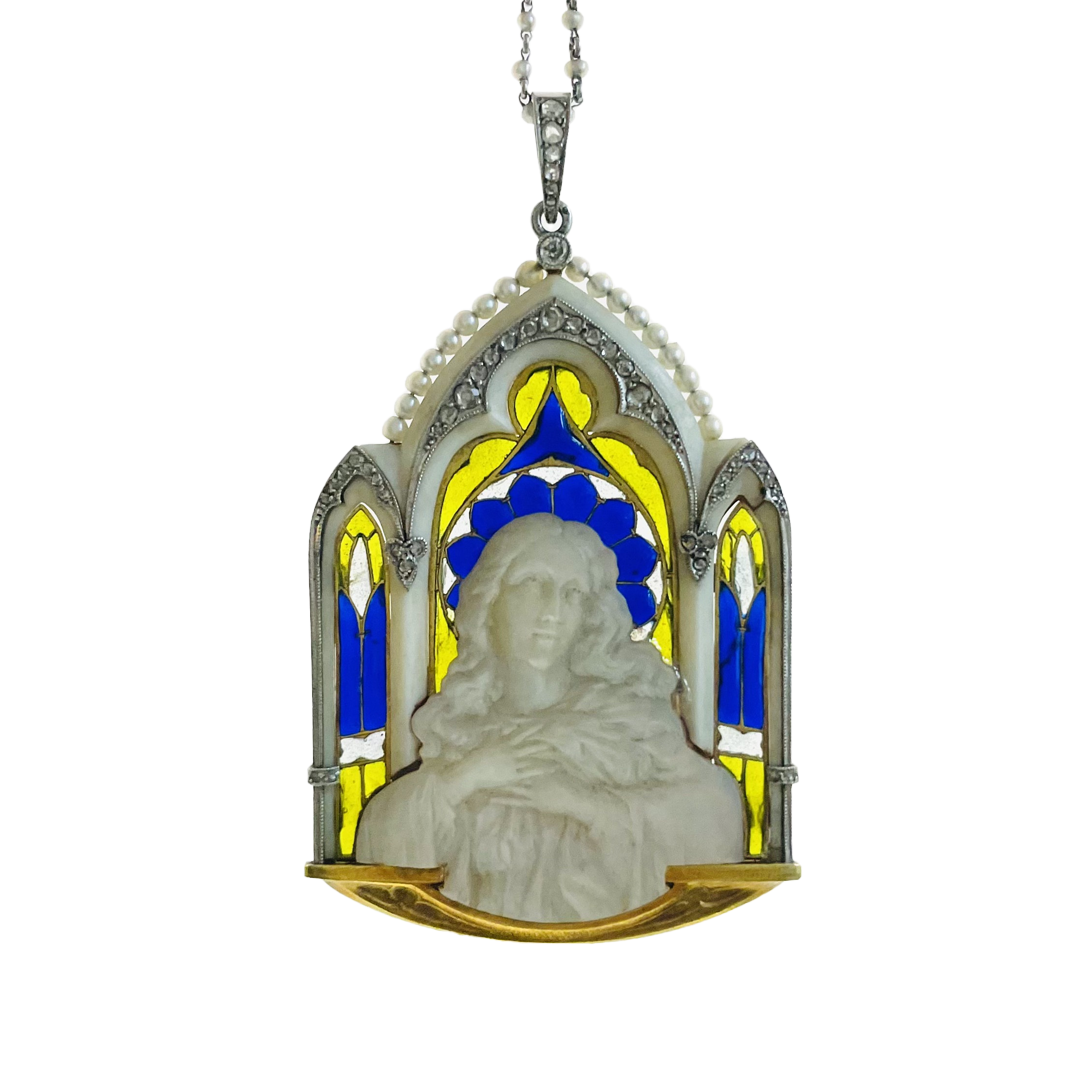
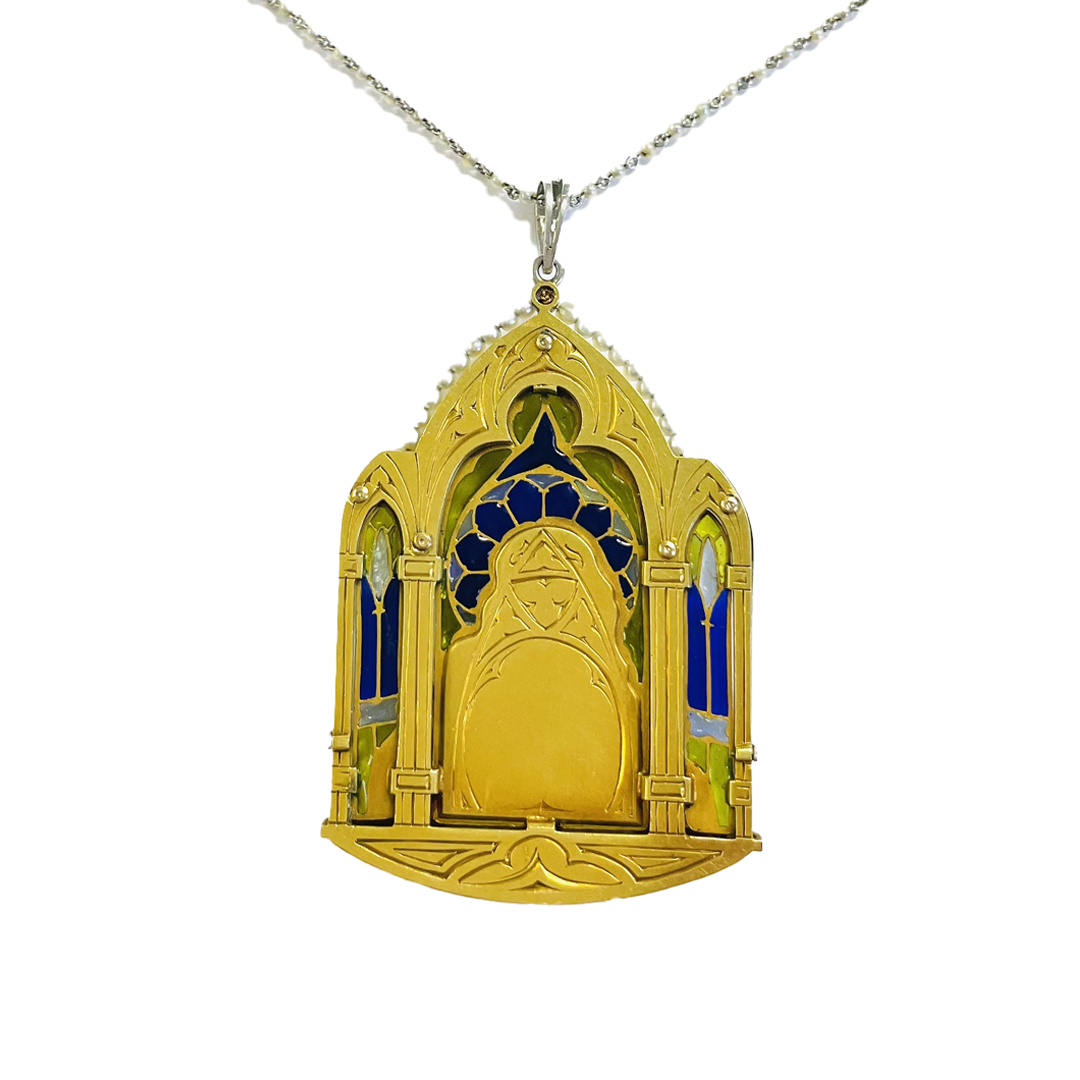
A portrait cut diamond is a thin, flat diamond with no inclusions. The portrait cut was first developed in India. The Mughal Emperor Shah Jahan had very thin, transparent diamonds placed over miniature portraits to protect them, which is why they are called portrait cuts. These diamonds are understated and without the usual sparkle.
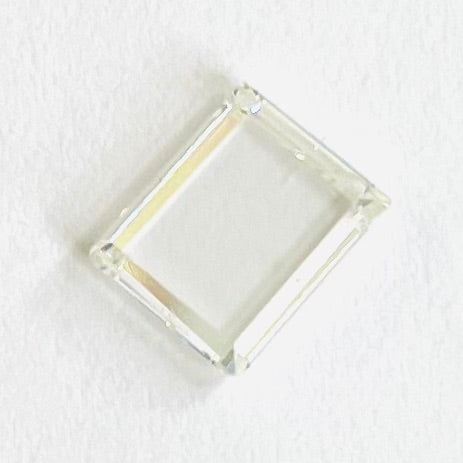
A prong set is a type of setting that uses tines, or prongs, to hold a gemstone or diamond in place. Before the stone is set the prongs stick up from the ring basket. The stone is placed inside the prongs, which are then pressed into place and polished. Prong settings allow light to enter the stone making the gem livelier and more sparkly. Most prong settings use four to six prongs, but this versatile setting can also be found with as few as two prongs and as many as eight or twelve.
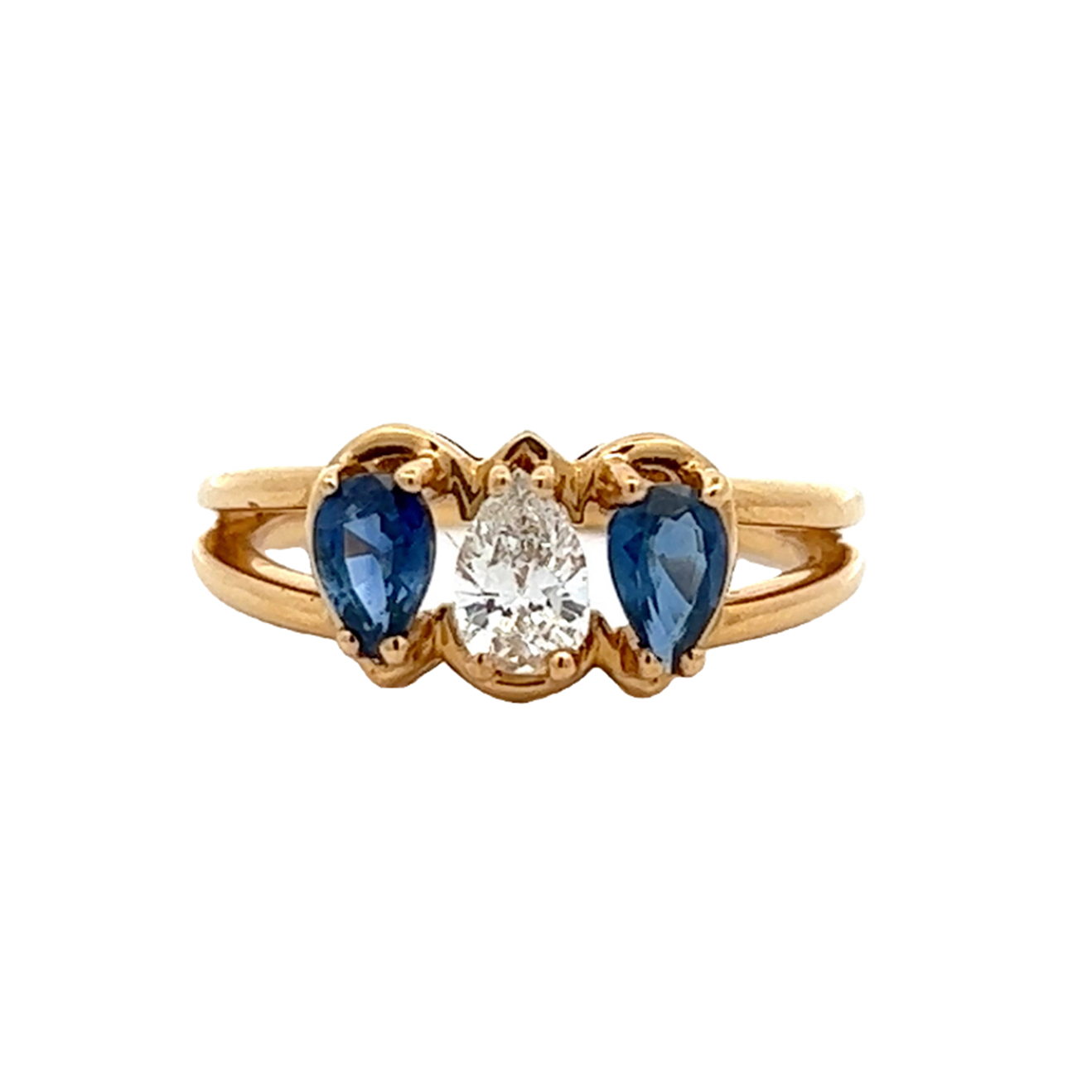
Provenance refers to the background of a piece of jewelry or gemstone, specifically who once owned it and where it came from. For a gemstone, provenance will include country of origin and well as who owned the stone and any jeweler who may have handled or set the stone. For jewelry, provenance will include the company that made the piece as well as any people who owned the piece. In short, provenance is the life story of a gemstone or piece of jewelry that chronicles when it was made, who made it and who owned or wore it. Depending upon where a stone is from, or who owned a piece of jewelry, it may add value to it, perhaps making it more expensive. Sales receipts, original boxes, letters of authenticity, lab reports and other materials help to establish provenance. For example, if a piece of jewelry was formerly the property of a famous person (celebrity, socialite, business tycoon) or royalty, it will have provenance.
Natural pearl, diamond and platinum necklace, signed Tiffany & Co., circa 1925. Provenance, formerly the property of Mrs. Horace Dodge, of Dodge automobiles.
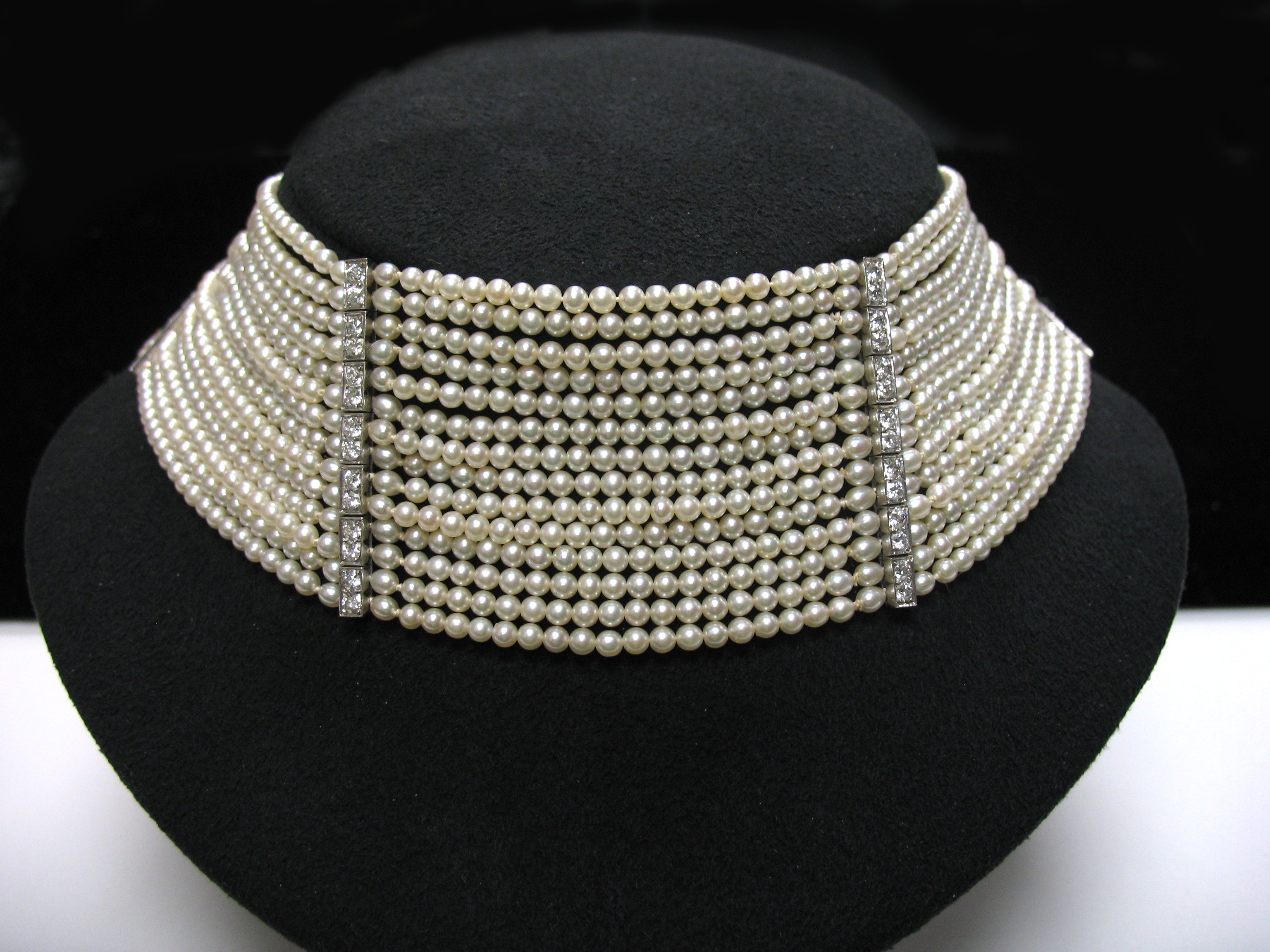
Q
Quartz, also referred to as rock crystal, is one of the most common minerals on the planet, it is so abundant that most sand is quartz. Made of silicon dioxide, quartz is clear, but also comes in many colors that are identified by different names. Amethyst is purple quartz, citrine is yellow quartz, ametrine is a mix of amethyst and citrine. There is also smoky quartz, which is brown; rose quartz, which is pink and prasiolite which is a pale green. Carnelian, aventurine, agate, chrysoprase, onyx, jasper and chalcedony are also forms of quartz. Throughout history, quartz has been associated with mystical prowess — the fortune tellers crystal ball — and has often been carried as an amulet. Quartz is found in Brazil, China, Russia, Japan, South Africa, France, Germany, Belgium, Bulgaria, the United Kingdom and the U.S. Quartz is a hard gemstone that will stand up to daily wear and it is frequently found at wallet friendly price points.
Photo courtesy, Macklowe Gallery.
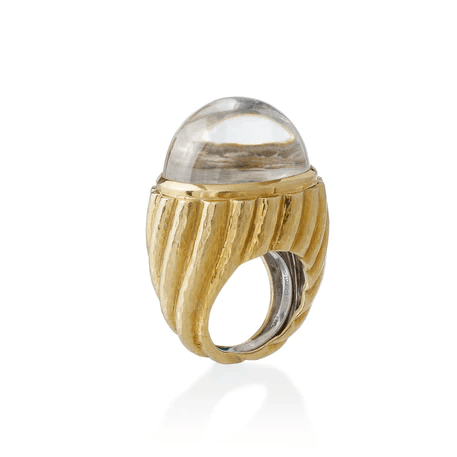
Quatrefoil is a symmetrical four lobbed shape that is representative of a four leaf clover or flower with four rounded petals. The four rounded lobs are a defining element of quatrefoil. It is a decorative motif that is found in jewelry, art and architecture, created by four intersecting circles that overlap to create one motif. It is a shape that is found in many countries and many cultures, sometimes with religious connotations. Quatrefoil translates to four leaves.
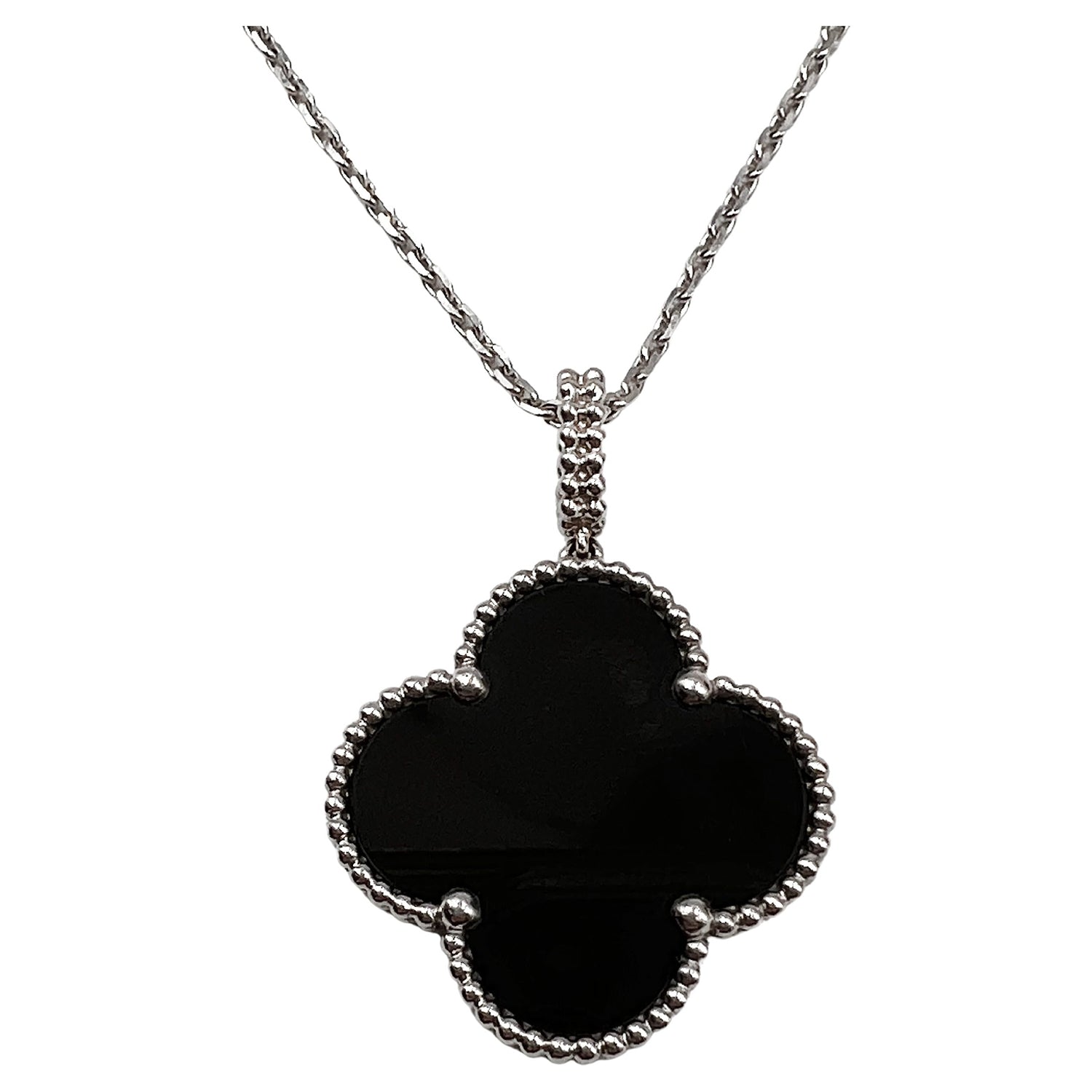
R
The Retro era was from 1940 through 1949, the first half of the decade was all about the war effort, which ended the Great Depression. The second half of the decade was about recovering from the war, a time when the economy began to boom, with houses and babies, top priorities of this newly prosperous time. Oversized jewelry styles with large colored gemstones — especially citrine and aquamarine — set in rose gold, scrolling forms and fan shapes were prominent in 1940s jewelry.
To find out more, read our blog: Retro Chic: Jewelry of the 1940s
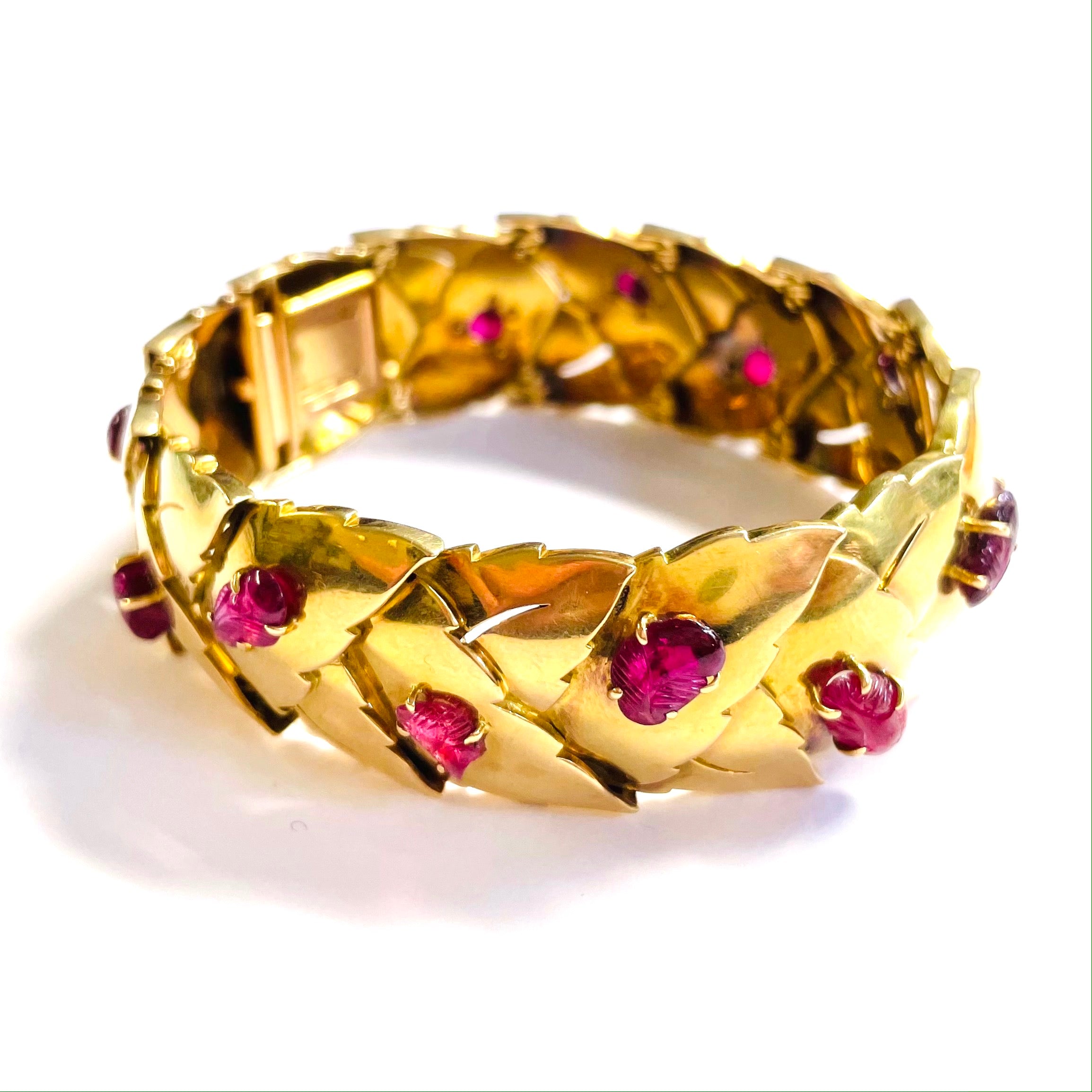
A continuous line of diamonds that go around the neck, the diamond rivière necklace, sometimes called a “river of diamonds” or a “river of light”, was first introduced in the mid-1700s. These necklaces were made of silver collets with diamonds, or any other gemstone, that were linked together. The necklaces are comprised with one gemstone, such as all diamonds or all amethyst. The style continues today, but newly made modern versions of this style are generally referred to as a “tennis necklace”.
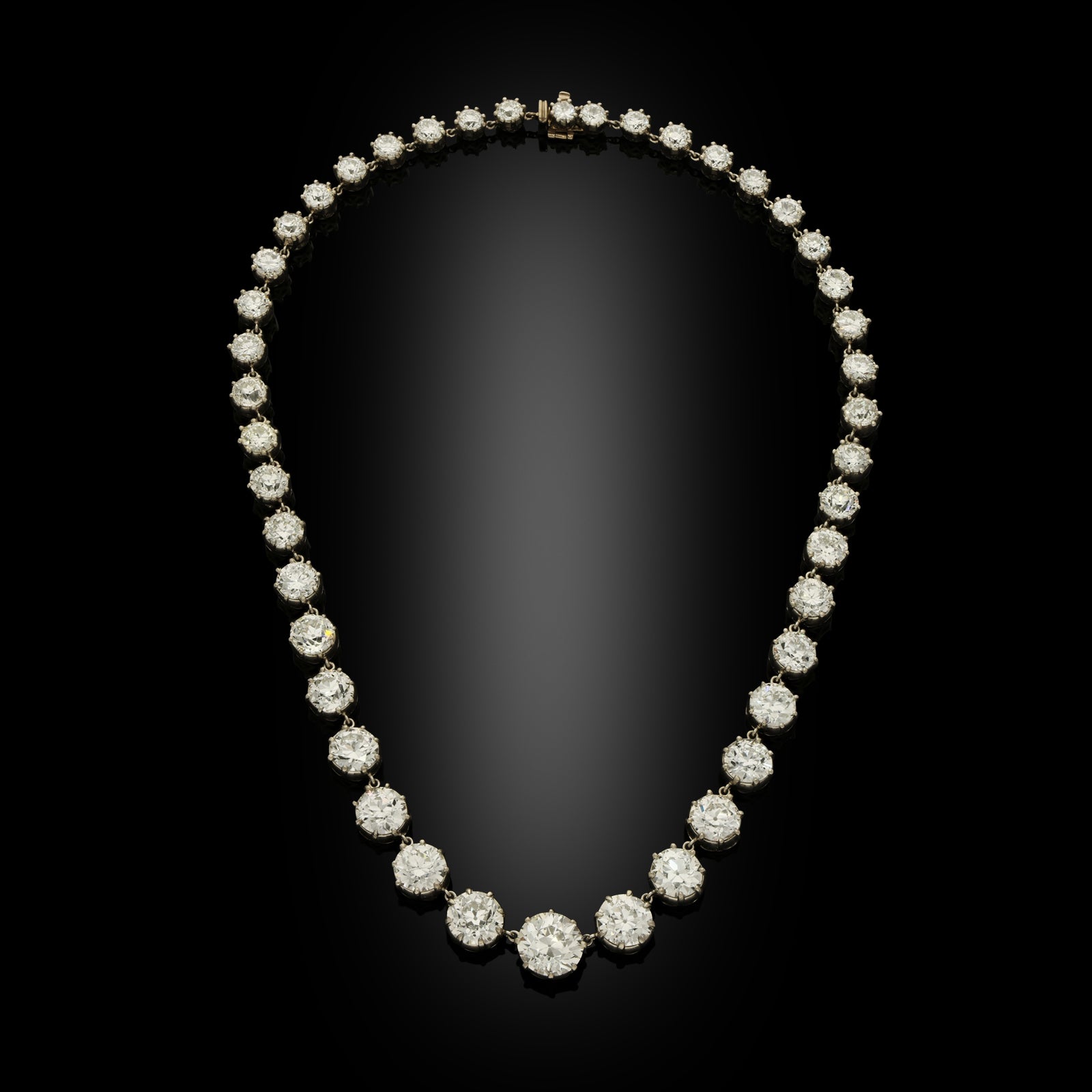
Developed in the 1500s, the rose cut got its name because it looks like a blossoming rose bud. A rose cut diamond is dome shaped with a flat bottom. The dome is covered with triangular facets. Rose cut diamonds have a lovely shimmering sparkle and a romantic, dreamy feeling.

Rose gold, often called pink gold, is created by mixing copper with yellow gold. The color is sometimes made lighter by adding a little silver into the mix, or darker by adding more copper. It may be 14-karat or 18-karat gold.
Photo, courtesy, Bernard Nacht.
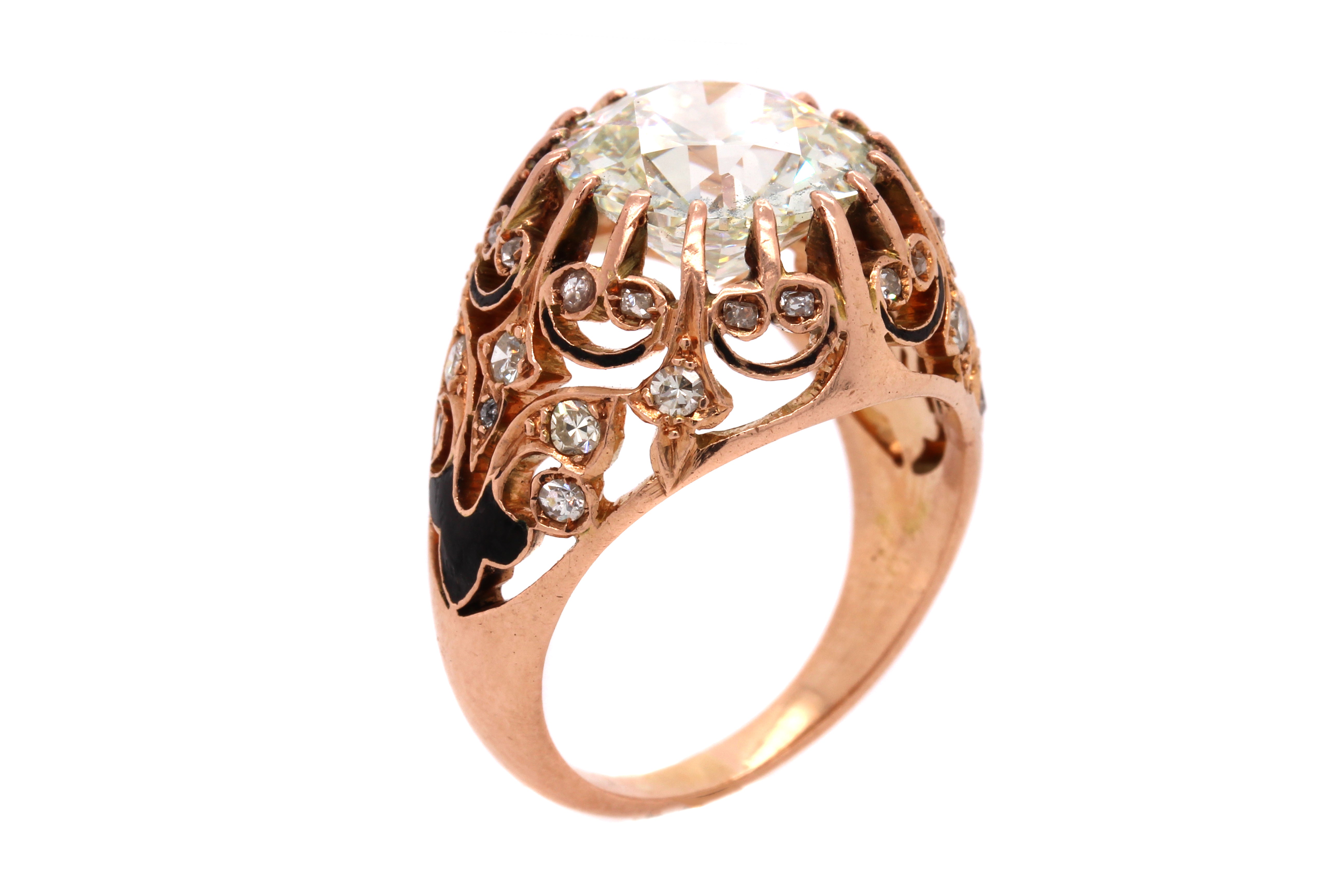
S
French for a very long necklace, often falling to the waist, that frequently has a tassel or other decorative piece attached.
Photo, courtesy French Collection.
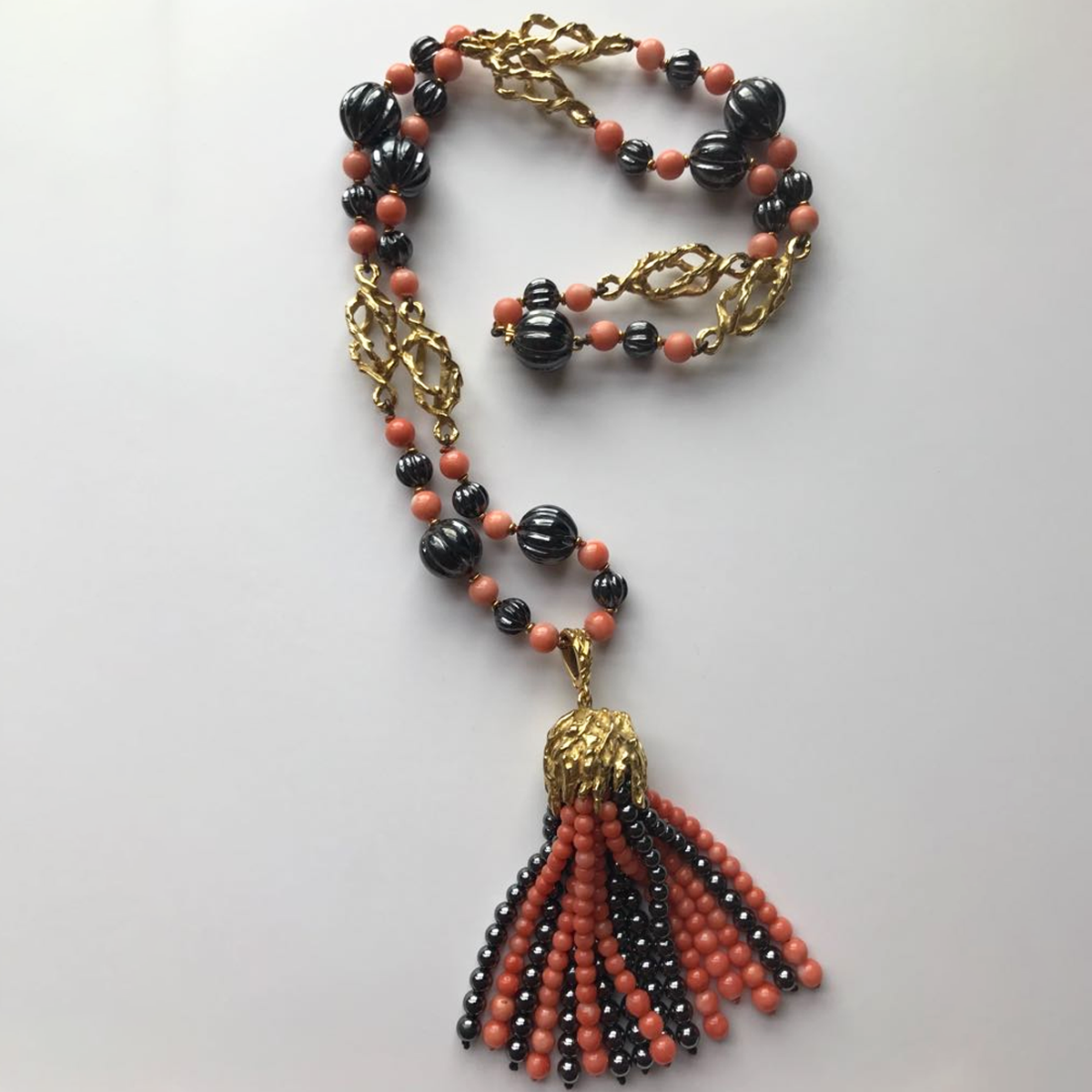
Silver is a naturally white metal that is used for making jewelry, tableware and other decorative objects.
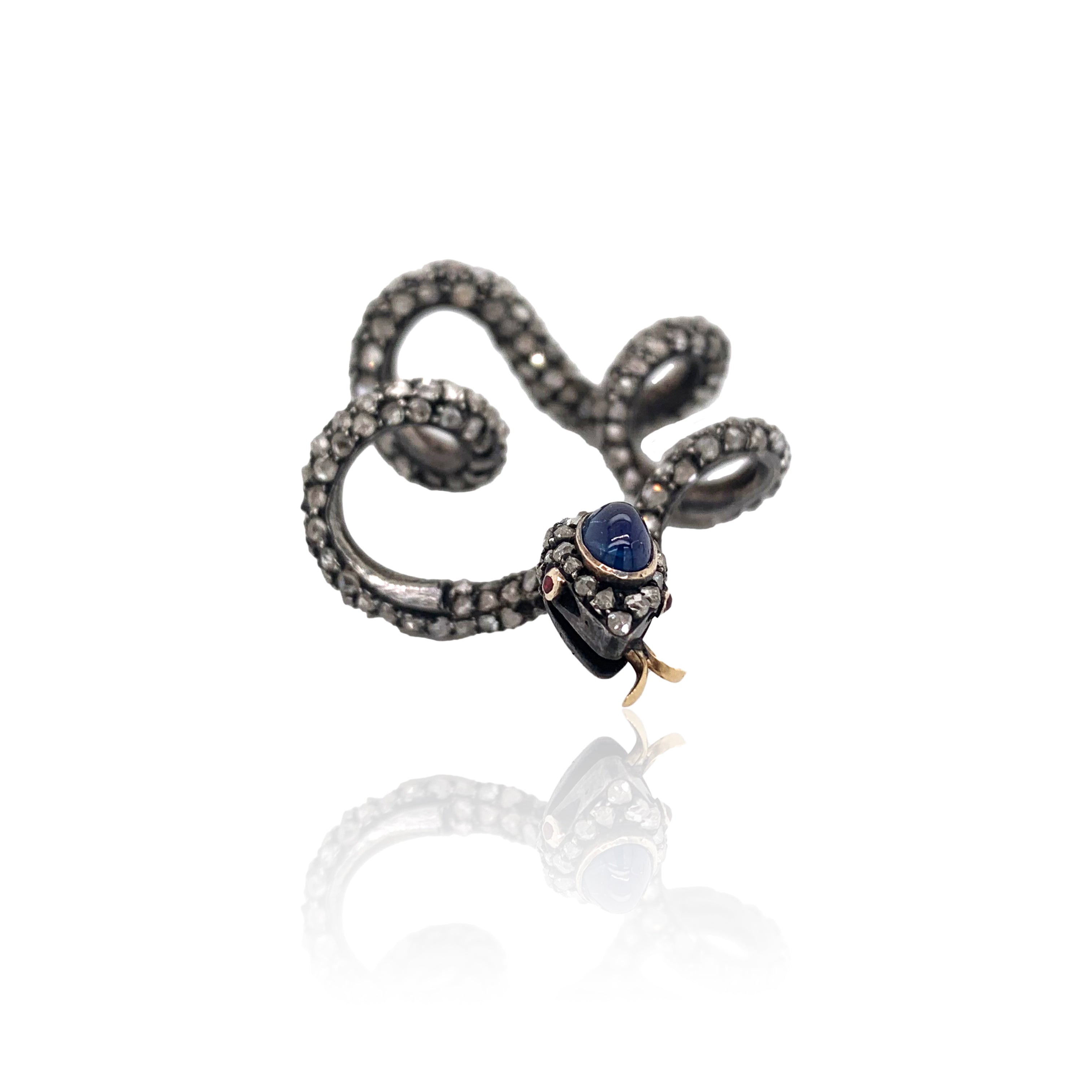
Diamond jewelry was frequently set in “silver topped gold”. Diamonds looked better set in a white metal, but silver tarnished and left marks on skin and clothing, so it was backed with gold. This process allowed the gold to touch the skin or clothing, so staining was avoided, while the silver optimized diamond sparkle.
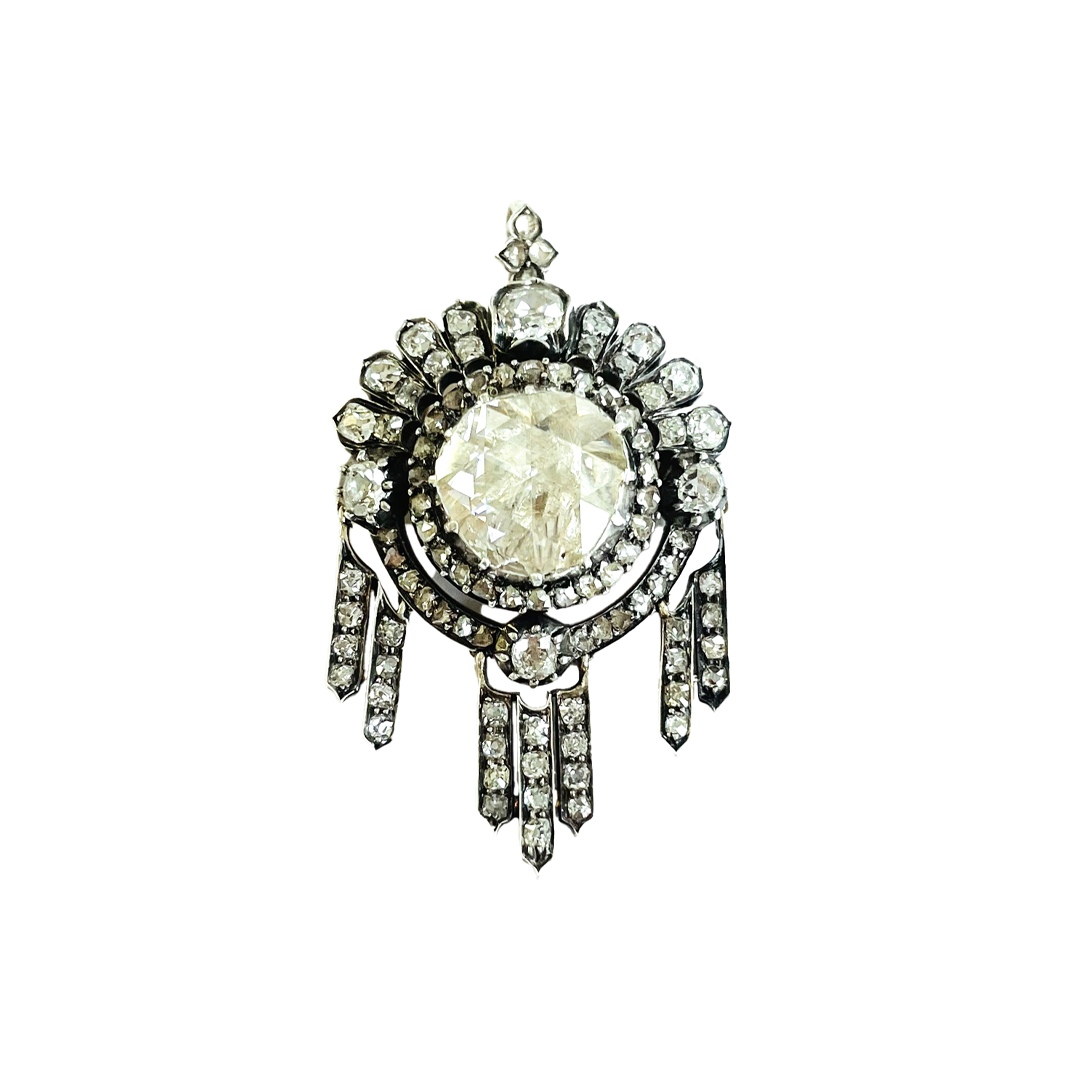
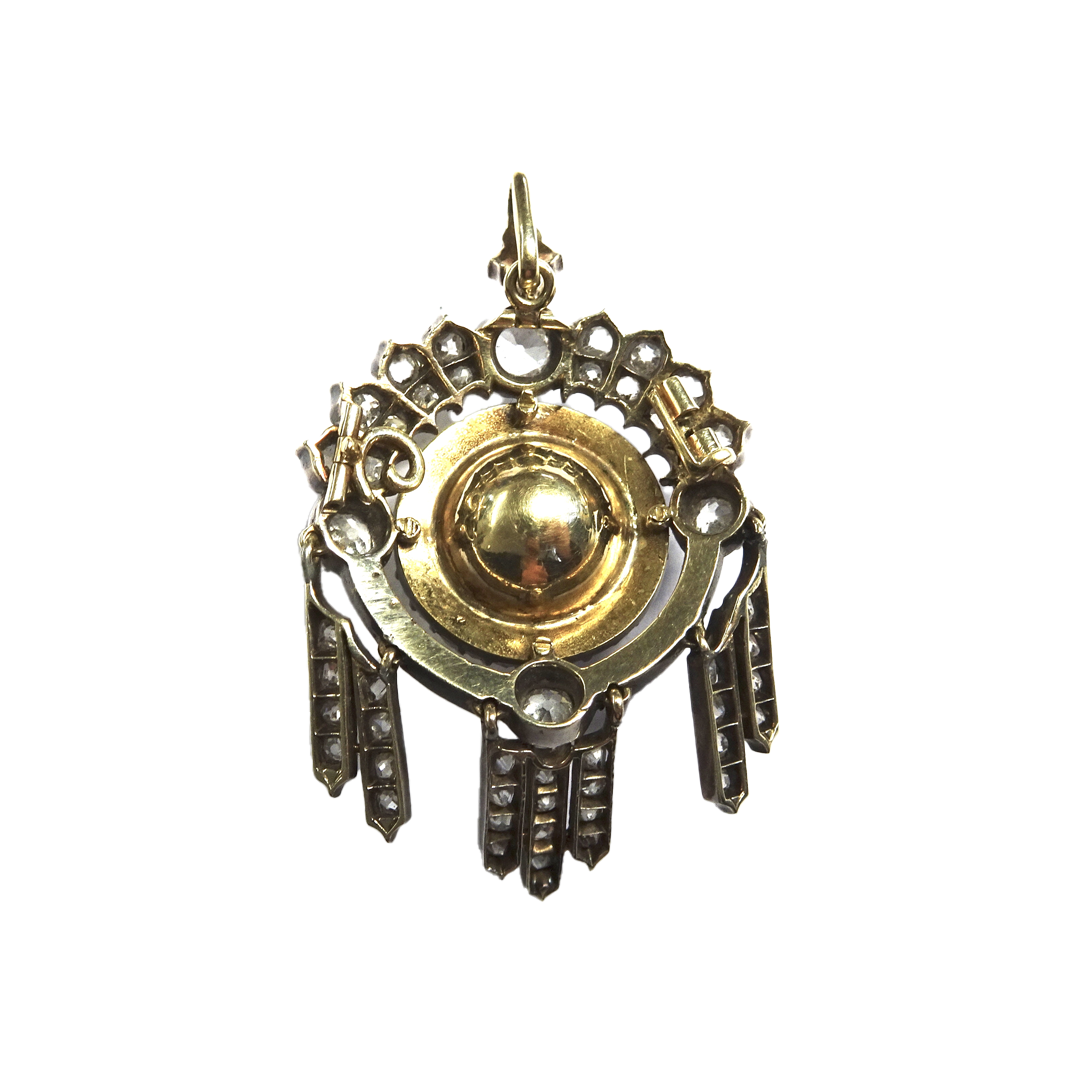
A single cut diamond is a very small diamond that is cut as a round brilliant but with only 16 to 18 facets rather than the usual 58 found in a round full-cut brilliant diamond. Single cut diamonds are frequently used as accent stones, especially on watches. Due to a lesser amount of facets, single cut diamonds do not have the same bright sparkle as larger full cut diamonds, but instead have more of a shimmer.
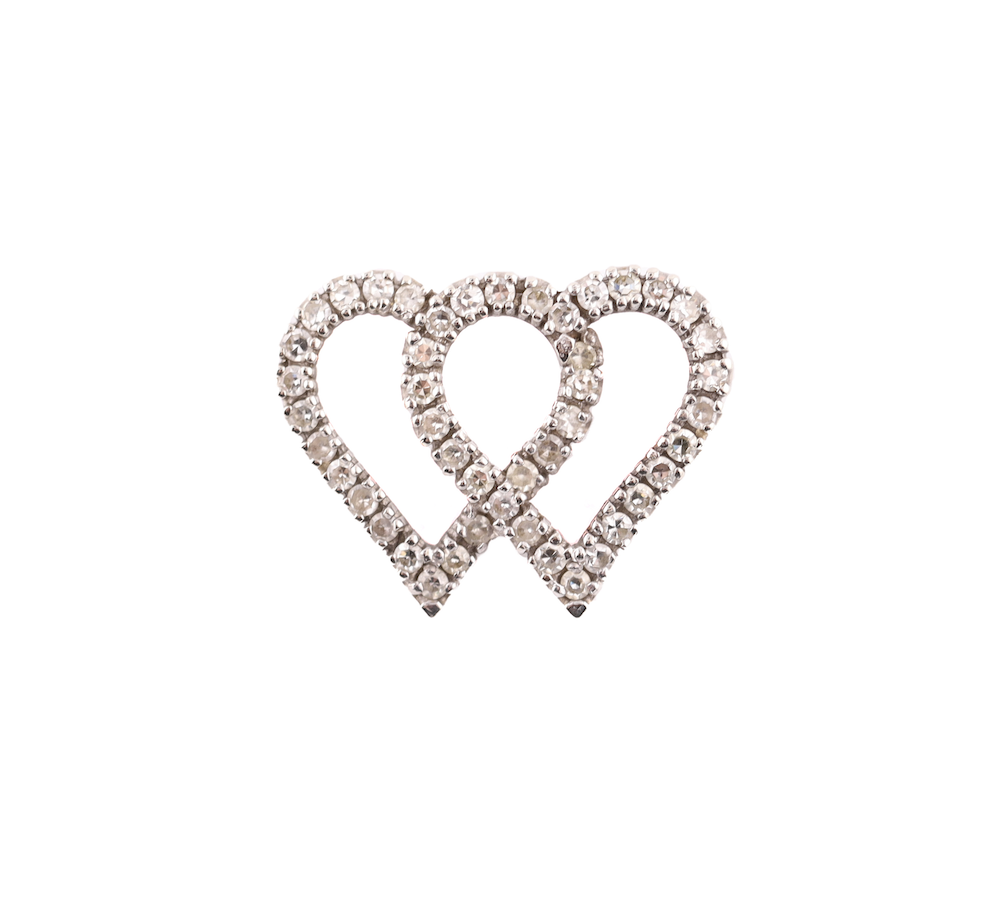
A ring set with a single center gemstone. It may have accent stones on the sides
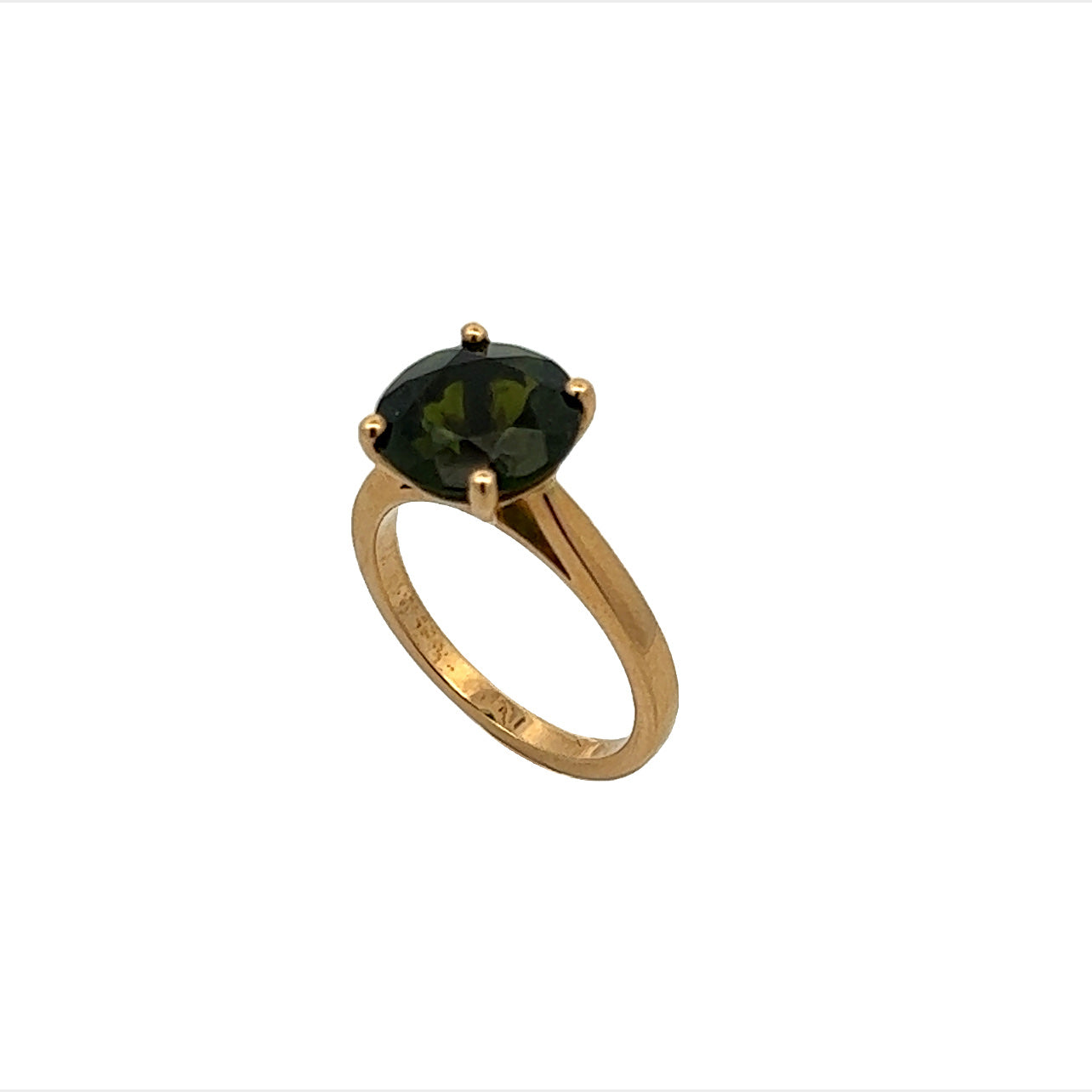
An ornamental straight pin with a decorative top and a case at the bottom to enclose the tip of the pin. In older pieces the case at the bottom may be missing. Stickpins were used to keep ties and ascots in place.
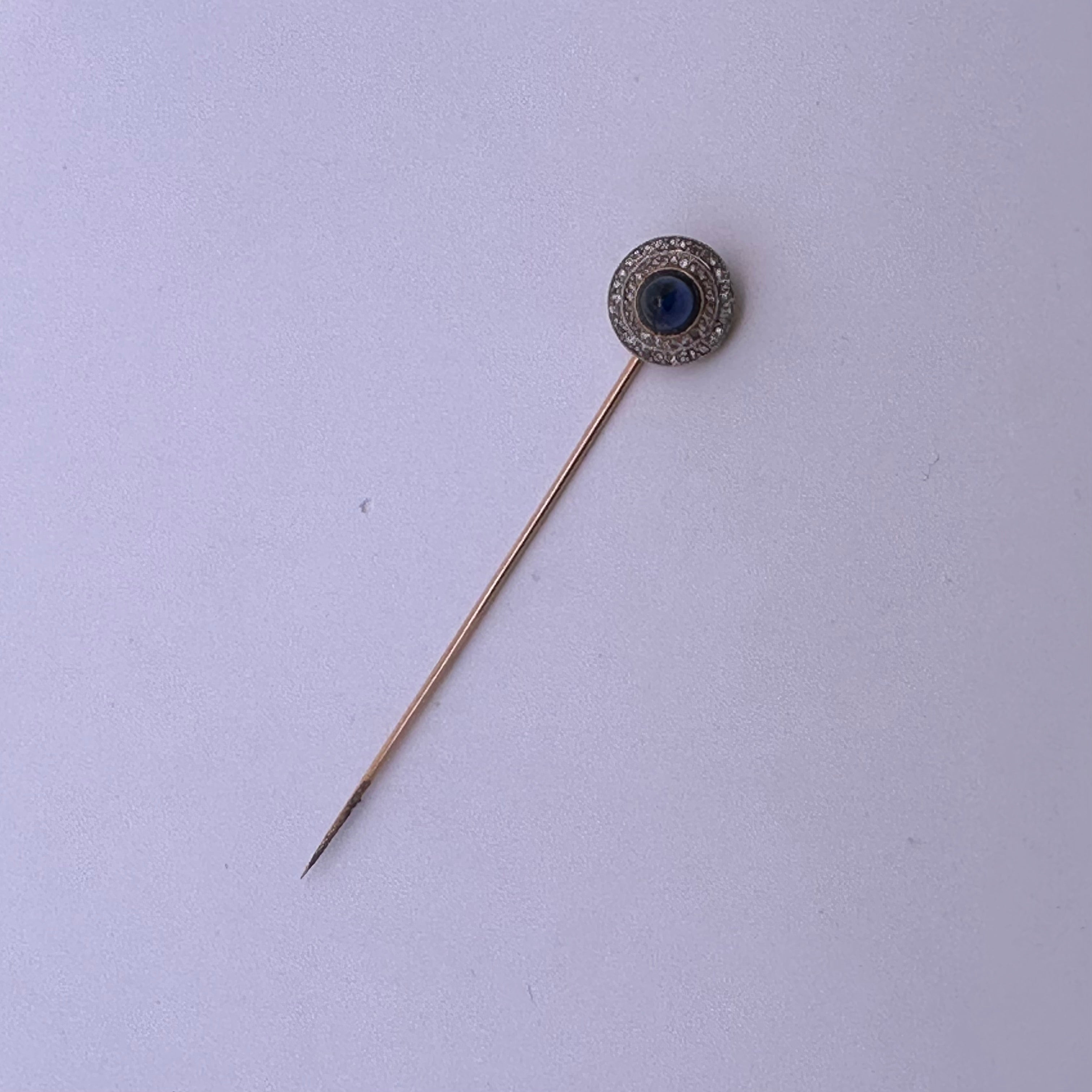
Stud earrings are worn on the earlobe. They are generally simple designs such as a single gemstone, or a small flower or other motif.
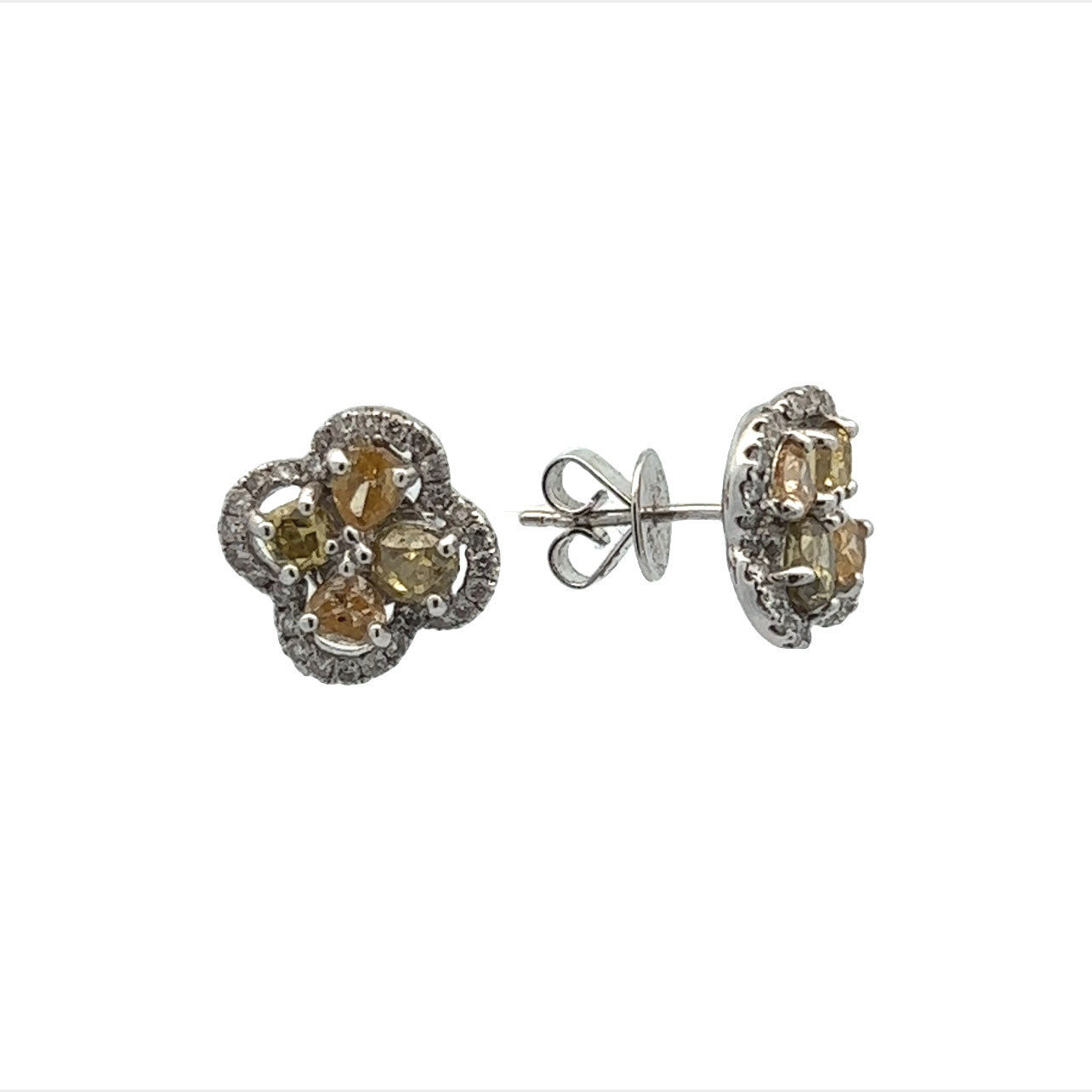
Jewelry produced between 1970 and 1979 is called 1970s jewelry. The 1970s started out with the Vietnam War at the forefront of the news as protesters continued to fill the streets with antiwar demonstrations. The war ended in the mid-1970s and the Watergate scandal led to the resignation of President Nixon. Pop psychology directed people to explore feelings and relationships. Rock remained popular with the Rolling Stones, Elton John, David Bowie, Led Zepplin and Queen leading the pack. As the decade progressed disco hustled in to take over clubs and music radio spawning a whole new fashion story and cultural touchpoint. 1970s jewelry was characterized by statement pieces, textured gold, sleek silver, chunky forms, colorful stones and enamels and lots of layers. Multicultural motifs were prominent, especially those from India or Asia.
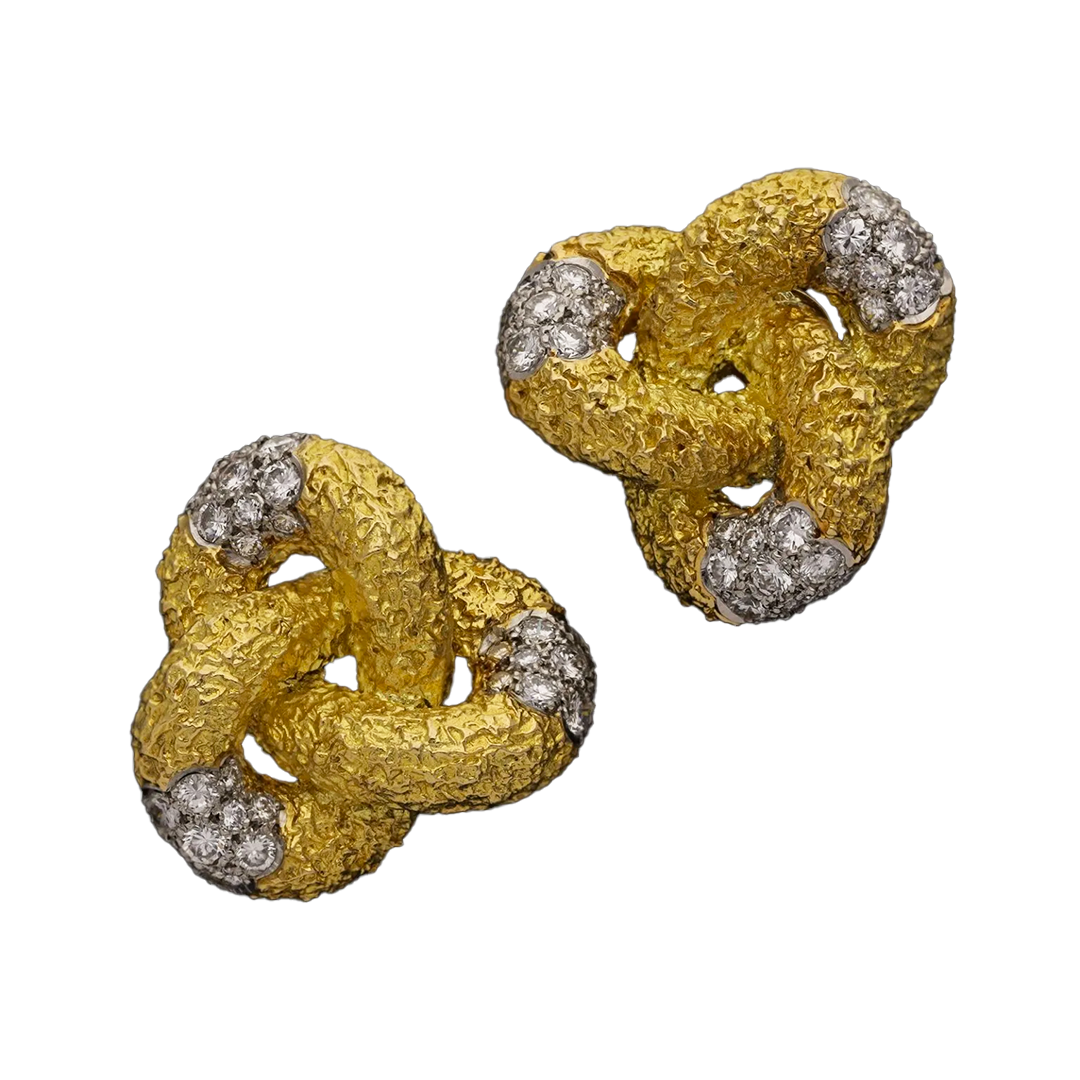
Jewelry from the 1960s was made from 1960 through 1969. At the start of the 1960s John F. Kennedy had just been elected President, the look of the time was put together and ladylike with gloves, pillbox hats and a prim strand of pearls accessorizing a simple sheath dress or suit. By the end of the 1960s, hippies were taking to the streets to protest the Vietnam War. Bright colors, bold color blocking, miniskirts and go-go boots were of the moment and the bohemian look began to take hold as styles became more casual and free from the strict rules of earlier decades. 1960s jewelry styles are characterized by textured yellow gold with bold color combinations. Pieces were often abstract, large-scale and playful. Starbursts, sunbursts and other “space” themes were popular. Cluster rings were fashionable and ballerina rings were also a favorite.
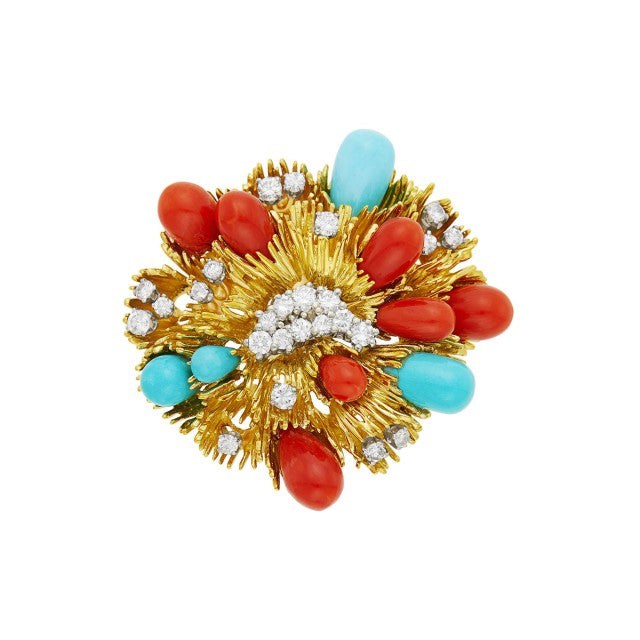
T
The table cut is a diamond cut that was developed in the 1400s. When diamond cutting first started, cutters removed the point of the pyramid shaped diamond crystal, leaving a large, flat, square shaped surface known as a table. The sides of the table cut were faceted, so there were four facets on the top sides along with the table facet. Sometimes the corners were rounded, but not always. In the early days of cutting, cutters followed the natural shape of the rough so there will be some variation in the form of the stone. The table cut is widely considered to be the first diamond cut ever developed.
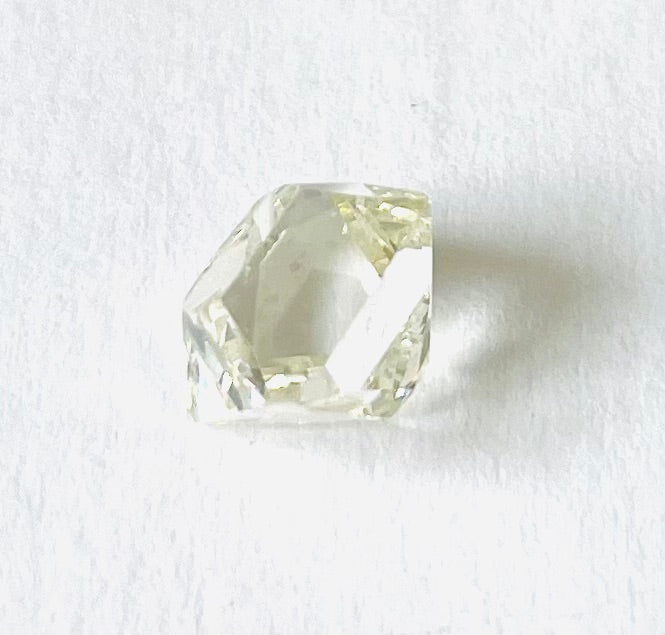
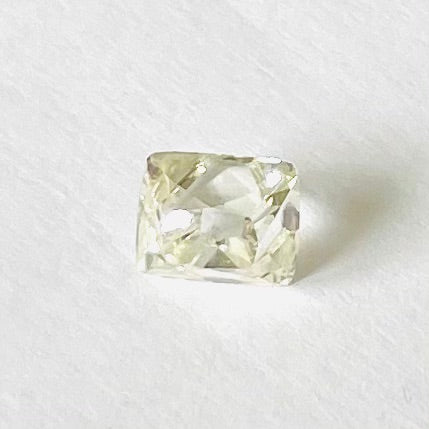
A tank bracelet, popular in the 1940s, is a chunky oversized gold link bracelet. The design was inspired by the tire tread marks left by tanks during World War II. Sometimes these bracelets are called Tank Tire Bracelets, or Tire Tread Bracelets.
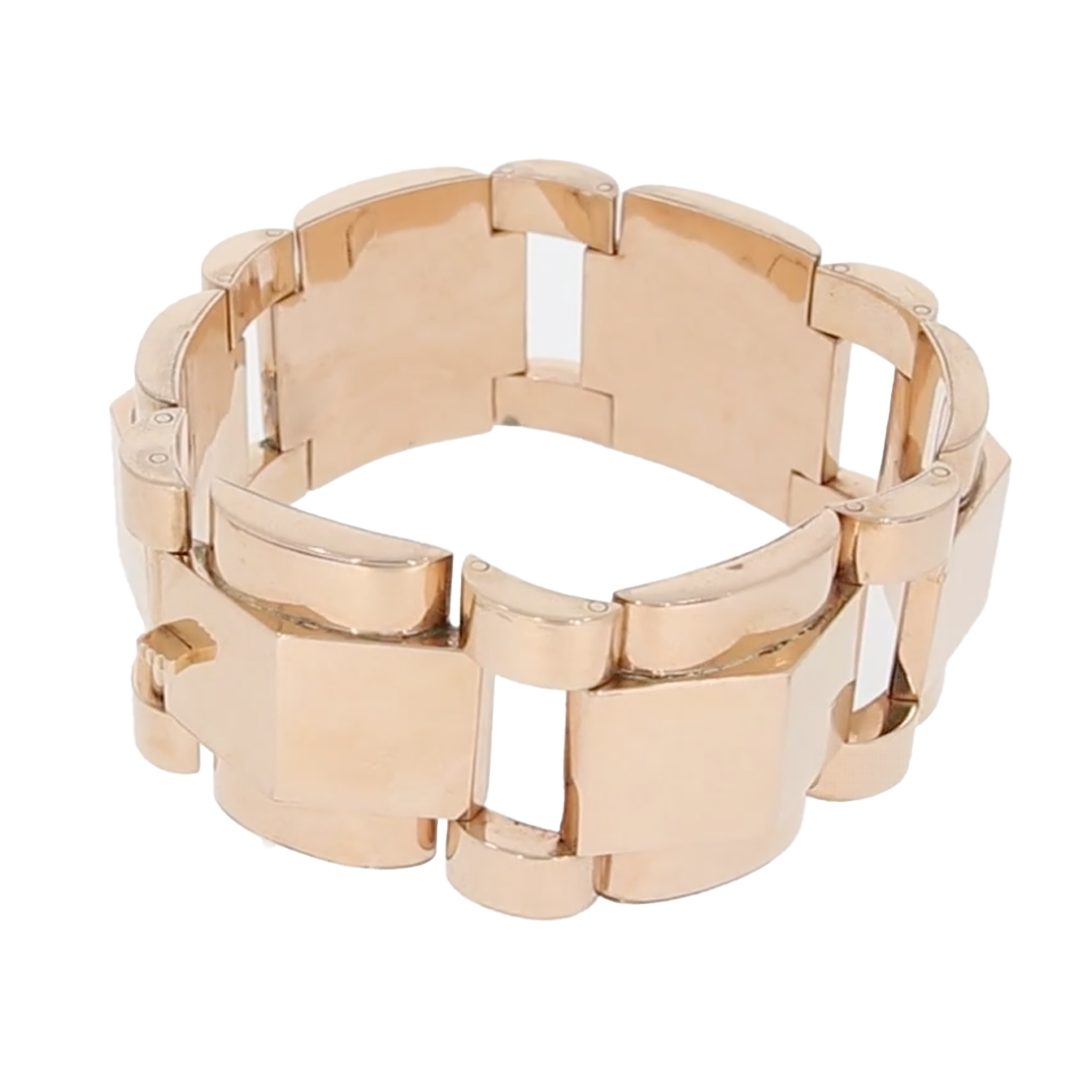
A three-stone ring is set with three stones in a row, often the center stone is slightly larger than the two side stones. It can be a mix of gemstones, all diamonds, all one gemstone, or colored gemstones with diamonds.

A tiara is a head ornament worn on formal occasions that goes three quarters of the way around the head. The origins of tiaras trace back to the Greco/Roman era when wreaths, or a simple gold band were worn around the head. Unlike a crown that is reserved for royalty, a tiara may be worn by anyone, although they were originally worn to show status and rank in society. Sometimes a tiara will detach from its frame and will convert into a necklace, bracelets, brooch or some combination of those pieces, making them more versatile and wearable.
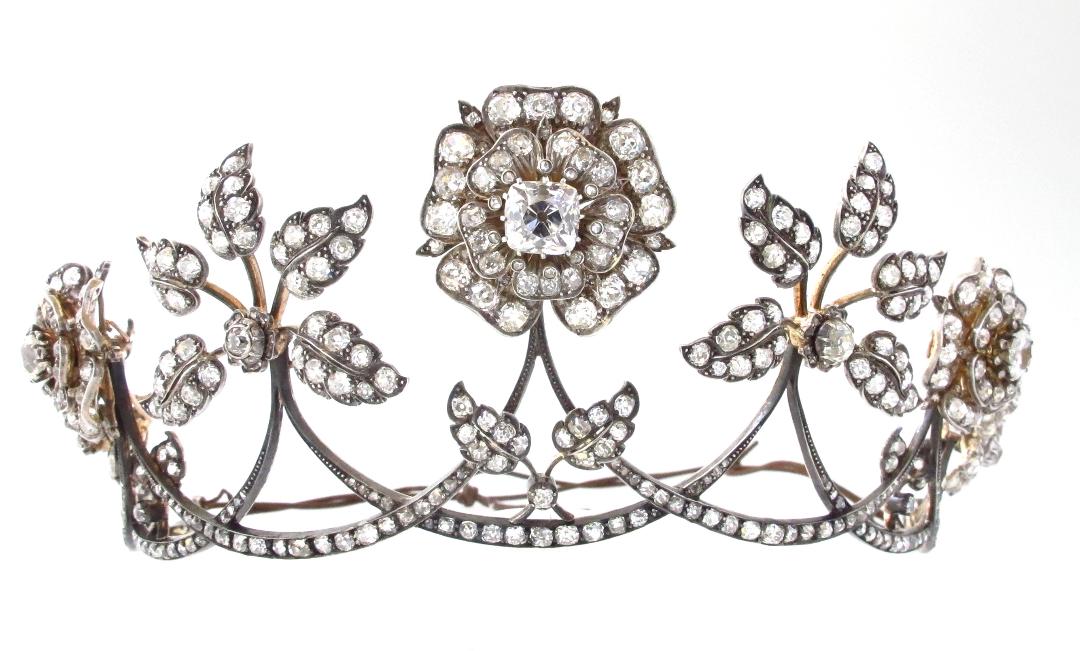
In 1886 Charles Lewis Tiffany, the founder of Tiffany & Co., introduced the Tiffany Setting, a simple and elegant mounting that has become one of the most popular engagement ring settings of all time. The diamond is set high and is held in place by six prongs allowing maximum light to flow through the stone to amplify its sparkle. The simplicity of the design was innovative for its time.
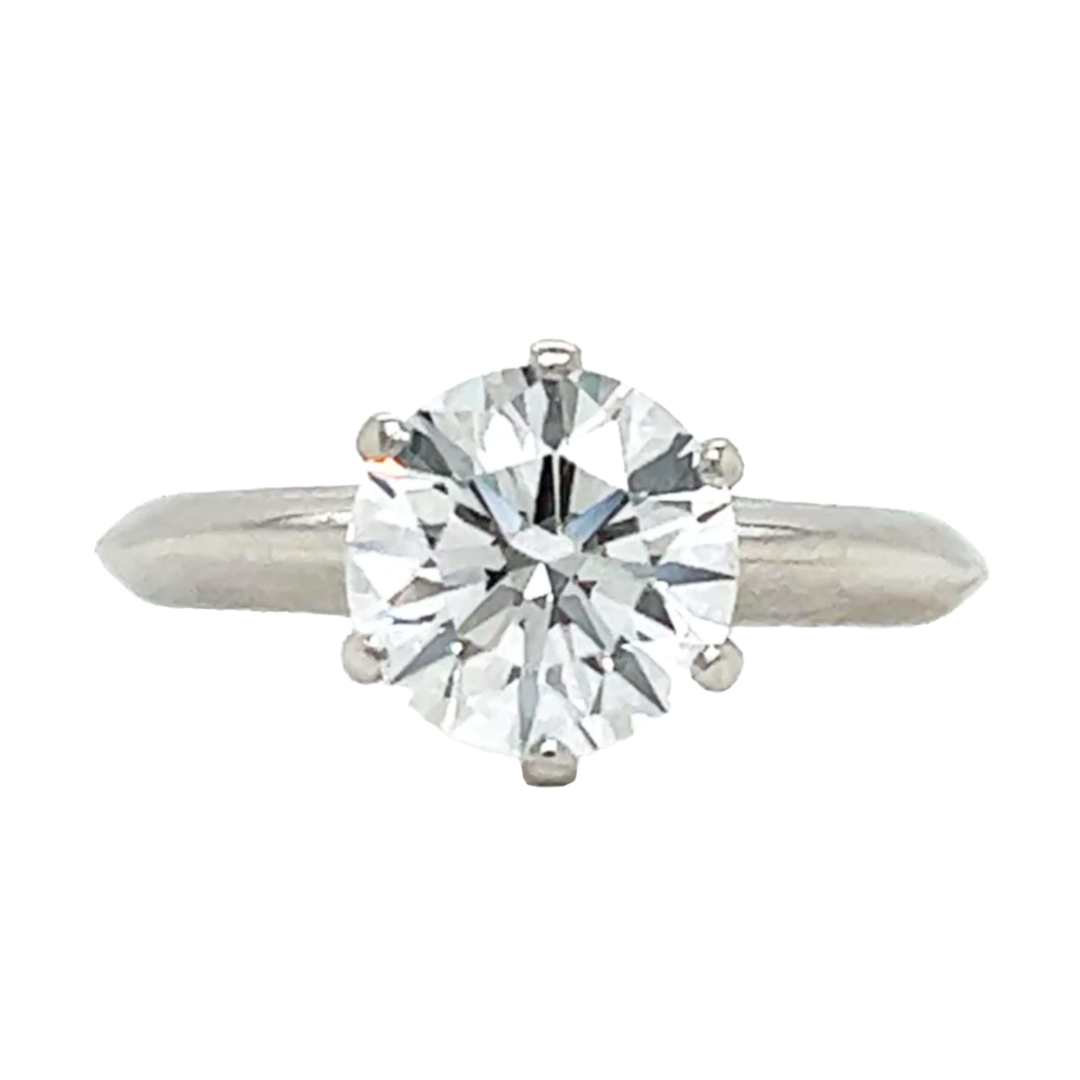
Is a ring with two main stones, it is sometimes called a bypass ring or twin ring, because the two stones “pass” each other. The stones are generally of equal size and are the same shape, but may be two different gems, such as diamond and ruby, or diamond and sapphire. When it was first designed the style used gems of the same shape, but contemporary designers have put a modern spin on the style by using two stones of different shapes. The toi et moi design was made famous in 1796 when Napoleon Bonaparte I proposed to his first wife, Josephine, with a sapphire and diamond version of the style.
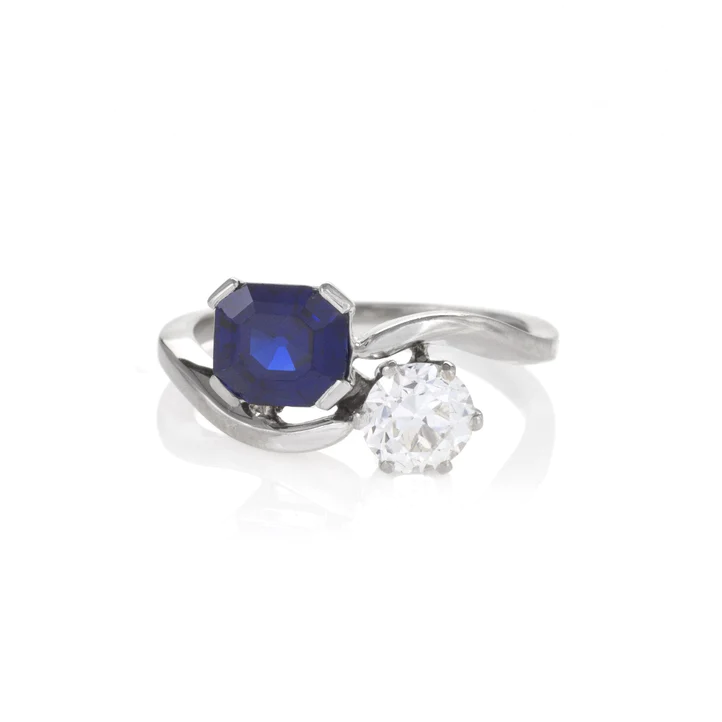
Tubogas is a flexible, lightweight, hollow tubular chain made by tightly winding gold strips together. It is used to create necklaces, bracelets and sometimes rings.
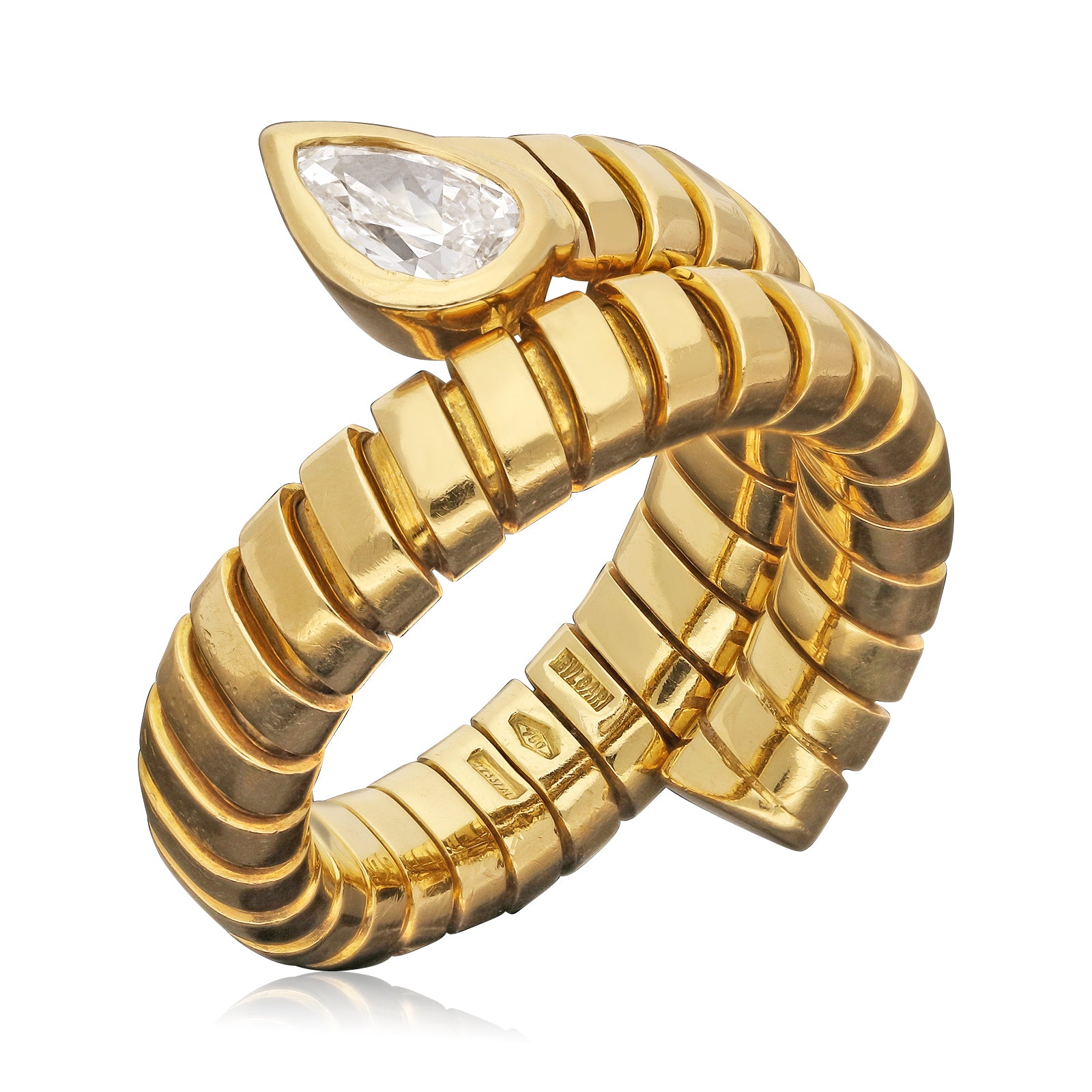
Type IIa is a very rare type of diamond that has no traces of nitrogen or boron, making it very pure. The purity allows light to flow unobstructed through the stone giving it an extraordinary transparency and soft, watery look. Diamonds from the Golconda region of India were often Type IIa. Only about 2 percent of mined diamonds are Type IIa. Most lab grown diamonds are Type IIa, so if someone says a diamond is Type IIa, make sure you get a recent report from an accredited gemological lab, stating the diamond origin of the stone as natural or lab grown.
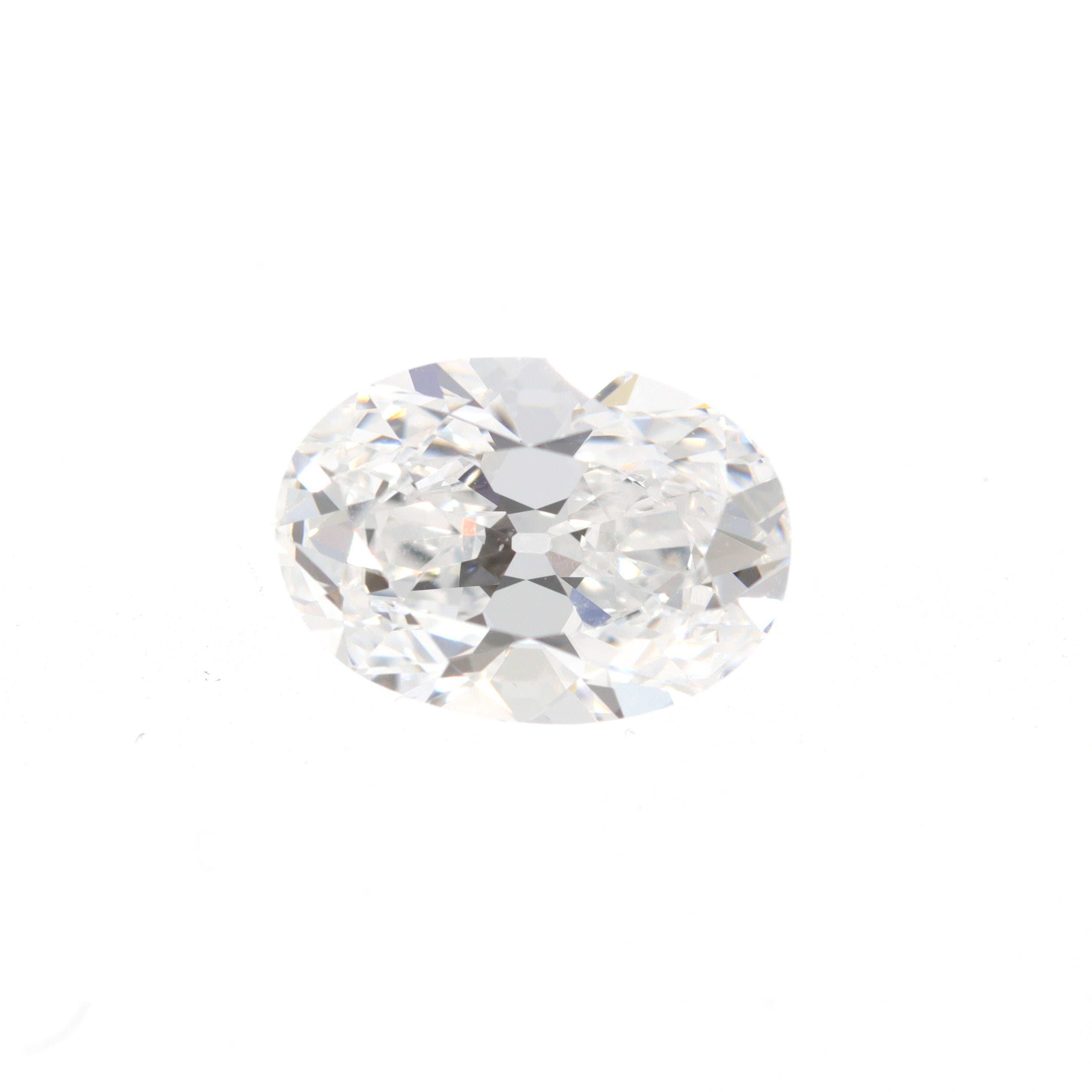
U
V
The years between 1837-1901, were known as the Victorian era because Queen Victoria was the ruler of England during that time. The Victorian era (Victoriana) was subdivided into three periods, Romantic, Grand and Aesthetic, with each period triggered by major events.
The Romantic Years, also known as the Early Years, runs from 1837 to 1861. Popular jewelry styles of the Romantic Years were ornate, decorated, colorful, large pieces, sentimental jewelry and anything with snakes.
The Grand Years, also known as the Middle Years, runs from 1861 to 1885. The look changes in the Grand Years and jewelry makers looked to the past for inspiration, Etruscan, Egyptian and Roman revival, large pieces with color and mourning jewelry were all important styles of that time.
The Aesthetic Years, also known as the Late Years, runs from 1885 to 1901, when Queen Victoria passes away. Jewelry changed once again during the Aesthetic Years when pieces became smaller in scale, there was a wide diversity of styles, lighter color gemstones and pastel enamels also characterized those years.
To find out more, read our blog: The Romance of Victorian Jewelry
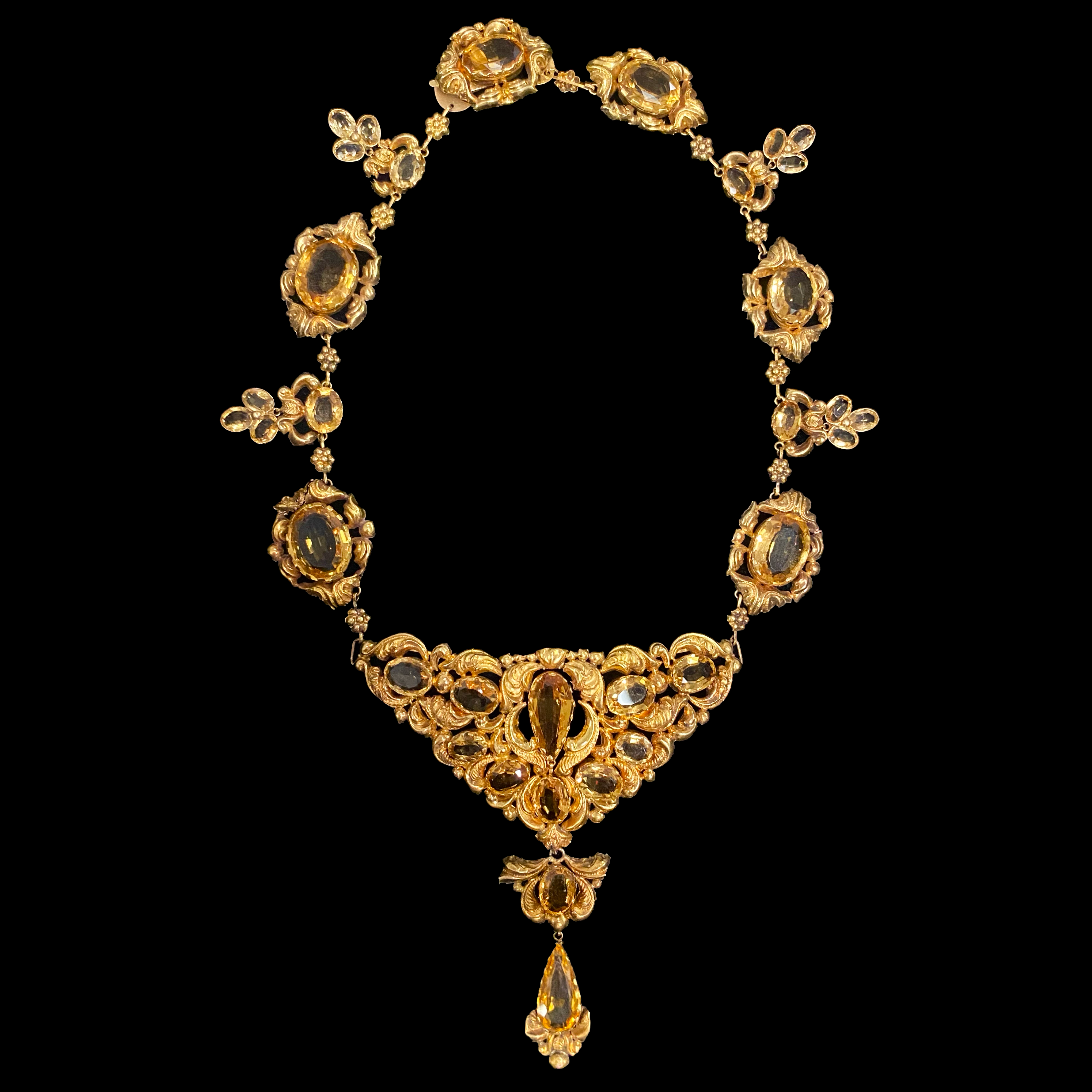
Vintage jewelry is a term that applies to pieces that are at least 40 years old or older, but have not yet reached the 100 year mark to be considered an antique.
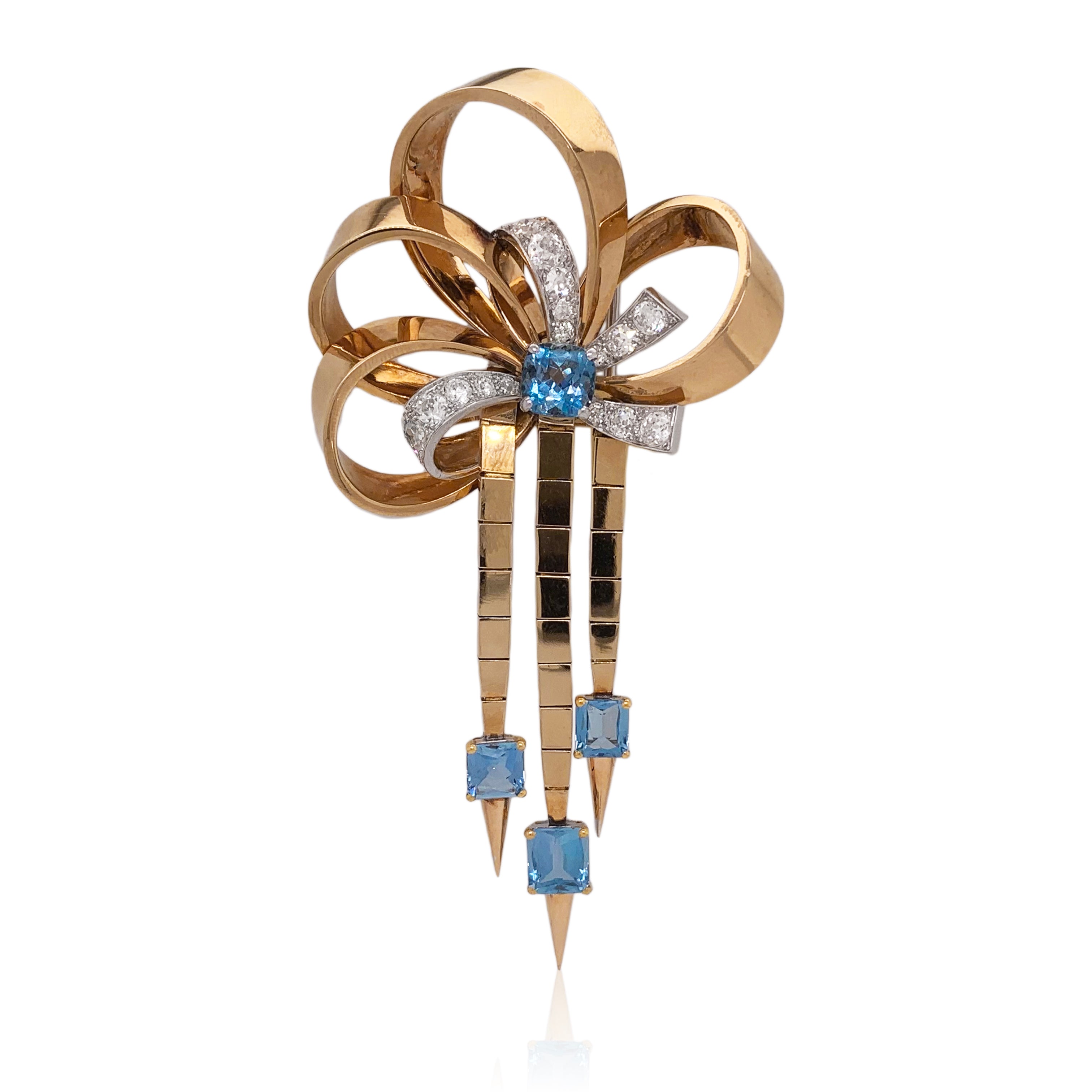
W
In waterfall earrings an open circle attaches to the ear and fringes of metal or gemstones cascade out of the opening of the circle, giving the appearance of a waterfall.
Photo courtesy, Jewelry World.
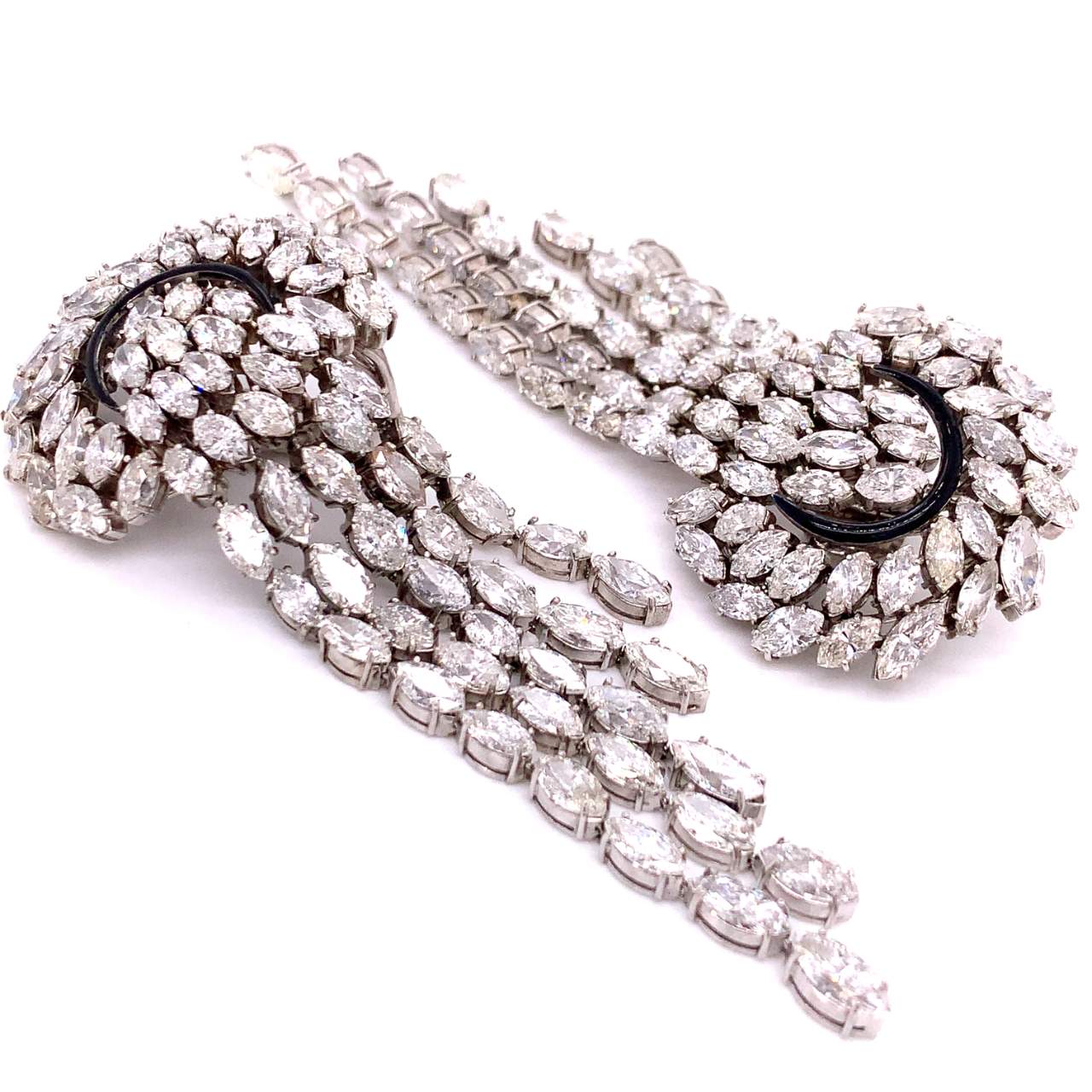
White gold is created by mixing yellow gold with silver, palladium, manganese or nickel. Nickel is not used much since many people are allergic to it. Once the white metals have been mixed with the yellow gold, it will still be a creamy color with a grayish undertone. White gold may be either 14-karat or 18-karat. To get the bright shiny white finish that we are used to seeing, the gold is rhodium plated. Rhodium is a metal in the platinum family.
